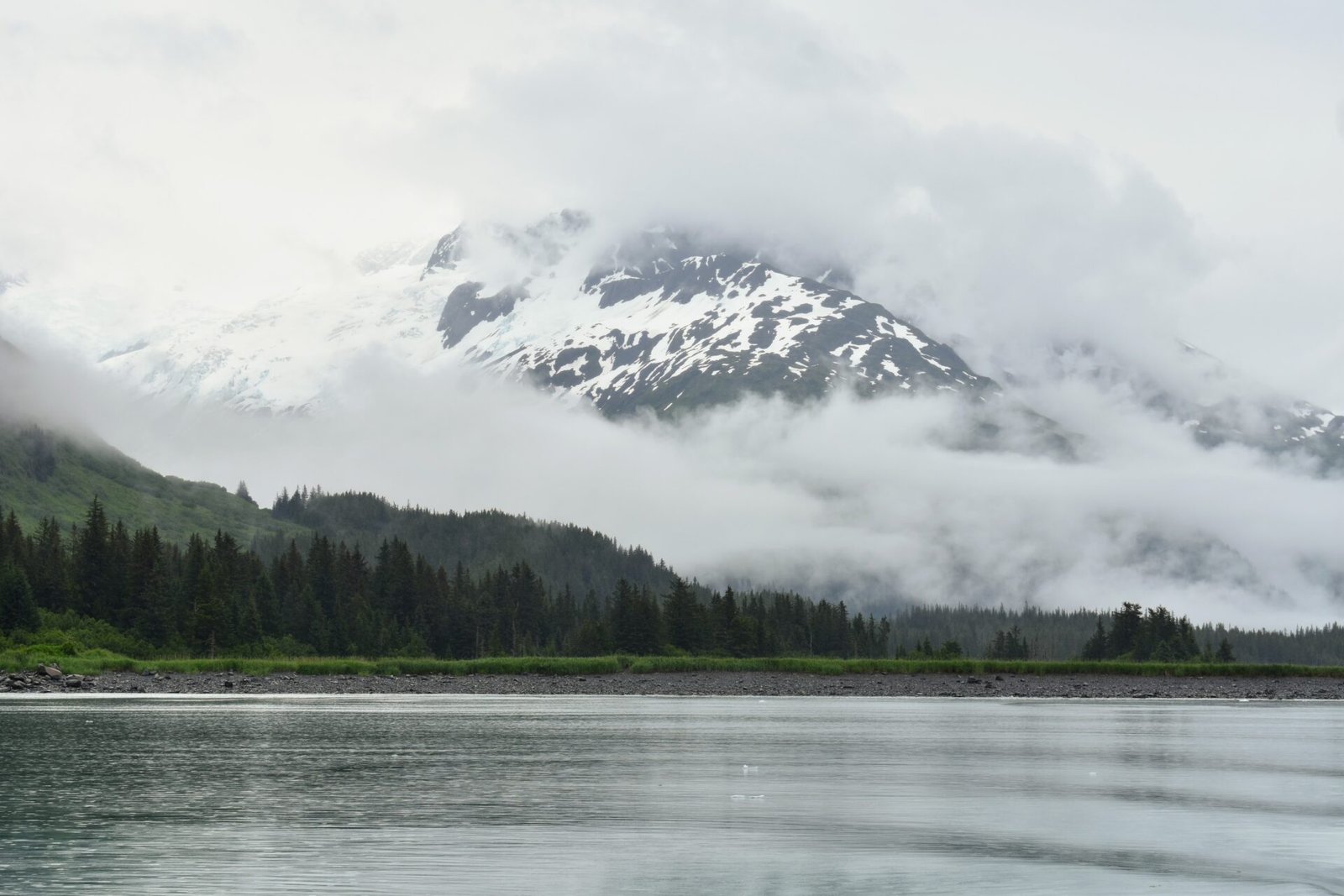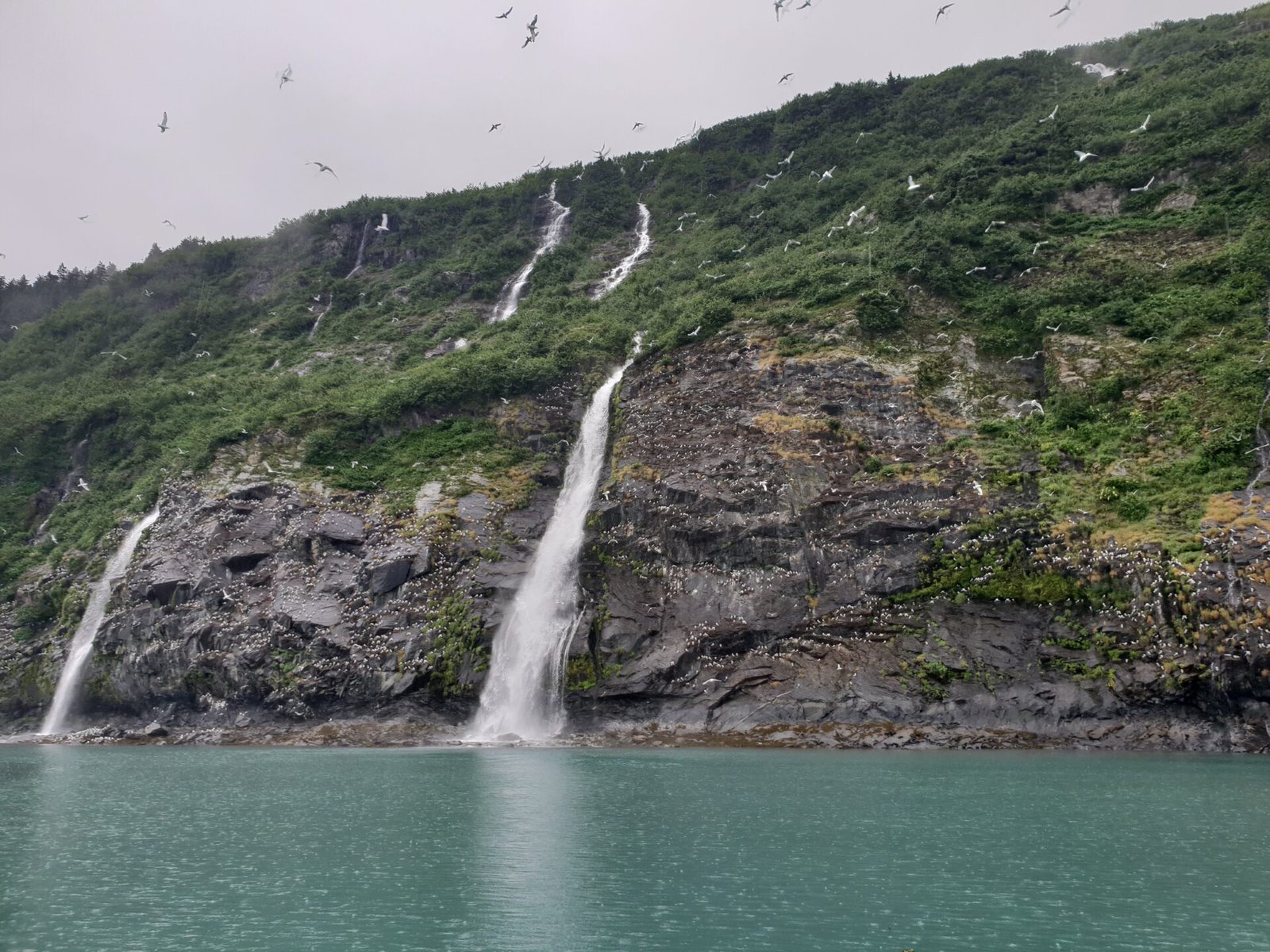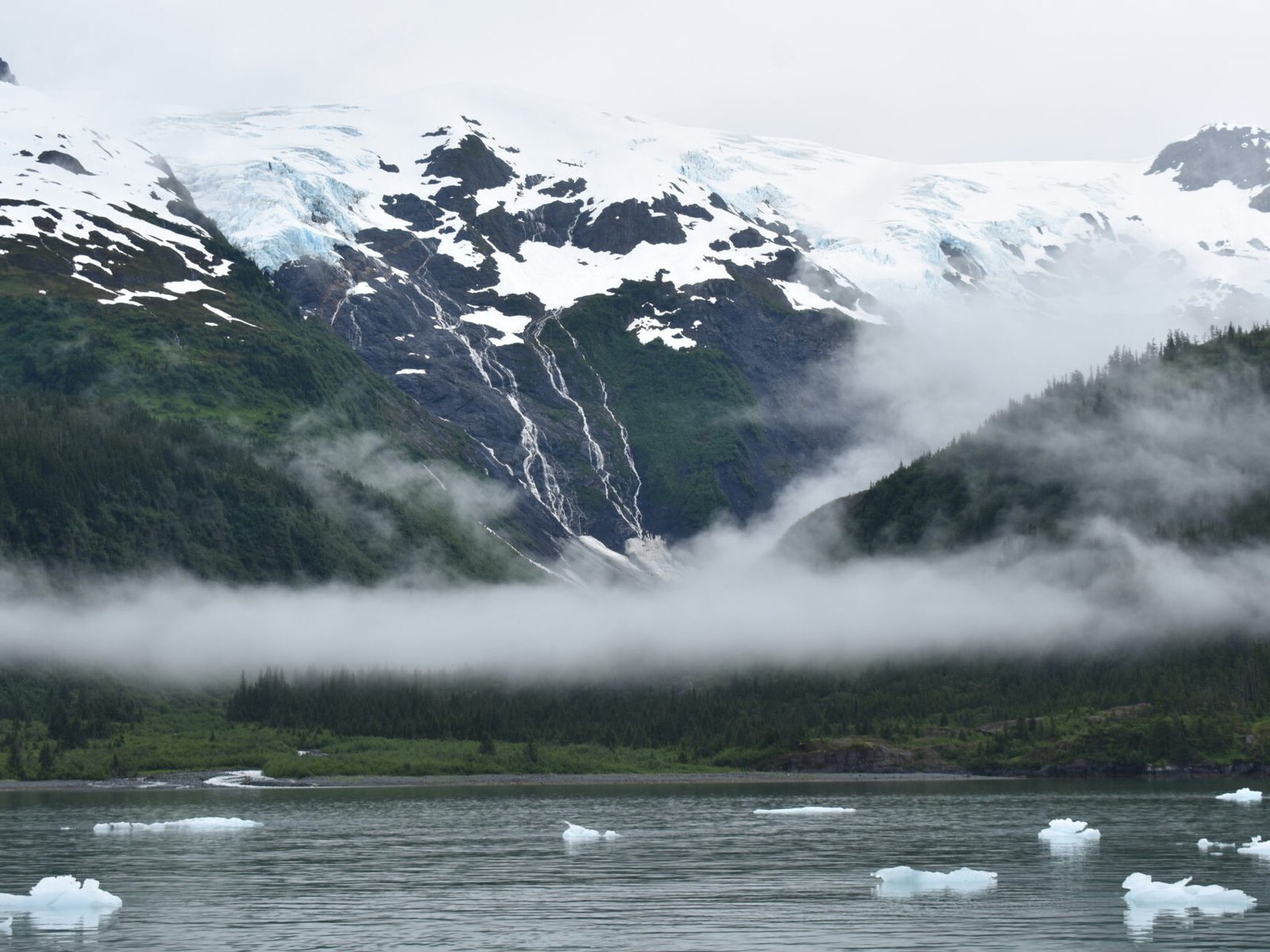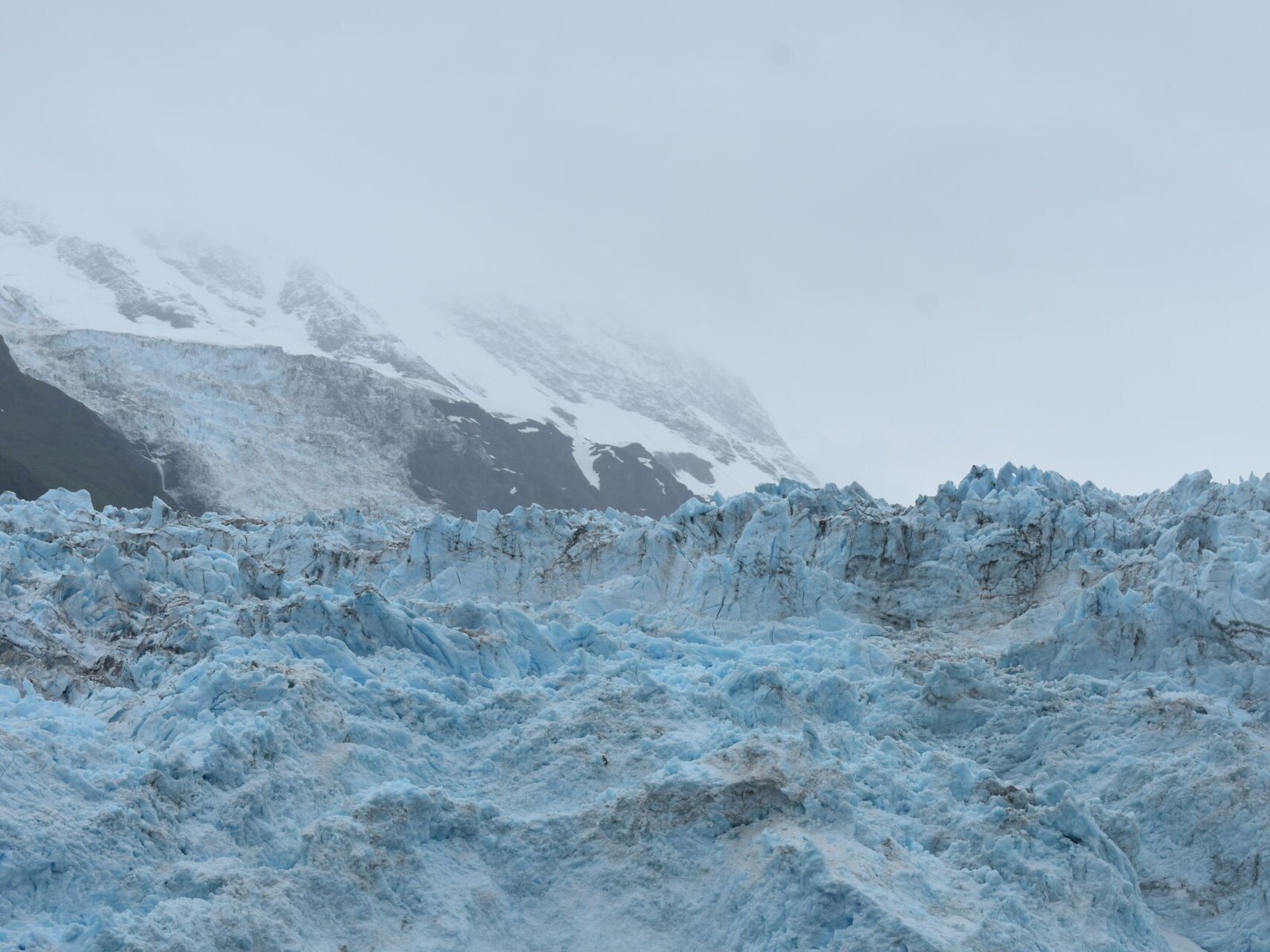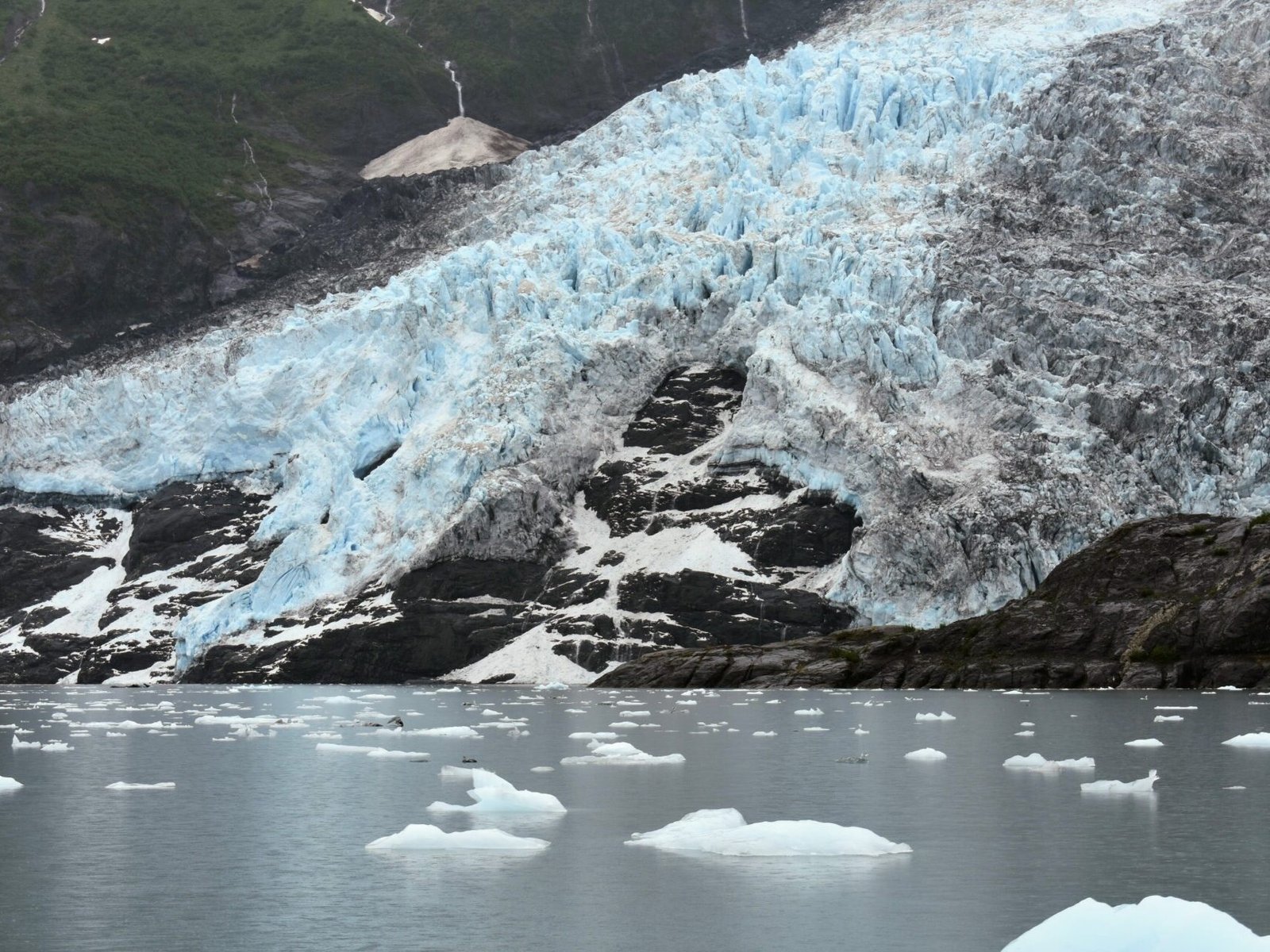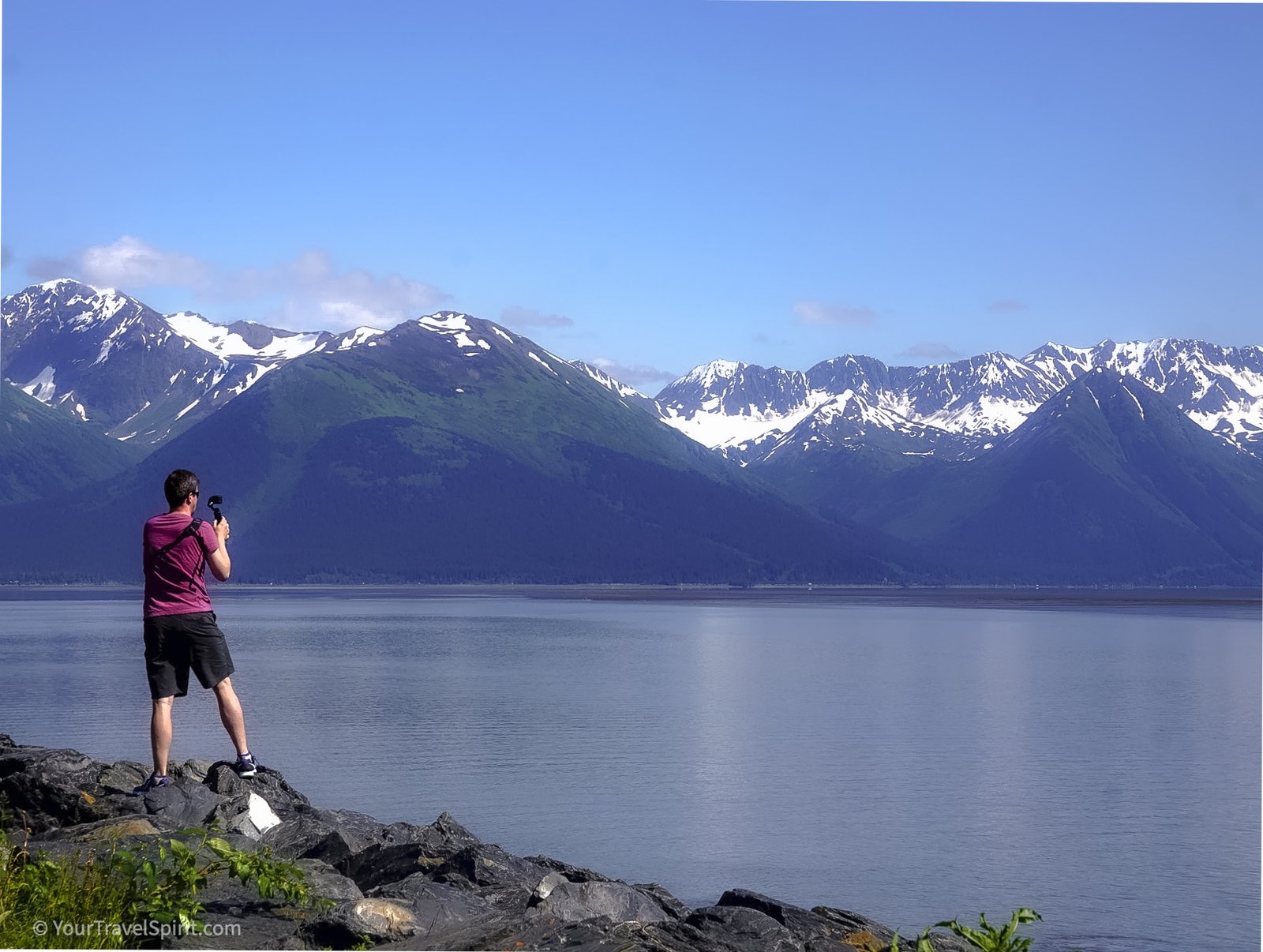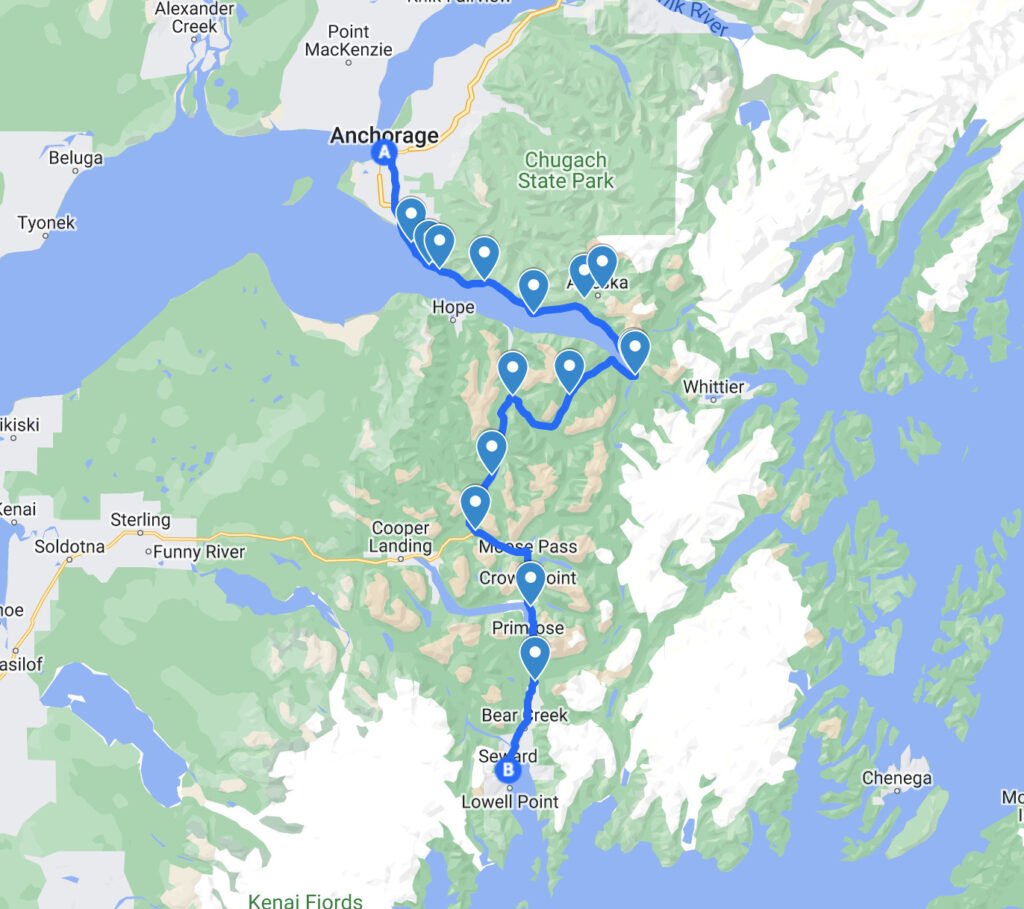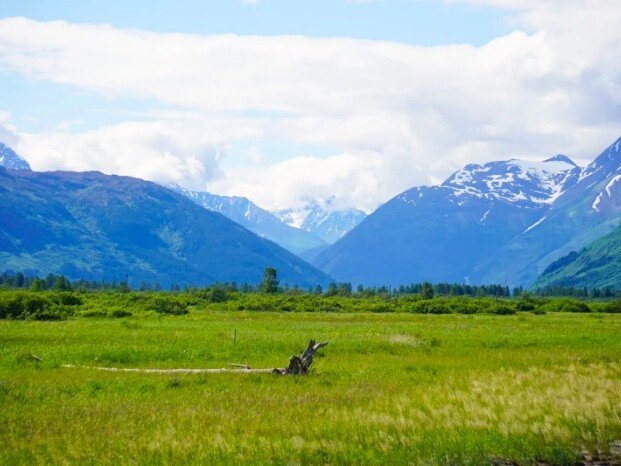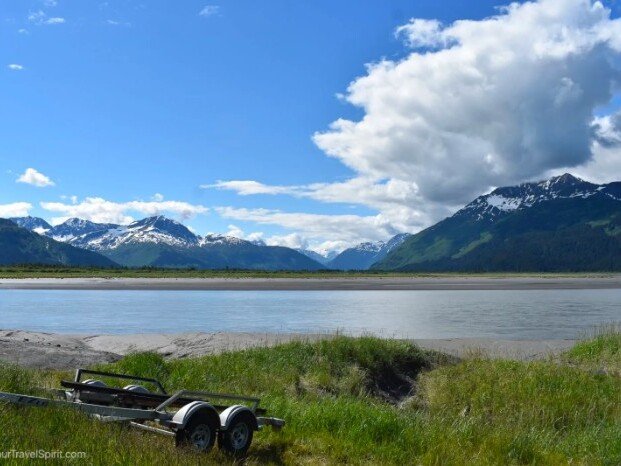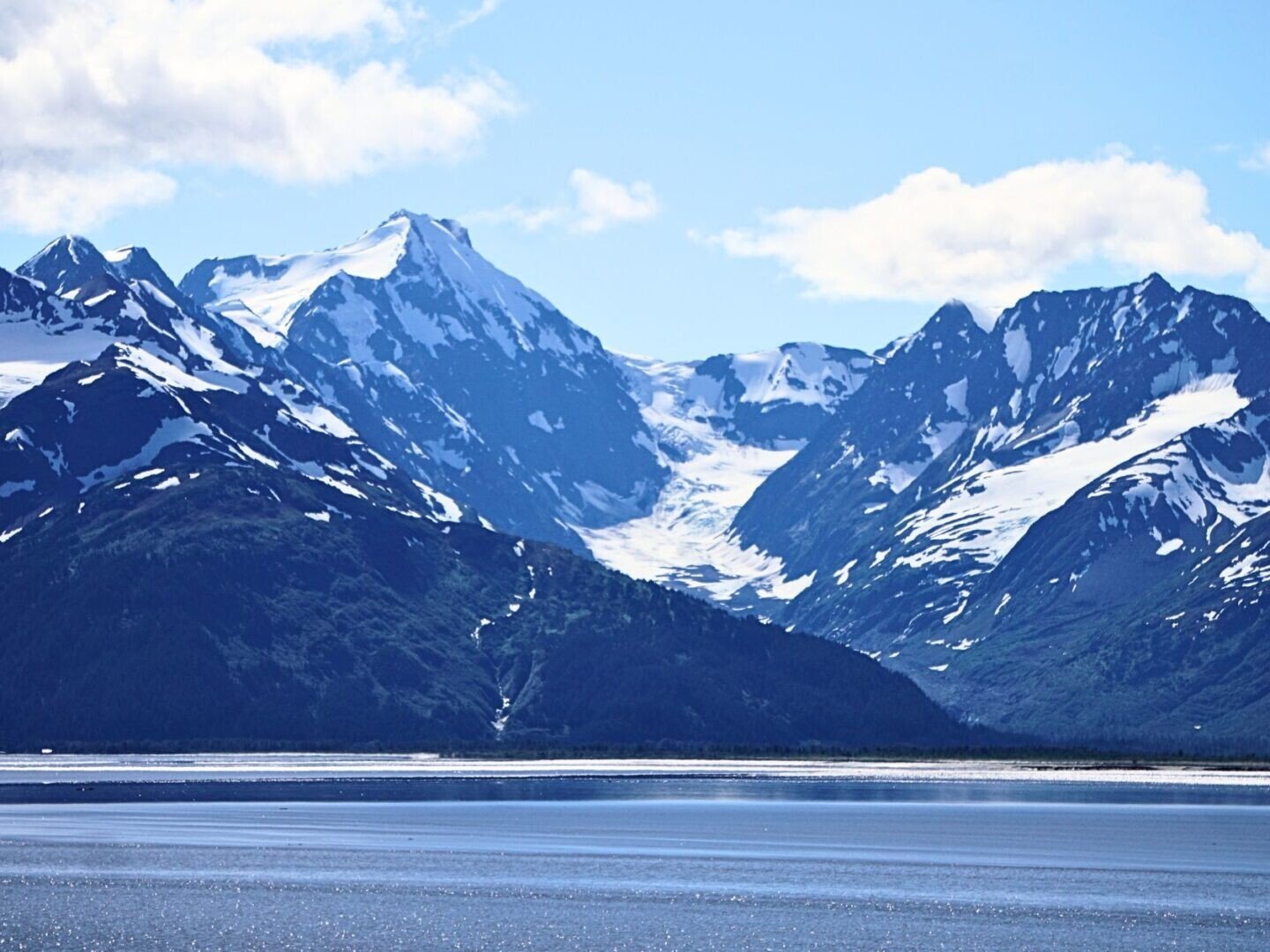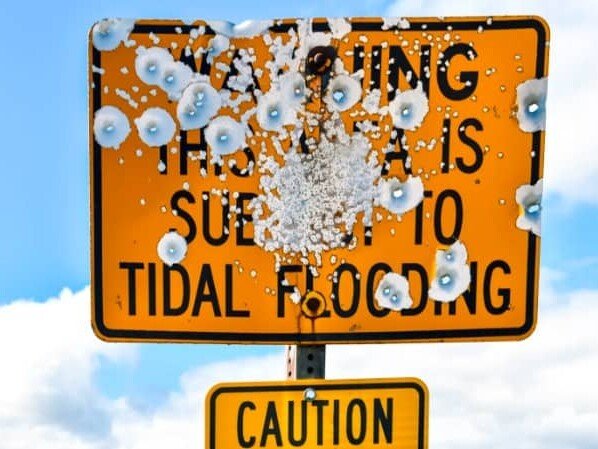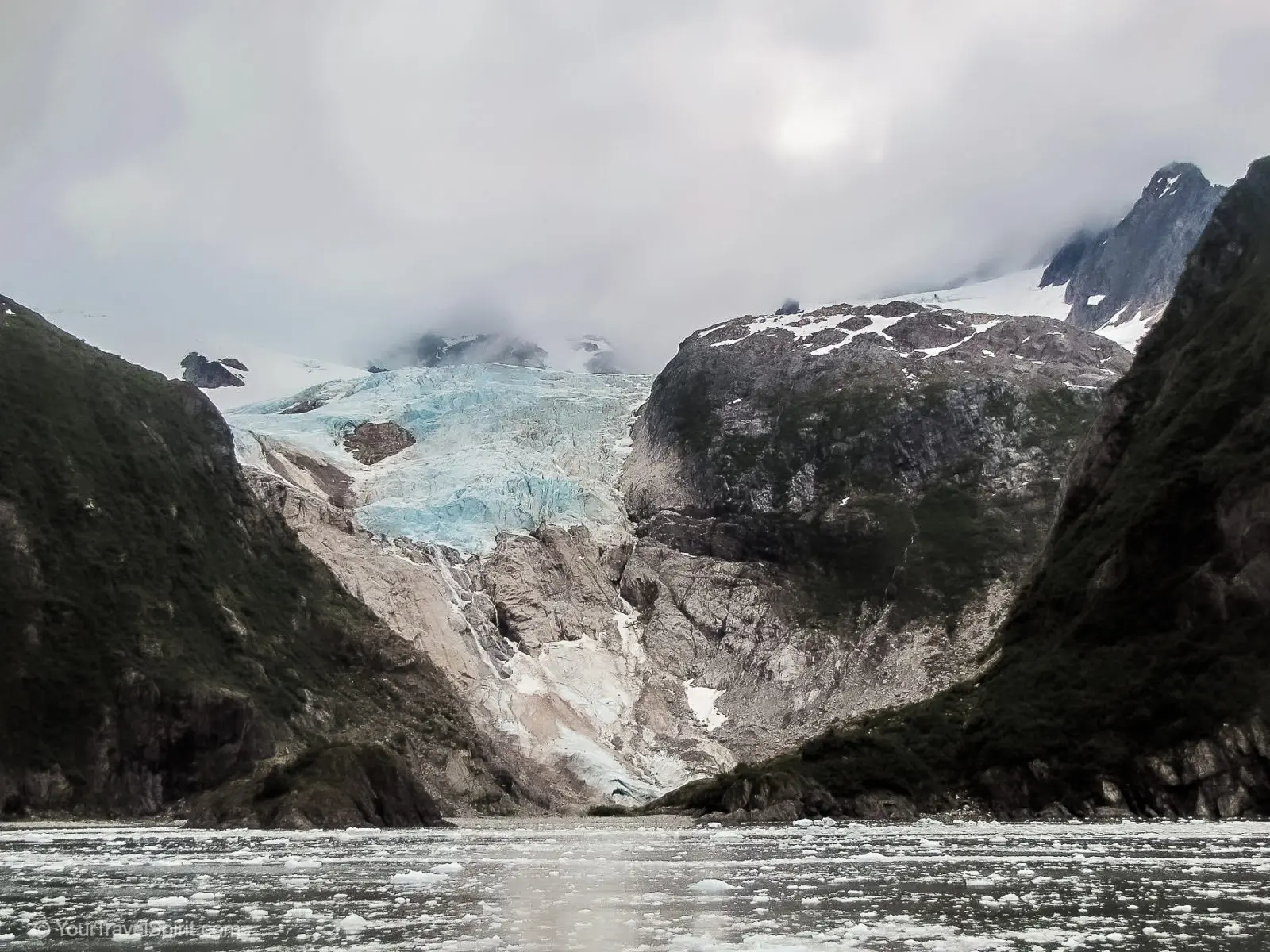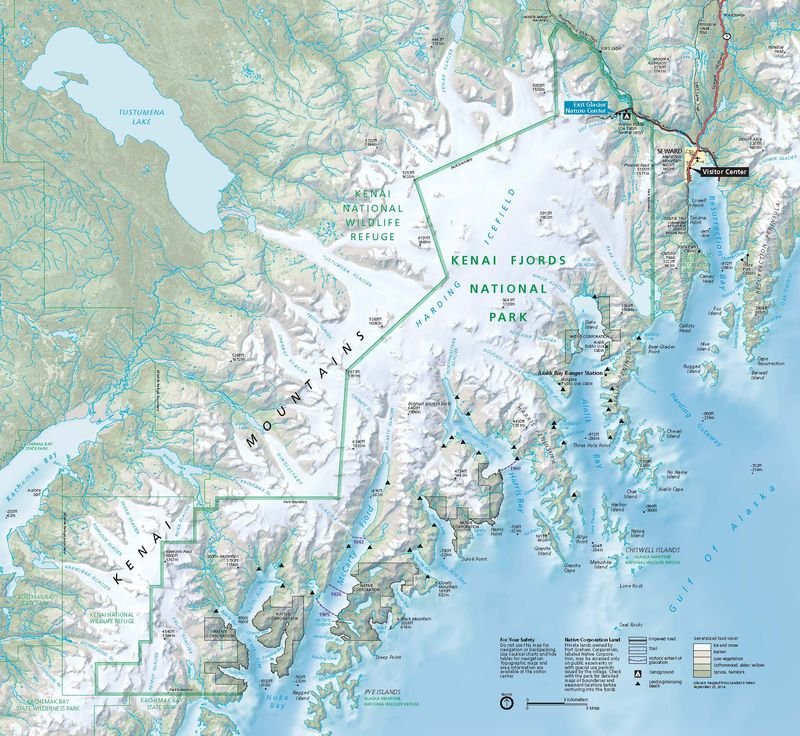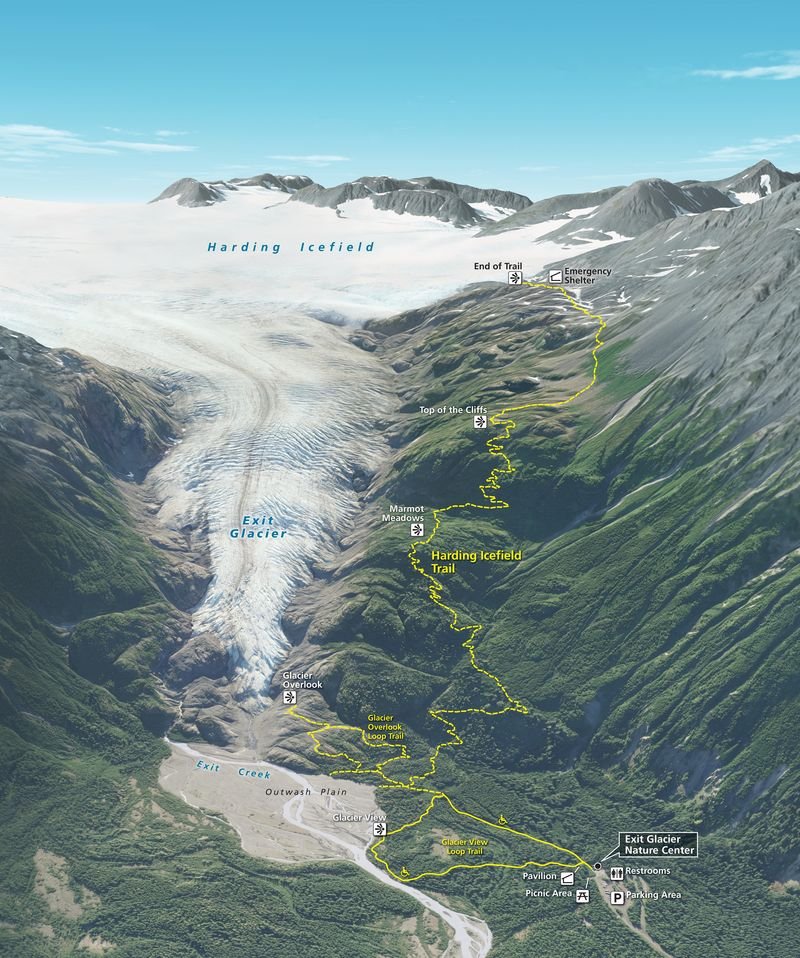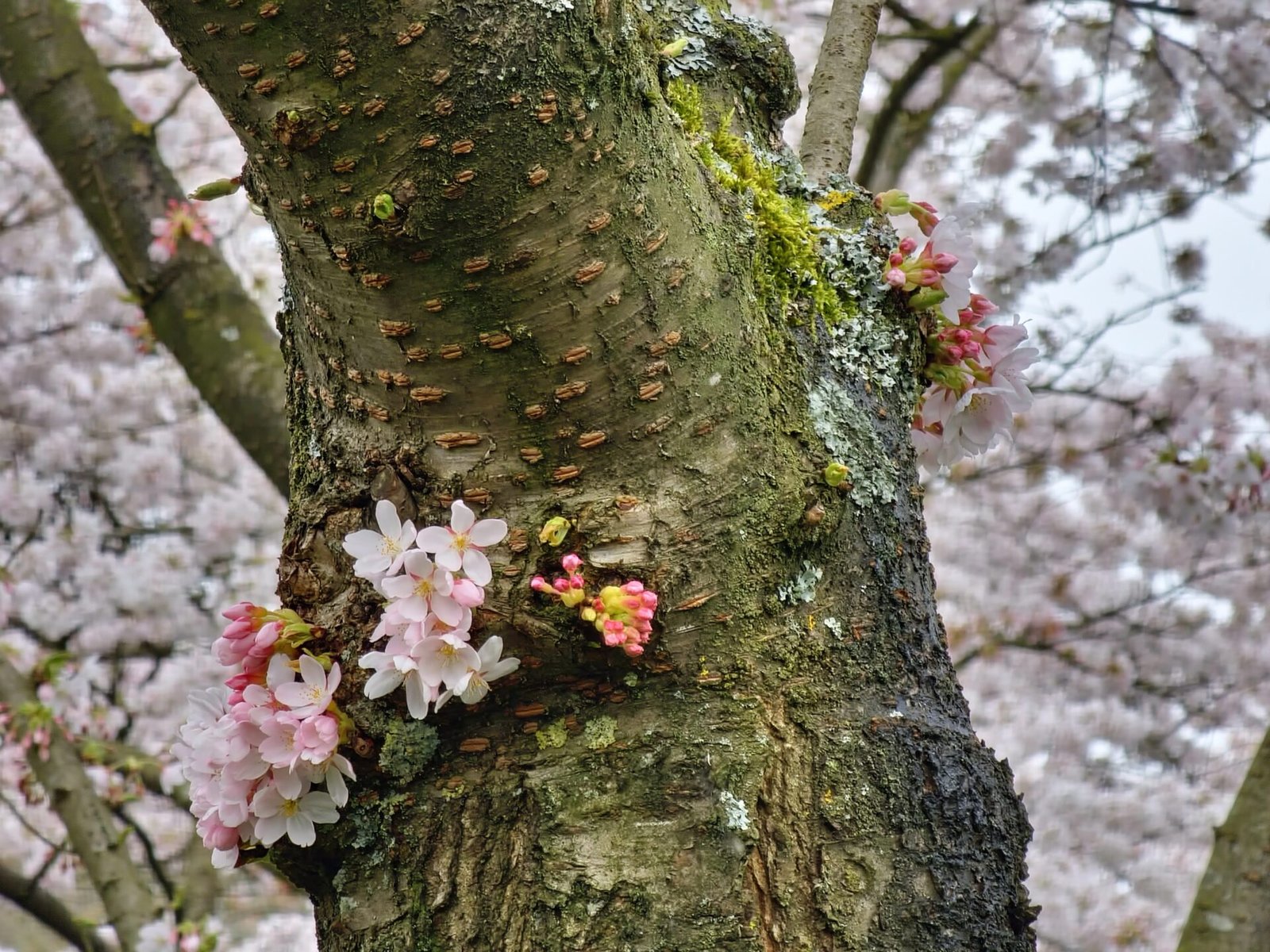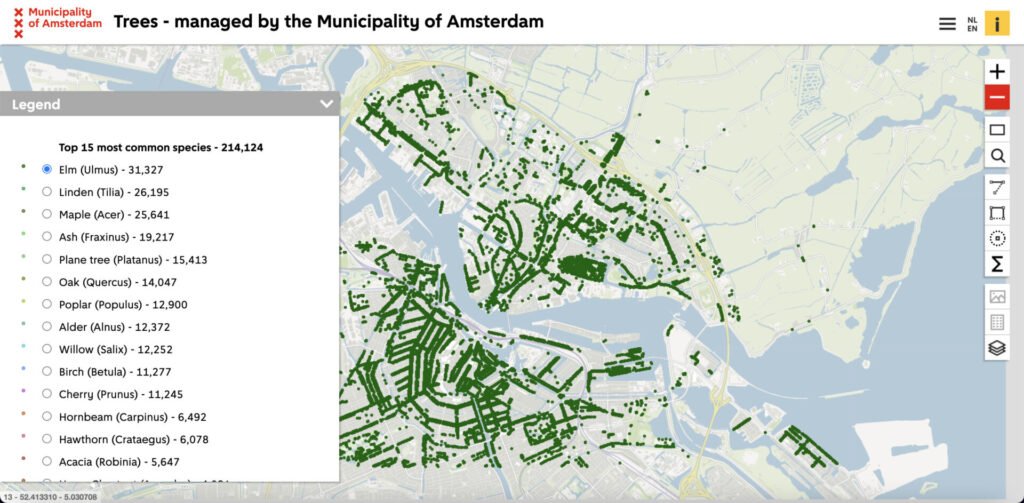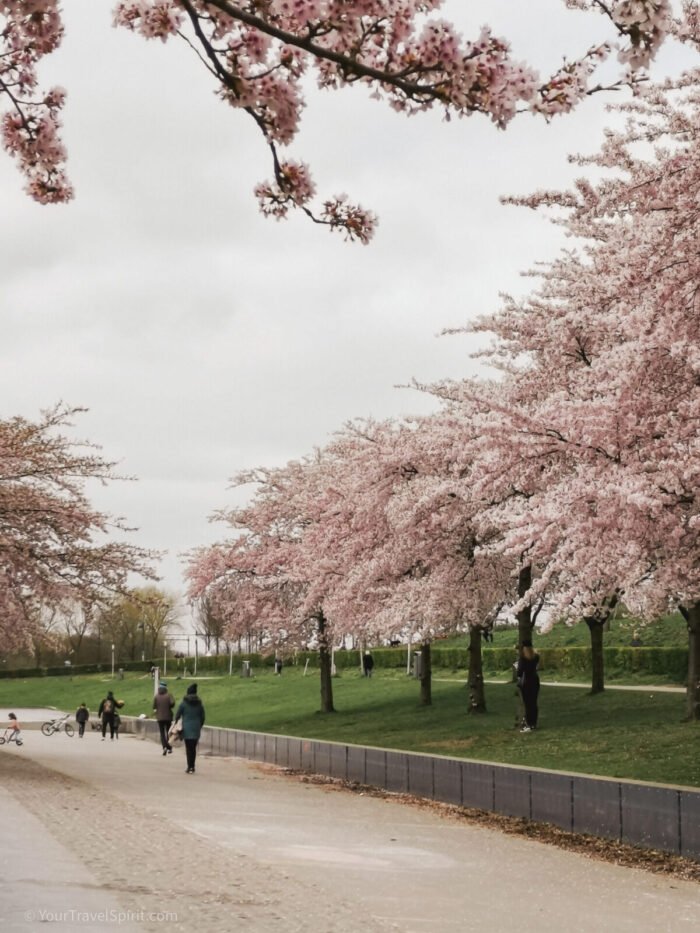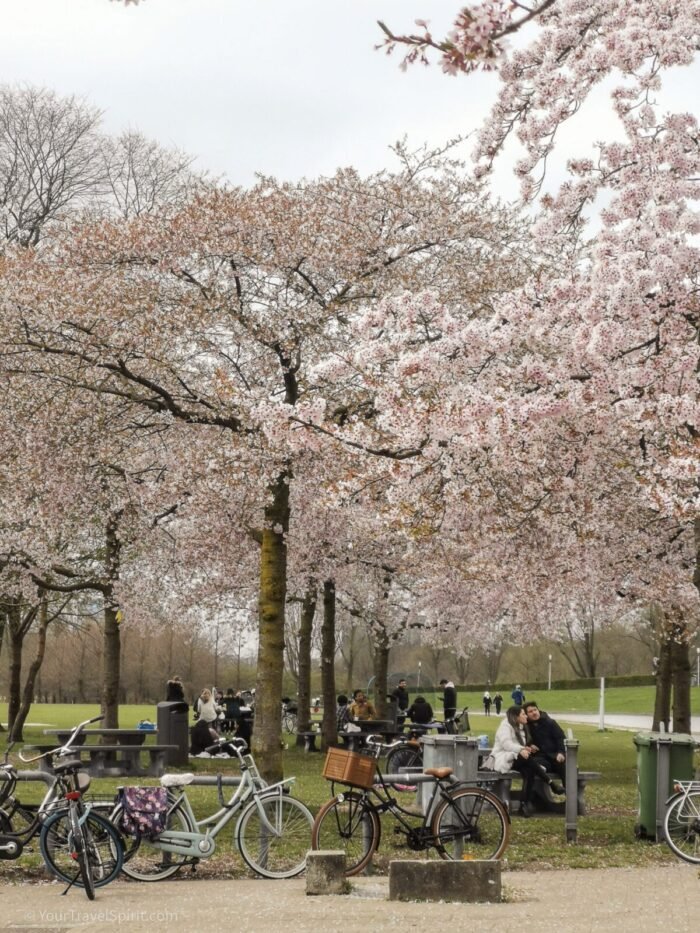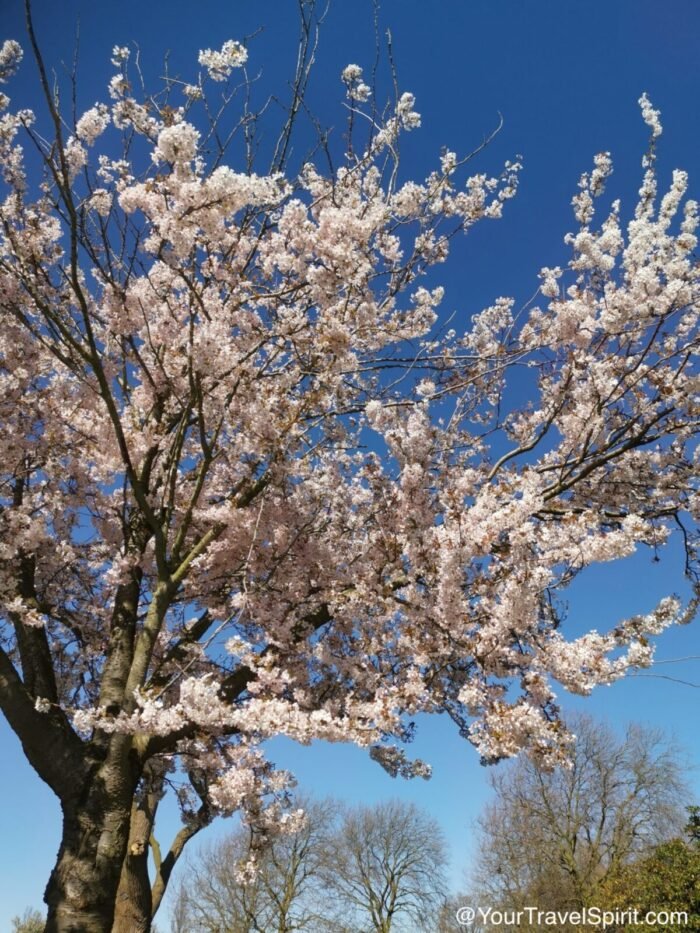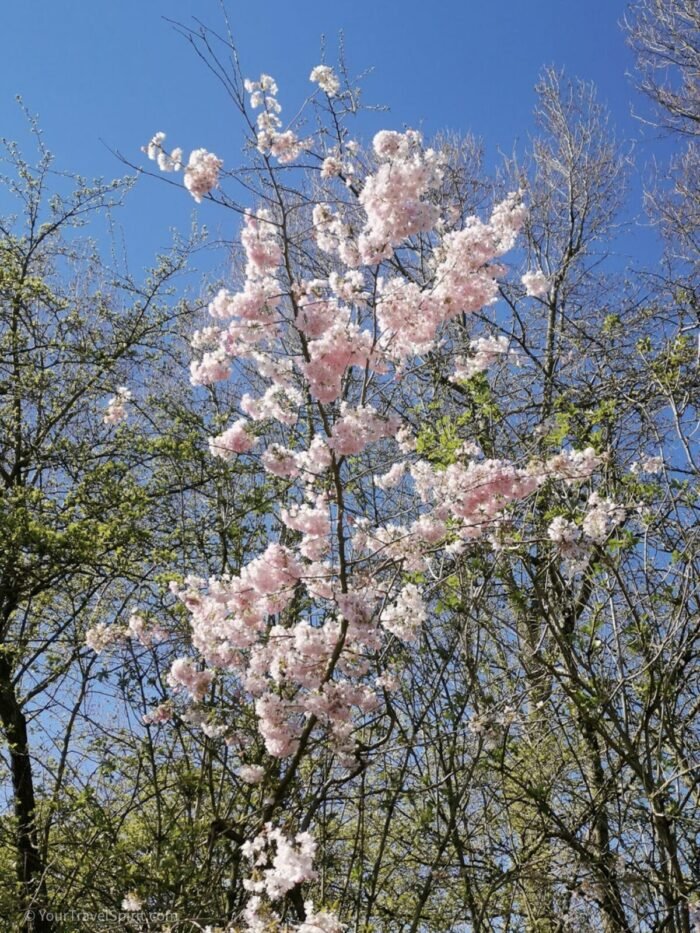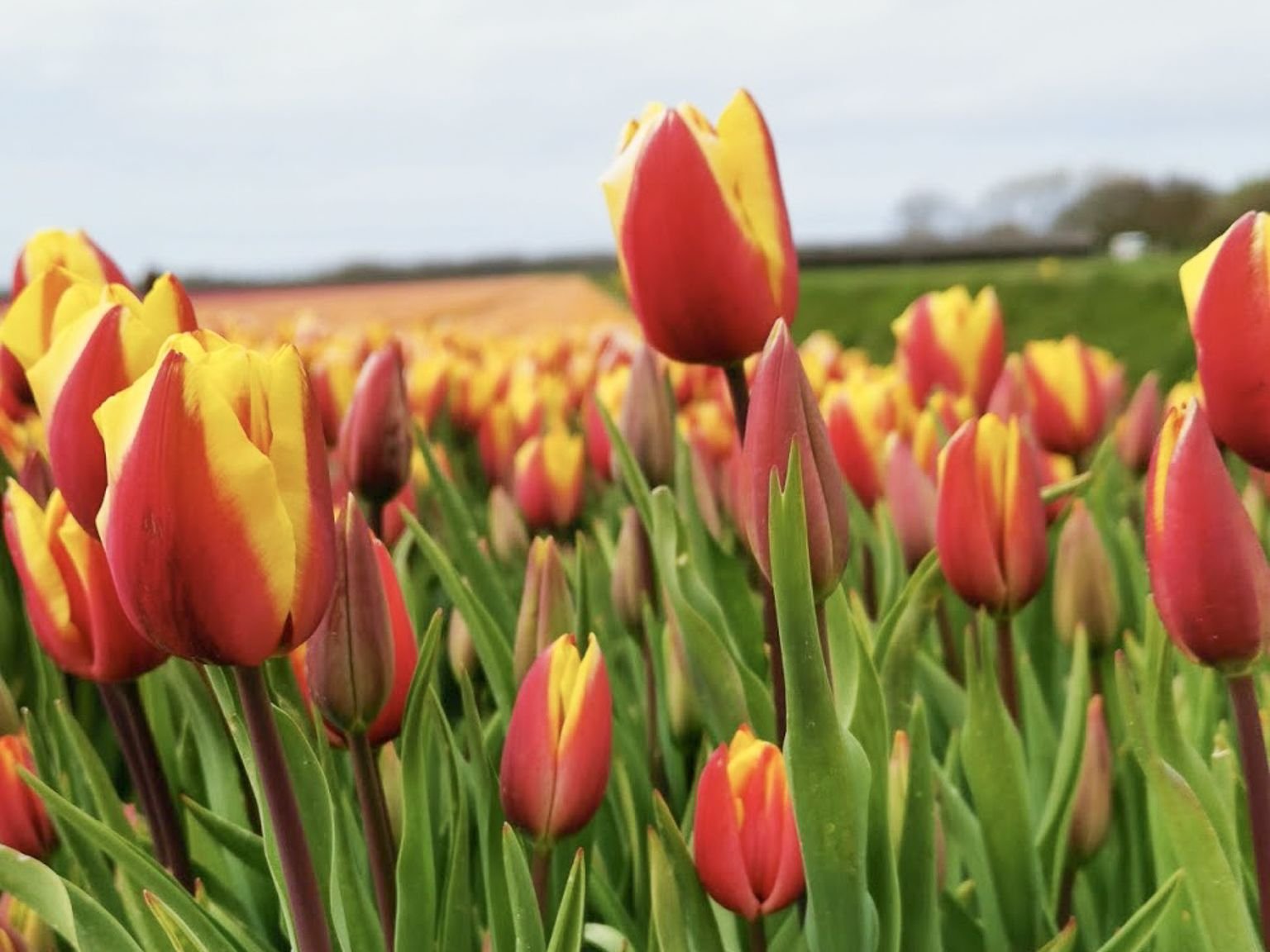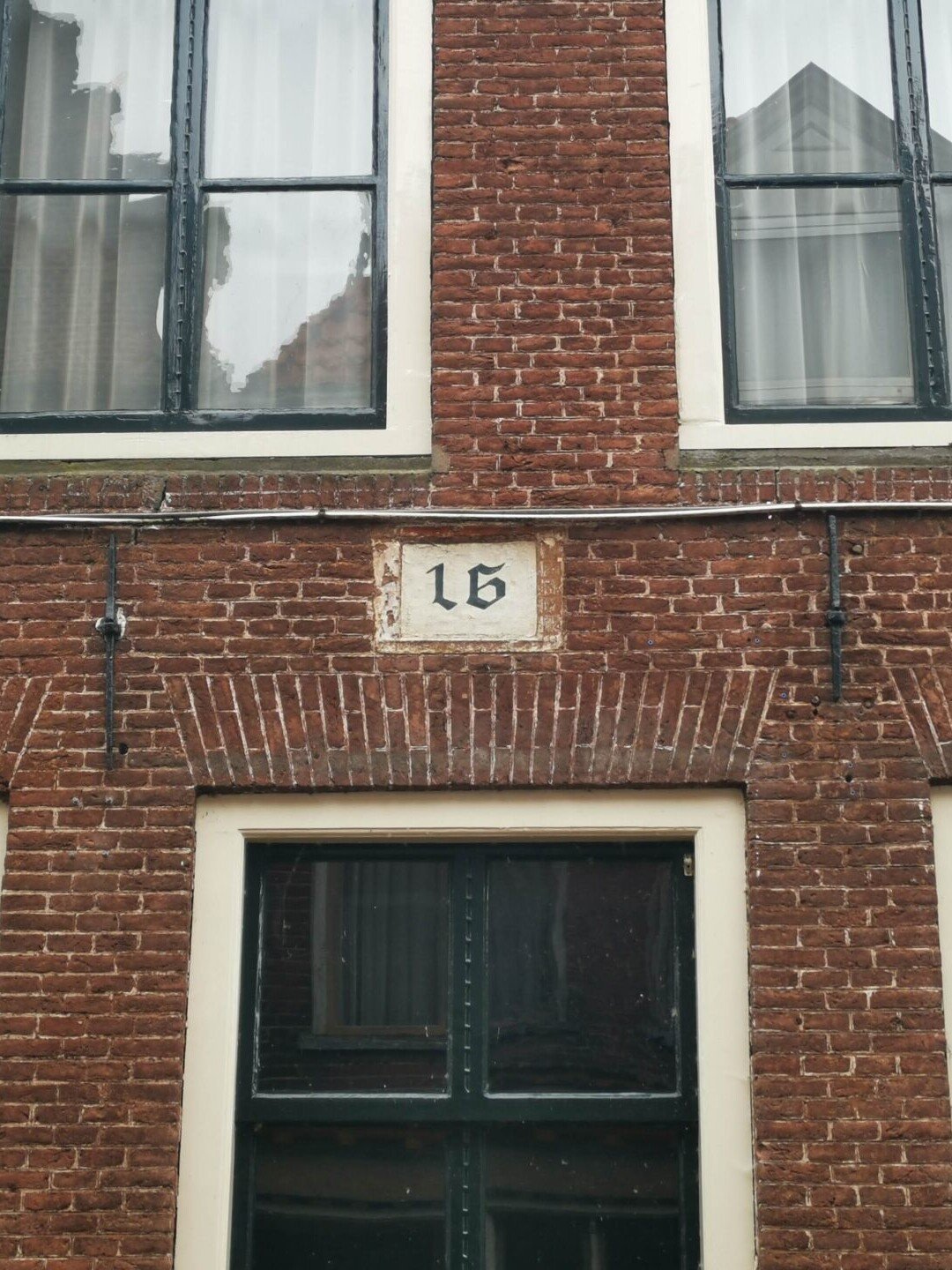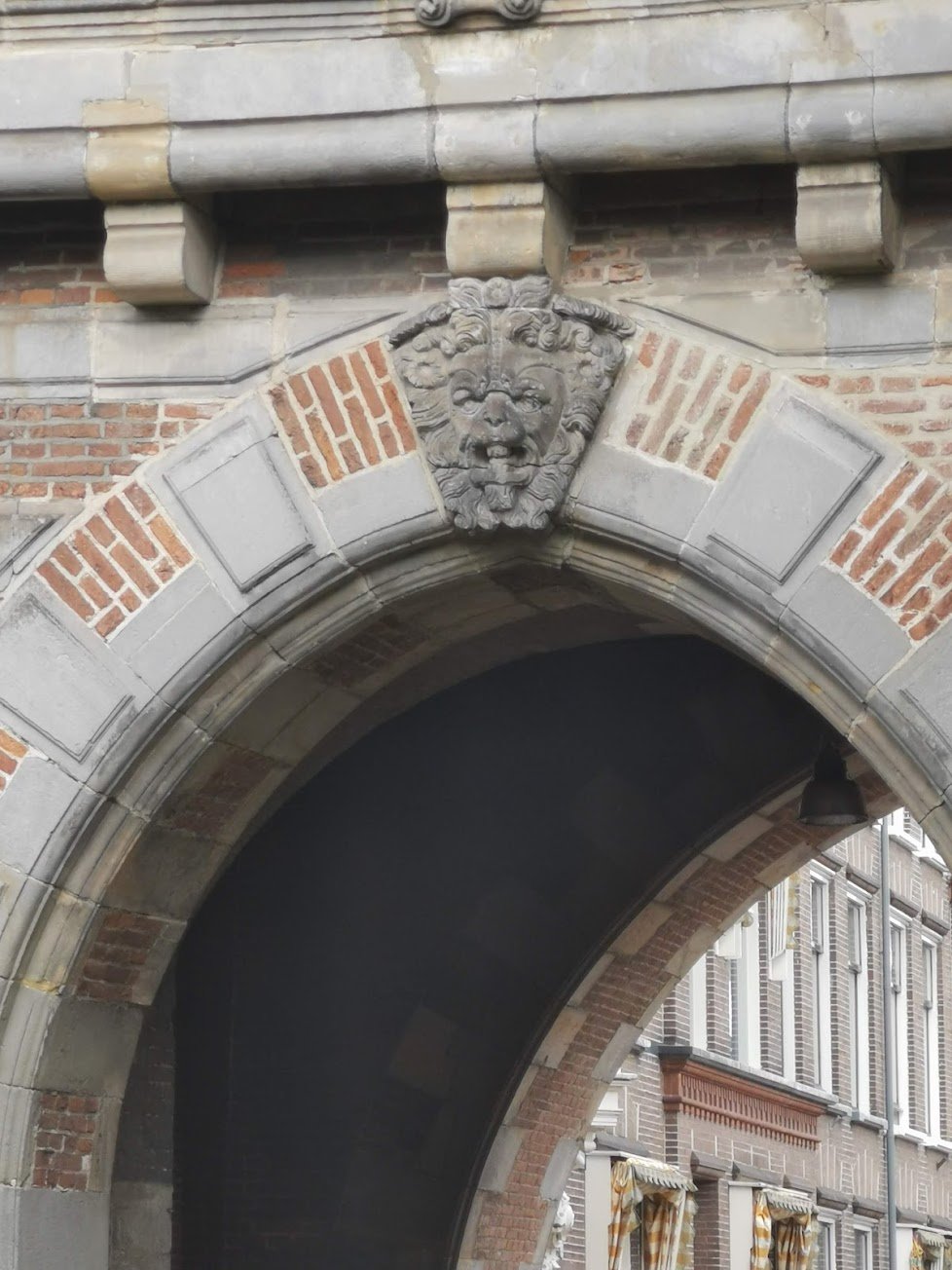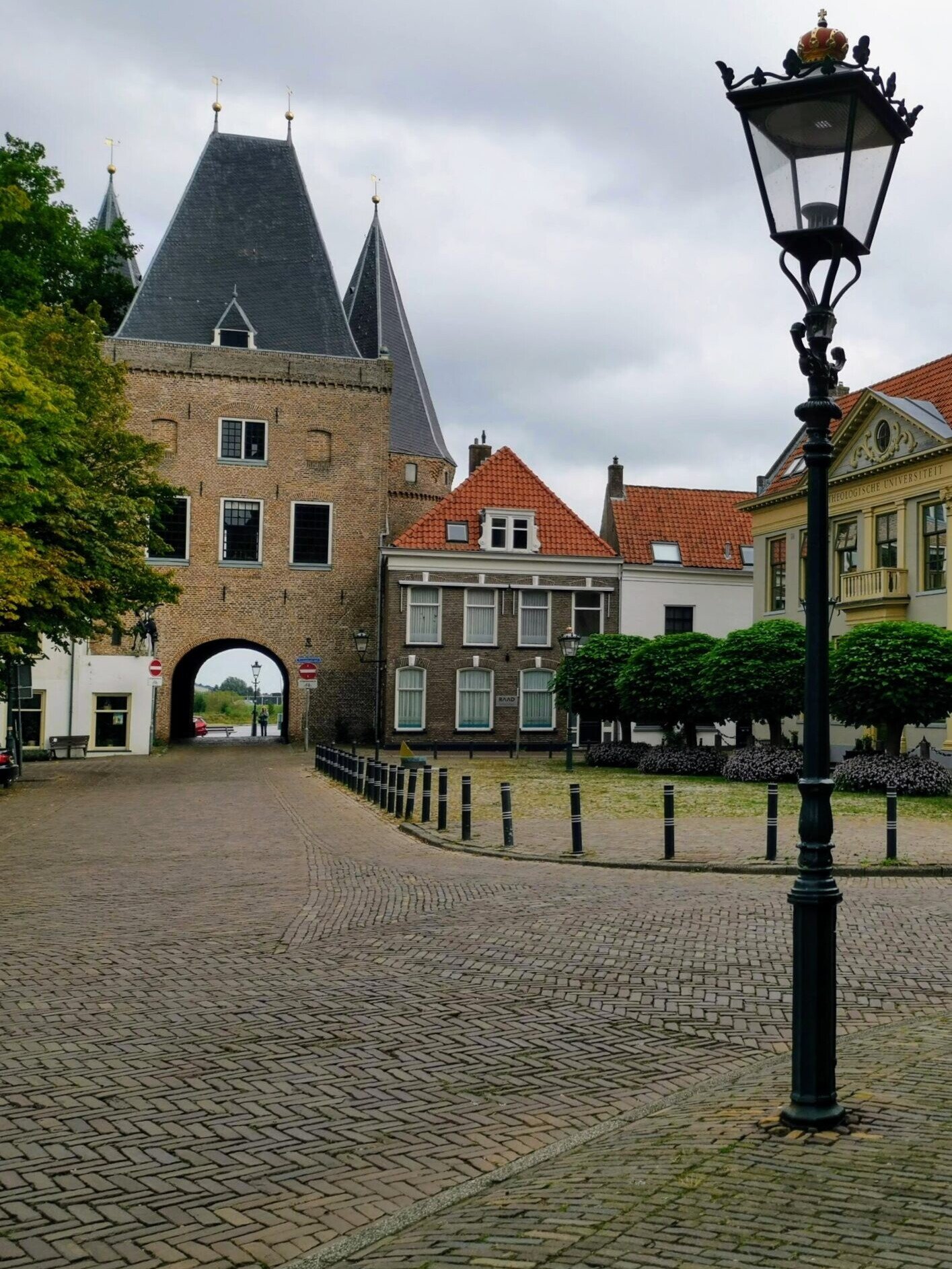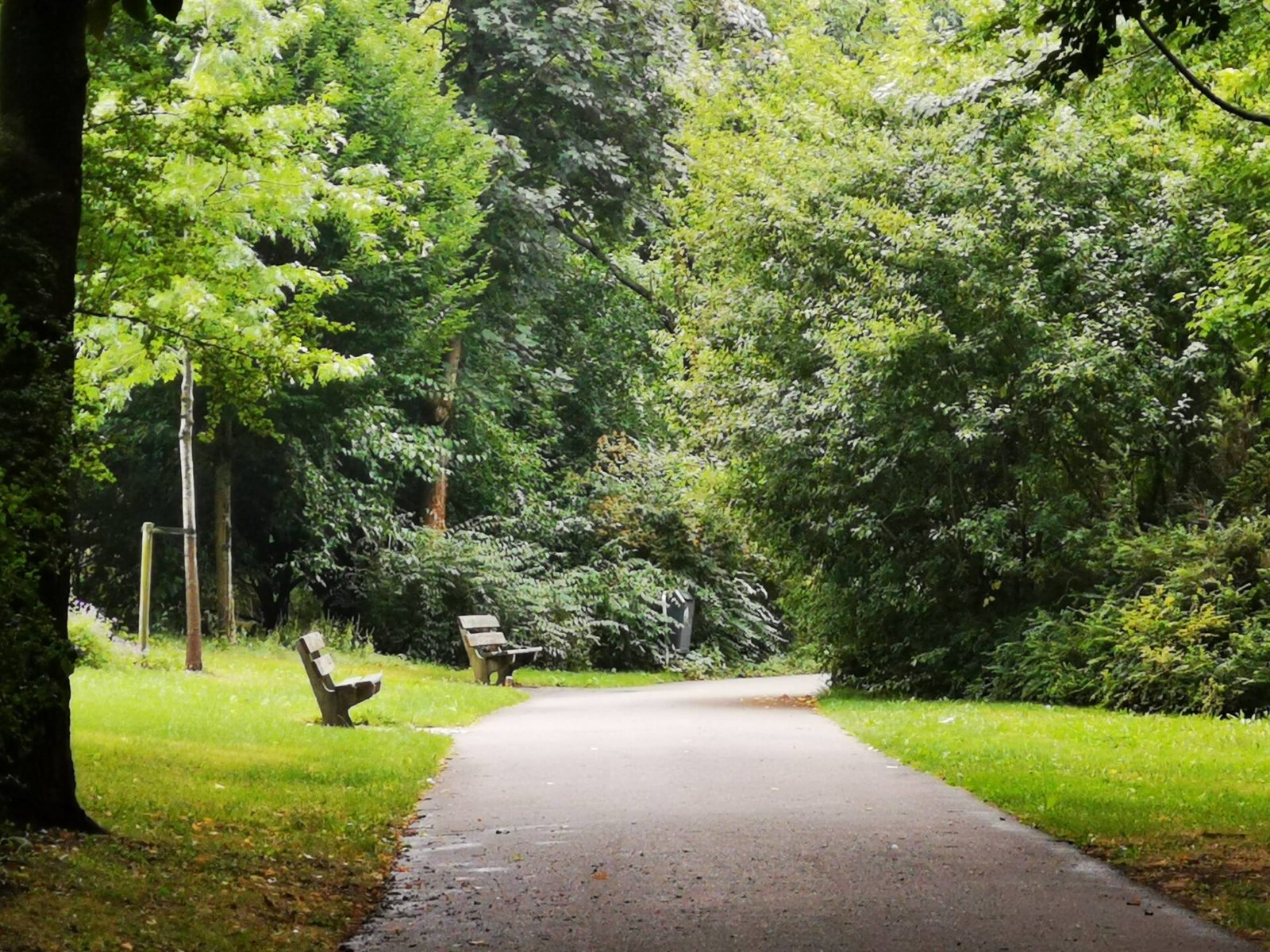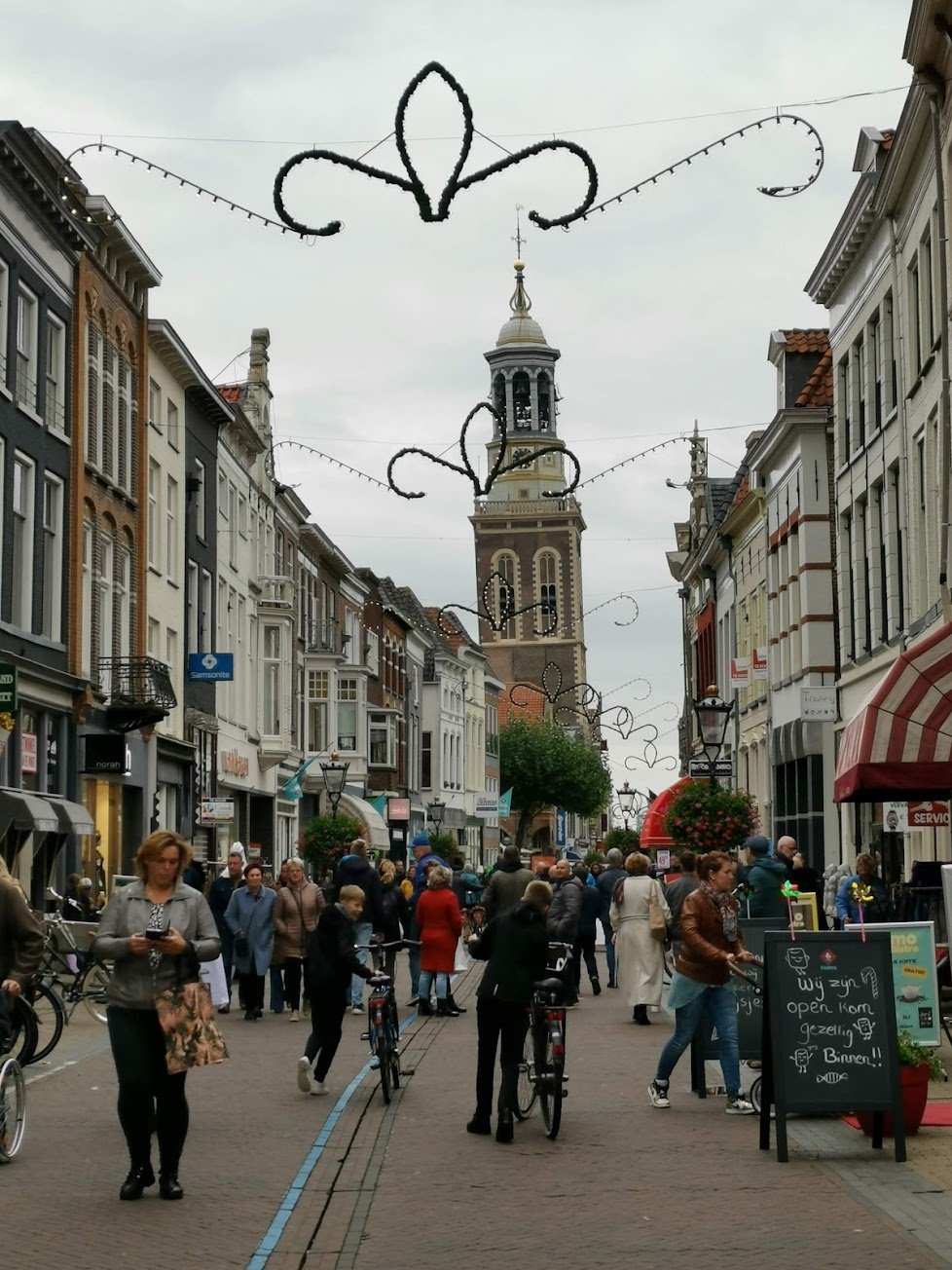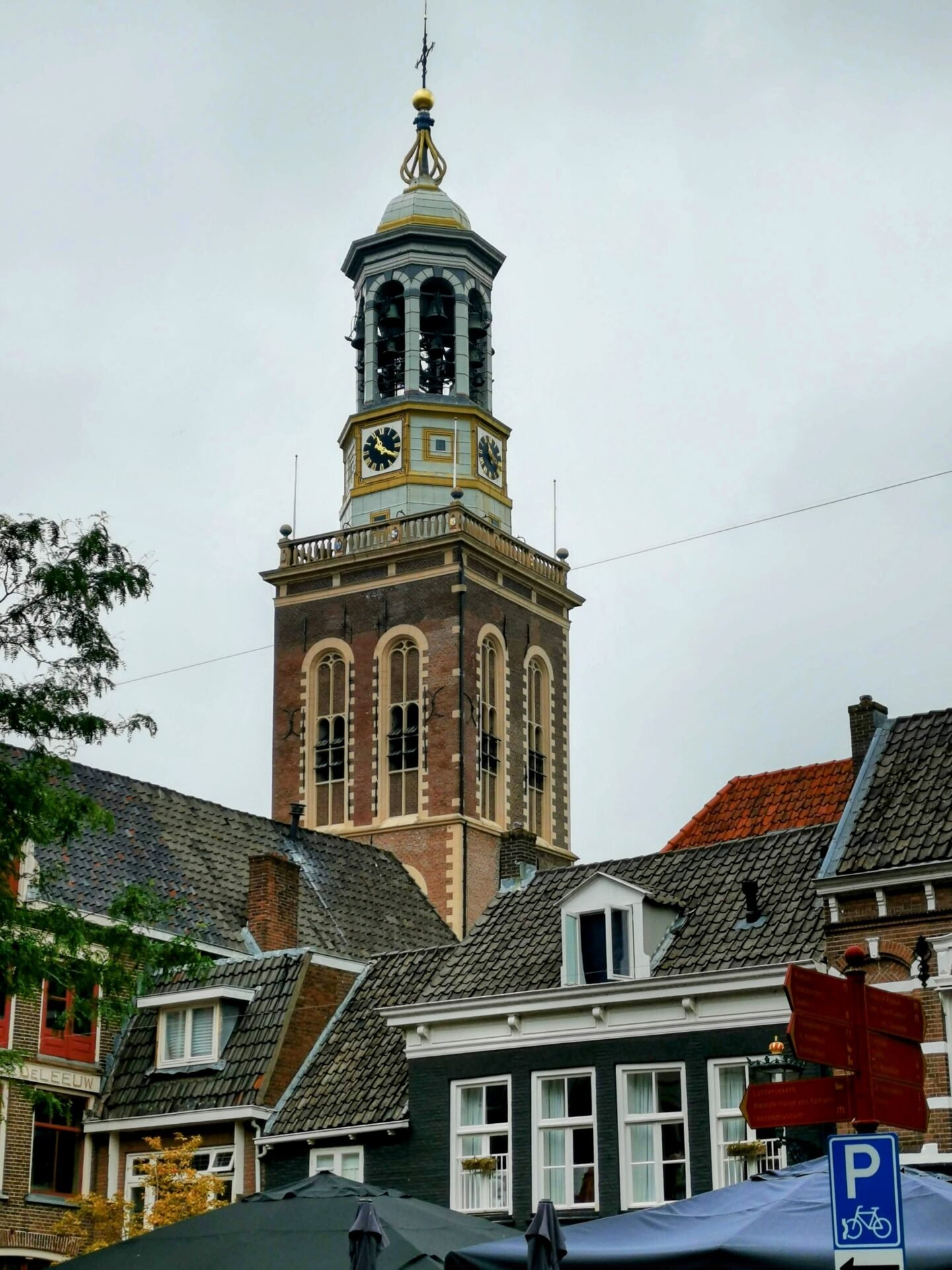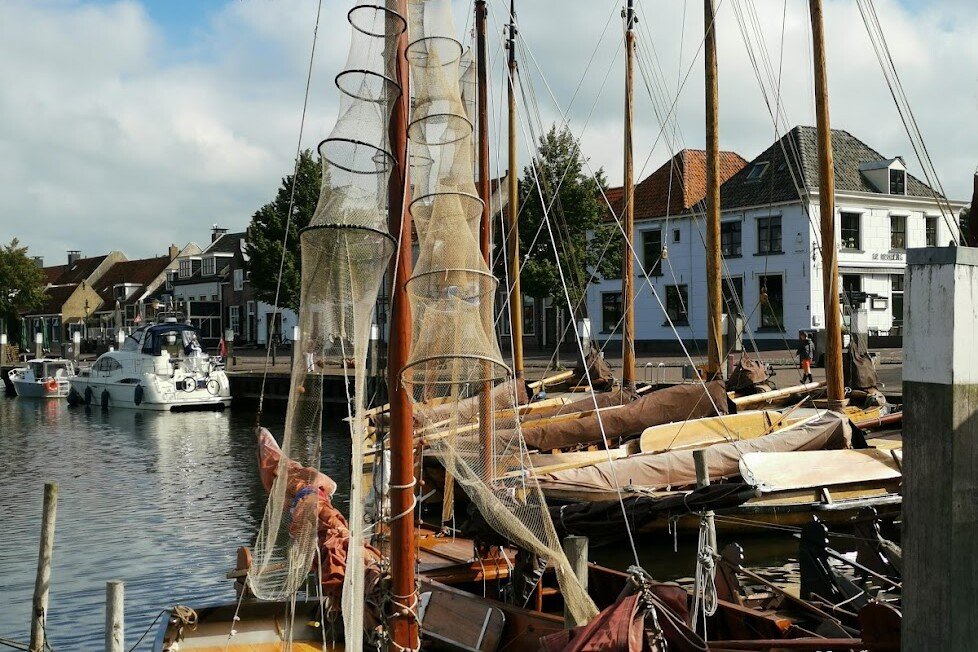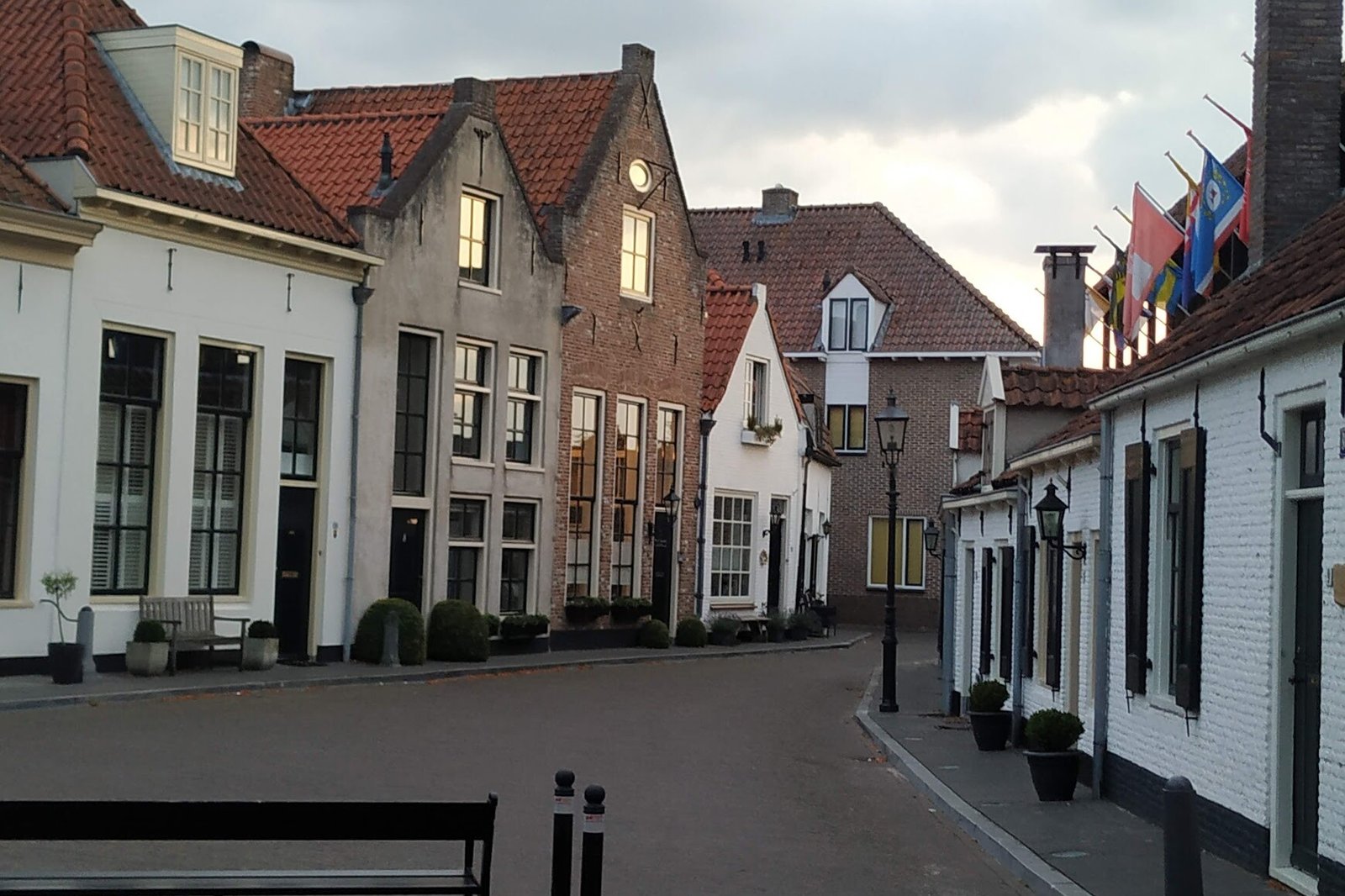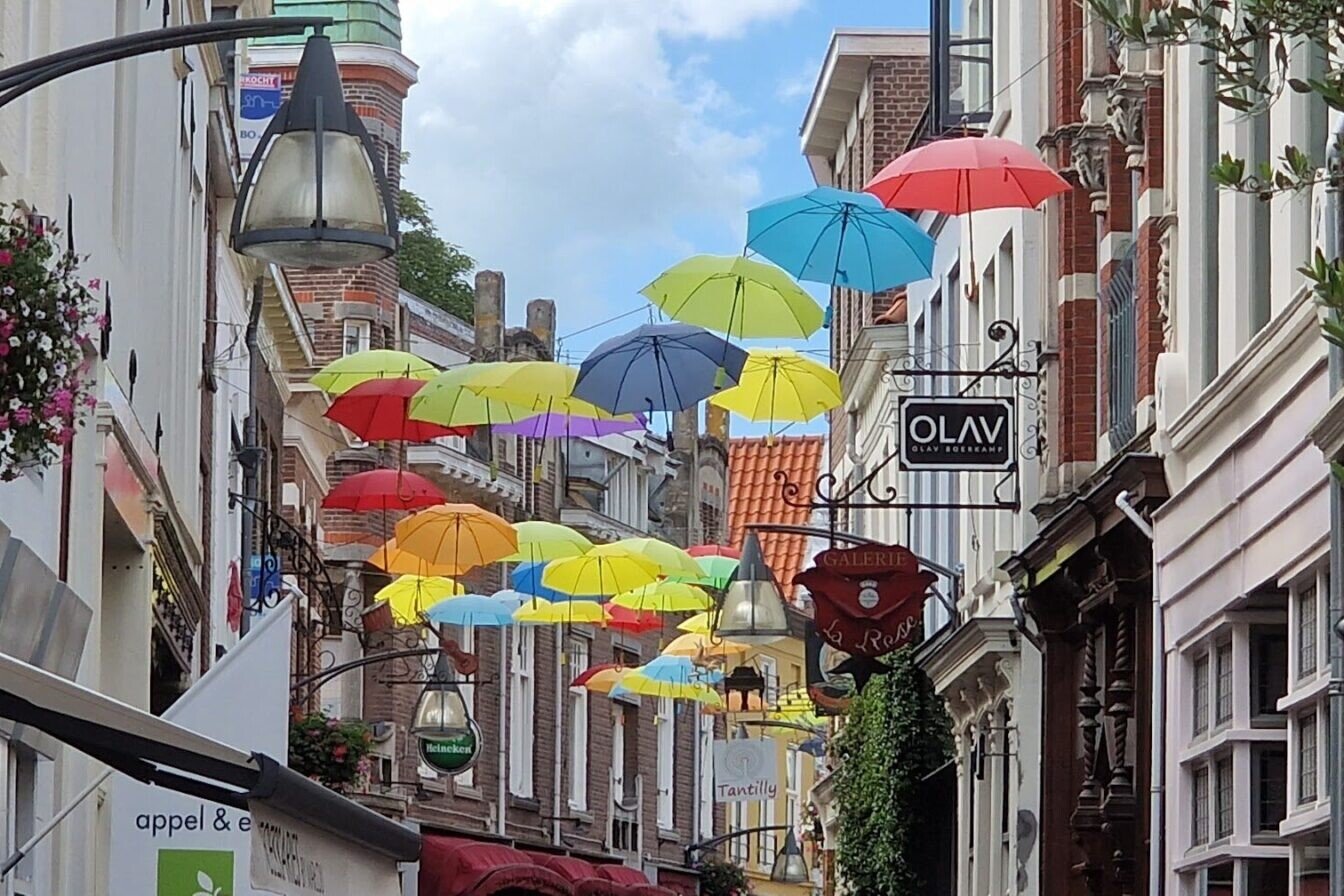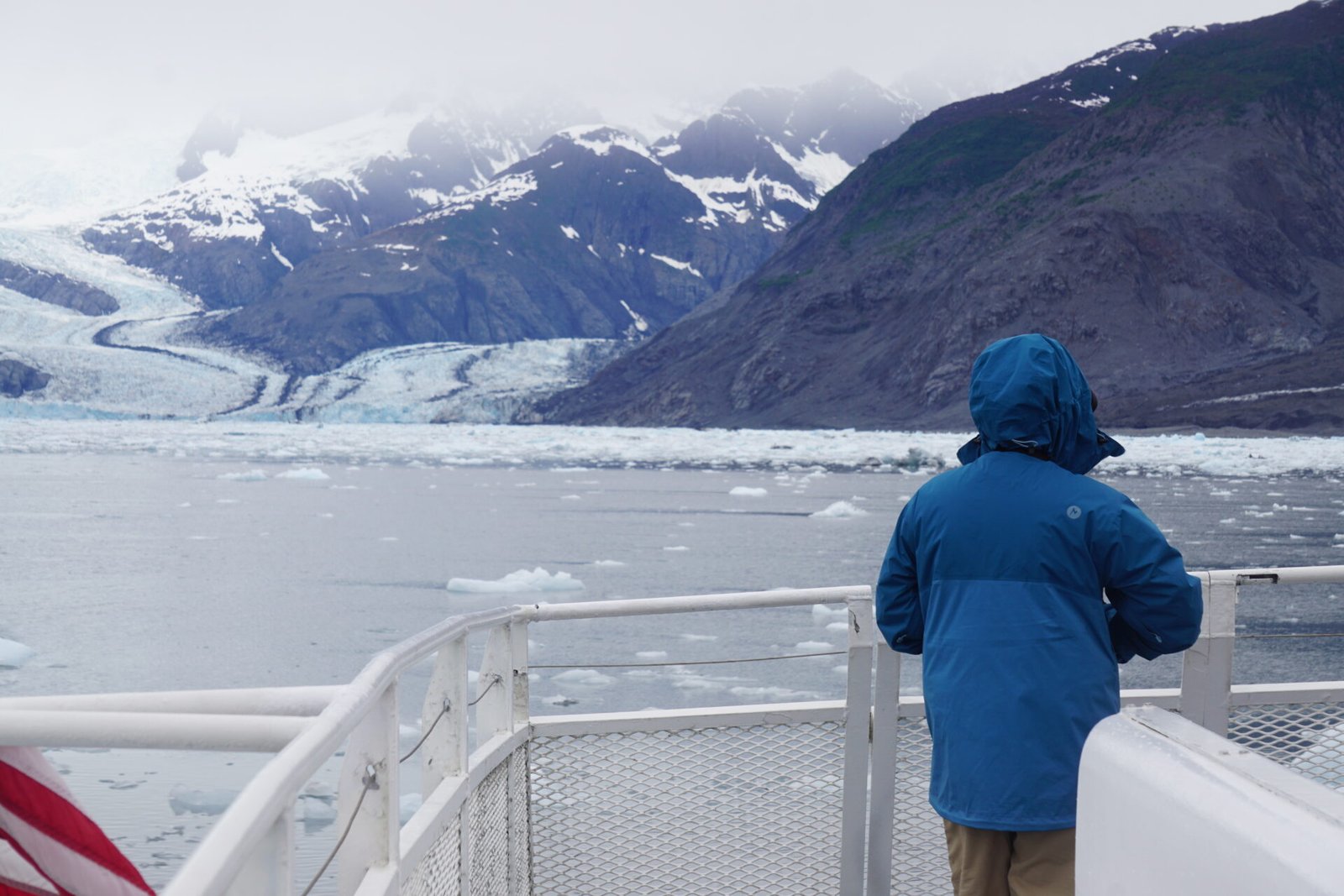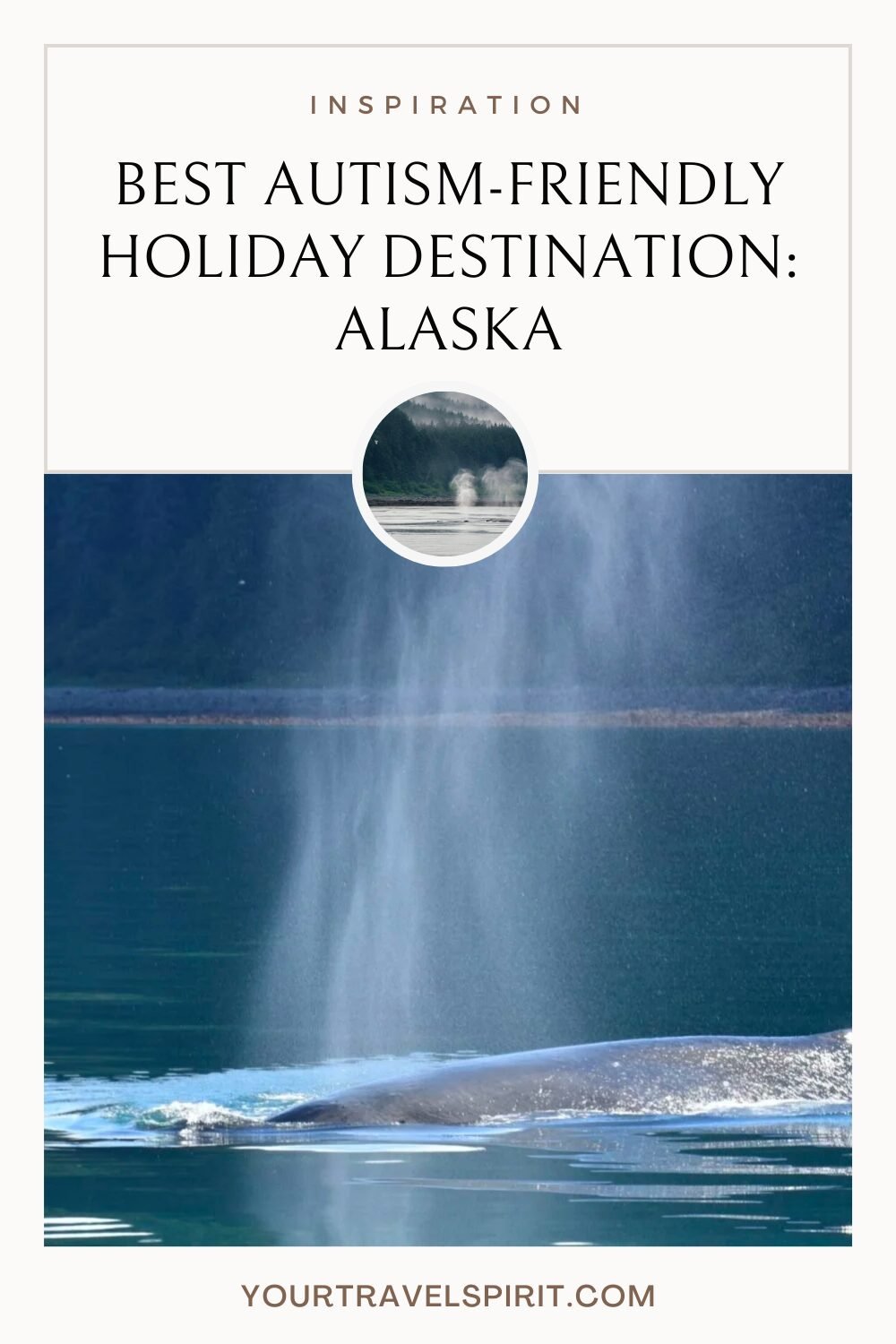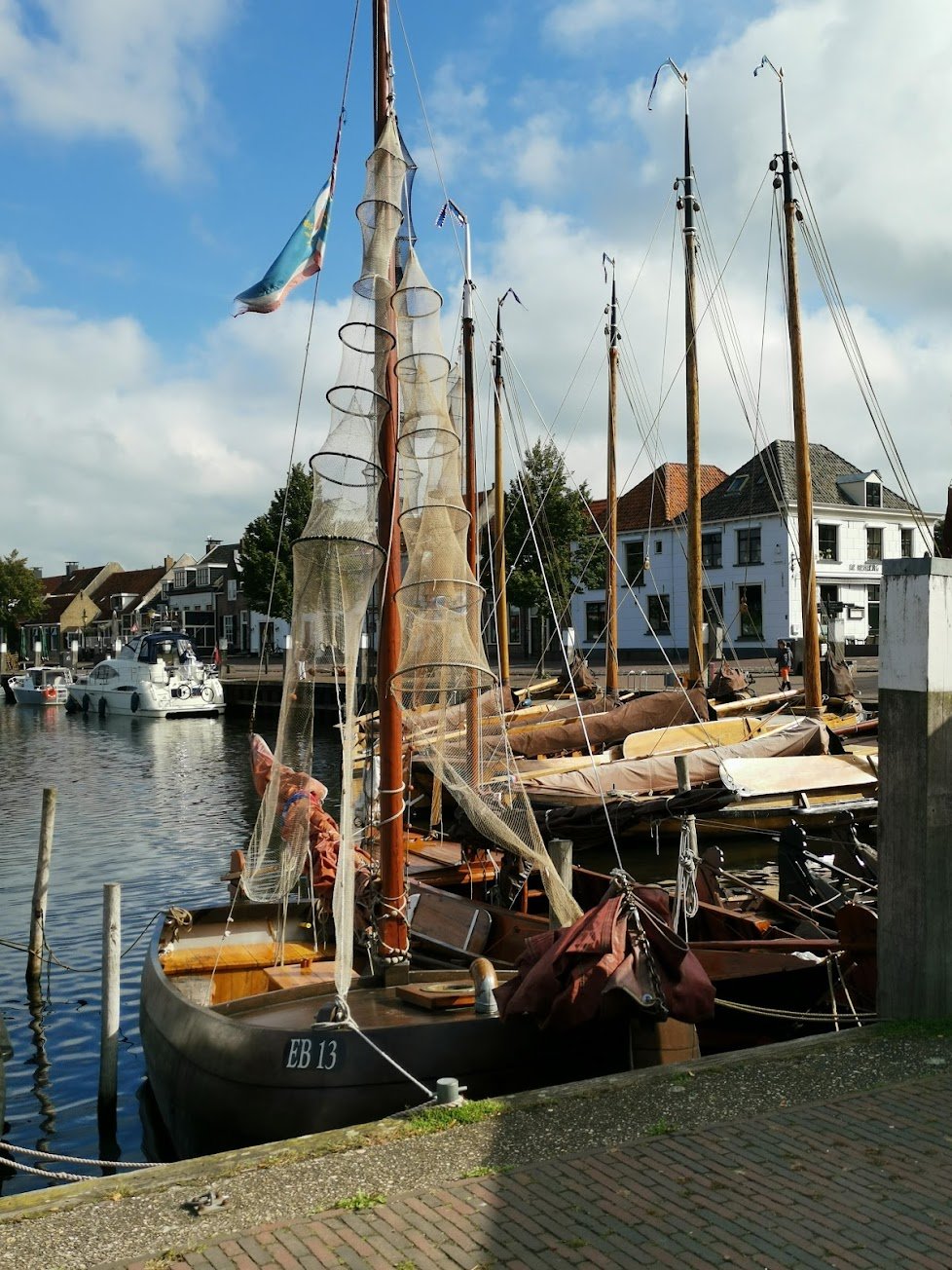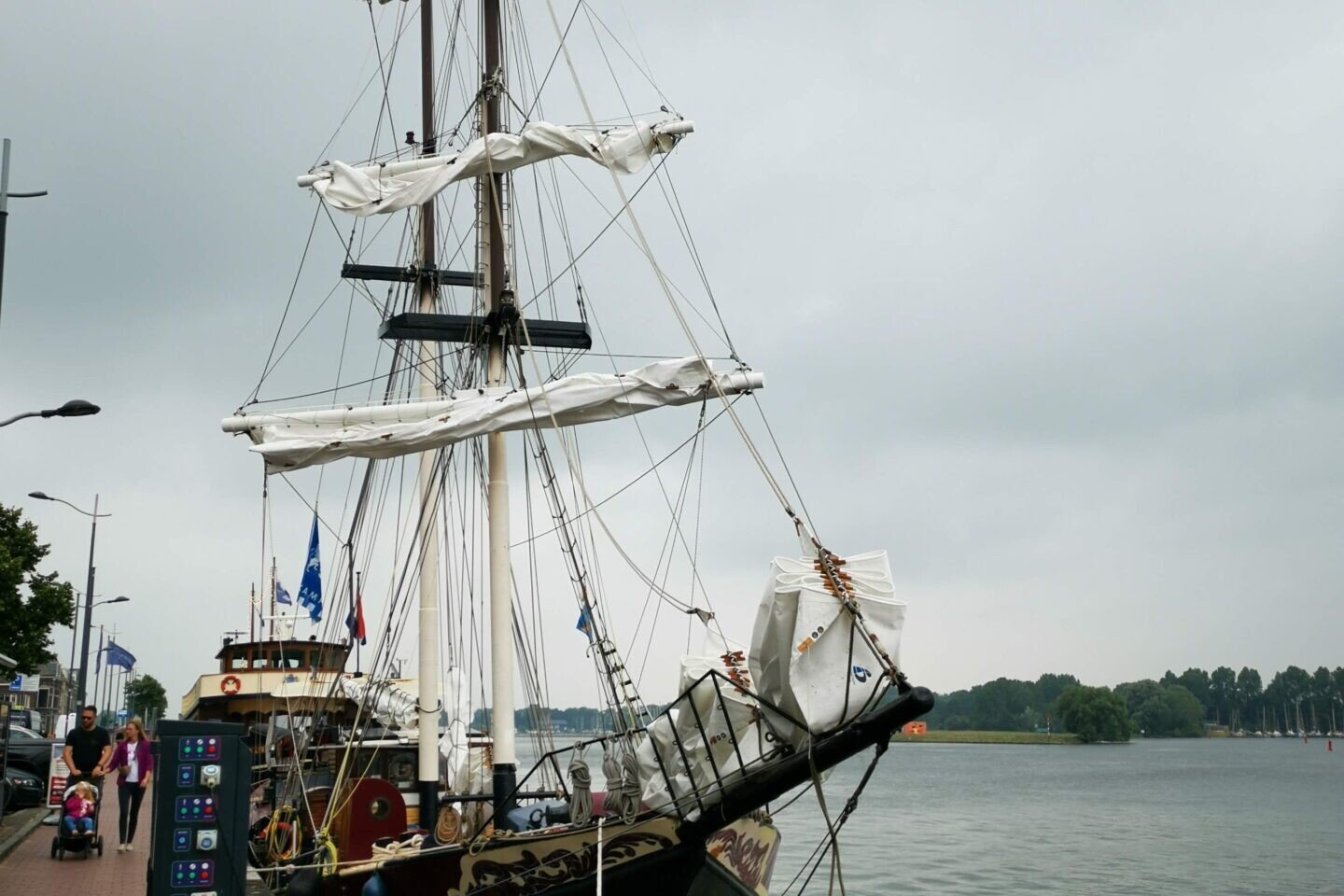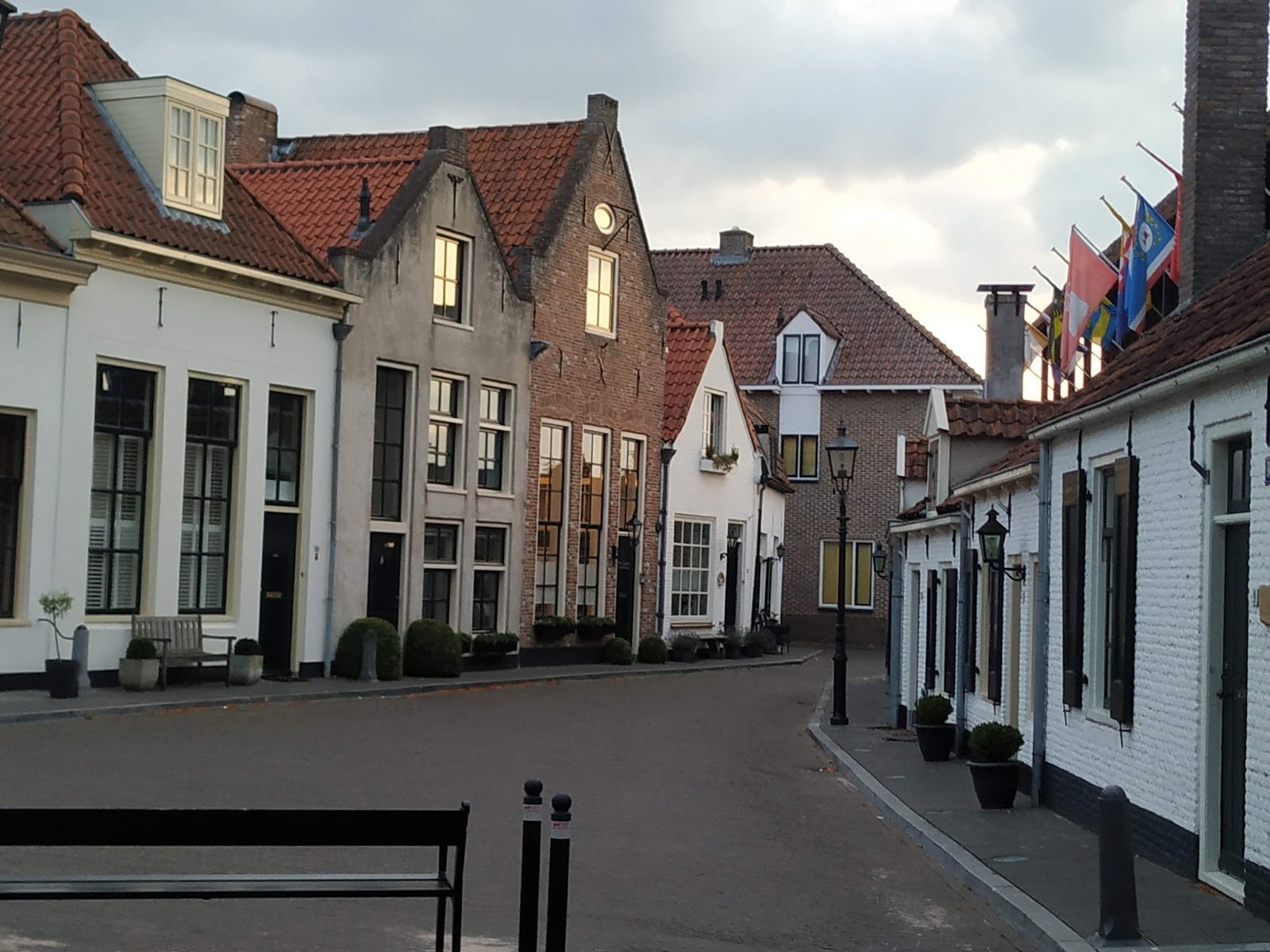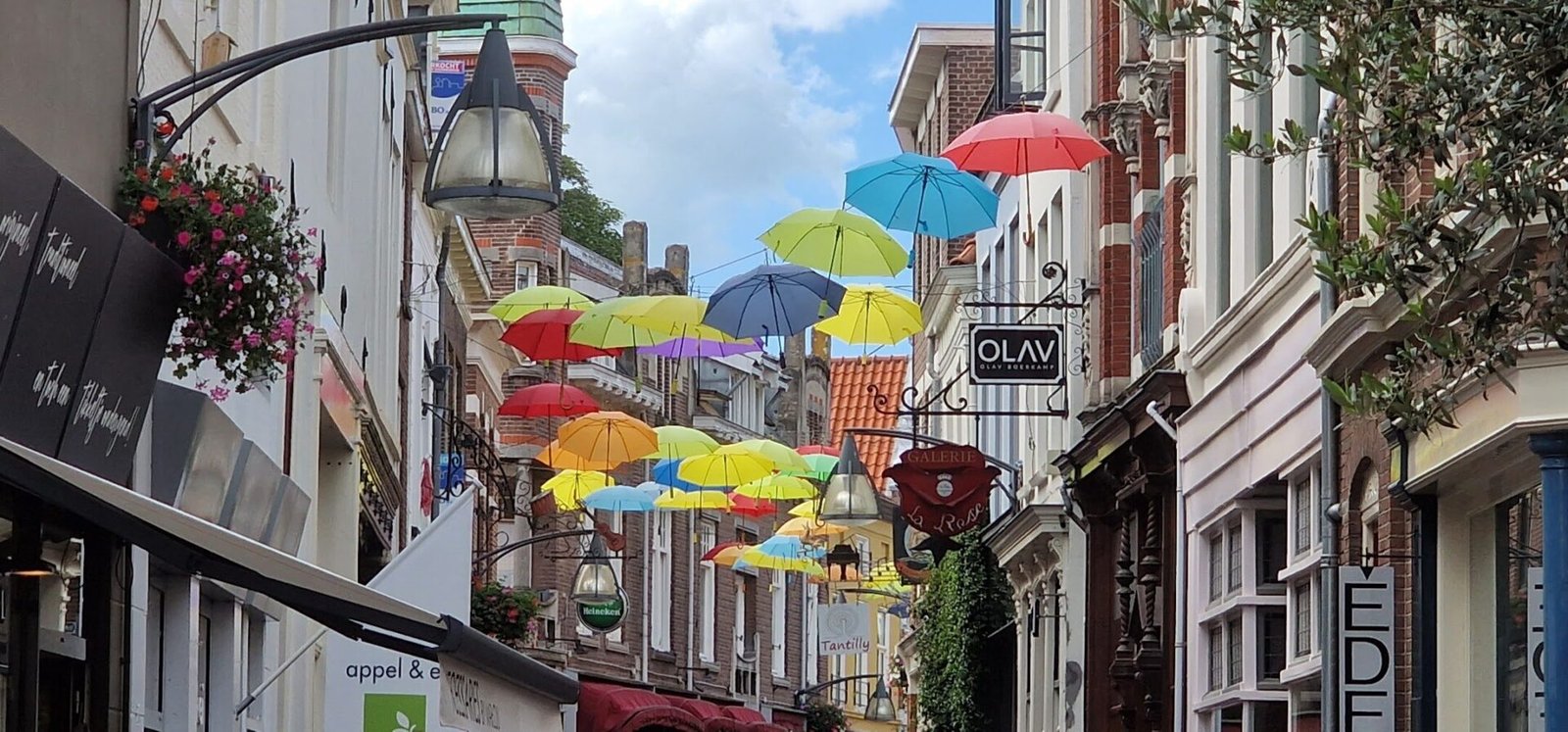Exploring Portage Valley & Whittier: A Guide to Glaciers & Beyond
Planning an Alaskan adventure? Portage Valley and Whittier, a short drive from Anchorage, offer a stunning combination of glaciers, wildlife, and unique experiences. This guide will help you navigate both areas, highlighting must-see glaciers, hidden gems, and activities beyond the ice. Whether you’re on a day trip or a longer exploration, this guide will ensure you experience the best of these Alaskan gems.
Disclosure: Some of the links in this post may be affiliate links. If you decide to book through these particular links, we will receive a small commission from your purchase at no extra cost to you. We are truly grateful for your support!
Begich Boggs Visitor Center
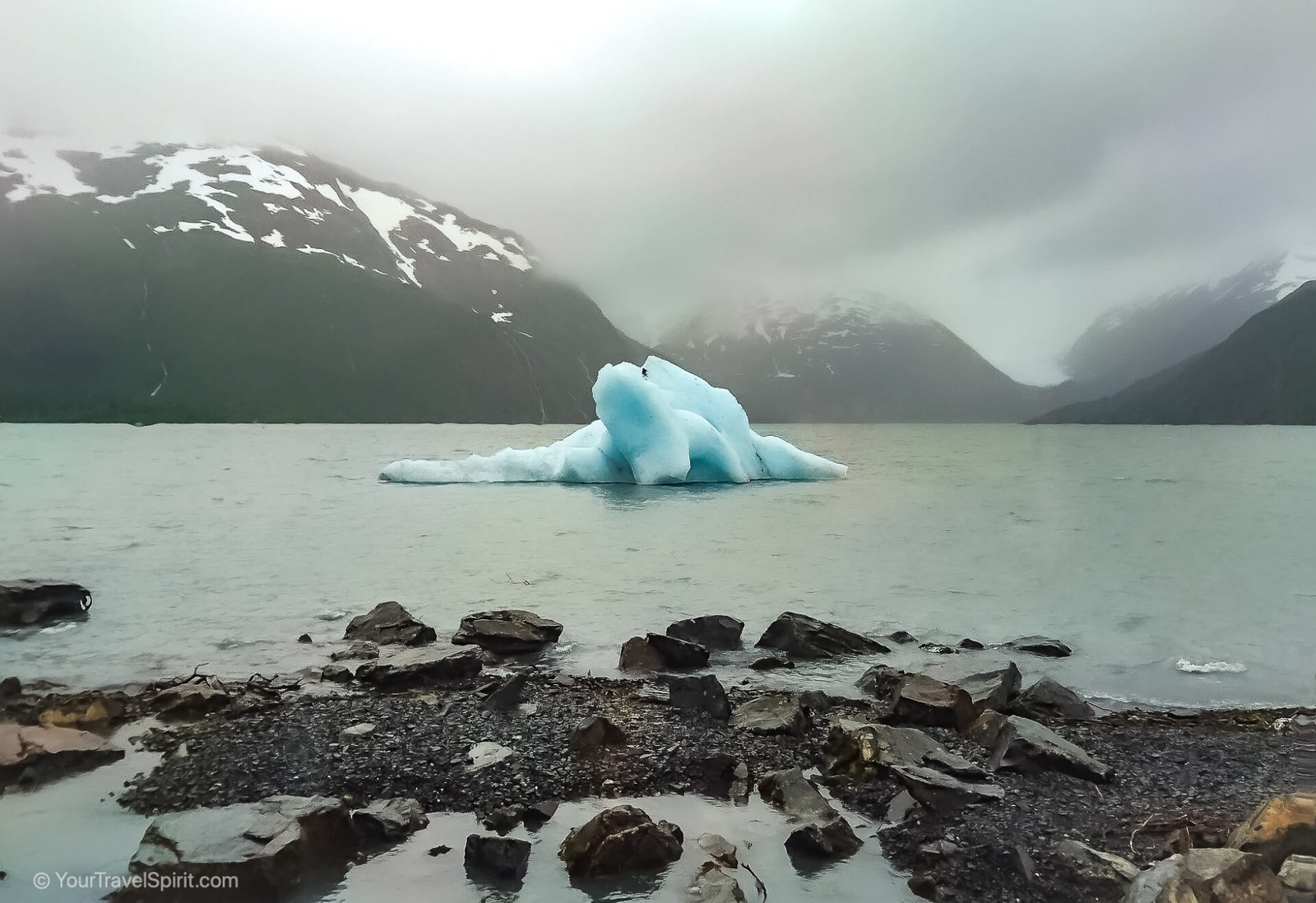
This center provides an opportunity to learn about Chugach National Forest and the ecosystems of Portage Valley and Prince William Sound. It also offers a great view of Portage Lake and its icebergs. While you can no longer see Portage Glacier from the visitor center, you can take a tour with Portage Glacier Cruises to witness its beauty up close.
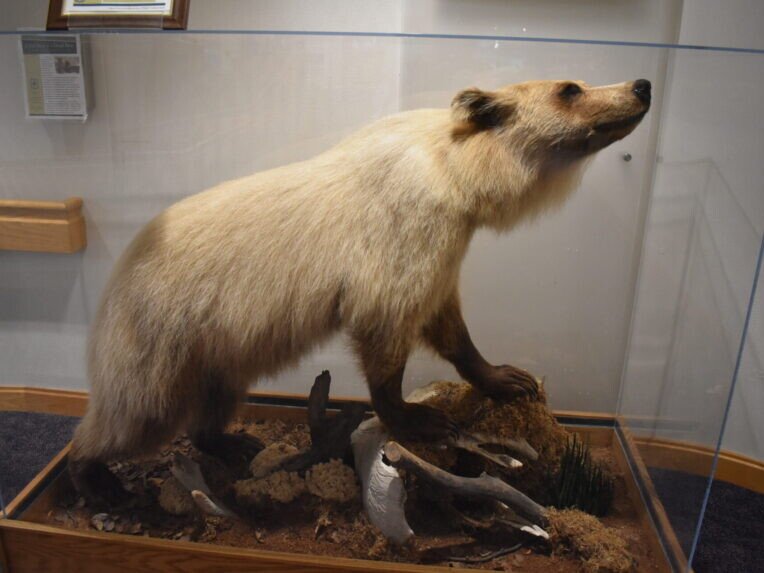
Portage Glacier Cruise
This cruise is a popular activity for visitors to Portage Valley. This boat tour will take you on a short journey of one hour through the beautiful waters of Portage Lake, surrounded by towering mountains, toward Portage Glacier. As you approach the glacier, You will be captivated by the vast beauty. You may even hear the sound of ice cracking and falling into the water. The cruise also offers informative narration about the history and formation of glaciers, as well as the unique ecosystem that thrives in this icy environment.
This cruise is much shorter and, therefore, cheaper than other cruises offered in Seward and Whittier. It is also closer to Anchorage than other glacier cruises.
If you only have a short time in the area or would like to spend less on a glacier cruise, then this is the cruise for you. But if you have more time and are ready to spend more money, we suggest taking also a longer glacier cruise at Seward or Whittier (or even better – in both!).
The official Portage-Glacier-Cruises website provides more information about operating times and prices, as well as the option for a day tour from Anchorage.

Tips:
You may find discounts on the Alaska coupon books/apps:
Toursaver Coupon Book
Northern Lights Coupon Book
Byron Glacier
Byron Glacier is another stunning attraction. From the visitor center at Portage Lake, you can continue your journey towards Byron Glacier. An easy, accessible hike of 1 mile (1.6 km) on the well-maintained trail through lush greenery will take you to a glacier-scoured valley. At the end of the trail, you will be rewarded with a breathtaking view of the massive ice formations of the glacier extending out from the mountainside.
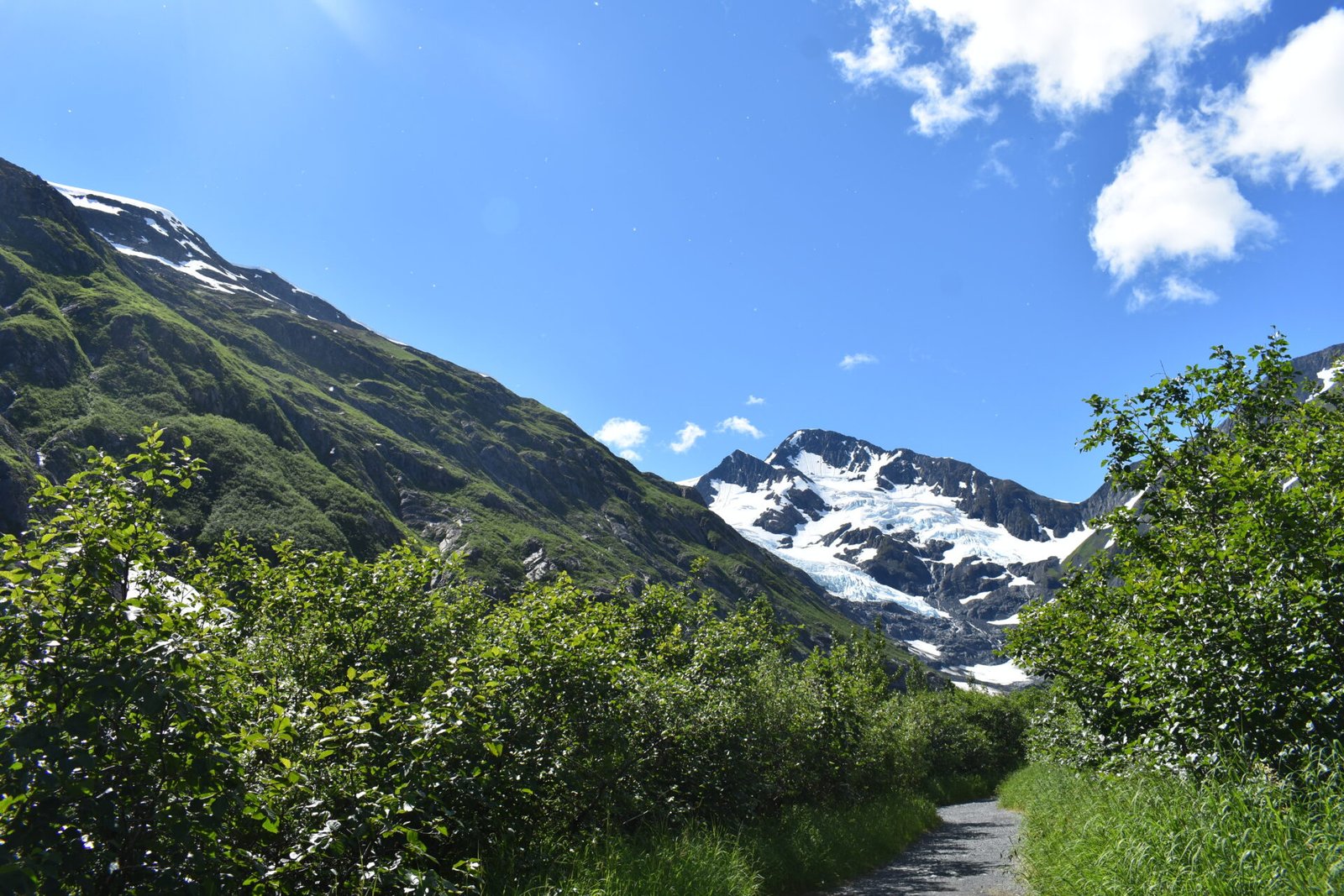
From the end of the trail to the area beneath the glacier, there is a stream you can follow, carefully stepping over rocks and avoiding any slippery areas, and get to a snowfield left over from winter avalanches.
While walking on the glacier itself is not recommended due to safety concerns, visitors can get close enough to see and hear the ice cracking and melting.
Below the glacier, you will notice two massive ice cones that were formed by snow avalanches. Sometimes it is possible to see ice caves created by meltwater streams beneath the cones. Be careful – entering these ice caves is extremely dangerous, as chunks can fall down without warning!
Note that no facilities or services are available at Byron Glacier, so be sure to bring water and snacks.
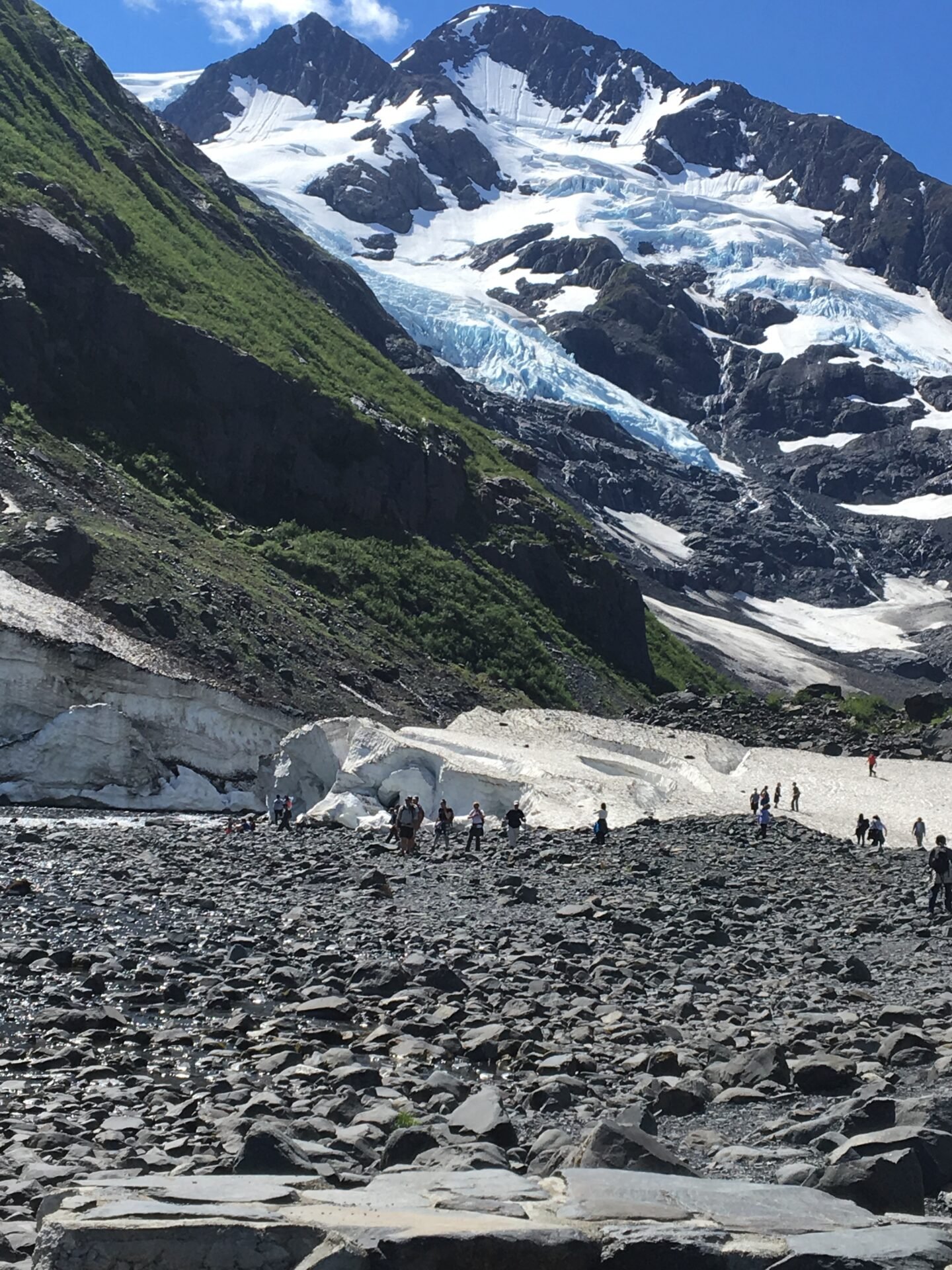
Whittier
Whittier is an interesting coastal town on the shores of Prince William Sound.
Whittier serves as a cruise ship port, second to Seward, offering travelers another option to begin or end their Alaskan adventure.
Whittier also functions as the departure point for ferries to and from Valdez, another picturesque Alaskan town nestled on the other sideof Prince William Sound.
To access Whittier, you must go through the Anton Anderson Memorial Tunnel. The tunnel is a unique experience in itself. It is a 2.5-mile (4 km) long tunnel with a single lane shared by cars and trains traveling in both directions. The meaning is that you drive your car directly over the railway tracks!
Access from each direction is regulated due to the tunnel’s single-lane structure. It is important to note that the tunnel is only open for specific periods in each direction. During these times, designated slots are assigned for cars and trains, so be sure to check the schedule before you plan your drive. Here you can find the schedule of the Anderson Memorial Tunnel.
Because of delays at the opening or long lines, the tunnel can take 20-30 minutes to get through, even though the drive is only 10 minutes.
We strongly recommend arriving 15 minutes earlier than the opening time on which you plan to enter the tunnel.
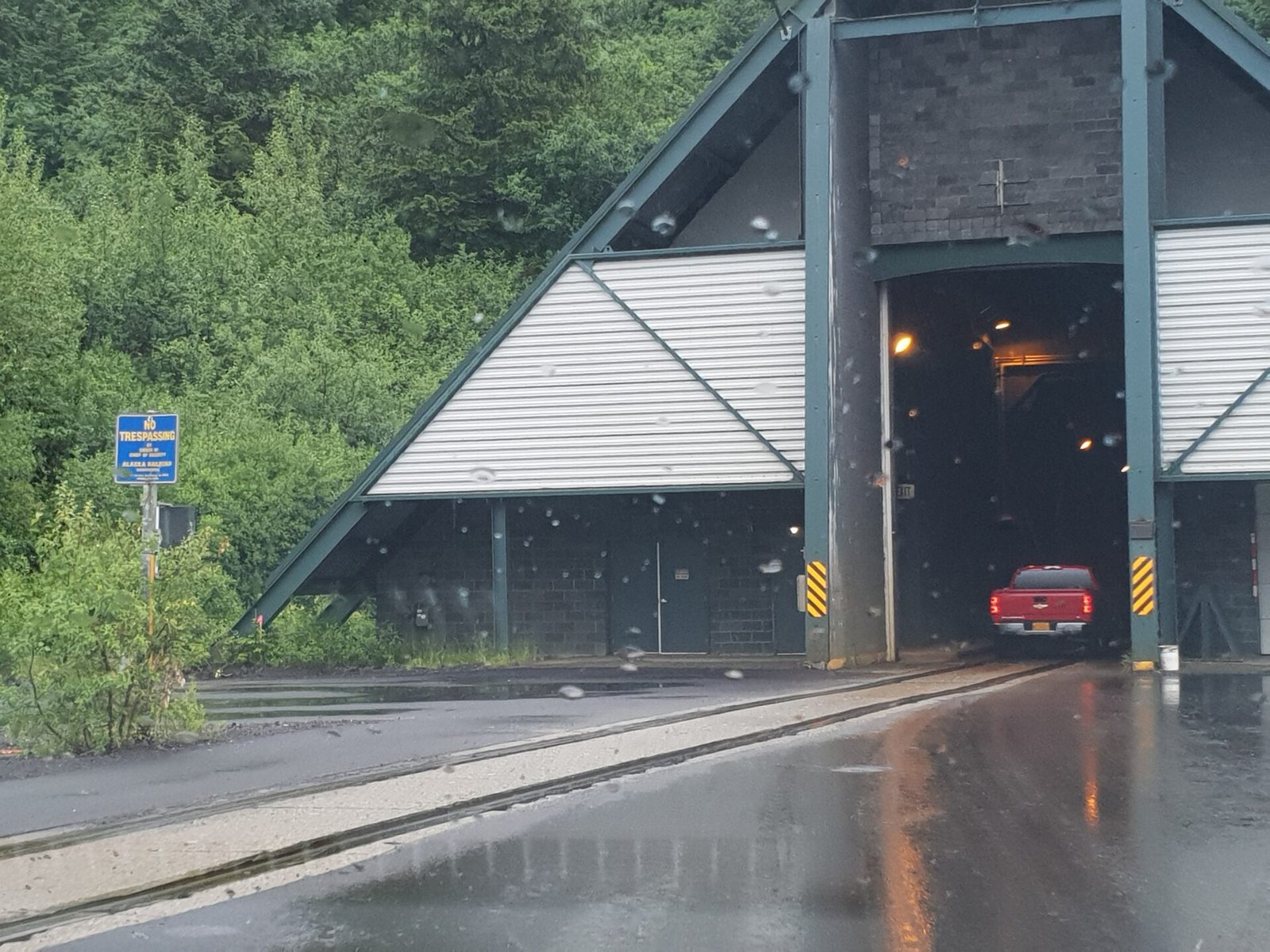
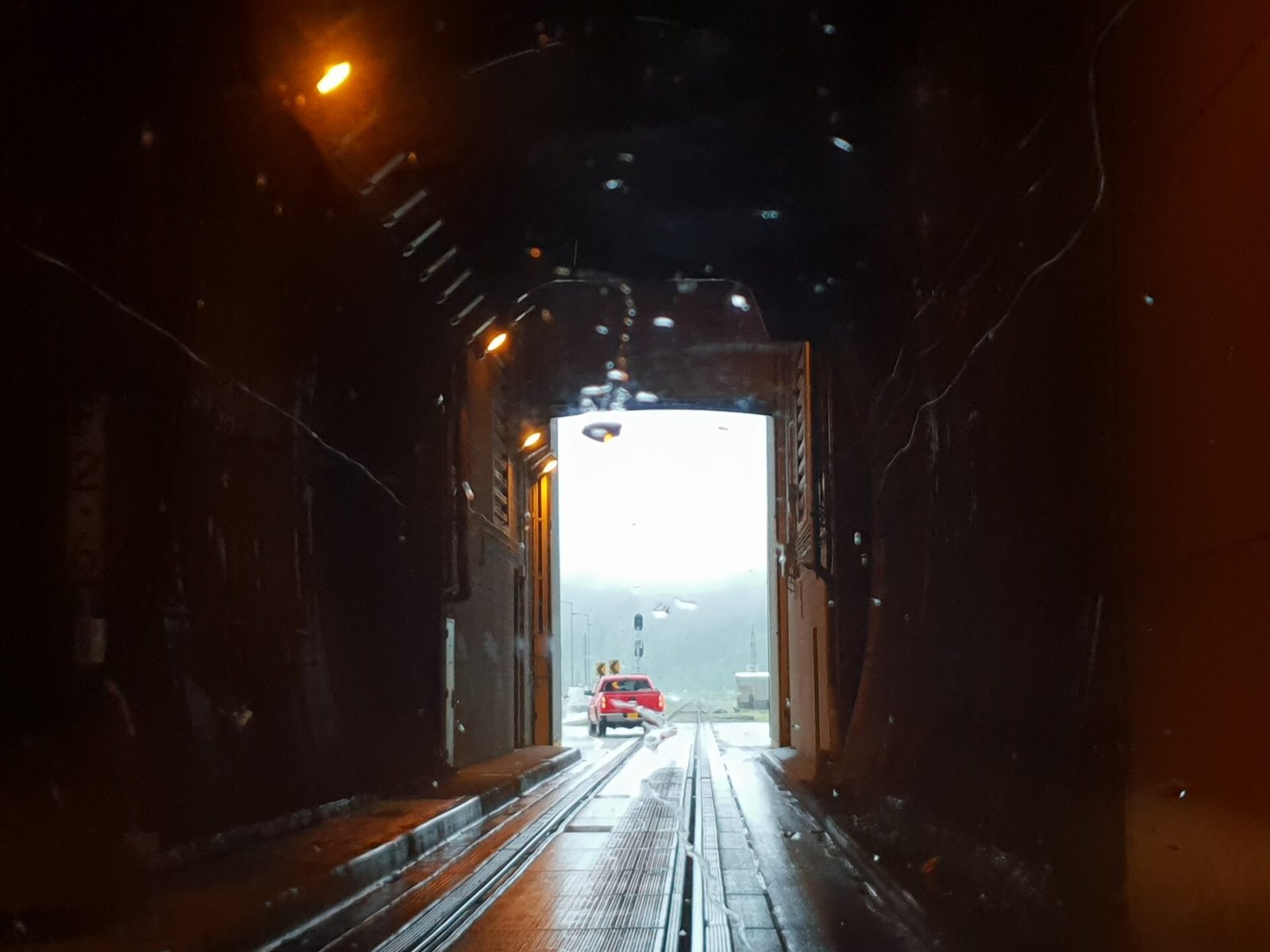
What Is Whittier Famous For?
Once you pass the tunnel, you will find yourself in the town of Whittier.
Whittier is famous for its population of just 273 residents, with most of them are living in a single building constructed in 1974 as an Army Barracks.
This small community is nestled between mountains and fjords, offering breathtaking views.
Take some time to explore the waterfront, where you can find a few cute cafes and a pizza and ice cream restaurant. Enjoy a leisurely stroll along the harbor.
You can also visit the Prince William Sound Museum, where you can learn more about the history and culture of the area.
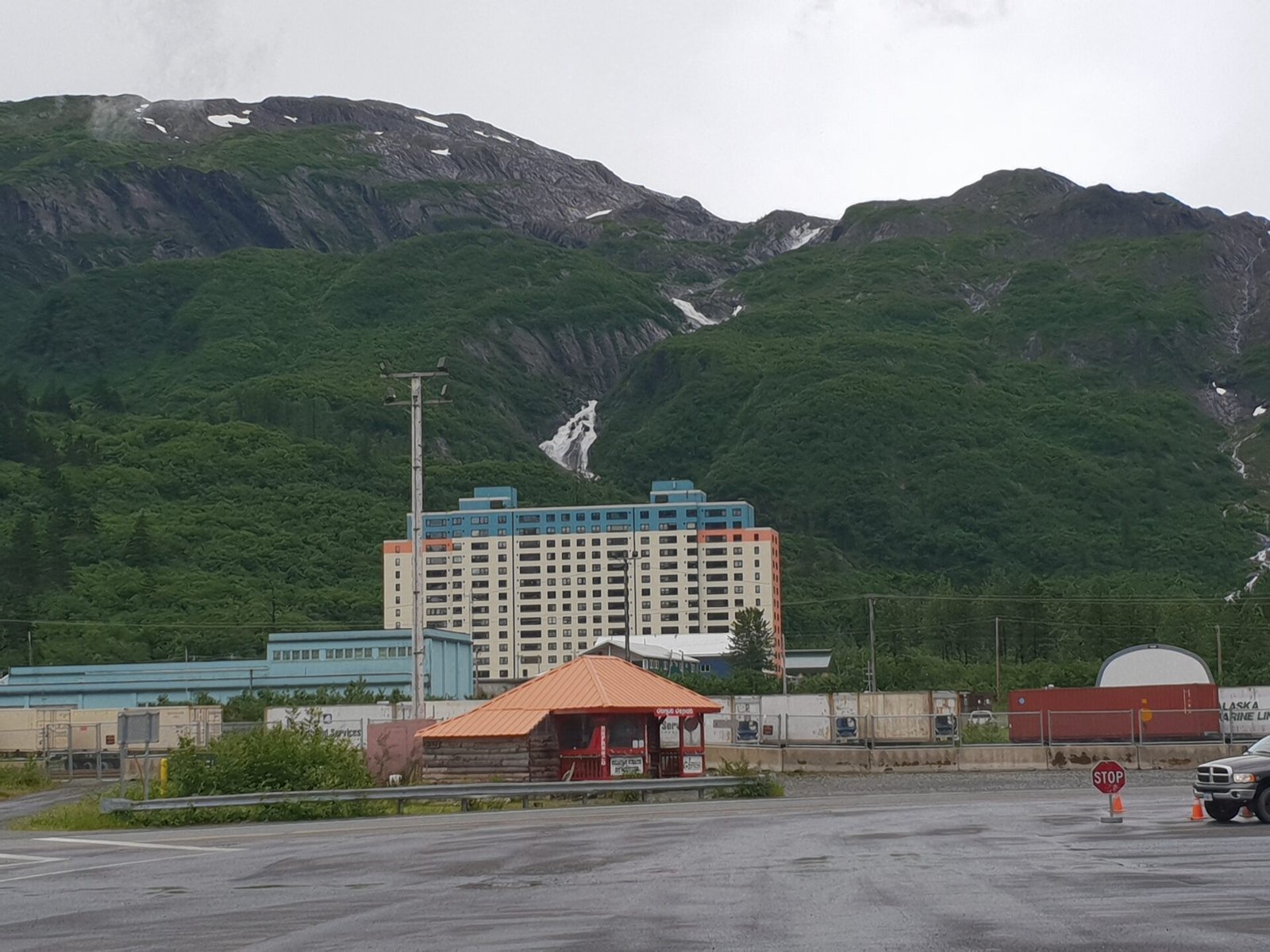
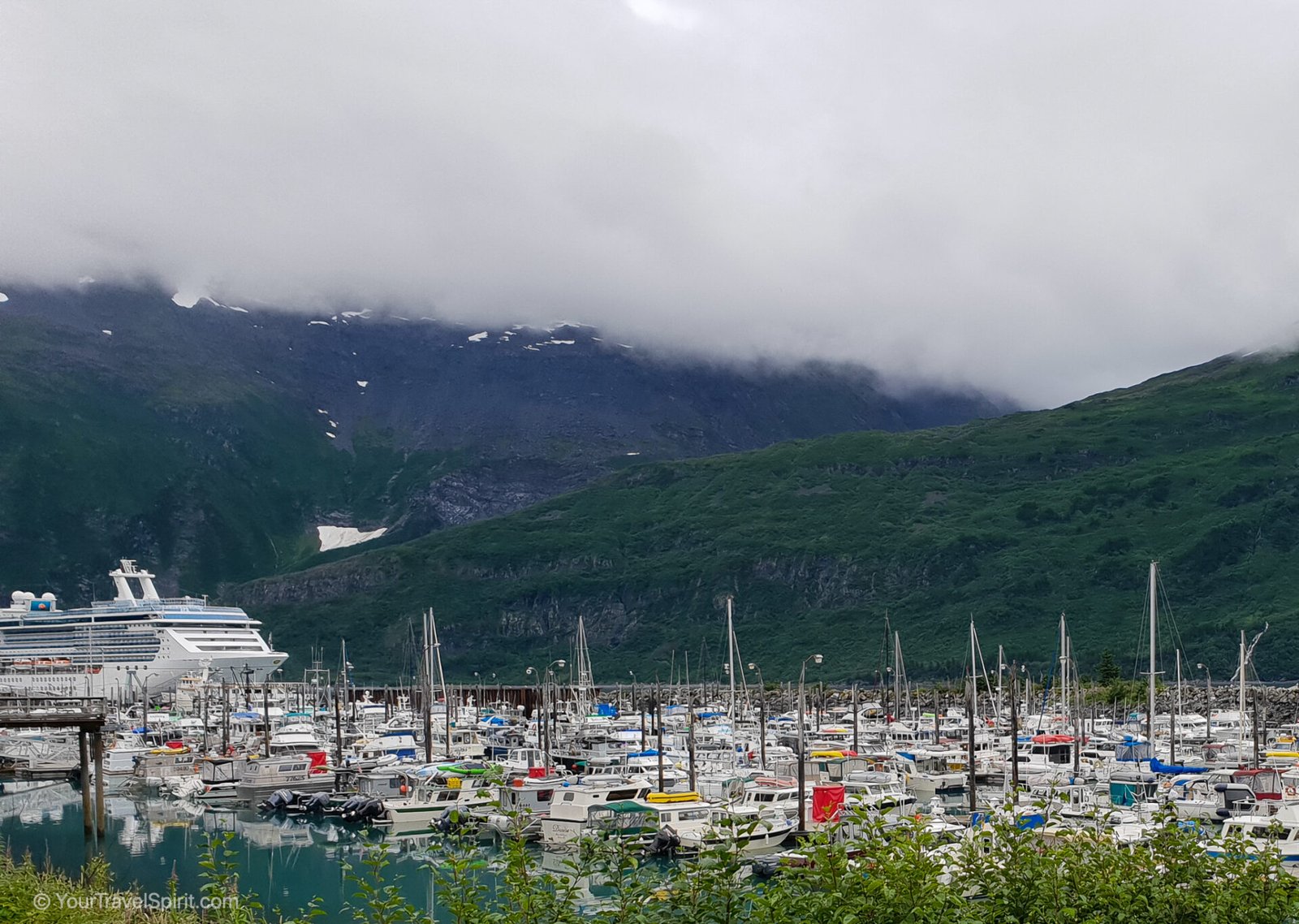
From Whittier, you can explore the magnificent Prince William Sound and experience the stunning glaciers and wildlife on a guided boat tour. Prince William Sound is a sheltered area with calm waters, hence suitable for those prone to seasickness, too.
There are several alternatives for boat tours:
Phillips Cruises and Tours operates big catamarans with heated cabins for the following tours:
26 Glaciers Cruise – one of Whittier’s most popular boat tours. You will see 26 glaciers during this 5.75-hour tour (some from afar).
Glacier Quest Cruise – You will pass through 10 glaciers during this 3.75-hour cruise.
Several companies operate private small boat tours for more intimate experiences. These tours offer a closer look at the glaciers and allow for a more personalized experience with the wildlife.
One such company is Lazy Otter Charters, which offers various tour options ranging from 4.5 to 8 hours in duration. We highly recommend this company as we had a wonderful tour with them.
For those seeking adventure, several companies offer guided kayak tours from Whittier. Paddle through the calm waters and get up close to the glaciers and wildlife.
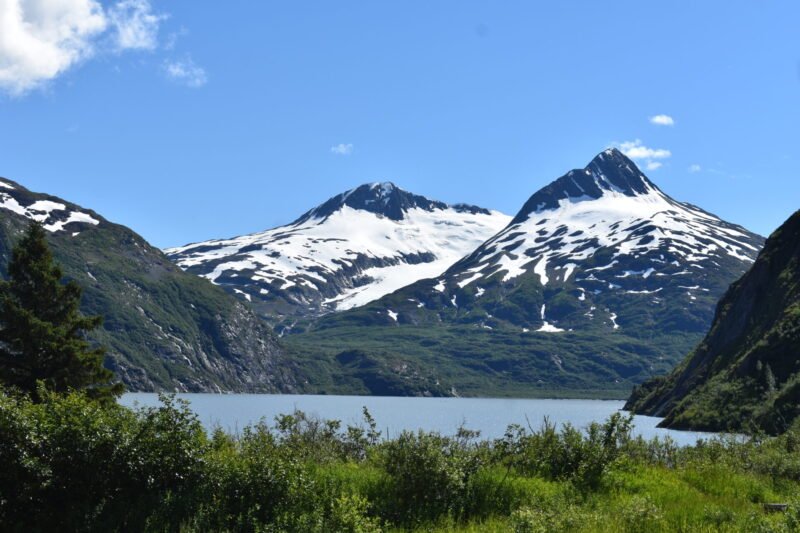
Other Things To Do In Portage Valley
The trail of blue ice
The Trail of Blue Ice in Portage Valley is a captivating 5-mile (one-way) trail that starts at Moose Flats Recreation Area on Portage Lake Road, approximately 80 miles south of Anchorage. This scenic trail winds through scenic woods, and through bridges over streams and ponds, offering breathtaking views of the surrounding mountains and glaciers.
This trail is great for hiking or biking. There is a small elevation via a small section of stairs, which can be bypassed by an alternate, fully accessible route along the shoulder of the road.
Please find more information, including a map of the trail in the USDA Forest Service website.
Portage Pass
Portage Pass is a hiking destination known for its stunning views. It is the only easy way to see Portage Glacier by foot.
It is a 2-mile (3.2 km) one-way moderate trail that is defined as family-friendly, but please note that the trail has an elevation of 800 feet (243 m) and some steep parts. This trail is not accessible.
The trail starts just outside of Whittier, right near the Anderson Memorial Tunnel. The trail ends on the shore of Portage Lake in a location that can only be reached by kayak or canoe, so you will have to return by foot as well.
Here you can find more information, as well as a map of the trail.
williwaw fish viewing platform
A convenient location for observing spawning salmon on an accessible boardwalk during the late summer and early fall months.
You can find more information, including a map of the area, on the USDA Forest Service website.
Related Articles
For more information, please see:
You can save this guide for later on Pinterest by clicking on the photo below.
Thank you for taking the time to read this! If you have any questions or would like to share your experience, please leave us a comment below.
Capturing Alaska's Magic: Driving from Anchorage to Seward in Photos
Have you ever dreamed about an epic road trip? Embarking on a journey from Anchorage to Seward is a dream come true for any road trip enthusiast. The scenic drive from Anchorage to Seward offers breathtaking views of snow-capped mountains, crystal clear water, and lush forests that will astonish you with Alaska’s natural beauty. This incredible route, also known as the Seward Highway, is way more than just getting from one place to another. It’s a destination by itself, a journey of amazing beauty waiting to be explored.
This article will take you on a visual journey along this iconic route. Through a collection of photographs, you’ll experience this magnificent Alaskan landscape and discover some of the key highlights of the drive.
Get ready to capture the magic of this unforgettable road trip as you travel along one of the most scenic routes in the world!
Disclosure: Some of the links in this post may be affiliate links. If you decide to book through these particular links, we will receive a small commission from your purchase at no extra cost to you. We are truly grateful for your support!
Route Overview
Length – 127 miles (204km)
Gas Stations – Don’t forget to refuel and pack some snacks and drinks. The only gas stations along the way are in Girdwood, Whittier, and Seward.
Please note – in the summer peak months, the gas station in Girdwood can become very busy. We recommend refueling in Anchorage.
Driving Time – During the regular workweek, driving from Anchorage to Seward directly usually takes 2.5-3 hours. However, on summer weekends, when the roads are filled with traffic and slow-moving RVs driving southward, that same journey can take significantly more time. We recommend taking your time to explore this magnificent area. If you can, we encourage you to make this journey over several days.
Cellular Coverage – Cellular coverage along the way may be poor in some areas. Make sure to look up directions and any information ahead of time. We also highly recommend downloading an offline map of the area.
Rest Areas – There are several rest areas and pullouts along the road. Most of them with stunning views. In some rest areas, a few primitive restrooms will be available.
Wildlife – Be prepared for wildlife – there is a possibility of encountering moose or other wild animals, so it is important to keep an eye out. Please see more information about driving in moose country here.
Embark On A visual Journey, Driving from Anchorage to Seward
Let us take you on a journey captured in photos through this stunning drive.
Step into the driver’s seat and traverse one of Alaska’s most magnificent roads.
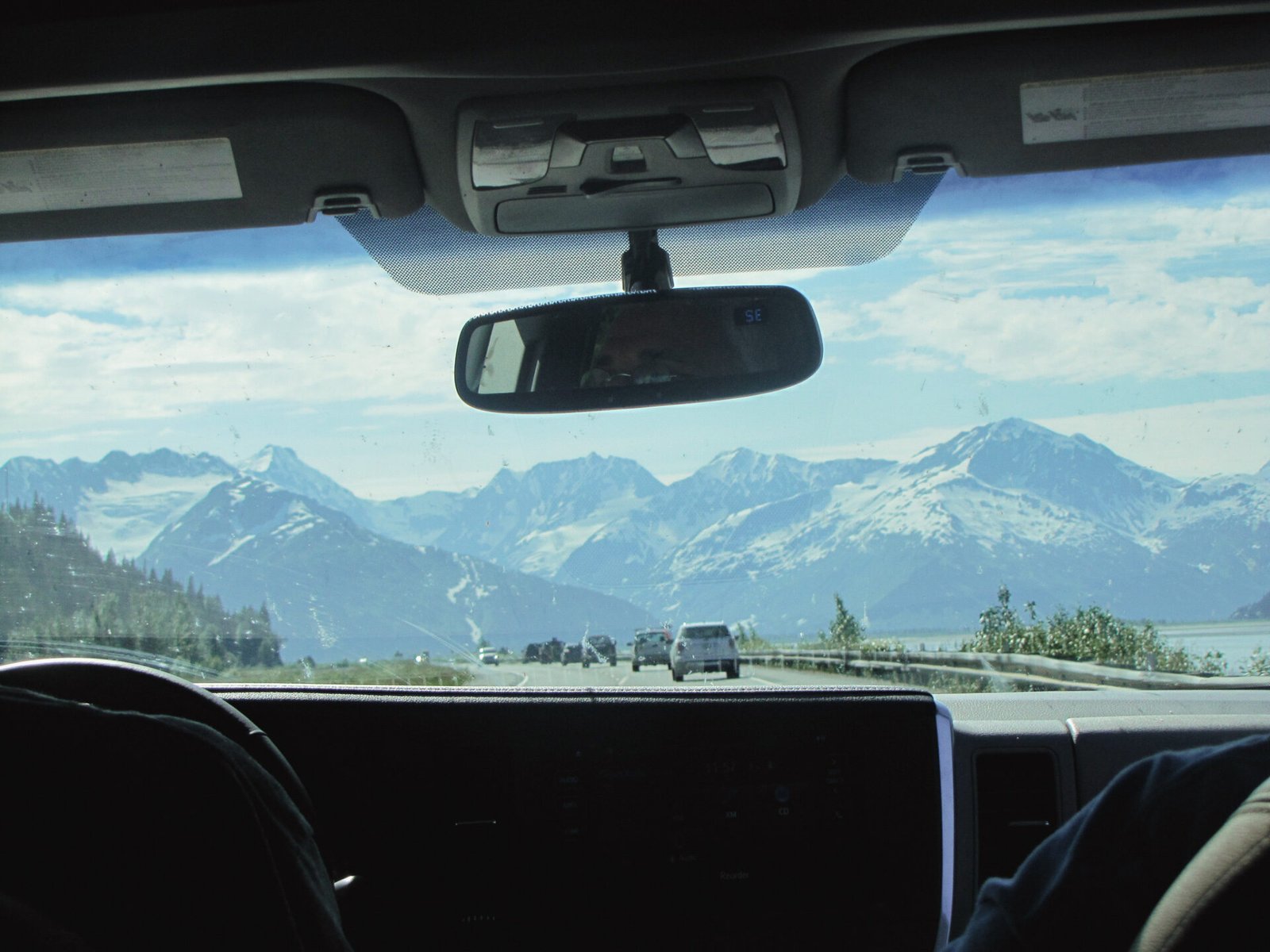
Turnagain Arm
The route starts in Anchorage.
Driving Route 1 south, a short while after leaving Anchorage, the scenery of Turnagain Arm comes into view.

Turnagain Arm is a branch of Cook Inlet. It is a long and narrow bay stretched over about 40 miles (64 km), with a stunning coastline of snow-capped mountains sloping to the shores.
Seward Highway, passing along the coastline of Turnagain Arm, provides several scenic overlooks where you can pull off the road and enjoy the incredible views.
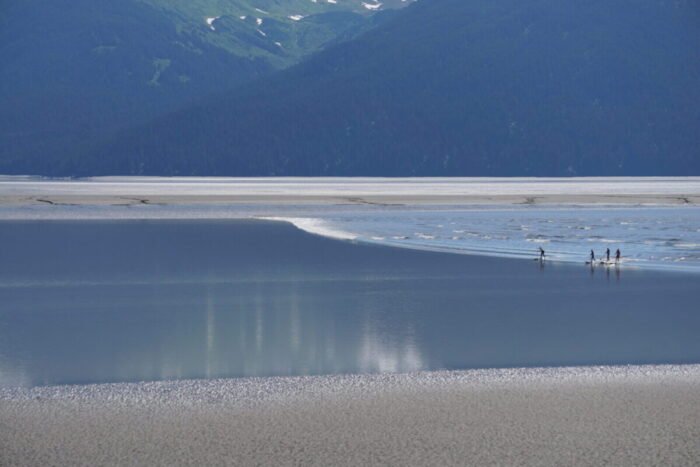
The arm is world-famous for the Alaska bore tide phenomenon.
This incredible natural wonder occurs when the leading edge of the incoming tide meets a powerful outgoing current. This collision forms a wave that surges upriver and into narrow bays.
Turnagain Arm holds the honor of being home to North America’s second-highest tides, with only those in Canada’s Bay of Fundy surpassing it.
Around new and full moons, the bore is more significant and it can even reach a height of 6-10 feet (1.5-3m)!
In the summer months, you can also enjoy watching experienced adventure seekers come to ride this massive wave on boards and kayaks!
Note!
The mudflats along Turnagain Arm can be treacherous, like quicksand! It is highly advised to stay off the shores and avoid walking on any of these mudflats. For your safety and protection, please enjoy viewing this coastal area from the designated viewpoints only.
Potter Marsh

The first stop on the way is Potter Marsh, which is a part of Anchorage Coastal Wildlife Refuge.
Potter Marsh is home to a variety of birds, including mallards, trumpeter swans, and bald eagles. Birdwatching is especially popular here in the summer months. The wildlife refuge is also a habitat for beavers, muskrats, and salmon running upstream in the late summertime, and if you are lucky, you may even see a moose!
Family-friendly boardwalks allow accessible wildlife viewing spots from a safe distance, without interfering with the wildlife. The marsh is an important part of the larger ecosystem and serves as a great place to explore nature and appreciate wildlife in its natural habitat.
Google Maps location
Estimated time: 1 hour
McHugh Creek Recreation Area
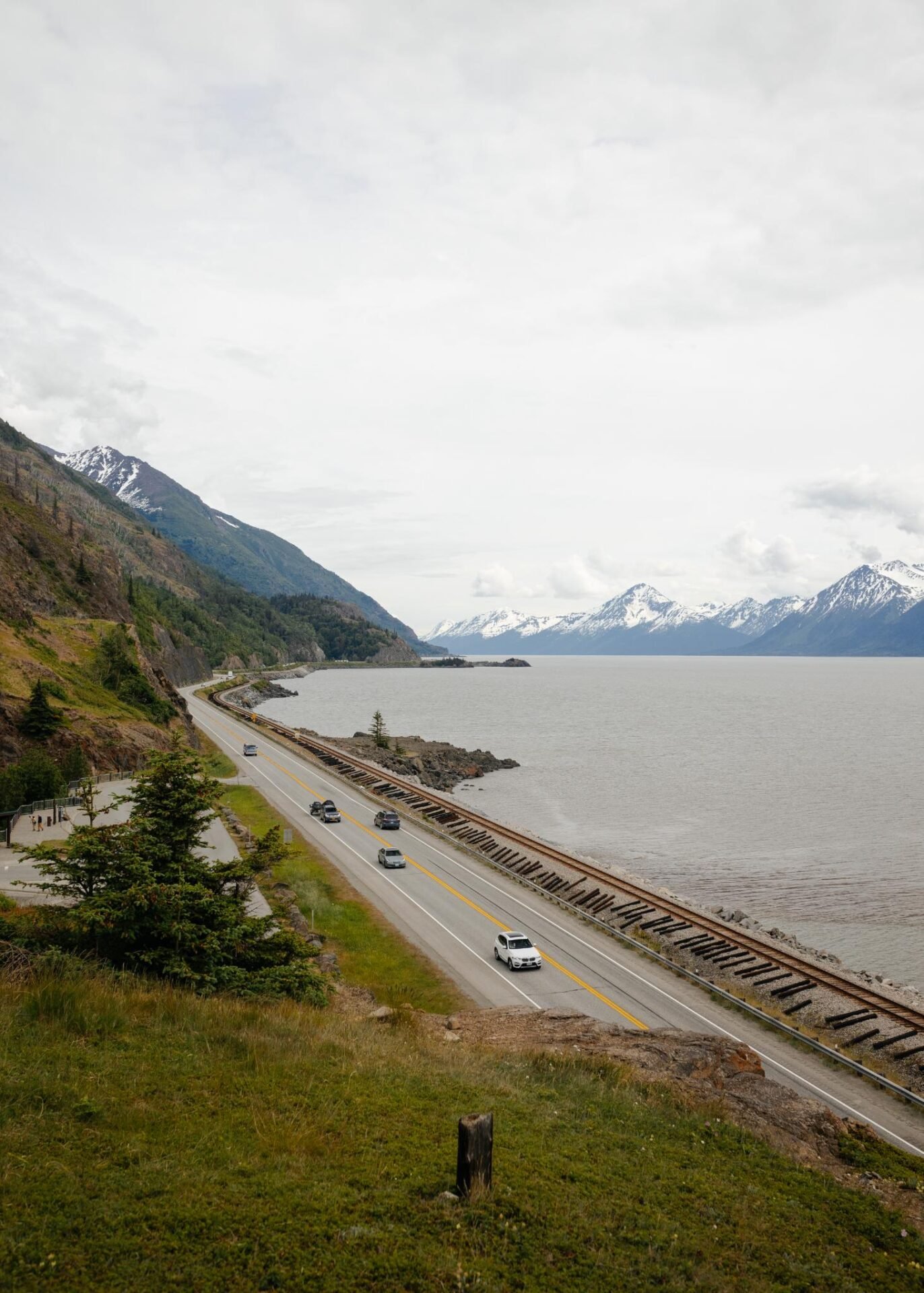
Going forward with the road, McHugh Creek Recreation Area is a scenic picnic area. With a small waterfall, hiking trails, picnic tables, and restrooms, it is a perfect place to stop.
You can appreciate stunning views of Turnagain Arm from the upper parking lot.
In order to get to the upper lot you can drive your car there, or you can park in the lower lot and climb up some stairs to the top lot.
Being part of Chugach state park, there is a fee of 5$ for parking and utilizing the facilities. Make sure to bring cash in advance.
Google Maps location
Estimated time: 15 minutes for taking in the views, more if you plan to hike.
Note!
When you’re exploring this area, it’s important to remember that this is a bear country. To stay safe while on a hike, be mindful of your surroundings and make plenty of noise! For extra safety measures, think about bringing along bear spray or some bear bells with you.
Beluga Point
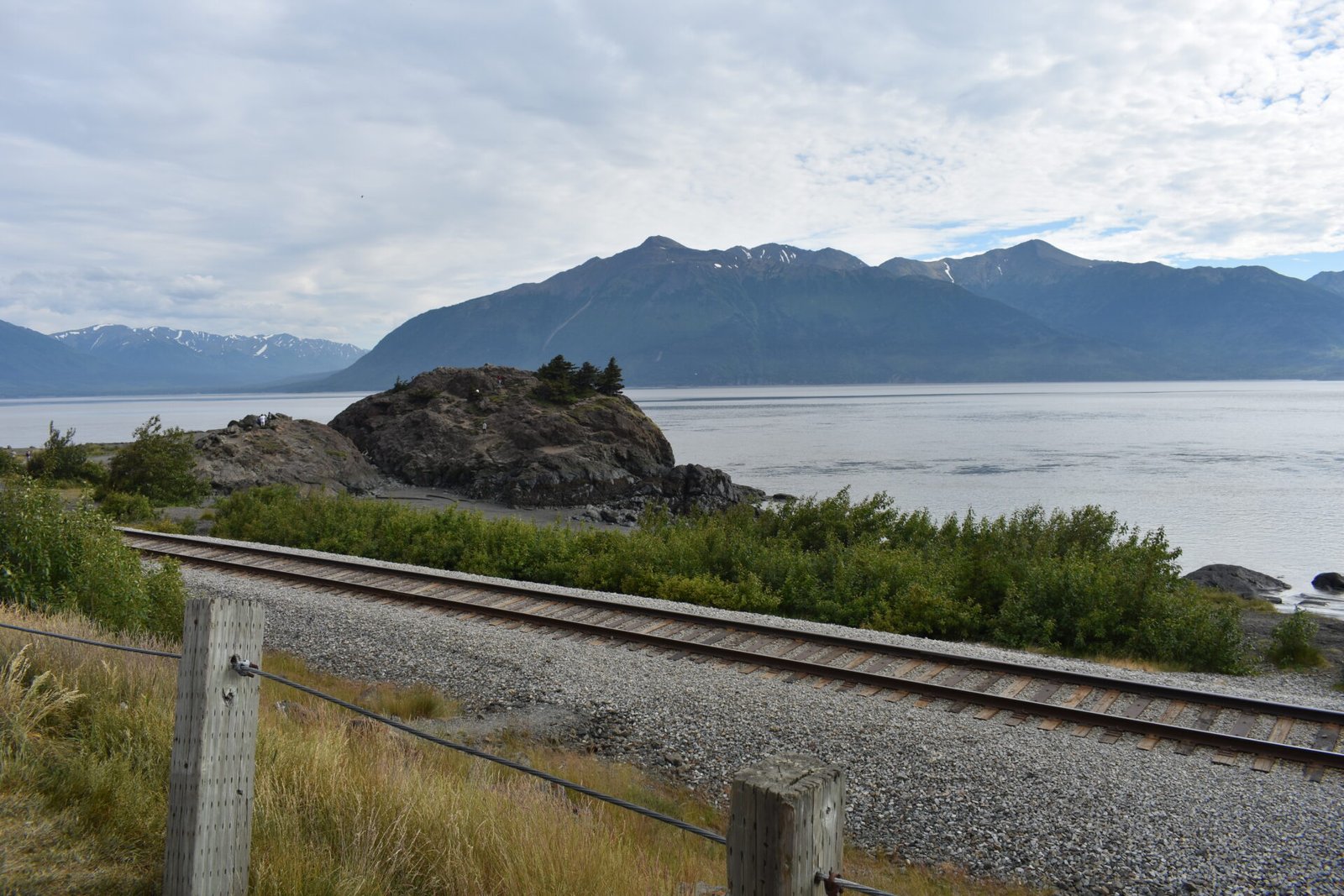
Beluga Point Lookout, 1.4 miles (2.25km) from McHugh Creek Recreation Area, is one of the most popular stops on Seward Highway. In addition to an excellent viewpoint over Turnagain Arm, this is a great place for spotting the tidal bore at the right time.
Between mid-July and August, if you are lucky you may spot beluga whales coming in with the tide to feed on the salmon!
Be sure to enjoy this phenomenon from a safe distance, walking on the mudflats is extremely dangerous!
Google Maps location
Estimated time: 15 minutes to enjoy the stunning view, more if beluga whales are present or if you are at the right time for the tidal bore.
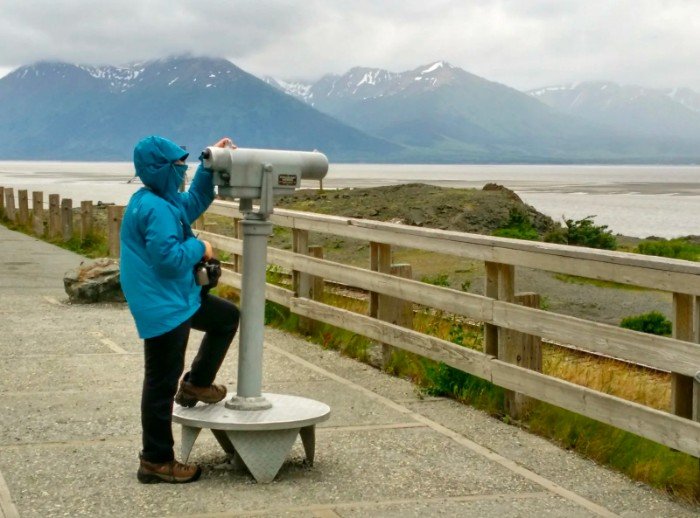
As you keep driving along the next 15 miles (24 km), there is a high chance of spotting dal sheep grazing in the mountains to your left.
Indian Valley Mine & Gifts
Indian Valley Mine is an excellent spot to explore. It is enjoyable and exciting for adults and kids alike.
The mine played a significant role in the early settling of Turnagain Arm.
Due to its historical significance, the main cabin and assay building have been designated as a National Historic Site. Today, you can visit both structures. The main cabin is now a gift shop while the assay building is home to a presentation of antique mining tools. For only $1 per person, you can explore this unique piece of history!
You can purchase dirt buckets of multiple sizes that contain a few small pieces of gold and precious stones, all the while learning how to pan for gold from the friendly and accommodating hosts.
Please see opening times and rates on Indian Valley Mine official website
Google Maps location
Estimated time: 1-2 hours
Tips:
If you are with young kids, bring change clothes. There is a chance they will get wet.
Bird Point
The next destination is Bird Point, which provides more breathtaking views of Turnagain Arm. Additionally, this spot is an ideal location for experiencing tidal bores – just remember to remain at a safe distance! The mudflats can be hazardous and should not be traversed on foot.
Google maps location
Estimated time: 15 minutes to enjoy the stunning view, more if you are at the right time for the tidal bore.
As you continue down the road, the majestic beauty of nature is all around.

When you get close to Girdwood, you will pass the Ghost Forest.
This forest is a reminder of the 1964 great Alaskan earthquake (magnitude of 9.2) when the ground elevation dropped dramatically below sea level and ocean saltwater flooded in, killing the trees.
This earthquake is the most powerful earthquake recorded in North American history and the second most powerful recorded in the world.

Girdwood
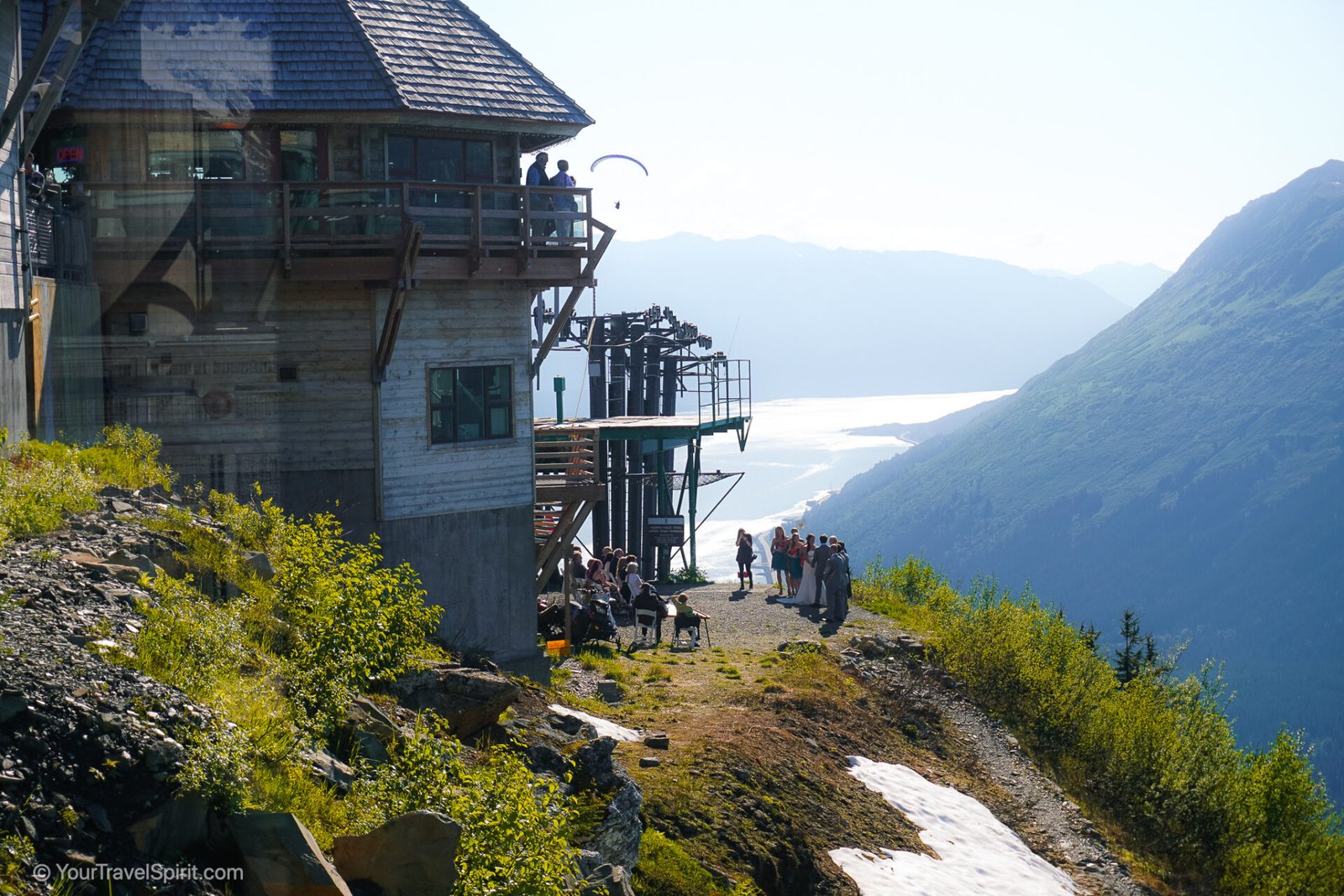
Girdwood is a peaceful resort town nestled between majestic Chugach mountains and surrounded by lush forests. It is a perfect destination for outdoor enthusiasts of all levels, offering amazing nature, many hiking trails, and multiple activities.
In the winter, it is a popular getaway for skiers and snowboarders.
Every year in July, the town hosts the well-known Forest Fair festival.
No matter what your budget is, you’ll find accommodations for every budget in this area. From campgrounds and RV parking to vacation rentals, bed-and-breakfasts, boutique inns, or even the luxurious Alyeska Resort. Additionally, there are several local restaurants and cafes to enjoy.
If you decide to split the journey of Seward Highway across several days, we highly recommend Girdwood as the place to spend the nights!
Alyeska Tram Ride is a great way to admire the Chugach Mountains.
During the tram ride, look down at the forest. If you are lucky, you may even spot a bear!
After a few minutes’ ride to the top of the mountain, you will be amazed by the snow-capped peaks surrounding you, together with the stunning sights of Turnagain Arm from above.
At the mountain summit, there is an observation deck, a restaurant, and hiking trails.
To get to the tram, park in the Alyeska Resort parking lot. The entrance to the tram is behind the hotel, to the left.
Google maps location
Estimated time: 2 hours
Here is our article about Girdwood and the tram ride.
Note!
When you’re exploring this area, it’s important to remember that this is a bear country. To stay safe while on a hike, be mindful of your surroundings and make plenty of noise! For extra safety measures, think about bringing along bear spray or some bear bells with you.
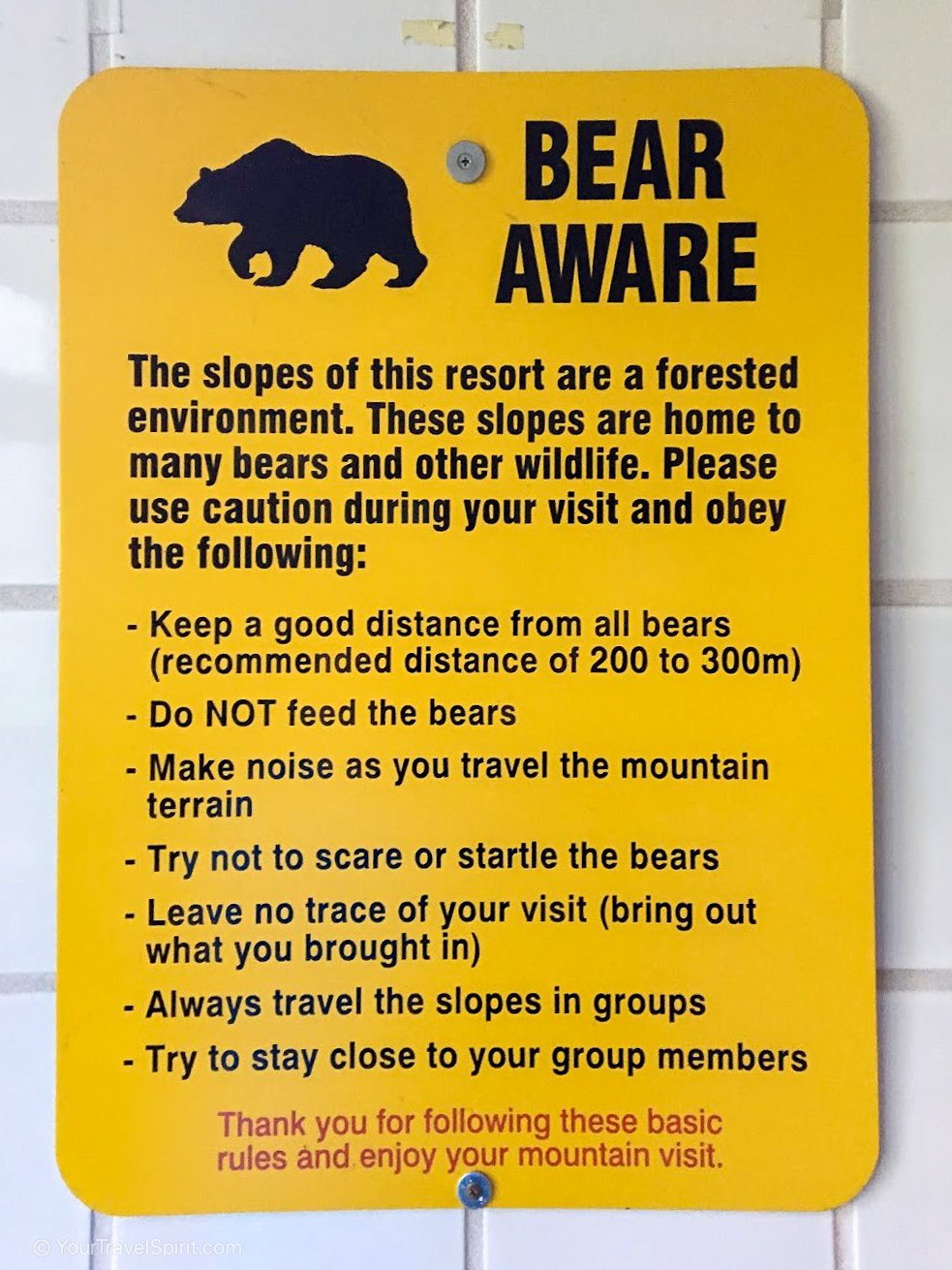
Tips:
Before leaving Girdwood, make sure you have enough fuel. This is the last chance to refuel until you reach either Whittier or Seward, depending on the direction you are going.
Towards the Tip of Turnagain Arm
Continue our journey southward, the Turnagain Arm and the surrounding mountains become increasingly stunning. The blue hues of the arm are majestic against the snow-capped Chugach mountain range, creating a breathtaking display of nature’s splendor.
As you approach the tip of Turnagain Arm, the landscape becomes even more dramatic. The views of the rugged coastline from this stretch of highway are truly one of a kind!
Alaska Wildlife Conservation Center
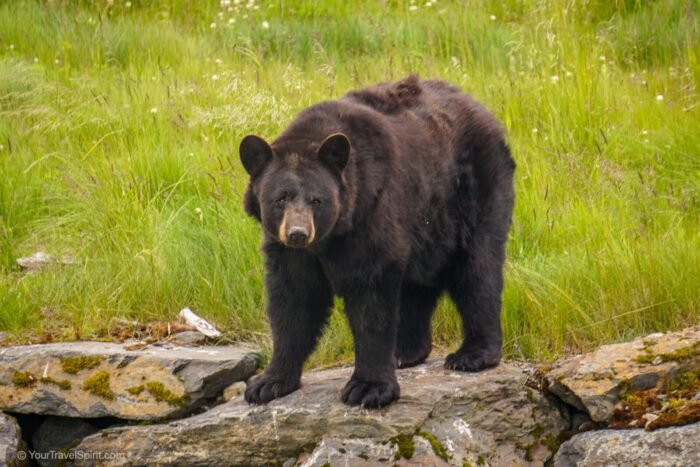
Our next destination is the Alaska Wildlife Conservation Center (AWCC). This wildlife sanctuary works to protect and preserve Alaskan wildlife, contributing through conservation, education, and research initiatives, as well as providing care for animals in need.
As you explore the AWCC, you’ll get to meet some of Alaska’s native wildlife. You can observe animals such as brown bears, black bears, bald eagles, caribou, moose, musk ox, and more in their natural habitat. AWCC offers guided tours and educational programming, providing visitors with a chance to learn more about the wildlife that inhabits Alaska’s natural landscape.
Google Maps location
Estimated time: 2 hours
For up-to-date information about operating hours and prices, please visit the official website.
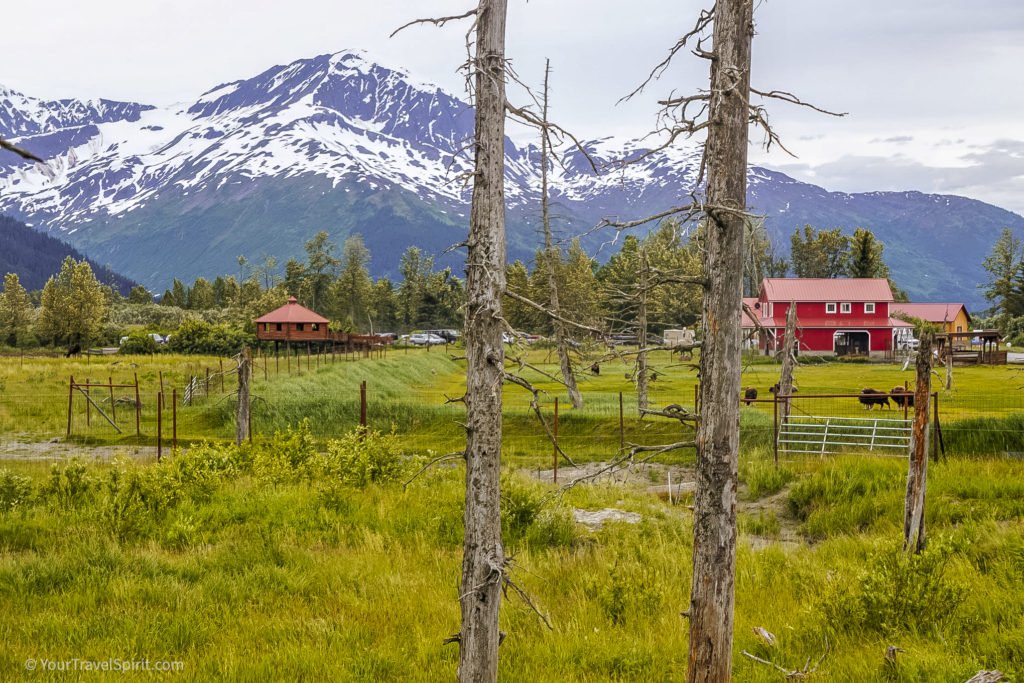
Portage Valley

After visiting AWCC, continue driving on the Seward Highway. A short drive will bring you to a fork in the road, where Portage Glacier Rd branches from the Seward Highway. Here, you can turn left and take a side trip to Portage Valley and Whittier or continue forward in the direction of Seward.
Google maps location
Please see our guide for Portage Valley and Whittier for more information about this area.
Upon ending your journey in Portage Valley, return to Seward Highway (Rt 1) and drive towards Seward.

A short while after, you will enter the Kenai Peninsula.
Turnagain Pass
The road winds through Turnagain Pass, which is the highest point on Seward Highway (988 feet / 301m).
Turnagain Pass Rest Area is a nice place to stop, with picnic tables, restrooms, and short hiking trails. It’s a great spot to take a break from the drive. The hiking trails here are easy enough for beginners, with most of them accessible from the parking lot. You can also enjoy the peace and quiet of the Chugach National Forest while you’re here. If you’re looking for something a bit more challenging, there are several trails that lead to the surrounding alpine areas. Just be sure you bring plenty of water and snacks, as some of these runs can take a few hours.
Estimated time: 15 minutes. More if you decide to take a hike.
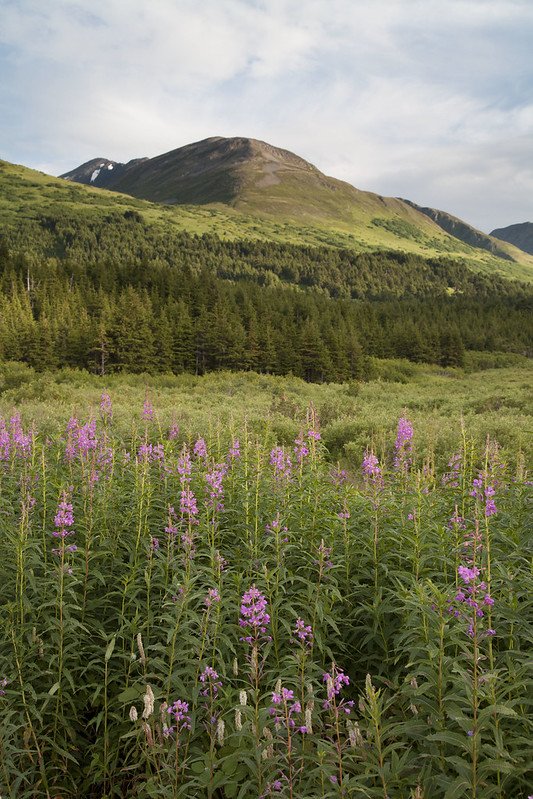

Canyon Creek
Canyon Creek Rest Area offers a remarkable opportunity to take a break and gain insight into the area’s history. With clean restrooms, informative historical signs, and an awe-inspiring lookout of the canyon valley below, it is truly worth visiting.

In 1895 gold was discovered beneath Canyon Creek Bridge. This sparked off an incredible stampede as more than 3000 gold seekers flocked in with hopes of getting rich. In order to provide for the influx of fortune hunters, several towns were hastily established around Turnagain Arm. In its early years, Canyon Creek yielded more gold than any other creek in the area.
Estimated time: 15 minutes
Google Maps location


If you would like even greater insight into the history, you may take a detour of 36 miles toward Hope. Hope is an iconic mining town of the Gold Rush era. It is a small town steeped in history and stories that have been passed down for generations. Today, Hope is a small community with unique local businesses and stunning beauty. The streets are lined with colorful log buildings ranging from the historic Hope Hotel to the Saloon and the general store. There is also a museum that documents the history of mining in Alaska.
The Pristine Wilderness of the Kenai Peninsula
Driving further will take you to the pristine wilderness of the Kenai Peninsula. This is a popular destination for outdoor lovers, offering magnificent hiking trails, cycling routes, fishing spots, rafting, kayaking, and many camping possibilities.
Together with the abundant wildlife and the breathtaking views of mountain ranges, glaciers, forests, and waterfalls that you can find here, it’s a perfect place to experience Alaskan nature at its finest.
Continue driving forward, and you will pass several lakes, with multiple pull-outs, where you can stop and enjoy the marvelous views.
Summit Lake
One of our favorites is Summit lake, surrounded by emerald-green mountains. This is a great place for a picnic, or for simply admiring the stunning landscape.
Summit lake lodge is also located here, and worth a stop for a bite to eat and some local souvenirs.
Please note the restaurant is open seasonally and not daily. Make sure to double-check the restaurant’s opening times if you plan on visiting.


At Sterling Highway Junction, you’ll depart Rt 1 and catch Rt 9 leading to Seward. Note that from then onward, the road is still called the Seward Highway.
Tern Lake
Right after the junction, you will reach Tern Lake, which is well-known for its crystal-clear reflections on bright days! You can stop at the Tern Lake pullover, for taking pictures or just admiring the scenery.
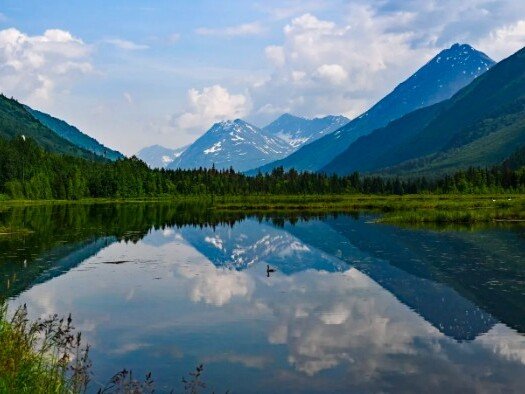

Moose Pass
Moose Pass is a small town along the road. You can stop at the Moose Drop-In Trading Post to buy up some unique souvenirs or try out their delicious fudge!
Kenai Lake

Kenai lake was formed from glacier water with ultra-fine silt, which gave it its majestic turquoise color. There are several pull-outs around the lake, where you can stop and admire the marvelous views.
Kenai Mountains – Turnagain Arm National Heritage Area Sign
The next few miles before reaching Seward will be filled with more spectacular views of the mountains on both sides of the highway.
About 12 miles before Seward, there is a particularly scenic roadside pull-out. A large plaque is standing there with the following quote printed upon it:
“There is one word of advice and caution to be given those intending to visit Alaska . . . If you are old, go by all means, but if you are young, wait. The scenery of Alaska is much grander than anything else of its kind in the world, and it is not wise to dull one’s capacity for enjoyment by seeing the finest first.”
Henry Gannett, Harriman Alaska Expedition, 1899
This is a great spot to get out, stretch your legs and treasure the beauty of your surroundings!

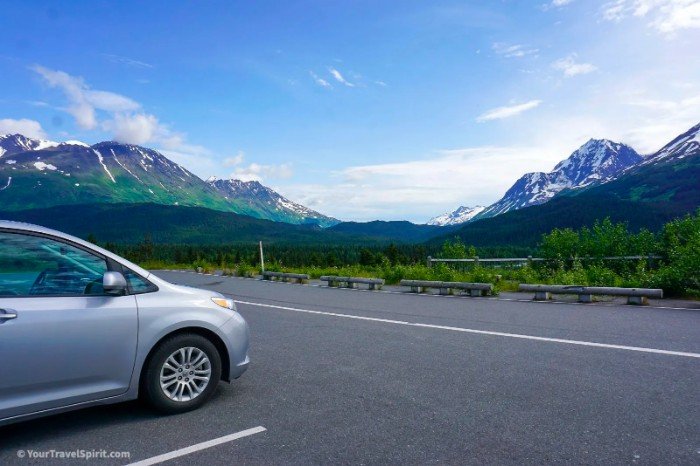
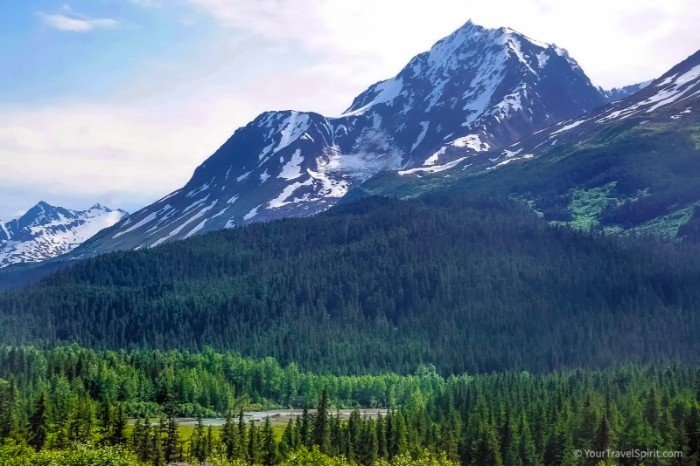
Seward
At last, the road ends up in scenic Seward.
Settled on the outskirts of Kenai Fjord National Park, Seward is an amazing destination in itself. It’s home to pristine beaches, historic landmarks, and plenty of activities for nature lovers.
Here, you can take a boat tour to the breathtaking glacier-filled fjord, and observe the abundant wildlife in their natural habitat, including whales, sea lions, and sea otters, and if you are lucky you can see some mountain goats or even a bear!
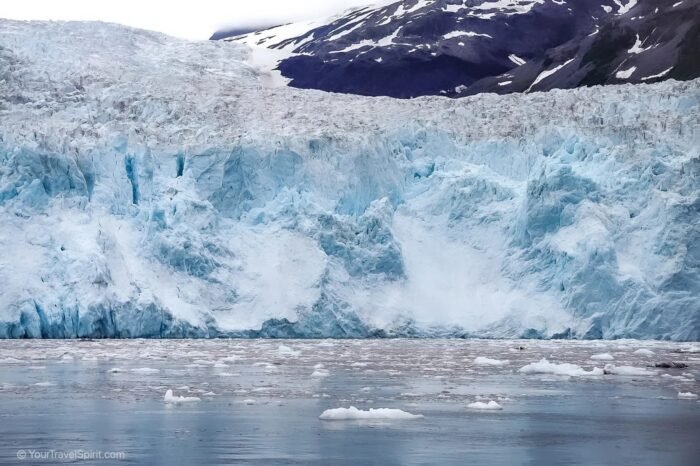
You can visit Exit glacier and explore its trails while admiring majestic natural views.
Exit glacier is the only glacier accessible by road in the entire Kenai Fjords National Park. For the past two centuries, Exit Glacier has steadily receded and lost a considerable mass of its former size. The retreat of this glacier is a warning sign of global climate change and serves as an important reminder to us all that we need to take action now in order to protect our environment.
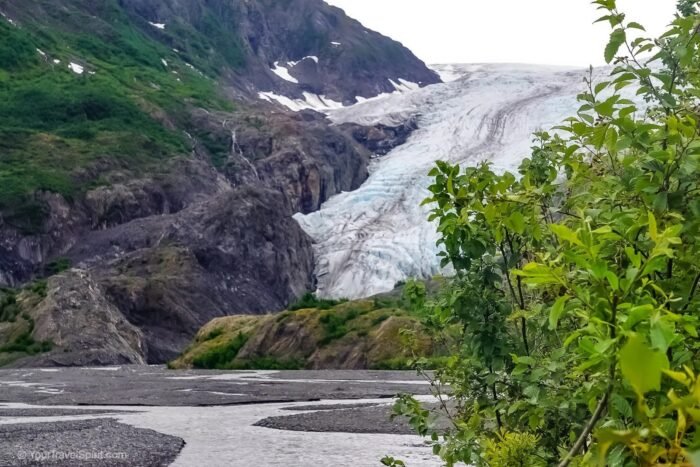
You can enjoy the beautiful harbor, where you can find nearby art galleries, restaurants, and bars that serve freshly caught seafood.
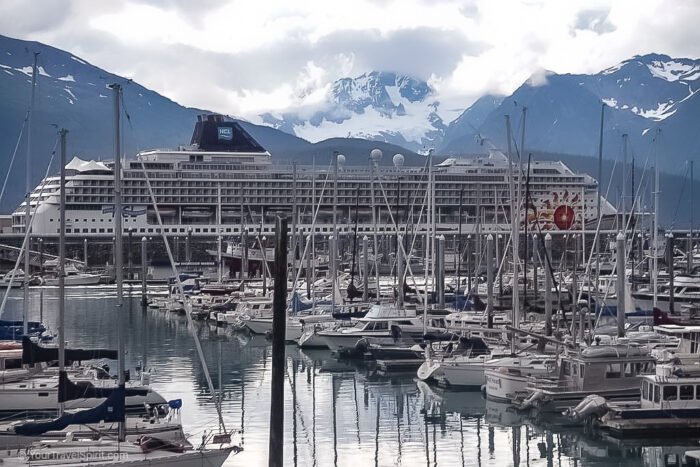
Seward is also home to the Alaska SeaLife Center, where you can learn all about the local marine life and get close to puffins, seals, sea lions, and salmon.
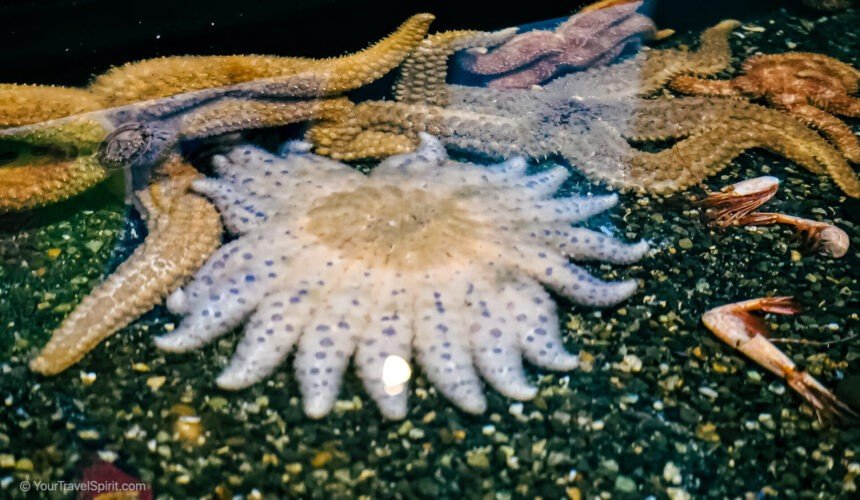
And much more!
You can find more information in our article about Seward.
Related Articles
For more information, please see:
Our article about Kenai Fjords National Park
Our article about the 7.5h Kenai Fjords National Park Cruise
Thank you for taking the time to read this! If you have any questions or would like to share your experience, please leave us a comment below.
You can save this guide for later on Pinterest by clicking on the photo.
Is Kenai Fjords National Park Worth Visiting?
Is Kenai Fjords National Park Worth Visiting? Absolutely yes. Kenai Fjords National Park is a stunning destination. The park features pristine wilderness with a magnificent mix of glaciers, fjords, wildlife, and a dramatic coastline. While this park offers a wide range of adventurous activities, it is also accessible for moderate travelers looking to experience the beauty of nature without challenging trips. This article will help you make the most of your visit to Kenai Fjords National Park in order to make your trip enjoyable and unforgettable.
Disclosure: Some of the links in this post may be affiliate links. If you decide to book through these particular links, we will receive a small commission from your purchase at no extra cost to you. We are truly grateful for your support!
- Where Is Kenai Fjords National Park?
- Geology and Climate of the park
- What Wildlife can you encounter in Kenai Fjords National Park?
- The Impact of Climate Change on the Park
- Boat Tours
- Whale Watching
- Kayaking
- Hiking Trails & Nature Center
- Harding Icefield Trail
- Hiking on the Glacier
- Scenic Flight
- Best Times to Visit
- Where to Stay when visiting Kenai Fjords National Park
- How to Get to kenai fjords national park
- BEAR SAFETY
- BOOK TOURS IN ADVANCE
- CELLphone SERVICE
- How to save money on tourist activities
- How to Avoid the Crowds
Kenai Fjords National Park Overview
Where Is Kenai Fjords National Park?
Kenai Fjords National Park is located on Alaska’s Kenai Peninsula, close to the town of Seward. To get to the park, you’ll need to travel to Seward first.
Seward is a a small yet touristy coastal town situated on the coast of Resurrection Bay, a deep, magnificent fjord often called “the gateway to the Kenai Fjords.”. You can find a well-established tourist infrastructure in Seward, including hotels, restaurants, shops, grocery stores, and gas stations. Therefore, it is the best homebase to explore the park from. Seward is also a popular cruise ship port.
Geology and Climate of the park
The forces of ice and water shape Kenai Fjords National Park’s unique geology:
From one direction, the Harding Icefield, one of the largest icefields in the United States, covers the high mountains around the park and feeds a system of glaciers flowing to the sea and creating stunning fjords along the coastline.
From the other direction, the powerful waves of the Gulf of Alaska crash against the rocky cliffs, constantly reshaping the land.
Kenai Fjords National Park area has a moderate climate with a significant amount of precipitation. Winters are chilly, snowy, and windy. Summers are mild and are relatively dry. The average temperatures vary from 30 degrees Fahrenheit (minus 1 degree Celsius) in winter to 65 degrees Fahrenheit (18 degrees Celsius) in summer.
What Wildlife can you encounter in Kenai Fjords National Park?
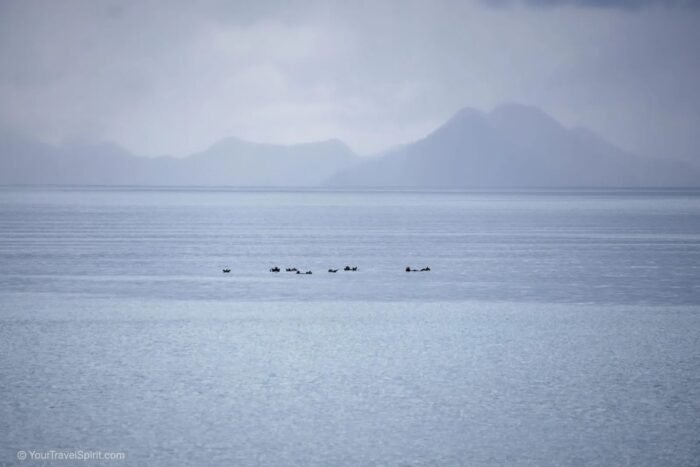
Here are some of the wildlife you might be able to spot in the park:
- Whales and Dolphins: Depending on the time of the year, you can encounter several whale species, including humpback whales, orcas, gray whales, fin whales, minke whales, and porpoises.
- Other marine mammals: harbor seals, steller sea lions, and sea otters.
- Black bears and grizzly bears
- Moose.
- Mountain goats.
- Puffins and seabirds nest along rocky cliffs.
- Porcupine.
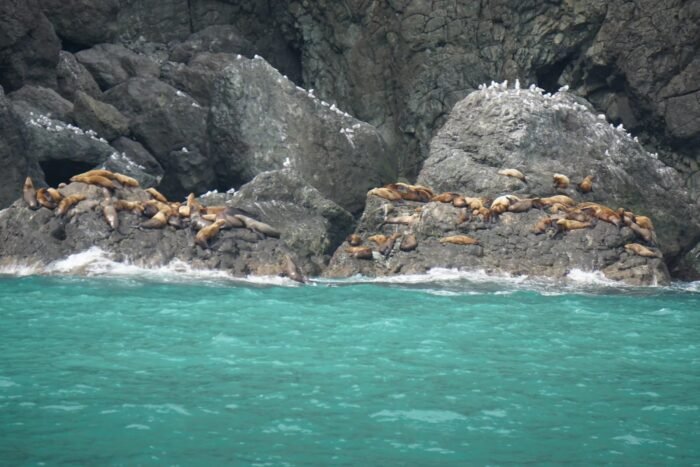
The Impact of Climate Change on the Park
Like many other national parks around the world, Kenai Fjords National Park is also impacted by the effects of climate change. The park’s glaciers, which have sculpted the park’s landscape for thousands of years, are experiencing significant retreats. As these glaciers shrink, they contribute to rising sea levels, which affect the coastal ecosystems. Exit Glacier is an extreme evidence of a retreating glacier within the park.
The park’s marine life is also at risk due to climate change. Ocean acidification, a consequence of increased carbon dioxide absorption, can degrade the shells and skeletons of marine organisms and impact the delicate balance of the marine food chain. Therefore, conservation efforts and more research are needed to understand and reduce the effects of climate change on the park’s natural beauty.
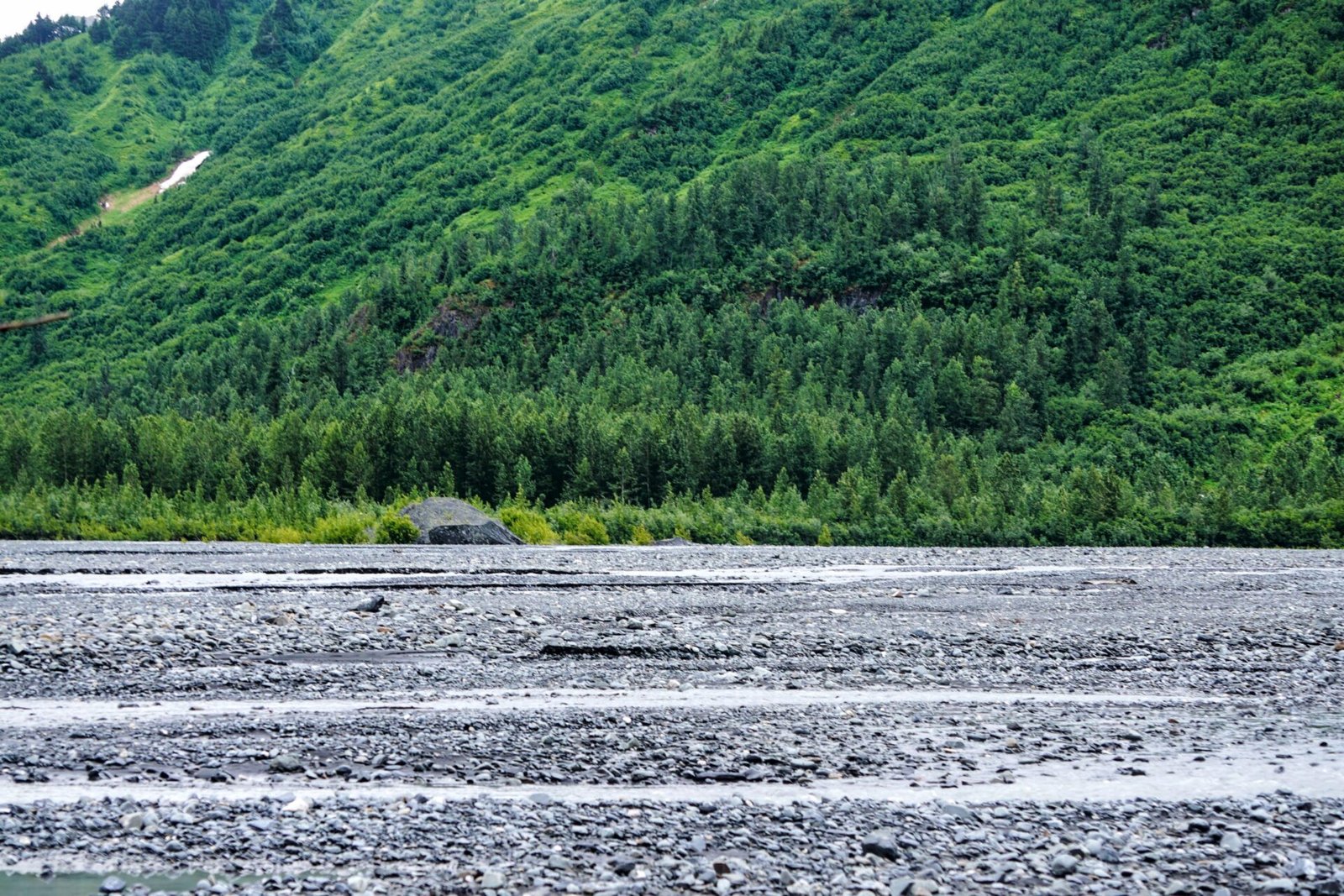
what to see & do in kenai fjords national park?
With an area of 1,046.9 square miles (or 2,711.3 square kilometers) and a diverse range of ecosystems, the park spans three main areas:
The coastline area – with rugged cliffs, deep fjords, lush forests, abundant marine wildlife, and tidewater glaciers. To fully appreciate the majestic beauty of this coastline, you must take a boat tour or a kayak excursion.
Exit Glacier area – an easily accessible glacier and an interesting visitor center. This area of the park is the most easily accessed, as it is where the park’s only road passes through.
Harding Icefield area – a mile-thick icefield that covers over 700 square miles (1813 square kilometers) and feeds dozens of glaciers. Harding Icefield is accessible by a strenuous hike or by helicopter.
The Coastline
Boat Tours
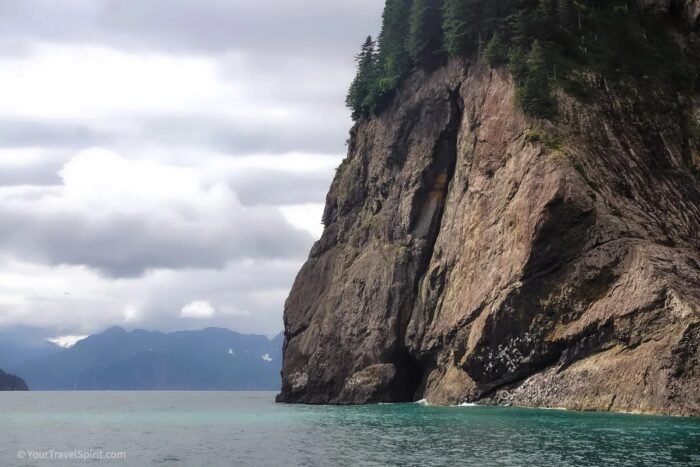
Taking a boat tour is a wonderful way to experience the magnificent coastline of Kenai Fjords National Park. This is also a fabulous way to spot the abundant marine life in the area.
If your time in the area is limited to only one activity, then this is the activity you should be doing!
Seward serves as the starting point for boat tours in Kenai Fjords National Park.
Seward resides on the coast of Resurrection Bay, and Kenai Fjords National Park is just southwest of the bay. In order to get to Kenai Fjords from Seward, you must sail through the sheltered waters of Resurrection Bay first.
Resurrection Bay offers magnificent views of lush emerald forests, rocky cliffs, and abundant wildlife. You can see glaciers hanging on the mountains far away. Furthermore, you can also see Bear Glacier — the larger glacier in the park — from a distance.
But there are no tidewater glaciers in the bay. You cannot get close to the glaciers, and you will not see a dramatic glacier calving if you stay in the Resurrection Bay area only.
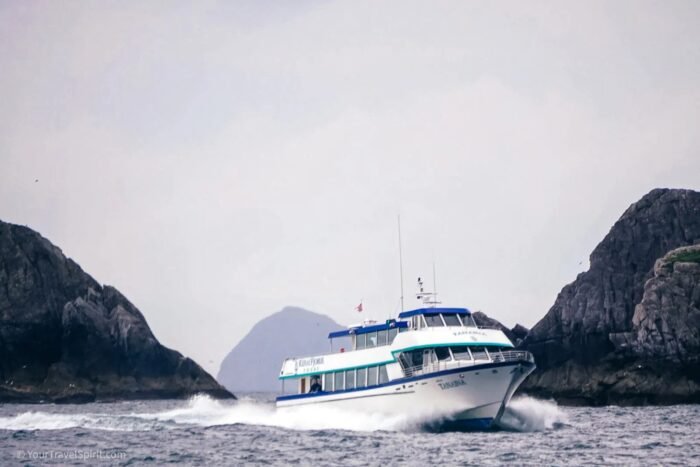
To experience the breathtaking beauty of a mighty tidewater glacier, you must go into Kenai Fjord National Park.
But – please note that when sailing out of Resurrection Bay to Kenai Fjords National Park, a short part of the journey goes through the open waters of the Gulf of Alaska, which might be rough.
In general, a cruise focusing on the bay is comparatively shorter and, therefore, costs less than a tour that goes into the national park (however, there are a few exceptions).
For more information about boat tours in Seward, tour operators, and how to choose the perfect boat tour for you, please see our post about the 7.5-Hour Kenai Fjord National Park cruise.
Whale Watching
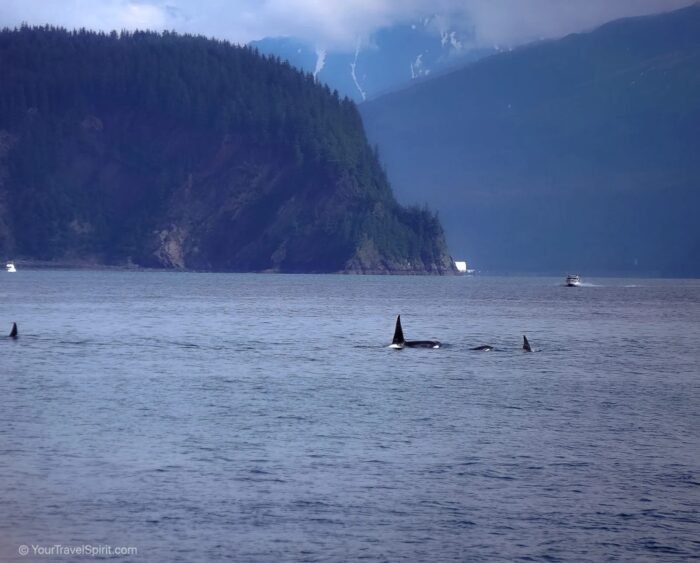
The area of Seward is a prime location for whale watching in Alaska! Every summer, a large number of migratory whales come to feed in the nutrient-rich waters near Seward. The best time for whale-watching tours is from May through September when the whales are most abundant.
Humpback whales – can be seen between April and October, with the best viewing time being between May and August.
Orcas (mostly resident Orcas) – can be seen year-round, with the best viewing time between May and June.
Grey whales – can be seen between March to May.
Fin whales – are rarely seen between May and September.
Both the Resurrection Bay and National Park cruises described above offer passengers the opportunity to spot whales.
Both Major Marine Tours and Kenai Fjord Tours offer specific spring cruises that focus on whale watching.
In addition to larger tour companies, the small-scale local operators also offer whale-watching experiences aboard smaller vessels. For example:
Northern Latitude Adventures
Seward Ocean Excursions
Kayaking

Seward is the perfect place for kayaking. You can paddle close to the shoreline, explore the hidden coves of the bay, and enjoy spectacular views of rugged cliffs, lush forests, and stunning scenery. You may be able to spot whales, sea lions, and other wildlife up close.
Going further into Kenai Fjords National Park, you can drift by a spectacular glacier surrounded by breathtaking icebergs.
Tour companies provide all necessary equipment such as life jackets and paddles. There are several options for tours, ranging from a few hours to multiple days.
If you’re an experienced kayaker, you can also rent a kayak and explore the bay independently.
Here are some examples of guided kayak tours:
Resurrection Bay Kayaking Adventure
Kayak and Hike to Historic WW2 Army Fort
Exit Glacier Area

Hiking Trails & Nature Center
Exit Glacier is the only glacier in Kenai Fjords National Park accessible by road. It’s located just outside Seward and can be reached by car or by a short shuttle ride.
This Glacier is evidence of glacier receding. It has retreated by about 2300 feet (700 m) in the last 13 years due to climate change. As you walk along the path toward the glacier, you will see markers illustrating where this glacier was in various years past. It is sad to see how fast the glacier was receding.
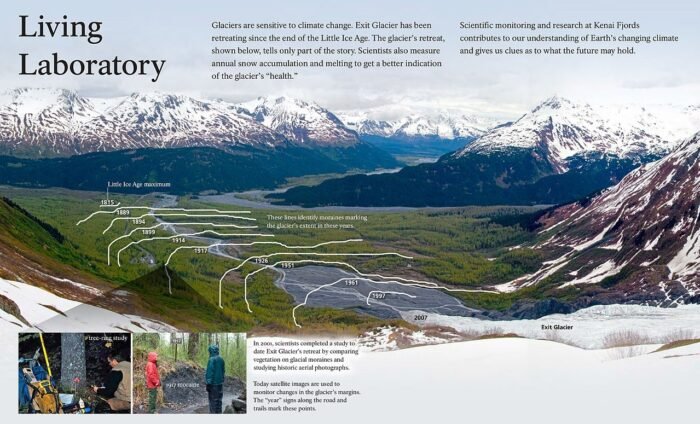
There are several trails of different lengths and difficulty levels, which lead to various viewpoints and up to the glacier’s edge:
Exit Glacier View Loop is an easy trail of 1 mile (1.6 km) that is wheelchair accessible. The trail takes you through a forest in an area that was once covered by the glacier. Along the trail, there are several viewpoints of the outwash plain and the glacier from a distance. It is a very popular trail, so you may encounter many people hiking along.
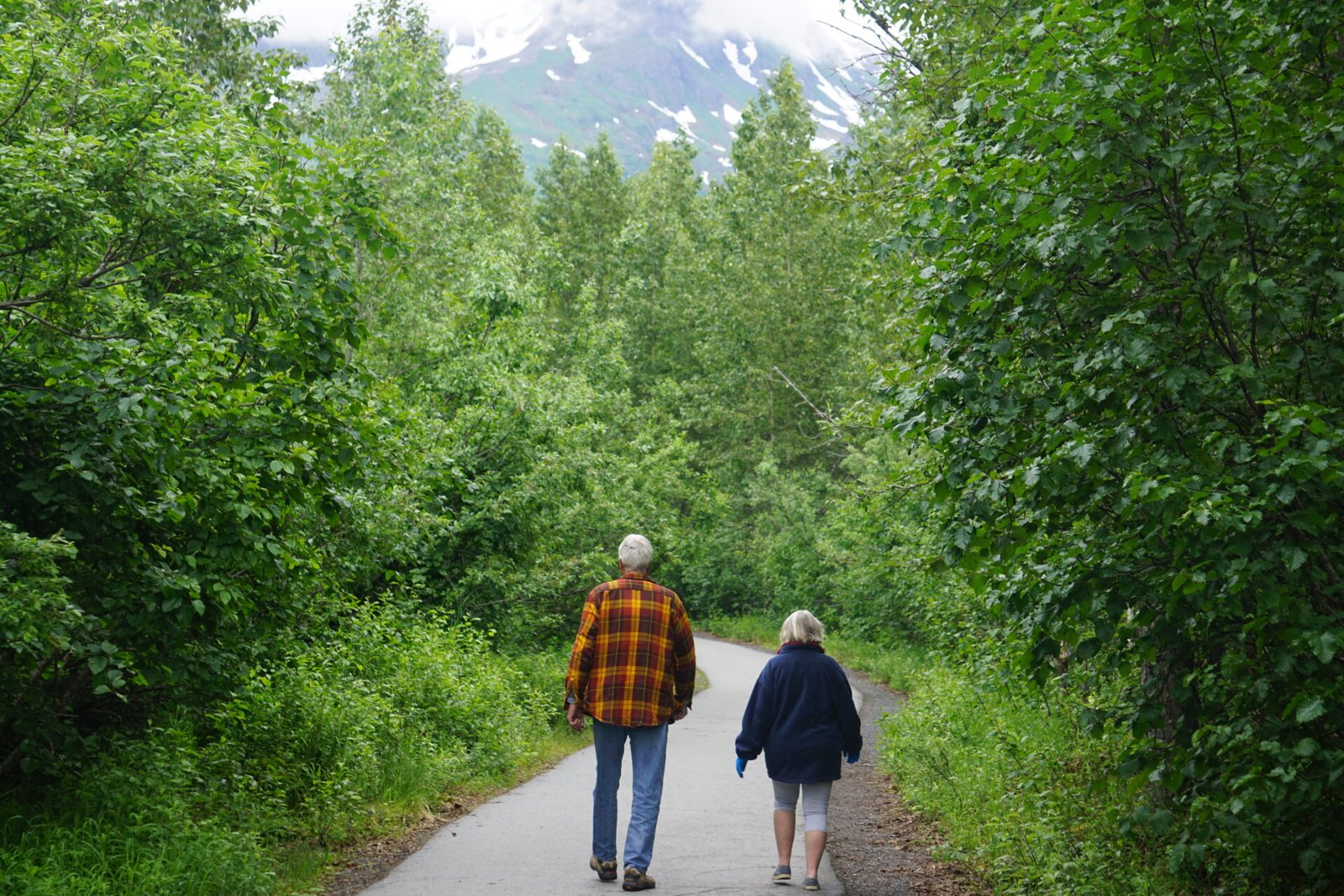
Exit Glacier Overlook Trail is considered an easy to moderate trail, with a length of 2.2 miles (3.54 km) and an elevation gain of 330 feet (100 m). This trail will take you closer to the glacier, with better views of it.
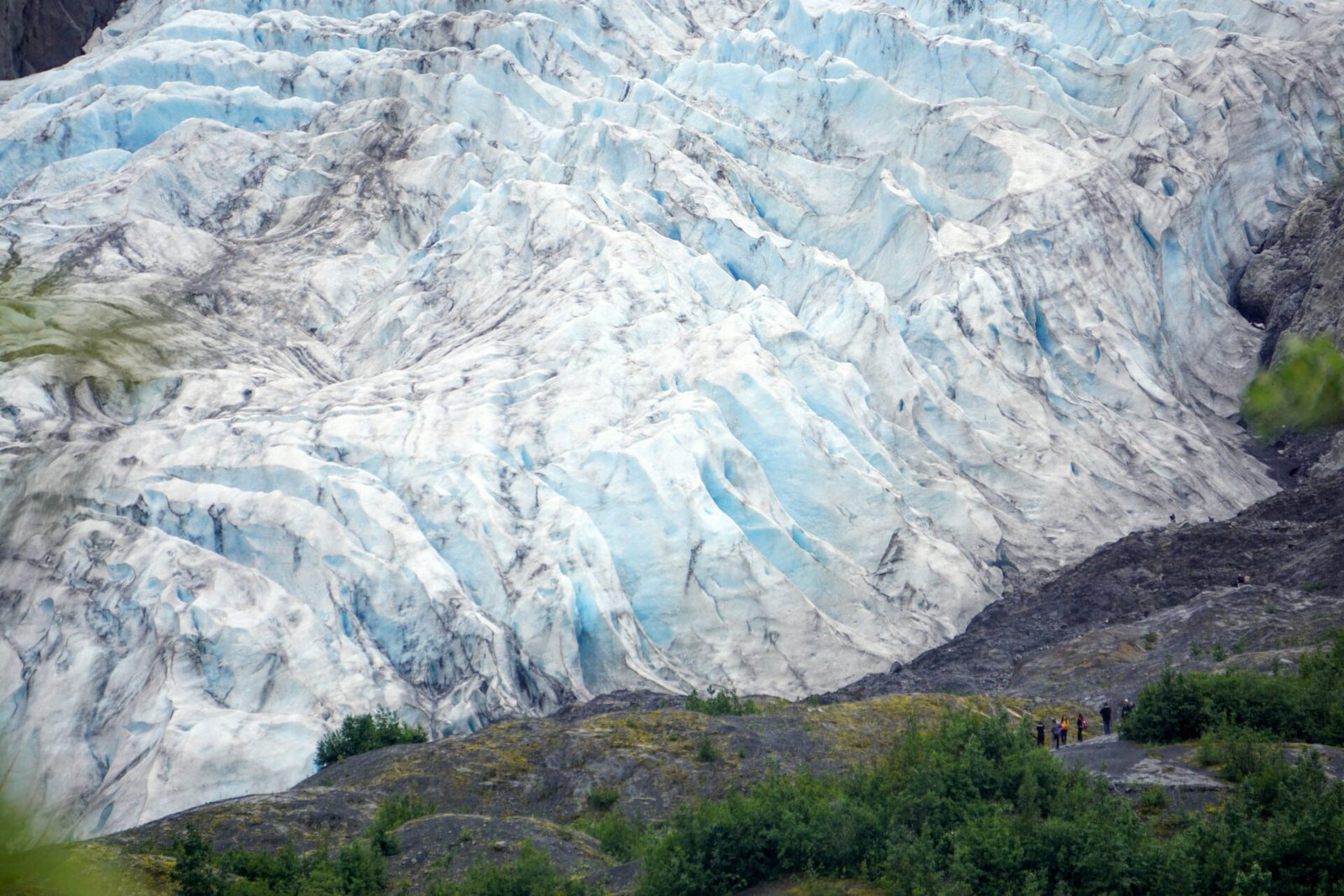
The nearby Exit Glacier Nature Center offers educational programs, guided hikes, and ranger-led activities. Here you can take a guided tour and learn about the area’s history, flora and fauna, and geological features.
If you have the time, we highly recommend that you visit this interesting glacier during your stay in Seward!
Note!
When you’re exploring this area, it’s important to remember that this is a bear country. To stay safe while on a hike, be aware of your surroundings and make noise to avoid surprising bears. For extra safety measures, think about bringing along bear spray or bear bells with you.
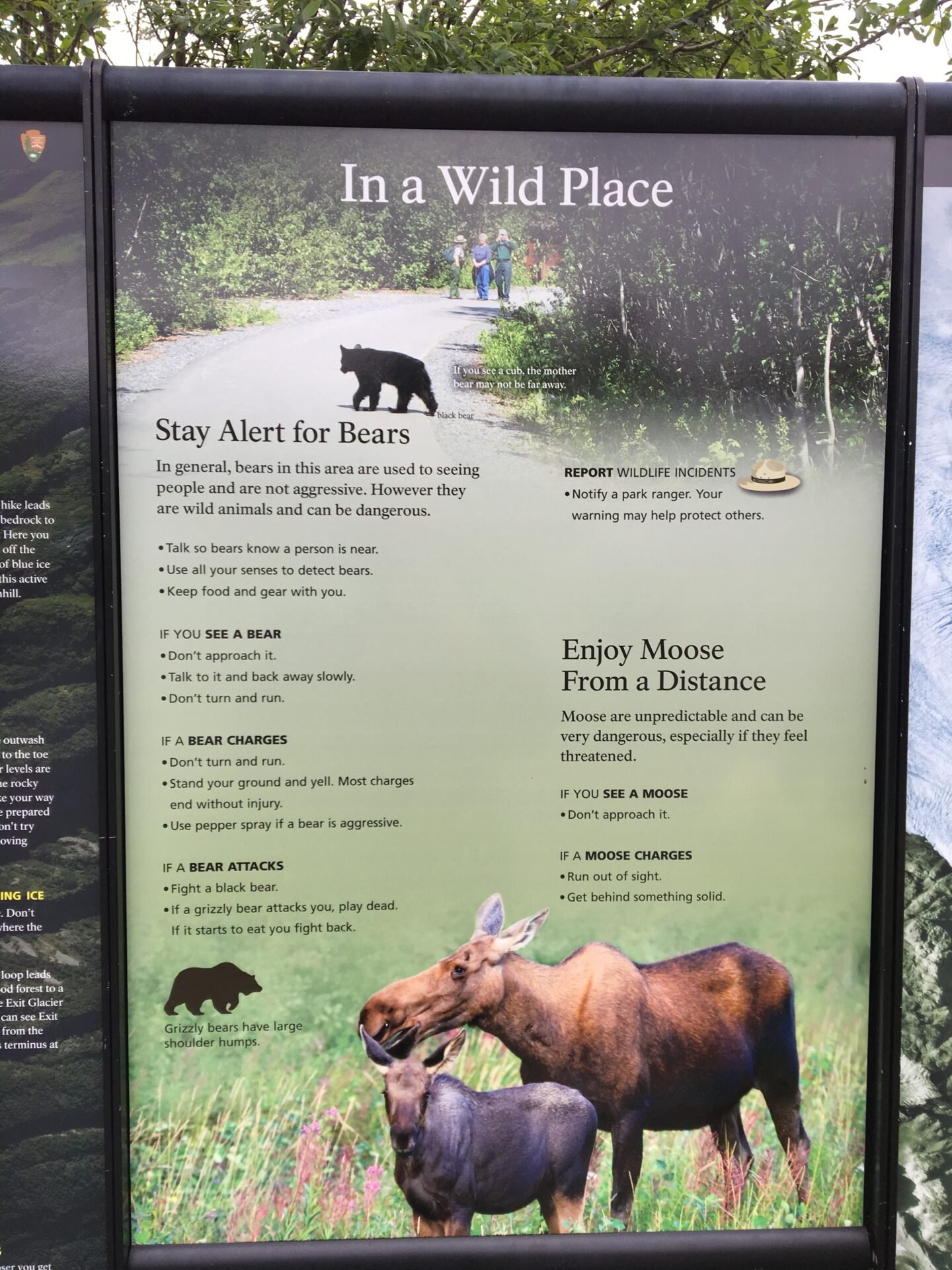
Harding Icefield Trail
For the more adventurous, the entry point to the strenuous Harding Icefield trail is also located in the Exit Glacier area.
Harding Icefield is the largest ice field contained entirely within the United States, covering over 700 square miles (1813 square km). It feeds over 30 glaciers from Kenai Fjords National Park to Prince William Sound.
This trail is the main way to access the icefield. The hike starts at Exit Glacier and offers stunning views of Exit Glacier, alpine meadows, wildflowers, and the surrounding mountains. Once you reach the top of the trail, you’ll be rewarded with spectacular panoramic views of the ice field.
The strenuous hike is an 8.2 mile (13.2 km) long round trip, with an elevation gain of 1,110 feet (338 m). It can take 6-8 hours to finish the journey, so make sure you come prepared if you plan on taking this hike.
For more information about the Harding Icefield trail please visit the official website.
Hiking on the Glacier
Hiking on the glacier itself can be very dangerous, do not attempt to do it on your own!
There are several companies that offer guided tours on the glacier, accompanied by a knowledgeable guide. You will be provided with the necessary equipment, such as helmets and crampons.
Here is an example of Ice Hiking Tour
The visitor center of the park is located in the small boat harbor of Seward. The center provides information and assistance from rangers about the area.
Other Activities
Kenai Fjords National Park Visitor Center
The visitor center of the park is located in the small boat harbor of Seward. The center provides information and assistance from rangers about the area.
Scenic Flight
A scenic flight is a great way to take in the breathtaking beauty of the park. From high above, you can see glaciers, mountains, and pristine wilderness stretching as far as the eye can see. It’s an incredible experience, but please note that it is not cheap.
Several scenic flight options are available, varying in duration and cost. Be sure to book ahead of time, as availability can be limited.
Here are some examples of scenic flights around Seward:
Glacier and Mountain Viewing Tour
Bear Glacier Scenic Flight
Extended Bear Glacier Scenic Flight
Grand View Tour
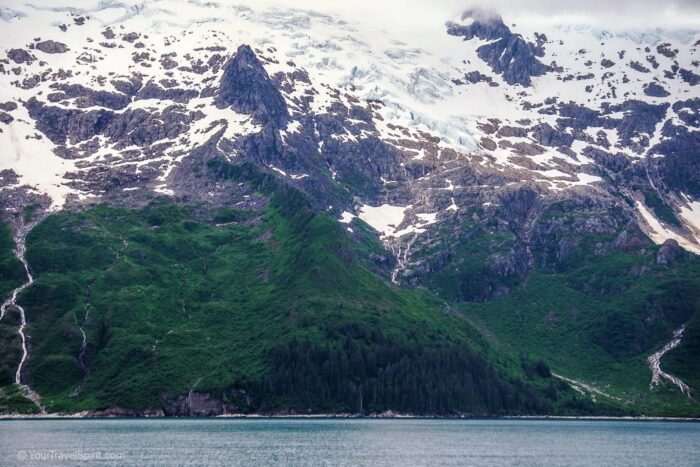
Practical Information for Visitors
Best Times to Visit
In the summer months, you can take advantage of Seward’s location and enjoy a variety of outdoor activities such as boat tours, kayaking, and hiking. Fishing is also popular in summer – you can find halibut and salmon in the local waters. In June and July, you can expect less rain than in August, although you should be prepared for rain at any time in Alaska.
A vacation in the shoulder seasons of spring and fall (mid-May and early September) can be a great way to avoid tourist crowds for a more relaxed experience. And on top of that, prices may even be more affordable then! Just make sure that all of your desired attractions are open during the planned times of your visit.
The 4th of July celebrations in Seward are one of Alaska’s biggest celebrations. The celebrations and the renowned annual Mt. Marathon Race attract thousands of visitors to Seward.
Tips:
• If you plan to visit Seward around the 4th of July, you should book accommodations as early as possible.
• If you prefer to stay away from crowded places, do not get near Seward at that time.
Where to Stay when visiting Kenai Fjords National Park
The town of Seward serves as a convenient base for exploring Kenai Fjords National Park. Seward offers a range of accommodations, dining options, shops, and other amenities.
Please see our article about Seward for more information.
Unique Accommodations
Kenai Fjords Glacier Lodge is the only lodge within the park boundaries. This lodge offers luxury cabins, gourmet meals, and activities like sea kayaking and hiking in nature.
Kenai Lodge Wilderness Lodge is located on Fox Islands, technically not within the park but in Resurrection Bay. This wilderness lodge offers a secluded and serene experience surrounded by the stunning beauty of nature.
Orca Island Cabins offers unique yurt accommodations on a private island in Resurrection Bay.
How to Get to kenai fjords national park
Kenai Fjords National Park is one of the three national parks accessible by road in Alaska. (the other parks are Denali and Wrangell-St. Elias).
The park is located near the town of Seward, which can be easily reached from Anchorage by road or rail.
Please See more details about getting to Seward in our article about Seward.
The coastline area of the park is accessible via a boat only.
Exit Glacier is the only part of the park that is accessible by road. It’s located just outside Seward and can be reached by car or by a short shuttle ride from Seward.
Exit Glacier Nature Center is the starting point of all the trails in the area (including the Harding Icefield trail).
There is a small parking lot near the Nature Center, which can fill up quickly on busy summer days. Try to arrive in the morning or the afternoon if possible.
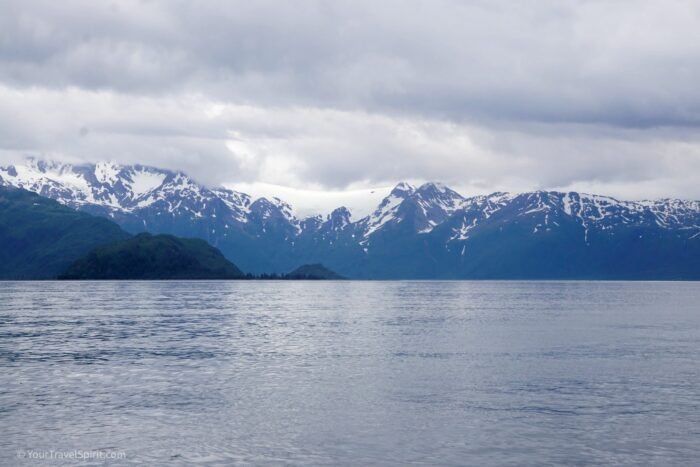
Tips for Visiting Kenai Fjords National Park
BEAR SAFETY
When you’re exploring this area, it’s important to remember that this is a bear country. To stay safe while on a hike, be aware of your surroundings and make noise to avoid surprising bears. For extra safety measures, think about bringing along bear spray or bear bells with you.
BOOK TOURS IN ADVANCE
During the summer, the boat tours are very popular and can fill up quickly. It is recommended to book your spot ahead!
If you plan to stay in Seward for several days, make sure to arrange the most important tour, such as a scenic flight or boat tour, for the first full day of your stay. This way, if the weather does not cooperate, you may be able to reschedule that tour for another day of your visit.
CELLphone SERVICE
It’s important to note that the park has limited cell service, especially in remote areas. Be prepared for intermittent or no cellular reception during your visit. It is advisable to download Google Maps, AllTrails Maps, or any other offline navigation tool in advance.
How to save money on tourist activities
• When making reservations on black Friday, cyber Monday, and on US national holidays, you may get significant discounts for many of the attractions.
- Both Major Marine Tours and Kenai Fjord Tours offer packages that combine accommodations and a discounted boat tour. Major Marine Tours also offers several deals, like early booker deal, repeat customer discount etc.
• You may find interesting deals and discounts on the Alaska coupon books/apps:
Toursaver Coupon Book
Northern Lights Coupon Book
How to Avoid the Crowds
Kenai Fjords National Park is a very popular park and for a good reason. While the park does get busy during peak season, there are ways to experience the beauty of Kenai Fjords with fewer crowds:
- Visiting in the shoulder seasons (mid-May and early September) means smaller crowds and potentially better prices.
- Many visitors focus on the big boat tours that either explore Resurrection Bay, or go to the most popular glaciers (Aialic or Hologate Glaciers). Choosing the longest cruised to Northwestern Fjord can offer a more peaceful experience. Another option is taking a small boat private tour with a small er, local operators (which is more pricey). For more information about boat tours in Seward, tour operators, and how to choose the perfect boat tour for you, please see our post about the 7.5-Hour Kenai Fjord National Park cruise.
Overall, Kenai Fjords National Park is definitely a tourist destination, but its size and variety of activities allow you to find a level of “touristy” that suits your preferences.
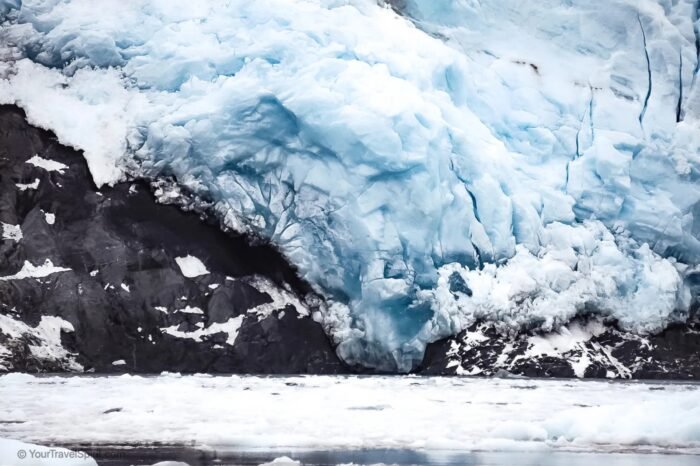
Conclusion
In conclusion, visiting Kenai Fjords National Park can be an exciting and memorable experience. However, it’s crucial to prioritize safety while exploring this bear country. Remember to stay aware of your surroundings, make noise to avoid surprising bears, and consider bringing bear spray or bear bells for extra precaution. Additionally, booking tours in advance is highly recommended, especially during the summer when they fill up quickly. Be prepared for limited cell phone service in remote areas and download offline navigation tools prior to your visit. Lastly, if you’re looking to save money on tourist activities, take advantage of special discounts on holidays and consider booking package deals that combine accommodations and boat tours. Don’t forget to check out the Alaska coupon books/apps for additional savings opportunities.
With proper planning and precautions, you can make the most of your time at Kenai Fjords National Park without breaking the bank. So pack your bags, embrace the wilderness, and get ready for an unforgettable adventure in this stunning Alaskan gem.
Related Articles
For more information, please see:
Our article about the 7.5h Kenai Fjords National Park Cruise
You can save this guide for later on Pinterest by clicking on the photo below.
Thank you for taking the time to read this! If you have any questions or would like to share your experience, please leave us a comment below.
Where to See Cherry Blossom In and near Amsterdam (for 2024)
The blooming of the cherry trees is a symbol of happiness, as it marks the beginning of Spring. The beautiful sight of thousands of pink petals against the blue sky is one of nature’s prettiest spectacles.
Cherry blossom season in the Netherlands is typically from late March to mid-April. The peak of the blooming usually occurs around the beginning of April and lasts for up to 2 weeks, depending on the weather.During this time, more than 11000 cherry trees will come alive with beautiful pink and white petals around Amsterdam streets, parks, and gardens, and it’s easy to find a spot where you can enjoy this beauty.
If you’re looking to add a little bit of springtime magic to your trip to Amsterdam, be sure to check out this post for the best locations to see cherry blossoms in and around Amsterdam.
Disclosure: Some of the links in this post may be affiliate links. If you decide to book through these particular links, we will receive a small commission from your purchase at no extra cost to you. We are truly grateful for your support!
Top Destination - Bloesempark at Amsterdamse Bos (Cherry Blossom Park at the Amsterdam Forest)
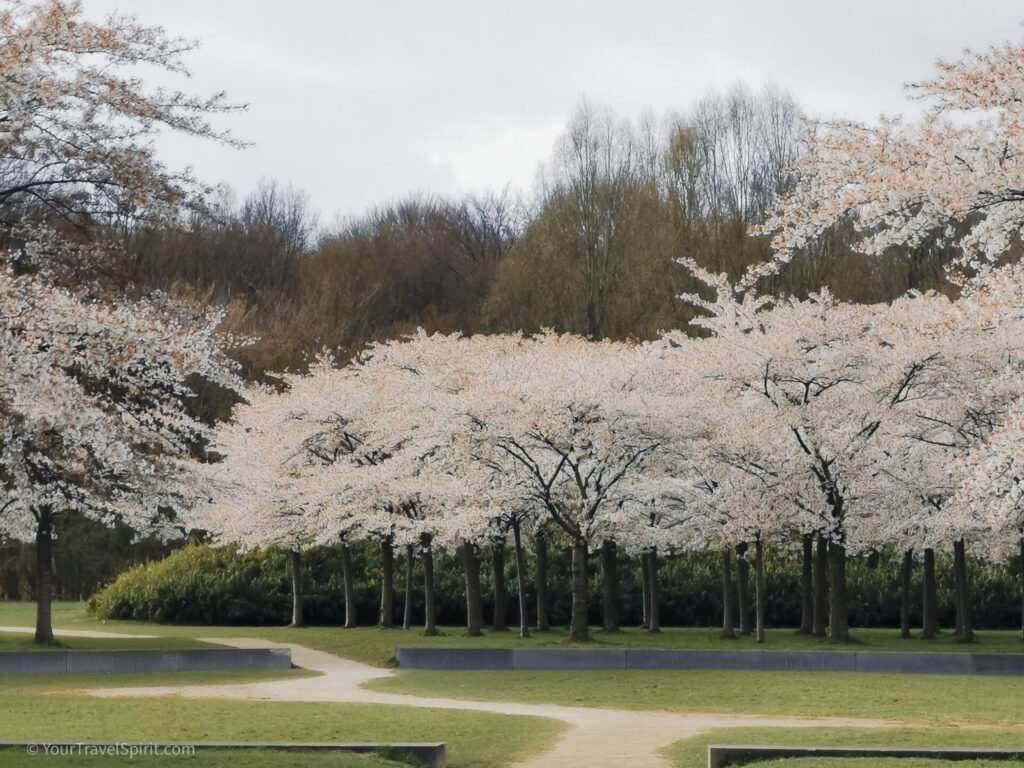
The Bloesempark at Amsterdamse Bos, also known as the Cherry Blossom Park, is a must-visit destination during cherry blossom season in Amsterdam. It is the most well-known place to view the cherry blossoms in the Netherlands, and thus the most visited.The park offers spectacular views of the blossoming cherry trees in all their glory. During the peak of the blooming period, the park transforms into a wonderland of pink and white petals, attracting visitors from all over the country.
This beautiful park features around 400 cherry trees, a gift from the Japanese Women’s Club to the city of Amsterdam in 2000.
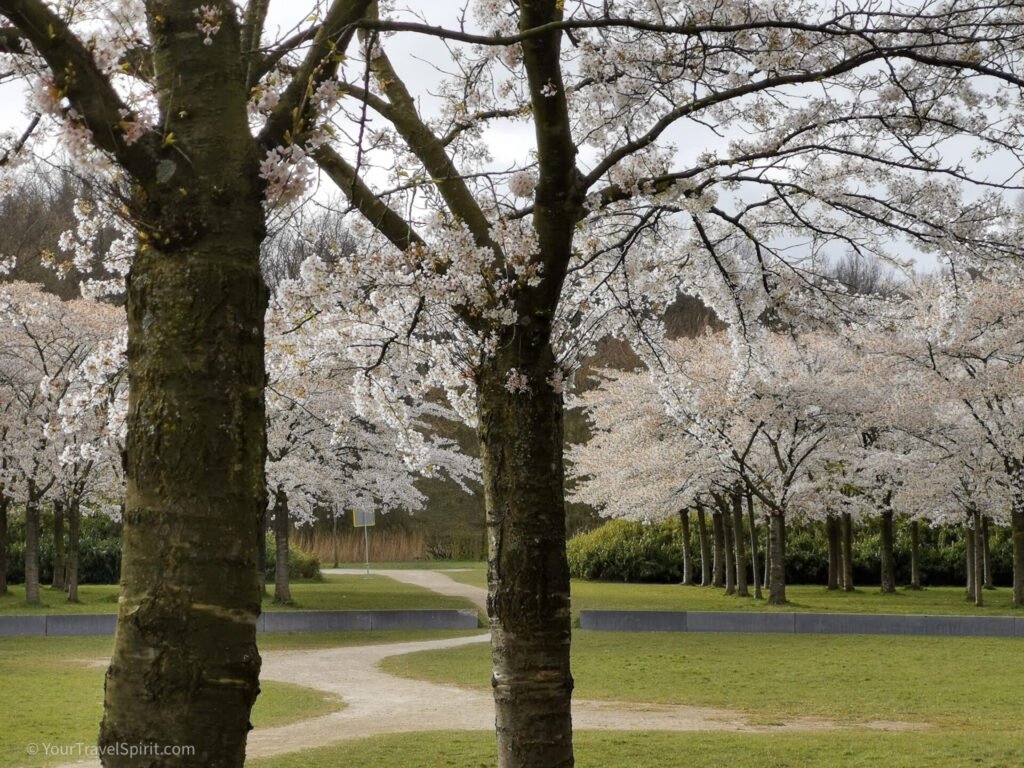
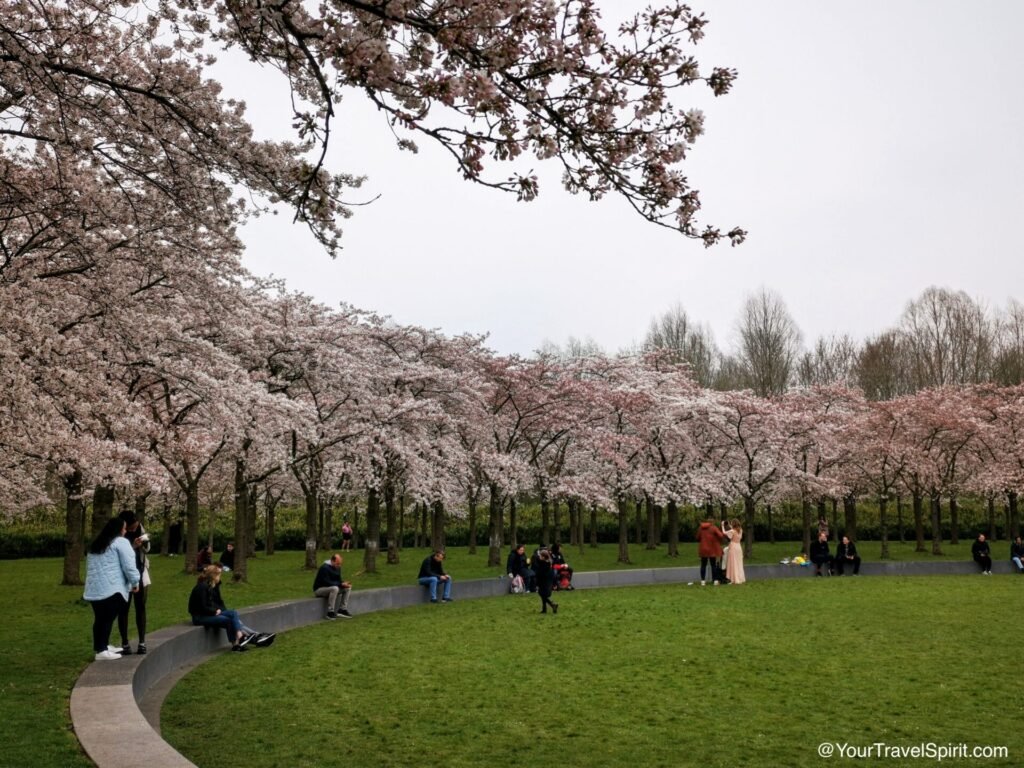
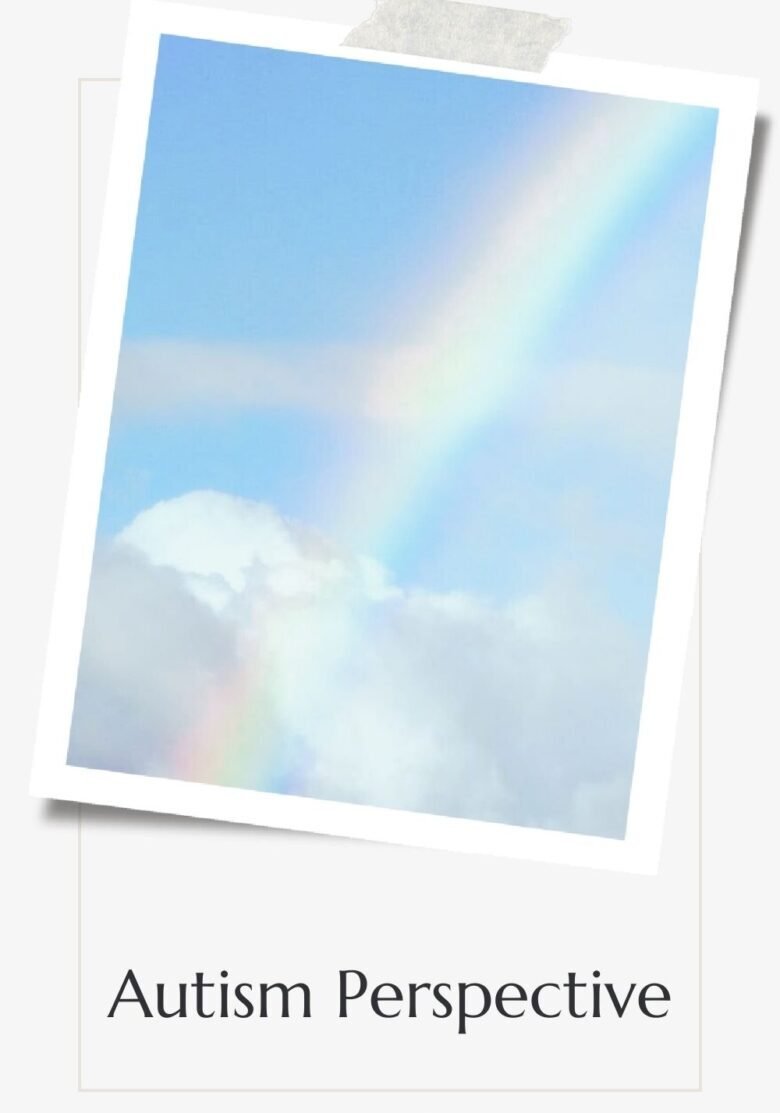
Please note that this is a very popular place to view the cherry blossom. The park can become very crowded during the blossom peak time, especially on weekends. If possible, try to arrive on weekdays, preferably in the mornings.
Please note that this is a very popular place to view the cherry blossom. The park can become very crowded during the blossom peak time, especially on weekends. If possible, try to arrive on weekdays, preferably in the mornings.
Hanami Matsuri (Cherry Blossom Viewing Festival)
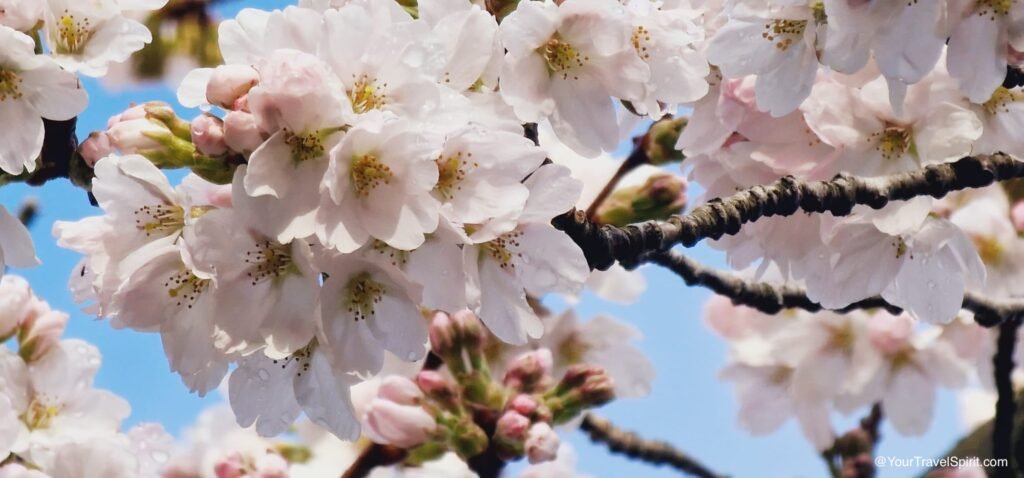
The Japanese Hanami Matsuri is an annual festival that praises new beginnings and the joy that comes with the arrival of spring. It is also a time for reflection and appreciation of nature’s beauty. The festival is celebrated by having a picnic under the blooming Cherry trees.
In the Netherlands, the festival is held at Bloesempark. It is not an organized festival, but more of a friend/family gathering event, in which many locals gather to enjoy the stunning views of the cherry blossom and to have picnics under the trees. Unfortunately, there is no official date for this festival, as it depends on the trees’ blooming time.
As some of the visitors are dressed in traditional Japanese customs, it is a great opportunity to experience a piece of Japanese culture while also enjoying the beautiful sights of nature.
Practical Information for Visiting the Cherry Blossom Park
- The park is a part of Amsterdam forest, and it is open to the public all year long (and not only during the cherry blossom season).
- There is no entrance fee, no tickets and no reservations can be made.
- The park is accessible for wheelchairs and strollers.
- There are no restrooms in the park.
- There are no restaurants in the park. However, there are several restaurants in the nearby neighborhood of Amstelveen.
- During the peak season, picnics are not allowed on weekends in the park.
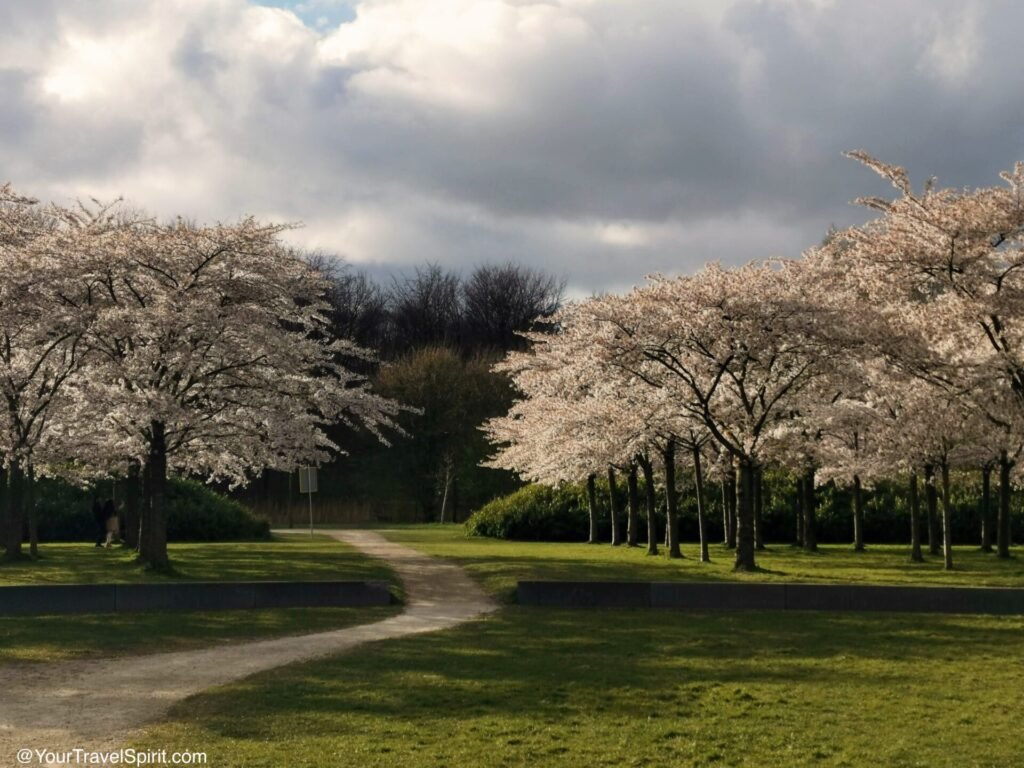
Location and accessibility
The park is a part of Amsterdamse Bos (Amsterdam Forest), which is located in Amstelveen, just outside of Amsterdam.Here is the Google Maps location of Cherry Blossom Park.
By a Car
There is a small parking lot 0.6 miles (950m) outside the park, which fills up quickly during the peak season.
Another option is parking in the Amsterdam Bos daily recreation area (Parkeerplaats Dagrecreatie), which is about 1 mile (1.6 km) from the park. Parking here, you will also enjoy a nice stroll in the Amsterdam forest all the way to the cherry blossom park.
By Public Transportation
There is no direct connection from Amsterdam to the park.
You can get to the park from either Schiphol airport or from Amstelveen bus station.
Busses 168, and 174 from either Schiphol airport or from Amstelveen bus station stops at Raadhuis/Dorpsstraat station. From there it is a 0.6 mile (950m) walk to the park.
For more accurate information, please refer to Google Maps or the 9292.nl website (please use Doorweg 32, 1182 DB Amstelveen as a destination in the 9292.nl website).

A Map of All Cherry Trees in Amsterdam
The municipality of Amsterdam publishes an interactive map that displays each and every tree planted around the city. So you can quickly locate all the places to enjoy cherry trees in Amsterdam.
Just filter the map to display cherry trees only, using the legend in the bottom-left corner, and go on cherry blossom hunting.
Westerpark (West Park)
Westerpark is a public park located in the western part of Amsterdam. It is known for its magnificent cherry blossom during springtime. The park offers a small cherry blossom grove (situated near the Westergasfabriek cultural complex), and a few more cherry trees scattered around the walking paths. It is a popular spot for visitors to take a stroll, have a picnic, or take pictures among the beautiful pink blooms.
The following map shows where cherry trees are located in Westerpark (cherry trees are marked as pink dots):
Apart from the cherry blossoms, Westerpark is a vibrant and diverse urban park. The park offers beautiful gardens, ponds, and walking paths, making it an ideal place for a leisurely walk or bike ride.
Westerpark is home to many cultural establishments, including the Westergasfabriek complex, a former gasworks site that has been converted into a cultural hub. The complex features art galleries, music venues, and restaurants, making it a popular destination for locals and tourists alike.
The park is also known for hosting various cultural events, including music events, fairs, and markets, so make sure to check for upcoming events before your visit.Here is the Westerpark events calendar website.
Location and accessibility
Westerpark can be easily reached by public transportation.Here is the Google Maps location of Westerpark.
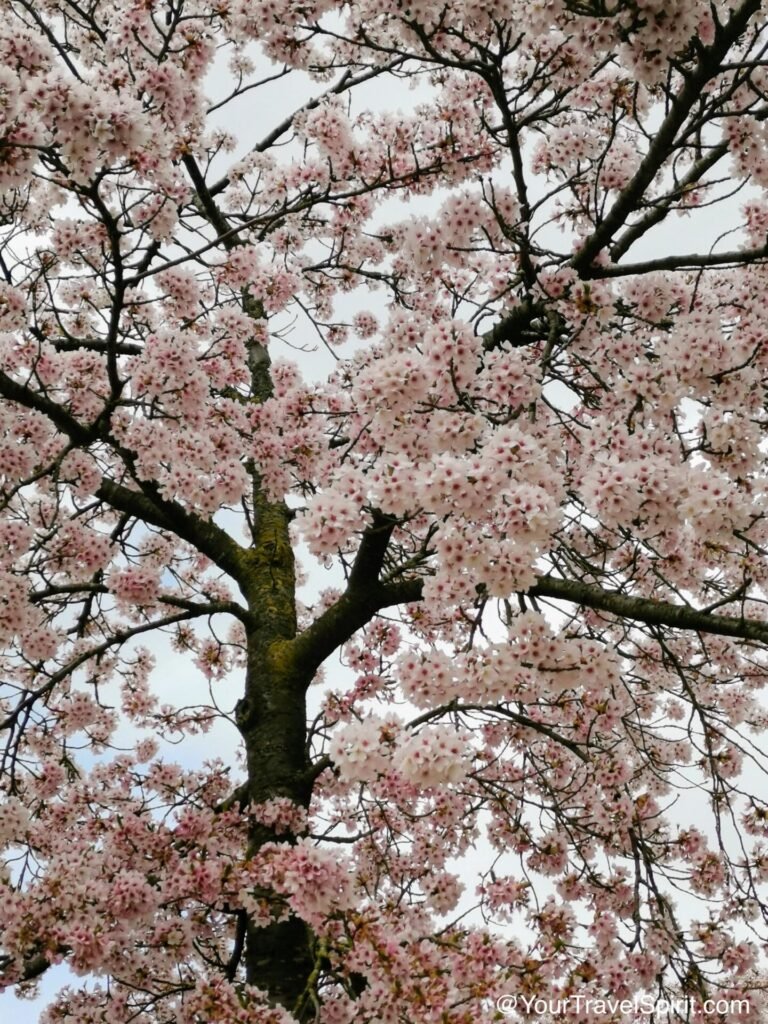
Vondelpark and the Museumplein (Museum Square)
Vondelpark is one of Amsterdam’s most beloved parks and a nice place to admire the blooming cherry trees. Located in the city center, right next to the popular Rijksmuseum and Van Gogh Museum, Vondelpark is a green oasis in the heart of Amsterdam.
The park features several cherry trees scattered along the walking paths, making it a lovely and peaceful place to stroll around.
Although not as many as in Amsterdamse Bos, Vondelpark is a nice spot to enjoy the cherry blossom spectacle in a more intimate setting. It is also a great place for a picnic.
Right near the Van Gogh museum, in the famous “Museumplein” (Museum Square) with its big lawn, you can find a few lovely cherry trees. This is also a popular place to view the cherry blossoms in Amsterdam, both for visitors and locals alike.
The following map shows where cherry trees are located in Vondelpark and the Museumplein (cherry trees are marked as pink dots):
Location and accessibility
Located right in the city center of Amsterdam near Leidseplein square and the Rijksmuseum, Vondelpark and the Museumplein are easily accessible by public transportation, with many trams and buses stopping nearby. Here is the Google Maps location of Vondelpark.
De Pijp
De Pijp is a vibrant neighborhood in the center of Amsterdam, known for its lively atmosphere and many points of interest. During springtime, it comes alive with beautiful cherry blossoms that decorate the streets, creating a romantic atmosphere.
The cherry trees in De Pijp can be found scattered along the main walking routes and popular squares. However, the best spots to admire them are:
The streets surrounding Sarphatipark – here you can find several cherry trees planted next to each other in full bloom, creating a beautiful explosion of pink.
Jozef Israelskade Street, with its lovely canal-side trees, is one of the streets where you can find a large number of cherry trees, making it the perfect place to stroll. This is also one of the most photographed spots in town.
The following map shows where cherry trees are located in De Pijp (cherry trees are marked as pink dots):
Location and accessibility
De Pijp district is located just a few minutes away from the city center. The district is easily accessible by public transportation.

Keukenhof Gardens
Located just a short drive outside Amsterdam, the Keukenhof Garden is a wonderful place to view cherry blossoms in all their glory, surrounded by thousands of flowers.
In addition to the famous tulips, you can find stunning cherry trees, creating an incredible display of color and beauty and making Keukenhof one of the most beautiful places in the Netherlands during springtime.
Location and accessibility
Opening Times & Tickets
The gardens are open for eight weeks per year, from late March until mid-May.
You can book an entrance ticket and find more information on the official Keukenhof Gardens website.

Please note that the gardens, which are open for a short time only each year, are a very popular tourist destination and hence can be very packed. Try to arrive on weekdays, preferably in the early mornings or late afternoons.
Please note that the gardens, which are open for a short time only each year, are a very popular tourist destination and hence can be very packed. Try to arrive on weekdays, preferably in the early mornings or late afternoons.
How to Get to Keukenhof Gardens
Keukenhof is located a 45-minute drive from Amsterdam. The gardens can be easily reached by car or public transportation.
For more accurate information about getting to Keukenhof Gardens, please refer to Google Maps or the 9292.nl website.
If you don’t want to drive yourself or rely on public transportation, you can take a guided tour. Guided tours usually provide transportation in comfortable vehicles with a knowledgeable guide.
You can book a guided tour through various companies that offer such services. Here are several alternatives for tours:
Tips for Viewing Cherry Blossom
- Before your visit, make sure to check the weather forecast as the cherry blossoms typically won't last long and can be destroyed by rain or strong winds.
- Be ready for a crowd. When the cherry blossoms are in full bloom, parks become major attractions and you should anticipate large crowds at some of the most popular locations. If you want to avoid the crowds, consider going on a weekday, or early in the morning.
- Dress appropriately: The weather in the Netherlands can be unpredictable, so be sure to dress in layers and wear comfortable shoes as you may be doing a lot of walking.
- It is important to remember that all parks and gardens have specific regulations regarding the activities allowed inside them. Visitors are advised to pay attention to signs and respect the natural environment.
- Appreciate and embrace the beauty that surrounds you, but please don't damage or pick any of the flowers.
In Conclusion
Amsterdam is a great place to view amazing cherry blossoms during the spring season, and there are plenty of places for you to do so in and around the city limits.
So enjoy the experience, take your time, and admire the natural beauty that surrounds you.
Happy cherry blossom spotting 🙂
Thank you for taking the time to read this! If you have any questions or would like to share your experience, please leave us a comment below.
Spring in The Netherlands: Magical Spring Blooms
When you think of spring, what comes to mind? Perhaps colorful flower fields, delicate cherry blossoms, or meadows filled with wildflowers? The Netherlands, known for its tulips and windmills, is rich with these magnificent sights.
Spring in the Netherlands is undoubtedly the best time to visit this beautiful country. From late March through May, the Dutch countryside transforms into a sea of vibrant colors and fragrant scents, attracting tourists from all over the world. With the right planning, being mindful of the environment, and a bit of luck with the weather, you will enjoy a memorable spring trip!
Join us on a virtual journey as we explore the breathtaking beauty of spring blooms in the Netherlands!
Disclosure: Some of the links in this post may be affiliate links. If you decide to book through these particular links, we will receive a small commission from your purchase at no extra cost to you. We are truly grateful for your support!
In This Guide
- Crocuses: A Burst of Color
- Daffodils: Golden Fields
- Cherry Blossoms: A Touch of Serenity
- Magnolias: Delicate Elegance
- Hyacinths: Fragrant Beauties
- Tulips: A Symbol of the Netherlands
- Wisteria
- Rhododendrons: Majestic Blooms
- Wild Flowers: Hidden Gems in the Countryside
- Practical Tips for Planning Your Visit
- In Conclusion
From Late February
Crocuses: A Burst of Color
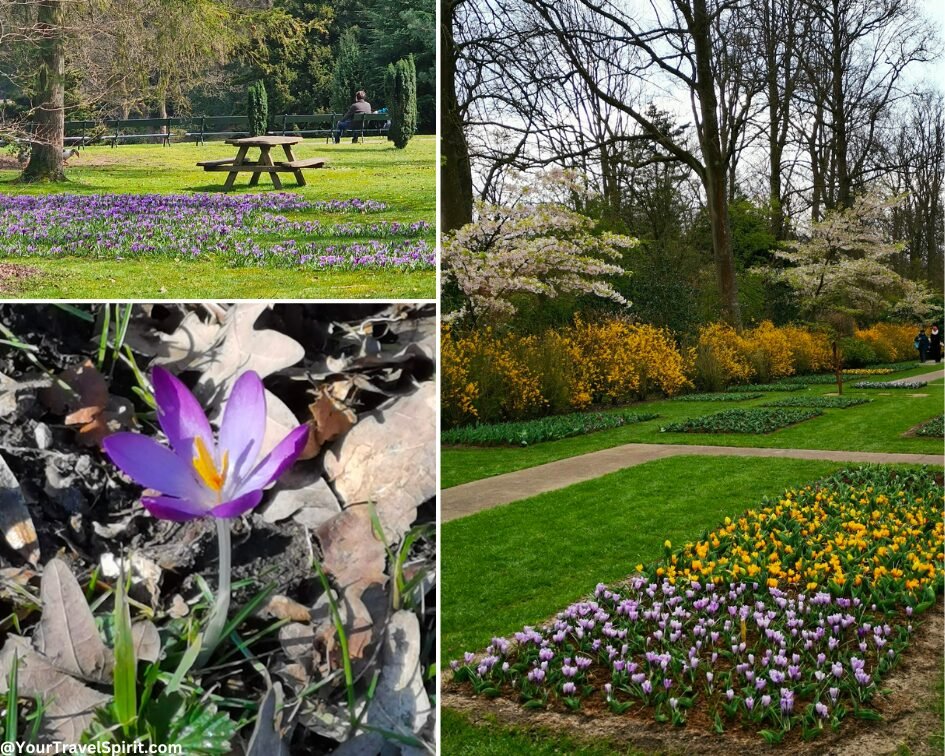
As winter begins to fade, the first signs of spring emerge with the arrival of crocuses. These vibrant flowers often grow in large clusters and can be found in a range of colors, from deep purples to bright yellows and white.
Crocuses are a true symbol of new beginnings and renewal, as they are often the first to bloom after the cold winter months. They also have a rich history, with many cultures associating them with happiness, cheerfulness, and love.
Aside from their aesthetic appeal, crocuses also hold medicinal properties. In traditional medicine, crocus has been used for its anti-inflammatory, antispasmodic, and sedative effects. The flower also contains an antioxidant compound called crocin, which has been studied for its potential in treating depression and neurodegenerative diseases.
But perhaps the most fascinating aspect of crocuses is their ability to thrive in harsh conditions. These flowers are known for their resilience, often blooming through snow or frost. Their hardiness and determination to bloom make them a powerful symbol of strength and perseverance.
When do Crocuses Bloom in the Netherlands?
Crocuses typically bloom in the Netherlands from late February to early April, depending on the weather conditions. The warmer and sunnier the climate, the earlier they will start to appear. Crocuses can be seen as early as mid-February in some areas of the country.
Where to see Crocuses in the Netherlands
Crocuses can be found in many places in the Netherlands, either in the wild, in the countryside, or along riverbanks. You can also find them in many city parks and public gardens.
From the beginning of March
Daffodils: Golden Fields

Daffodils, also known as narcissus, are next to bloom. Daffodils are a classic spring flower. With their Lively yellow and white petals, daffodils are often associated with joy, new beginnings, and good fortune.
From March to mid-April, Daffodils paint the landscape with a vibrant yellow hue. Their sunny, cheerful petals brighten parks, gardens, and fields everywhere around the Netherlands. The Bollenstreek (Bulb Region), In particular, comes alive with a breathtaking burst of color, and the yellow fields are perfect for some beautiful flower pictures.
Aside from their beauty, they also have a practical side. The bulbs of these flowers have been used in traditional medicine for their therapeutic properties. Furthermore, daffodils also have a rich history and symbolism. In Greek mythology, the flower is associated with Narcissus – a handsome young man who fell in love with his own reflection.
When do Daffodils Bloom in the Netherlands?
Daffodils typically bloom in the Netherlands from the beginning of March to mid-April. Like all spring flowers, their blooming time can vary depending on weather conditions. The warmer and sunnier the weather, the earlier they appear in the season.
Where to see Daffodils in the Netherlands
Daffodils can be found simply everywhere! They are commonly seen in many parks, gardens, public spaces, fields, and meadows.
Keukenhof Gardens showcases an extensive demonstration of Daffodils as well.
Some popular places to see vast fields of daffodils include the Bollenstreek (Bulb Region). Another popular spot is the Noordoostpolder area area in Flevoland.
From Late March
Cherry Blossoms: A Touch of Serenity
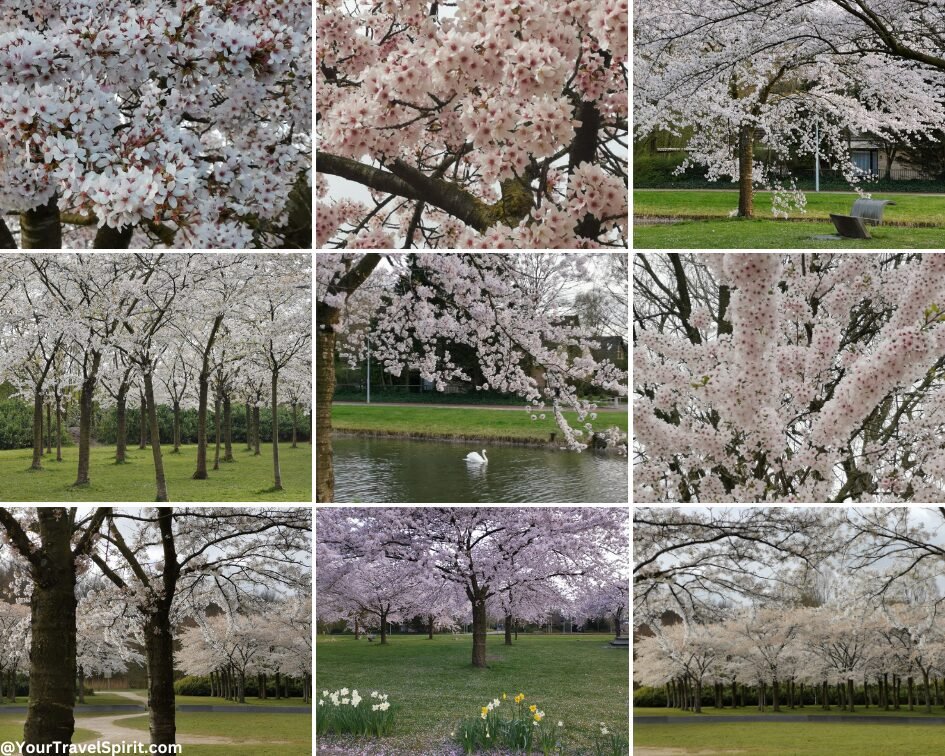
Cherry blossoms are another highlight of springtime in the Netherlands, creating a stunning display of natural beauty. The blooming of the cherry trees symbolizes happiness, marking the beginning of spring.
When to See Cherry Blossoms in the Netherlands
The blossoms typically appear in late March or early April and last only a few weeks.
The blossoms typically appear in late March or early April and last for only a few weeks, but this can change depending on weather conditions. The delicate flowers are sensitive to harsh weather, and strong winds or heavy rain might shorten their blooming duration.
Where to See Cherry Blossoms in the Netherlands
Cherry blossoms can be found in many cities throughout the Netherlands, including Amsterdam, Den Haag (The Hague), Utrecht, Leiden, and more. You can enjoy them by strolling through parks, gardens, or even streets in many residential areas.
The most famous (and popular) spot to see cherry blossoms in the Netherlands is the Kersenbloesempark in Amsterdamse Bos (Cherry Blossom Park in Amsterdam Forest), a large park located just outside Amsterdam in Amstelveen. The park is home to over 400 cherry trees, all gathered in one enchanting location, offering a magnificent sight. The park is a popular destination for tourists and locals alike, so be prepared for crowds during peak bloom time. If you plan to visit the park on weekends, we highly recommend to arrive early in the morning.
Another popular place to see cherry blossoms in the Netherlands is the Keukenhof Gardens, known mostly for its tulips but also has a nice display of cherry trees.
See Also
Here is our detailed guide for the best places to see cherry trees in bloom in the Amsterdam area, including Cherry Blossom Park in Amsterdam Forest
From Late March
Magnolias: Delicate Elegance
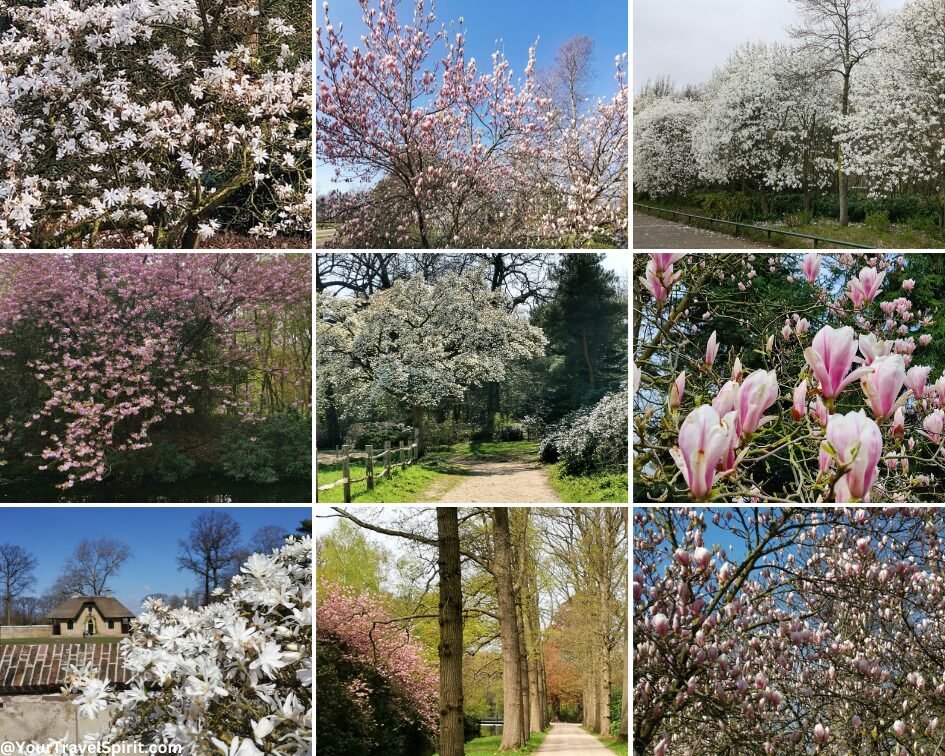
Starting in late March, the magnolia trees of the Netherlands burst forth in a stunning display of delicate elegance. The large, snowy-like blossoms come in a variety of colors, including white, pink, and purple.
Magnolias are known for their short blooming period, typically lasting only a few weeks. However, this brief period is well worth the wait as the flowers are truly spectacular, captivating anyone who lays eyes on them.
While magnolias may not be as commonly associated with the Netherlands as tulips or hyacinths, they are a beautiful and unique addition to the country’s spring splendor. So, if you happen to be in the Netherlands during the spring season, make sure to look for these brief but breathtaking trees.
When to see Magnolias in the Netherlands
While the exact timing of magnolia blooming can vary, it typically occurs from late March to mid-April.
Where to see Magnolias in the Netherlands
While not as abundant as other spring flowers, magnolias can be found in many parks and gardens throughout the country. They can easily be found just strolling around in any residential area.
Westerpark in Amsterdam provides a nice display of magnolia trees in bloom.
From Late March
Hyacinths: Fragrant Beauties
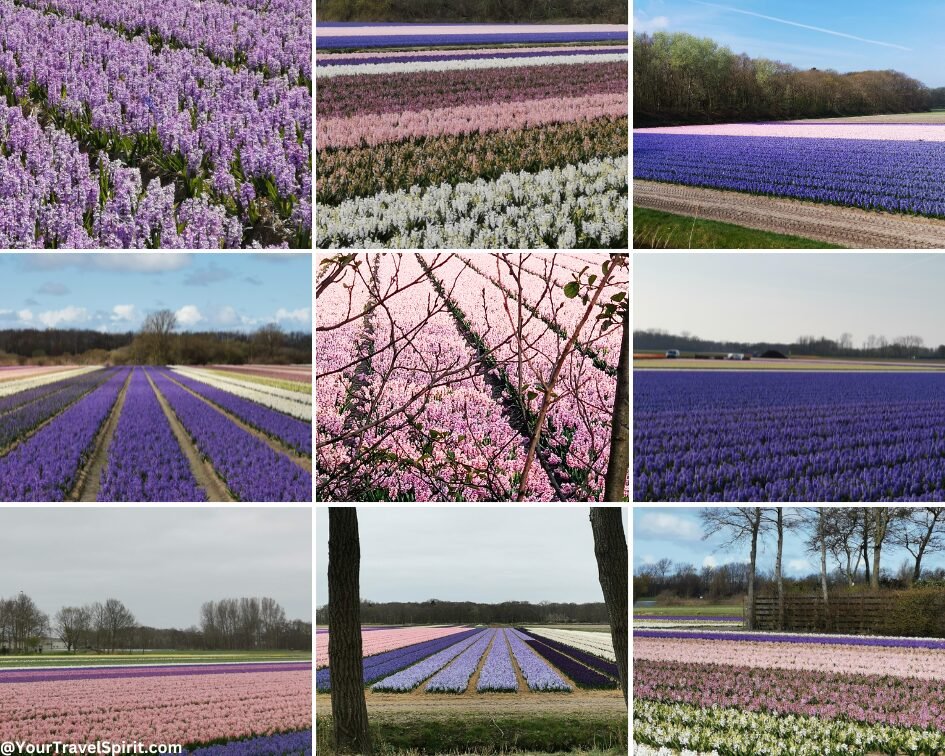
Hyacinths, known for their amazing fragrance and beautiful clusters of flowers, are another spring delight in the Netherlands. Hyacinths bloom typically begins in late March, following the Daffodils, adding to the country’s spectacular floral display.
Hyacinths come in multiple shades of pink, purple, white, and lilac. Standing near a hyacinth field and breathing the sweet fragrance is an incredible experience.
When do Hyacinths Bloom in the Netherlands?
Hyacinths usually bloom in the Netherlands from late March to late April, slightly later than daffodils. Their blooming time can also vary depending on weather conditions and location.
Where to see Hyacinths in the Netherlands
Hyacinths are mostly grown in flower fields, but you can also find them in parks and gardens across the country. Some famous places to see Hyacinths include the Bollenstreek (Bulb Region) and the Noordoostpolder area in Flevoland.
From Mid-April
Tulips: A Symbol of the Netherlands
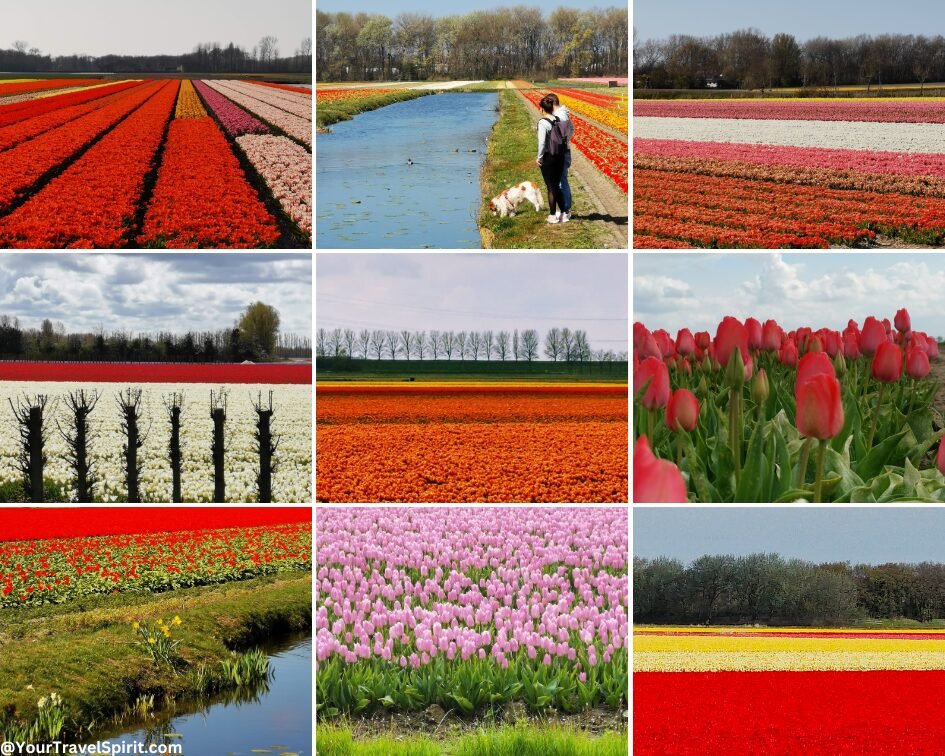
Starting mid-April, it is time for the most iconic flower of the Netherlands to bloom.
When one thinks of the Netherlands in springtime, the image of vibrant tulip fields probably comes to mind. Tulips are undoubtedly the most famous flower in the country and for a good reason. The Netherlands is an ideal place for tulips to grow due to its cool climate and well-drained soil, providing the perfect conditions for tulip growth.
Tulips have been cultivated by the Dutch since the 17th century and hold a significant place in the history of the Netherlands. Originating from Central Asia, these vibrant flowers made their way through Turkey and eventually to the Netherlands. Today, tulips play a significant role in the Dutch economy, with the country being one of the leading producers and exporters of tulip bulbs. It is the national flower of the Netherlands, symbolizing beauty and heritage.
Tulips come in a huge diversity of colors, sizes, and shapes, with over 3,000 registered varieties, classified into 15 groups based on their flower type, height, and time of bloom.
Each tulip color carries a specific meaning in the language of flowers. Red tulips symbolize true love, while purple ones represent royalty. Yellow tulips Symbolize cheerful thoughts and sunshine. White tulips stand for forgiveness, respect, and honor. The wide range of colors and meanings adds another layer of fascination to these cheerful flowers.
With proper care, tulips can provide a captivating display year after year, their vibrant hues lighting up gardens and capturing hearts around the world. So, if you’re planning a trip to the Netherlands in springtime, make sure to add these beautiful displays of tulips to your itinerary!
When to see Tulips in the Netherlands
The peak bloom of tulips in the Netherlands happens around mid-April to Early May. However, this can vary depending on weather conditions and the specific location of the tulip fields. You may even spot some tulip fields in bloom by mid-May, but many will already be cut by then.
Where to see Tulips in the Netherlands
The Keukenhof Gardens is the most popular place in the Netherlands to see tulips. This world-renowned garden is a must-visit for any flower enthusiast, with over 7 million flower bulbs planted each year, including countless varieties of tulips.
Other places where colorful tulip fields create a breathtaking sight during the spring season include the Bollenstreek (Bulb Region), Noordoostpolder area in Flevoland, North Holland from Egmond to Kop van Noord-Holland, Zuid Holland and Zeeland.
From Late-April
Wisteria
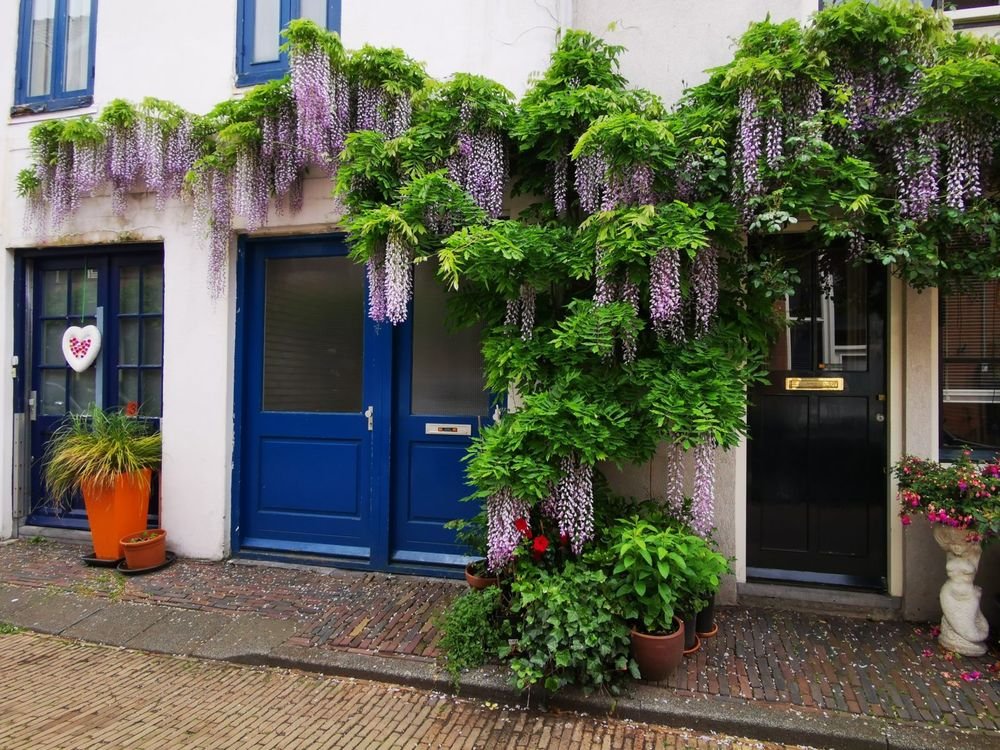
Starting late April, you can spot these spectacular climbing plants, with their cascades of fragrant lavender-blue flowers. The canopies of Wisteria blooms, draped over walls, fences, or pergolas, provide an astonishing sight. While they aren’t as widespread as tulips, they are a marvelous addition to the Dutch spring.
When to see wisterias in the Netherlands
Late April to mid-May is the best time to wisteria in bloom.
Where to see wisterias in the Netherlands
Wisterias can be seen everywhere around the Netherlands in private gardens, public places, and parks. Walking around many residential areas you have a very high chance of seeing some blossomed wisterias.
More organized places to see wisterias include botanical gardens around the Netherlands.
From Early May
Rhododendrons: Majestic Blooms
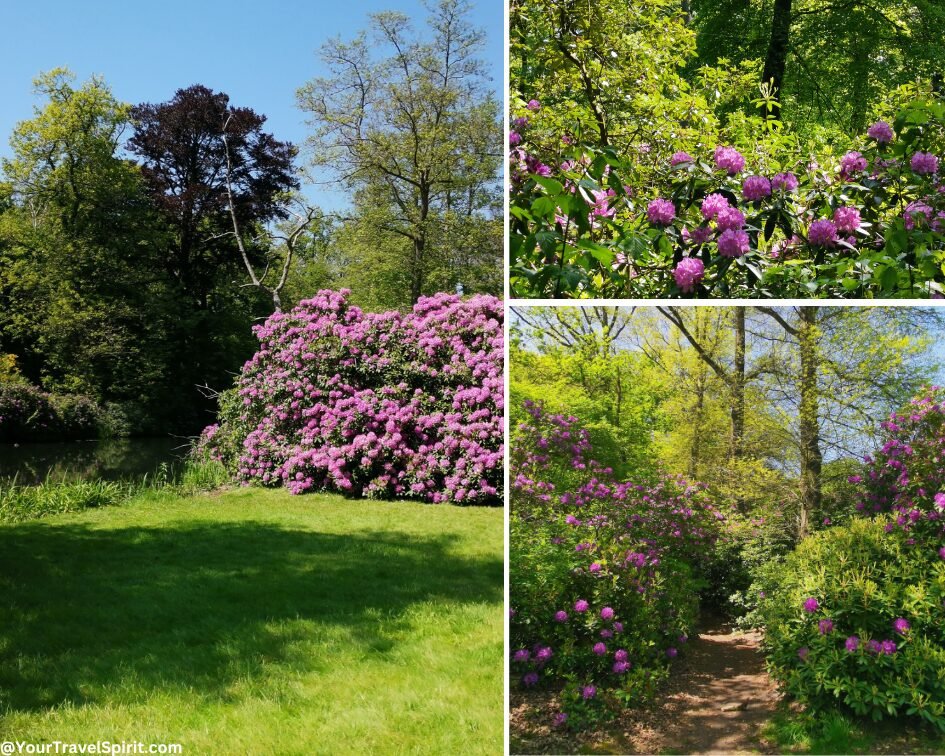
Rhododendrons, with their vibrant blooms and lush foliage, present a spectacular sight in the Netherlands, especially during the spring and early summer. This robust shrub thrives in the Netherlands’ climate and is common in many Dutch gardens and parks. The blossoms come in an array of colors, including pink, white, red, and purple, creating an amazingly beautiful display.
When to see Rhododendrons in the Netherlands
The blooming period of rhododendrons in the Netherlands typically starts around early May and lasts until early June.
Where to see Rhododendrons in the Netherlands
Rhododendrons can be found in many parks and gardens throughout the Netherlands.
Some of the best places to see rhododendrons include:
- Arboretum Trompenburg in Rotterdam.
- Clingendael Estate Park in The Hague, and the Japanese garden on the estate's land. Please note that the Japanese garden is open for visitors for a very short period every spring and autumn.
- Several estates parks in S-Graveland (near Hilversum), for example Gooilust
From March and Onwards
Wild Flowers: Hidden Gems in the Countryside
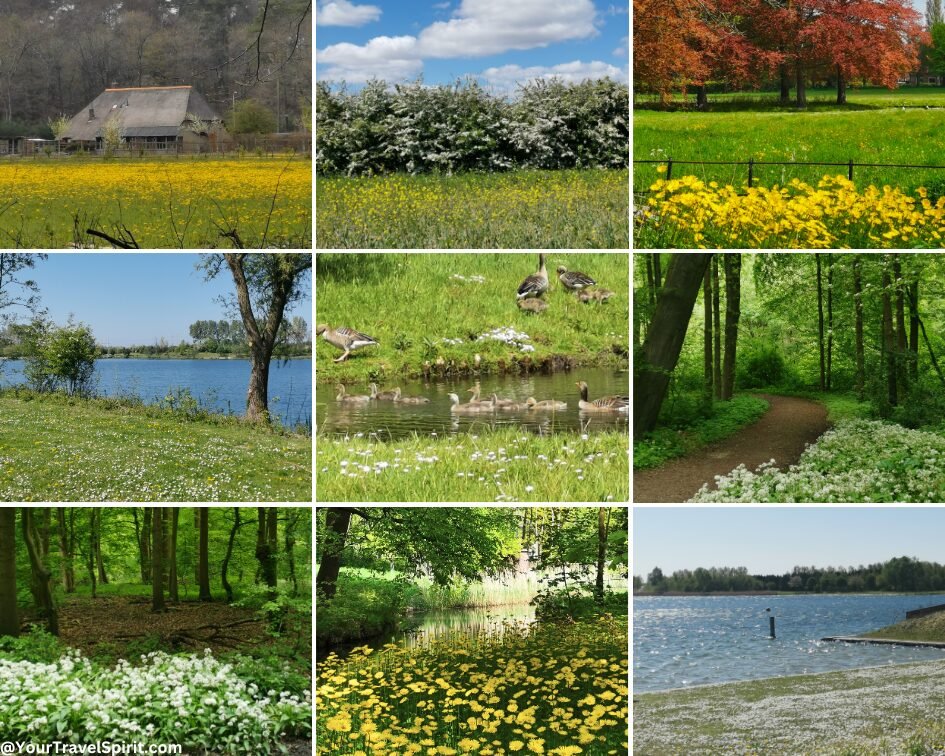
If you are looking for a more natural and wild experience, the Netherlands is also home to various beautiful wildflowers. These hidden gems add colors and charm to the landscape, peeking out from forests, meadows, and fields. From March to May, nature lovers can enjoy the delicate beauty of these native plants when hiking or biking through the Dutch countryside.
Dutch forests are also home to many beautiful wildflowers. Among them is the wild garlic plant, which creates a delightful white carpet of delicate blooms in the early spring with a light garlic fragrance. Other forest wildflowers include wood anemones, bluebells, primroses, and dandelions.
During spring and into the summer, the Netherlands’ meadows are filled with various wildflowers. Located all throughout the country, you can see patches and sometimes even fields of assorted wildflowers, such as buttercups, daisies, dandelions, red clover, anemones, and poppies.
There is no specific place we recommend to spot wildflowers since they can be found everywhere. Just go to the countryside near you and enjoy!
Practical Tips for Planning Your Visit
- During the spring in the Netherlands, the weather can still be chilly, with the possibility of wind and rain. Bring a jacket.
- Don't stick to the famous places only. There are so many beautiful places where you can see spring blooms without the crowd.
- When visiting popular places, try to go during the weekdays and early in the morning or late in the afternoon for a more tranquil experience.
- Respect nature and leave no trace behind. Take pictures, not plants.
- Keep in mind that the peak bloom time can vary each year.
- Respect the environment. Remember, the flower fields are working fields, and it's crucial not to trample them.
In Conclusion
The Netherlands has so much more to offer than just tulip fields. The country is filled with beautiful wildflowers that bloom during the spring season. With some planning and a few insider tips, you can have an unforgettable experience exploring these natural wonders.
We wish you a wonderful journey through the blooming landscapes of the Netherlands and hope you will enjoy the magic of nature’s masterpiece in the Netherlands this spring!
Off the Beaten Path Netherlands: Exploring Kampen
Orly Bleier
Most travelers associate the Netherlands with popular cities like Amsterdam, Rotterdam, and Den Haag (The Haag). However, those who choose to explore lesser-known destinations discover the country’s hidden gems, rich history, and vibrant culture beyond the typical tourist experience.
Kampen is a historic city located in the Overijssel province of the Netherlands. It is situated alongside the river IJssel and is known for its well-preserved medieval city center.
In this guide, we will take you off the beaten path to explore everything Kampen has to offer, from its well-preserved medieval architecture to its picturesque riverfront and vibrant arts scene. We also suggest a walking route that covers the most important sights and places to visit in Kampen.
Disclosure: Some of the links in this post may be affiliate links. If you decide to book through these particular links, we will receive a small commission from your purchase at no extra cost to you. We are truly grateful for your support!
Quick Info
What makes Kampen a unique travel destination in the Netherlands?
Kampen is a unique travel destination in the Netherlands due to its rich history, well-preserved medieval architecture, and charming waterfront. It offers a peaceful and authentic Dutch experience away from tourist places, with picturesque streets, cozy cafes, and a beautiful old center to explore.
In This Guide
The History of Kampen
The history of the city can be traced back to the 12th century when it was a famous trading hub along the River IJssel. The city was granted city rights in 1236, allowing it to govern itself and establish its own legal system. Kampen’s strategic location along the river made it a crucial center for trade and commerce during the Middle Ages, attracting merchants and craftsmen from all across Europe.
Kampen was a member of the Hanseatic League, a powerful trading alliance of northern European cities, including many cities in Holland. This membership brought wealth and prosperity to the city, allowing it to flourish as a shipping, industry, and finance center. Evidence of the city’s wealth as Haseantic city can be easily seen while walking the streets of the historical center: impressive historic architecture, iconic city gates, towers, and churches.
In addition to its commercial significance, Kampen also played a crucial role in the religious and intellectual life of the region. The city was a center for learning and culture, with renowned scholars and theologians residing and teaching within its walls. The printing press was introduced to Kampen in the 15th century, furthering its reputation as an intellectual powerhouse.
Walking through the old town
Explore the magic of Kampen by wandering through the streets and admiring the buildings and the unique atmosphere. The historic city center will take you back in time with its old buildings, churches, ancient walls, gates, and bridges. The old town’s small size makes it easy to explore on foot, allowing you to start your stroll from any point that suits you.
While strolling in the old town, you will notice the medieval atmosphere everywhere. We will now outline some of the sights that you shouldn’t miss.
The Wall and the Three Gates of Kampen
In medieval Europe, it was common to construct city walls and gates for defense. These walls were an essential part of a city’s defense system, built to protect the city and its inhabitants from external threats such as invading armies, bandits, and other hostile forces.
Sightseeing the remains of the wall and the gates is a must if you are interested in history and architecture.
Koornmarkspoort
This is the oldest gate in Kampen. It was built in the 14th century. The gate served as the primary entrance and exit point on the Ijssel side of the city, through which goods transported by ships were brought into and out of the city. It has two floors, which were used as a prison and sleeping place for soldiers.
The gate building hosts occasional exhibitions organized by the local government.
Address: Voorstraat 1 8261 HP Kampen
Cellebroederspoort
This gate was built in the 15th century and served as a gateway for trade and commerce. It connects between the old town and the city park.
Today, the gate building hosts private events.
Address: 2e Ebbingestraat 18261 VV Kampen
Broederpoort
Same as Cellebroederspoort, This gate was also built in the 15th century and served as a gateway for trade and commerce. It has also been used for offices, and nowadays, it is a place for special events and exhibitions.
Similar to Cellebroederspoort, this gate was constructed in the 15th century to facilitate trade and commerce. Over time, it has functioned as an administrative office. Today, it is used for hosting special events and exhibitions.
Address: Broederweg 36 8261 GT Kampen
Here is a map of the three gates:
Kampen Stadpark (City park)
A beautiful, peaceful park located right outside the old city center. The park offers a serene escape from city life. Kampen Stadpark is perfect for a leisurely stroll or a picnic with friends and family.
You can access the park from the old city center via both Broederpoort and Cellebroederpoot gates described above.
The park is open all year long, and it is free to visit.
Here is a map of the park with the two gates:
The Nieuwe Toren (The new tower)
The new tower is another famous building in the middle of the old town. The building serves as both the city tower and the clock building. The tower was reconstructed between 1649 and 1663 following a fire.
There are 29 bells in the tower. The bells can be heard playing music on Mondays from 11 to 12 and on Saturdays from 15 to 16. Additionally, they can be heard in the summer on Friday evenings from 19:30 to 20:30.
The music can be heard around the city center, but for a better listening experience, you can visit Het hof van Breda, where you can enjoy the music without background noise.
Adresses:
Nieuwe Toren: Marktsteeg, 8261 BM Kampen
Hof van Breda: Marktsteeg, 8261 BM Kampen
Churches in the Historical Center of Kampen
Walking through the historical center of Kampen, you will see several churches.
It’s worth noting that churches may not always be open to the public. If you’re interested in visiting the inside, please check the relevant church’s website for more information. Anyway, you can still appreciate the beautiful architecture from the outside.
Some churches host musical concerts during the week, which is worth exploring. You can find more information on the church’s websites.
Here are the most famous churches:
Bovenkerk (Upper Church. also known as St. Nicholas Chruch)
The biggest and most famous church in Kampen is the Bovenkerk.
The church is located in the heart of the city. It is a historic and iconic religious landmark that has been serving the local community for centuries. The church’s origins date back to the 13th century, and its stunning Gothic architecture reflects the region’s rich history and cultural heritage.
The church features two giant organs and is famous for its organ concerts.
Address: Koornmarkt 28, 8261 JX Kampen
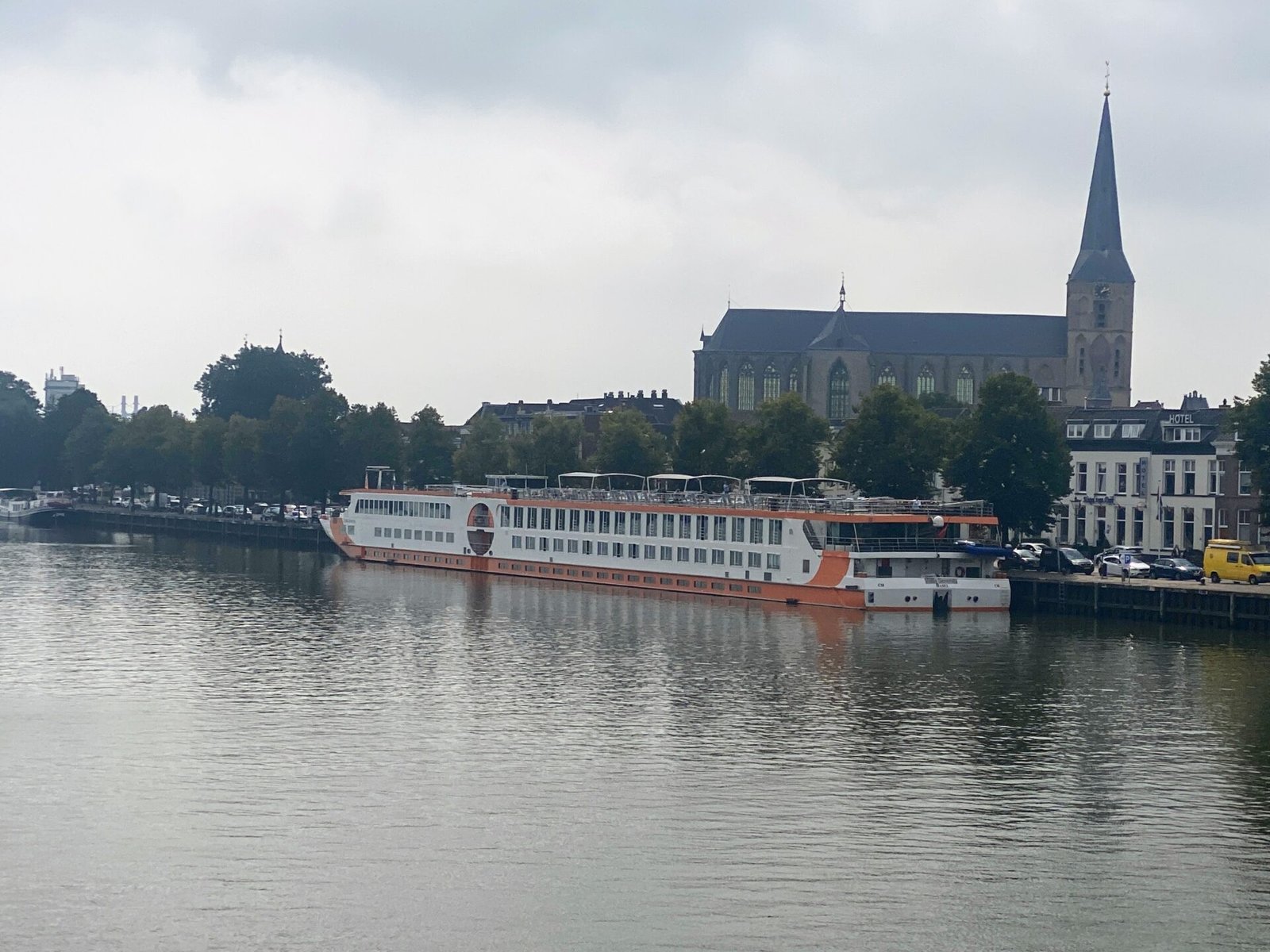
Buitenkerk (Outside church)
The Buitenkerk is located 950m (0.59 mile) from the Bovenkerk and is no less important or unique.
The church was built in the 14th century in a Gothic style. Unlike other churches at that time, it was built outside the city’s walls. Another unique feature of this church is the fact that it has three halls and three large bells. The church also hosts music performances. It is accessible to the public during the summer months.
Address: Buiten Nieuwstraat 101, 8261 AT Kampen
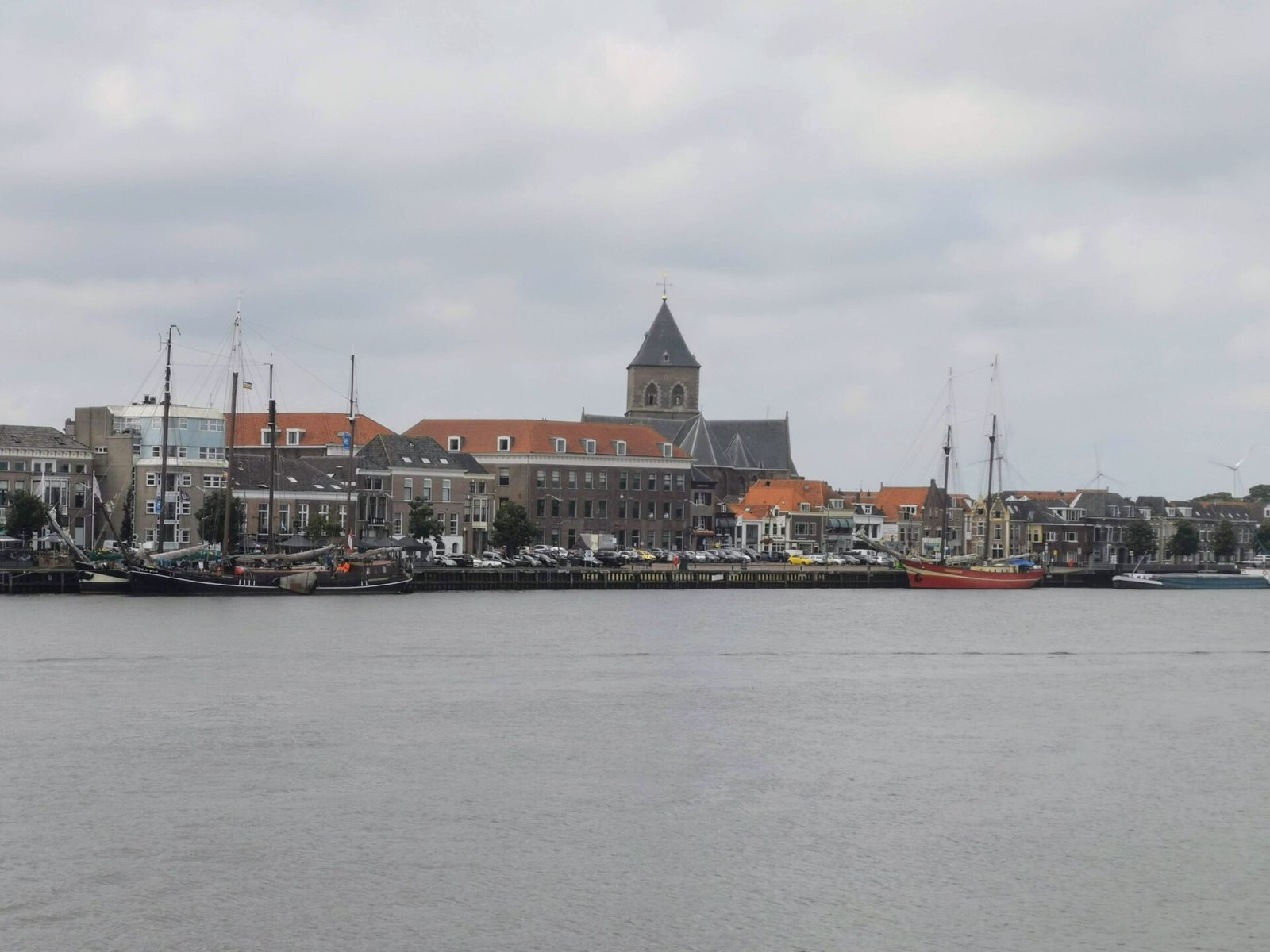
Museums In Kampen
Stedelijk Museum Kampen (The Municipal Museum)
The Stedelijk Museum in Kampen offers a combination of art and history. The museum resides in two different buildings in the old town. The entrance to both buildings is included in a single ticket for the same day.
The Stedelijk Museum Main Building
The museum’s main building is located in the former building of the city town hall of Kampen, just in the middle of the old town. The museum’s permanent exhibit is divided into four sections.: Water, Faith, Administration of law, and the House of Orange.
In the water exhibition, you can see the link between the city and the water, the role of water in Kampen’s development, its potential hazards, sea level concerns, and much more.
The faith exhibition is dedicated to the relationship between religion and the city. Christianity has played a significant role in the city’s history, with several Catholic churches and monasteries in its early years. After the Reformation, the city became more protestant, and even theological universities were opened in Kampen.
The Administration of the Law exhibition is located in the Schepenzaal (Aldermen’s room), where the law was administered in the past.
Finally, the House of Orange exhibit highlights the link between Kampen and the Dutch royal family. It showcases the history of the House of Orange through portraits, personal belongings, and stories that highlight their influence on Dutch society.
Old synagogue
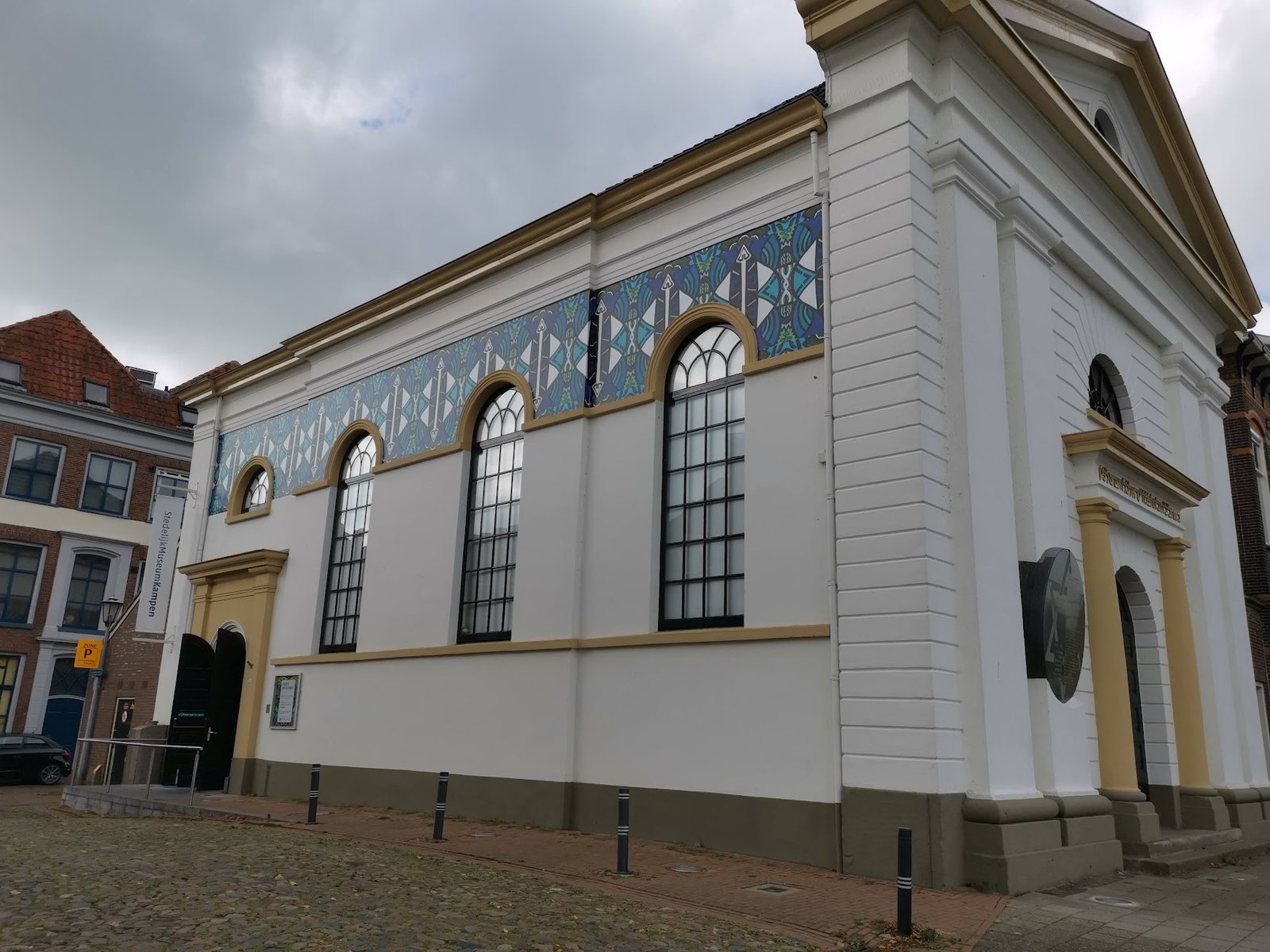
The Other building of this museum is the old synagogue that was active until World War II.
After World War II, Kampen’s Jewish population disappeared, and the synagogue building is now part of the Stedelijk Museum Kampen. The museum has two floors, one for temporary art displays and another for a permanent exhibit about Jewish life in Kampen and the synagogue.
Addresses:
The main building: Oudestraat 133, 8261 CK Kampen
The old synagogue (Second building): IJsselkade 33 8261 AC Kampen
Ikonenmuseum Kampen - ( Icon Museum Kampen)
The term “icons” in art refers to religious paintings, and the Ikonenmuseum is specifically focused on Christian icon art. Located in a former convent, the museum provides insight into the unique aspects of icon art compared to other art forms, and offers a blend of history, religion, and art.
The museum is closed on Sundays.
Address: Buiten Nieuwstraat 2, 8261 AV Kampen
Museumboerderij Erf 29 (The agriculture and farmers museum)
Just a 10-minute drive from Kampen’s old town center, in the middle of Kamperlland, you will find ERF29, which is a museum dedicated to the agricultural and farmer’s work that happened 100 years ago.
In the museum, visitors can find agricultural objects and farmers’ clothing, so the visitor can get a full picture of how the farmers worked and lived.
The museum is not open all year round, so please check the opening times.
Address: Heultjesweg 31, 8267 AH Kampen
The Kamper Kogge (The Cog of Kampen)
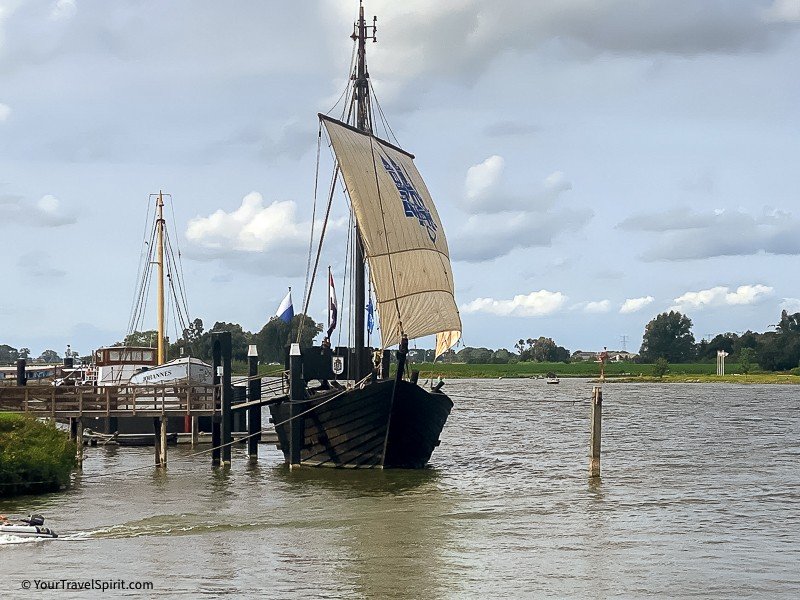
A cog was a trading ship that was commonly used in the 14th century. The cog of Kampen is the only reconstruction of a cog in the Netherlands, and a group of volunteers built, restores, maintains, and operates it.
By visiting the vessel, you can learn about the history of such ships and their role in historical trade.
Please check the website for sailing times and guided tour options.
Address: De Koggewerf, Havenweg 7, Kampen
A Suggestion for a Walking Route
Here is a suggestion for a walking route that covers many of the places we described above. The tour duration is between 3 and 4, depending on how long you decide to explore the museums.
Our starting point would be at the train station. If you arrive by car, there is a small parking lot next to the station.
- City bridge: From the station, head towards the Stadburg (city bridge). While walking on the bridge towards the old town, you can enjoy the sights of the Ijsell River and the old town of Kampen.
- Kampen Municipal Museum Old Synagogue building: After crossing the bridge, turn left to Ijsselkade Street and walk towards Ijsselkade 33. Here, you will find the impressive building of the Old Synagogue. On the first floor, there are changing art displays, and on the second floor, you can see a permanent presentation dedicated to Jewish life that used to be in Kampen until World War II.
- Koornmarktspoort: after visiting the museum, return to Ijsskade Street and continue walking along the river until you see the magnificent oldest gate in Kampen – the Koornmarktspoort.
- Bovenkerk: walk through the gate into the old town and walk straight towards Koornmarkt 28, here, you see the impressive Bovenkerk. If the church is open to visitors, you can go inside.
- After visiting the church, head to Ourdestraat and turn left to Geerstraat. Continue forward until you reach the famous Cellebroedersporrt gate.
- From there, walk through the city park. After strolling through the historic old town, you can enjoy this serene park. Continue walking the park until you reach Broederpoort, the 3rd remaining gate of the city.
- Kampen Municipal Museum Main building – After returning back to the city through the gate, just continue walking forward. On your way, you will see several churches and historical buildings. After a few minutes of walking, you will reach the entrance of the main building of the Stedelijk Museum (Municipal Museum).
- From here, you can continue exploring the vibrant streets of the old center. There are many shops and restaurants near the museum. Once you are done, return to the train station through the bride.
Practical Information
When is the best time to visit Kampen
During the winter, certain museums and attractions operate with fewer opening hours. (Please check the official websites for the opening times and availability of the places you wish to visit).
Most of the museums and the stores are closed on Sundays. However, the Municipal Museum is open (Both buildings, please check the hours!),
There is a market at Nieuwe Markt on Saturdays until the afternoon. A smaller market is also held on Monday mornings during spring and summer.
If you enjoy shopping, the primary shopping district is located on Oudestraat. On Fridays, the shops have extended opening hours, allowing for shopping until 21:00.
How to get to Kampen?
By car – Take the A28 motorway if you are coming from the north or south, and the N50 if you are coming from the east or west. Kampen is well connected to the Dutch road network.
Where to park in Kampen – we recommend parking near the train station and getting into the old town on foot over the Ijsel River bridge. But please note that this parking lot is small and might be full.
On the other side of the river, around the old town center, several parking areas are available. Just follow the signs. Since the old town is small, you can park wherever you find a place.
By public transportation – Kampen’s main railway station is served by frequent services from several cities such as Amsterdam, Utrecht, and Zwolle. You can easily reach the charming and scenic small town from the station on foot. Cross the bridge over the Ijsel River, and you will see the Municipal Museum’s main building right in front of you.
See Also
Read about Other Hanseatic Cities in The Netherlands
Best Autism-Friendly Holiday Destination: Alaska
Welcome to our series on autism-friendly holiday destinations! In this post, We will explore the magnificent state of Alaska – from breathtaking scenery to amazing attractions. Alaska is truly one of the top destinations for nature lovers, including those who are autistic.
Being a family who loves to travel and has two autistic children, we have gained a special understanding of the specific requirements and challenges of traveling with autism. In our experience, Alaska is one of the best autism-friendly holiday destinations, where we’ve had our most amazing trips.
Join us as we explore this unforgettable place and discover why it should be at the top of your list for a perfect autism-friendly holiday!
Disclosure: Some of the links in this post may be affiliate links. If you decide to book through these particular links, we will receive a small commission from your purchase at no extra cost to you. We are truly grateful for your support!
Alaska offers a variety of activities that are suitable for all nature lovers, including autistic travelers. Here are the main reasons why Alaska is a top choice for us:
Alaska's Serene Natural Beauty
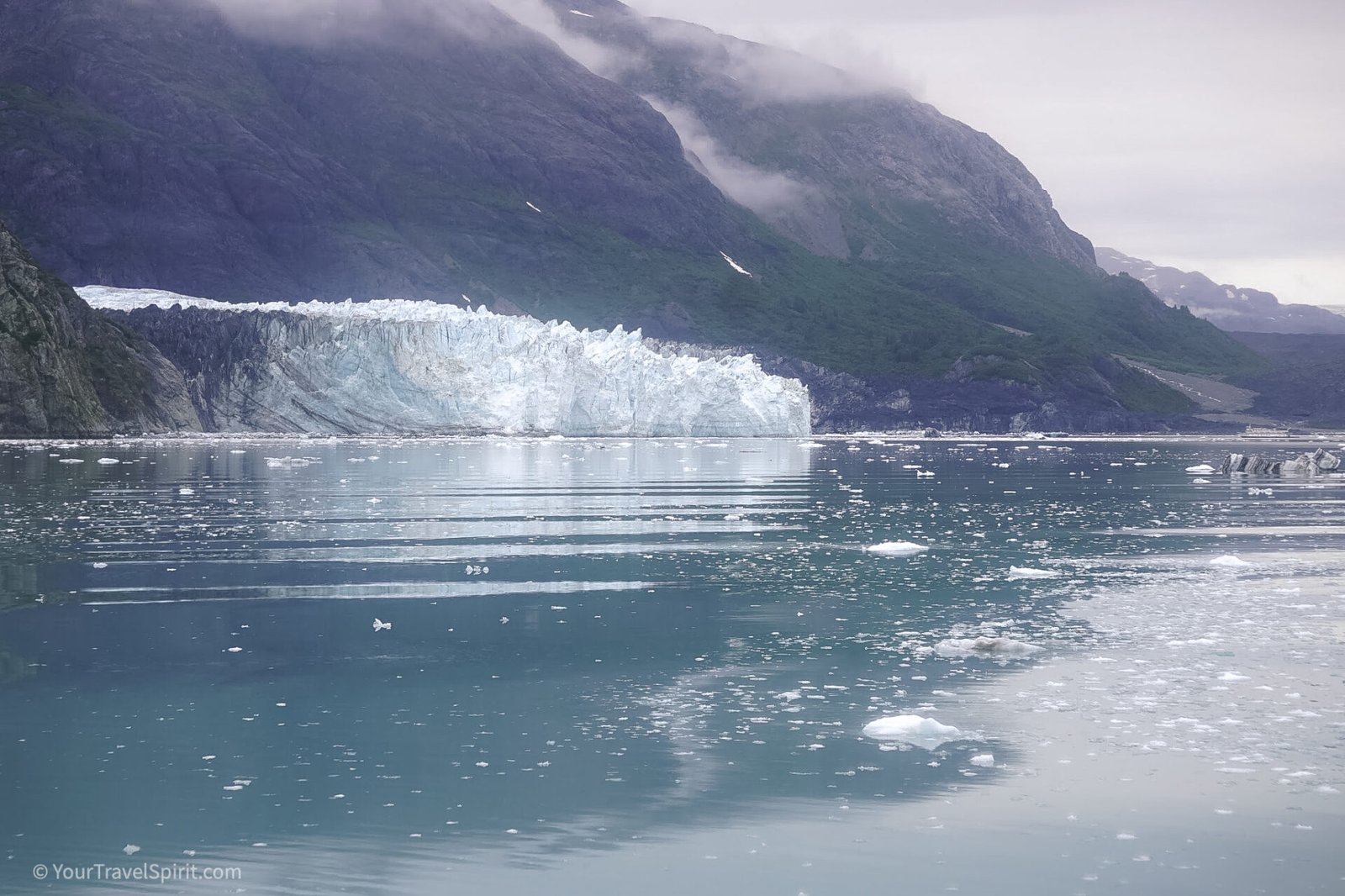
One of the main highlights of Alaska is its serene natural beauty. From majestic mountains to magnificent glaciers, from grand rivers to lush green forests, you will be surrounded by breathtaking scenery everywhere you go, and you can immerse yourself in the peacefulness of nature everywhere.
For autistic travelers who appreciate the calming effects of nature, Alaska provides the perfect setting for relaxation and exploration.
Outdoor Adventures for All Abilities
Alaska offers a wide range of outdoor activities that can be enjoyed by everyone, regardless of their physical abilities. Easy hiking through panoramic trails, gold panning, scenic flight in small planes, taking a cruise on calm water for glacier and wildlife spotting, dog sledding on a dirt road or a glacier, rafting, kayaking, hiking on a glacier… and much more! There are so many options that are suitable for multiple ages, different interests, and different activity levels.
You Can Enjoy a Wonderful Holiday Away from the Crowd with the right planning
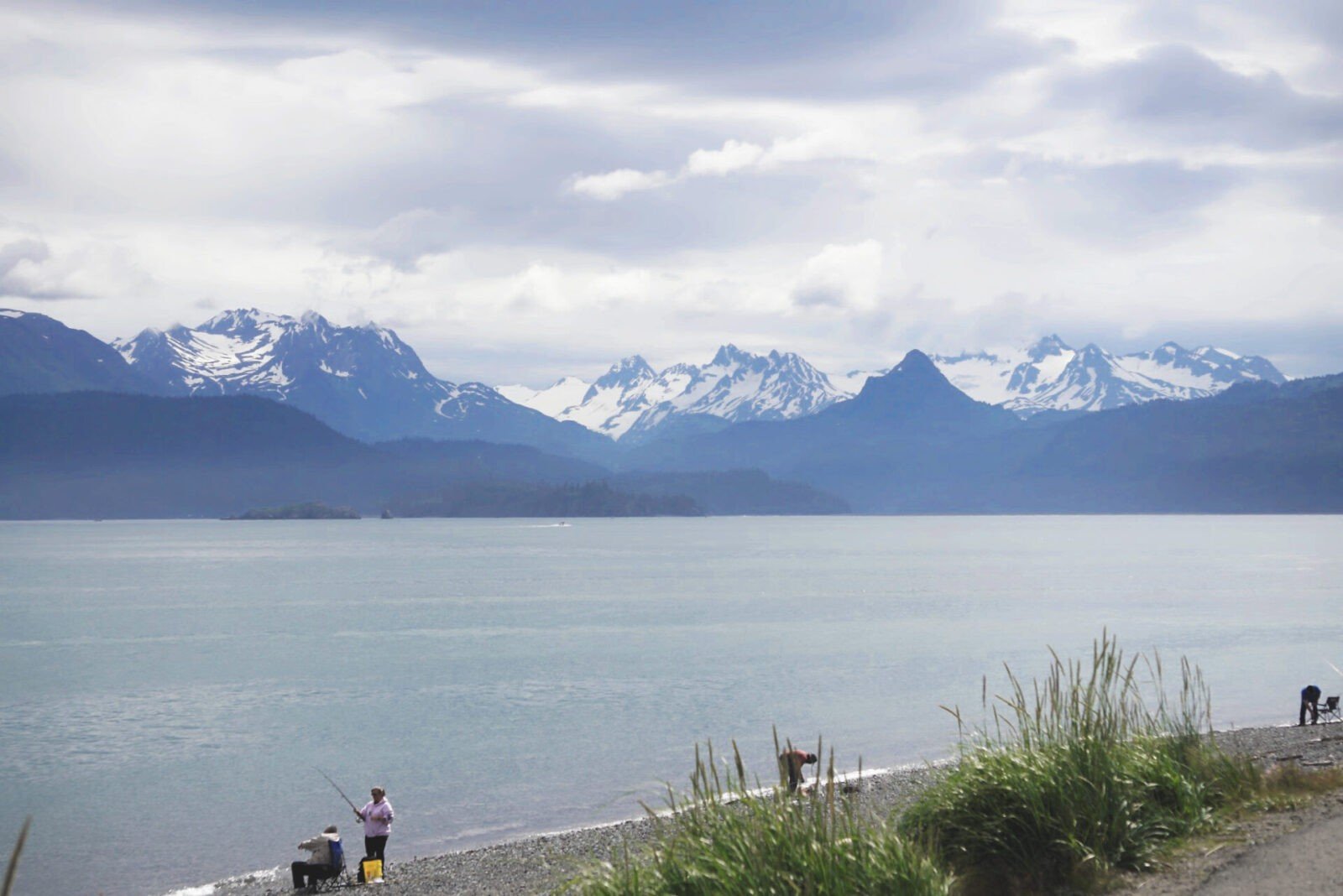
If you’re looking for a holiday destination that allows you to escape the crowds and enjoy a peaceful vacation, Alaska is a perfect choice. With the right planning, you can explore areas that are less crowded, providing a more serene and relaxed experience for you and your family.
Anchorage is a charming city surrounded by beautiful mountains and offers excellent museums. It’s a perfect mix of urban convenience and natural beauty.
Fairbanks is known for its historic gold mining past. This city offers a unique glimpse into the fascinating history of the area through great museums and exhibits, all with a peaceful ambiance.
Even in Juneau, which is known as a busy cruise destination, you can find many spots where you can enjoy some peace and quiet. Just step a bit away from the main tourist routes, and you will be surrounded by stunning nature.
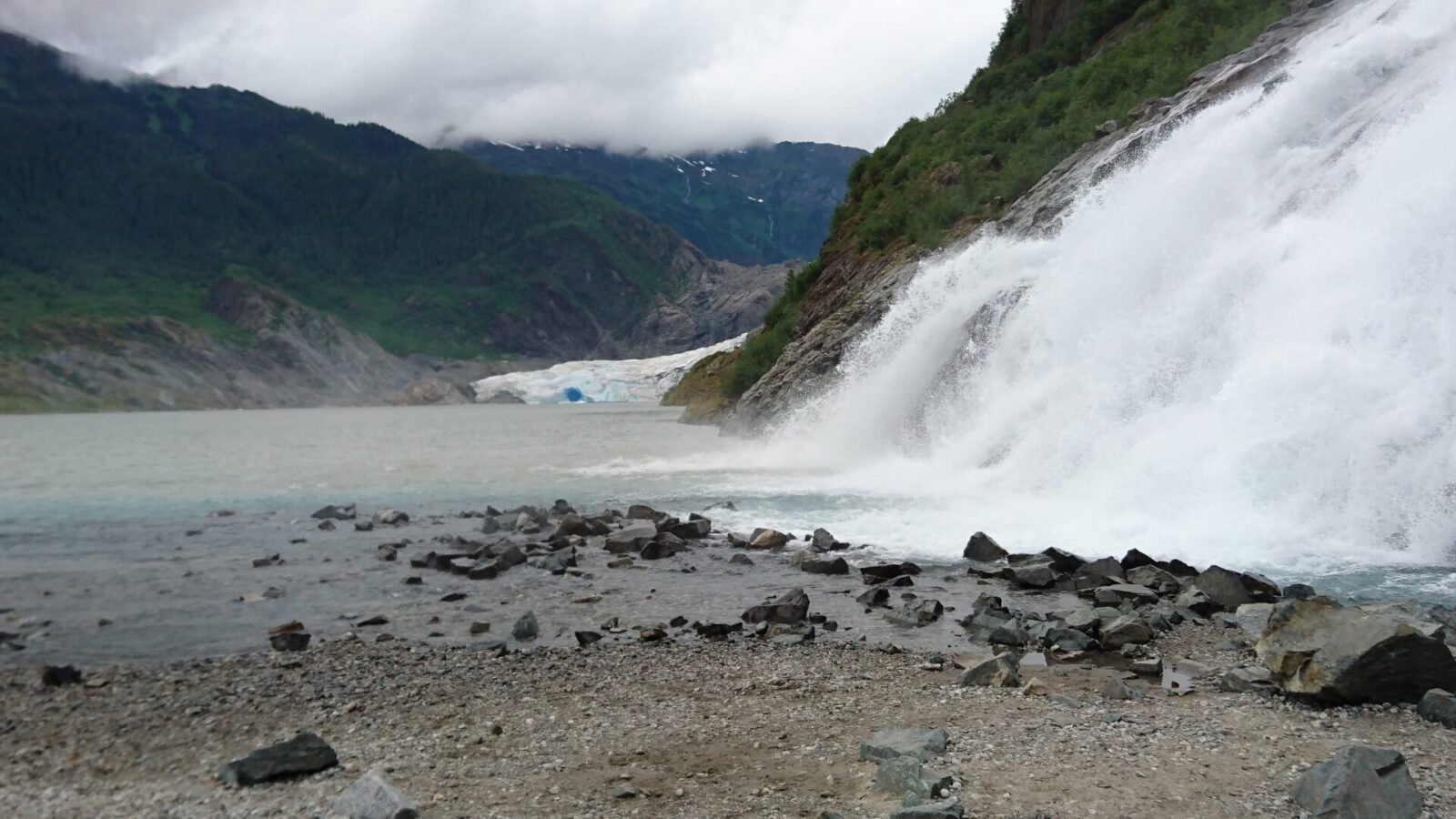
Consider visiting small charming towns away from the more touristic path. Places like Homer, Valdez, Palmer, and Girdwood are all wonderful. Most of them are easily accessible by car, and all offer many things to do.
More advanced travelers can discover Kodiak for an amazing bear-viewing experience away from the crowd or explore Haines, Gustavus, Wrangell, or Sitka in southeast Alaska.
In all of these places, you can enjoy the local culture, find plenty of outdoor activities, and connect with nature. These hidden gems offer a quieter and more intimate setting, allowing you and your family, including your autistic family member or friend, to relax and enjoy quality time together.
Seward is also a great Alaskan destination. The area is amazingly beautiful, with so many things to do. But on the other hand, Seward is a popular cruise port. It is quite expensive compared to other places, and some of the attractions there are very crowded. Additionally, It’s important to mention that during the 4th of July, Seward hosts a huge celebration and a well-known marathon that draws thousands of visitors from all over Alaska. While the festive atmosphere can be exciting for some, it may not be the ideal setting for autistic visitors. Therefore, we do recommend visiting Seward, but be aware of the potential crowds and plan accordingly – avoid getting there around the 4th of July and consider alternatives for big boat tours.
Please see our article about the 7.5 h Kenai Fjords National Park Cruise for more information.
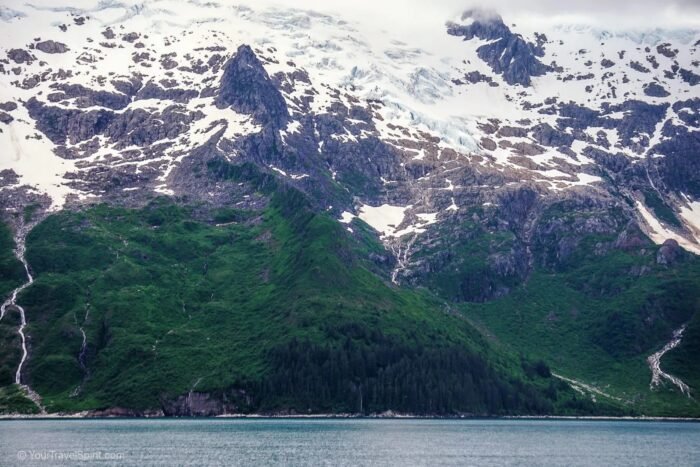
Very Friendly locals
Alaskans are often friendly and welcoming. This is especially true in smaller towns and rural areas where there is a strong sense of community. In all of the places we visited, we found it easy to start conversations with locals, who are more than willing to share their knowledge of the area and offer recommendations for places to visit or things to do. In fact, for us, meeting locals was one of the highlights of our trips.
Sure, experiences can differ from person to person, but in general, Alaska’s open and friendly vibe makes it a great place for anyone looking for a welcoming and accepting environment.
Accessibility and Accommodations in Alaska
As a tourism-focused destination, many places will listen to your specific requests and try accommodating your needs. It is important, though, that you contact the relevant properties and service providers in advance to discuss your specific requirements and to inquire about their offerings to ensure a smooth and comfortable experience during your visit.
Additionally, there is an increasing awareness among businesses and attractions in Alaska about accommodations for sensory sensitivity and accessibility for individuals with autism. For example, the Alaska SeaLife Center in Seward offers sensory sensitivity bags that you can borrow during your visit. These bags provide tools that help manage potential sensory overload.
Autism-Friendly Activities in Alaska
Alaska offers so many activities suitable for anyone, including autistic travelers. Some of those activities are:
Wildlife Viewing
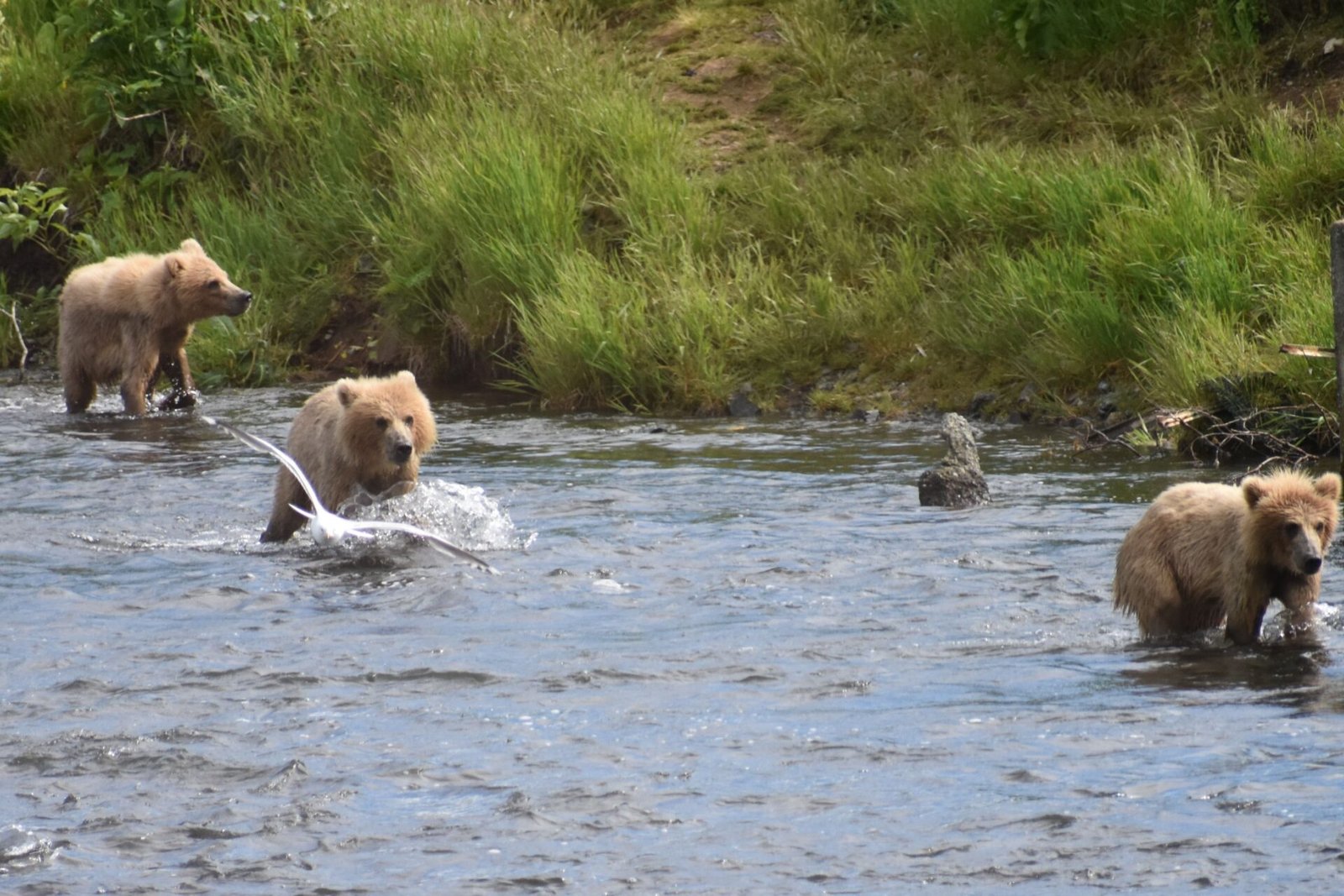
Alaska is an amazing destination for wildlife lovers, including autistic ones. There are so many activities you can enjoy, as well as spontaneous sightseeing. For example:
Eagles – You can spot eagles by the water and inland in many places. Some boat tours in several places will also show you specific points where eagles nest. There are great chances to spot eagles near salmon hatcheries as well as in any fishing harbor when the fishing boats return from the sea and the fishermen fillet the fish caught.
Moose – You have a good chance to see moose in the Anchorage area, especially in Earthquake Park, Kincaid Park, or Potter Marsh.
Please be aware that certain areas have a greater chance of moose sightings near roads. It is important to maintain a safe distance from the vehicle in front of you if there is one, and stay alert to the roadside as moose may appear unexpectedly.
Sea otters, seals, and sea lions – On almost any boat tour, you will see sea otters, seals, and sea lions. You can spot sea otters from land in several harbors.
Whales – Alaska provides excellent opportunities for whale watching. Depending on the time of year and location, you may see humpback whales, blue whales, grey whales, fin whales, and orcas.
Seward and Juneau provide guided whale-watching tours, while Prince William Sound boat tours from Valdez and Whittier, as well as Homer, Kodiak, and other places in the southeast, also offer chances to spot whales.
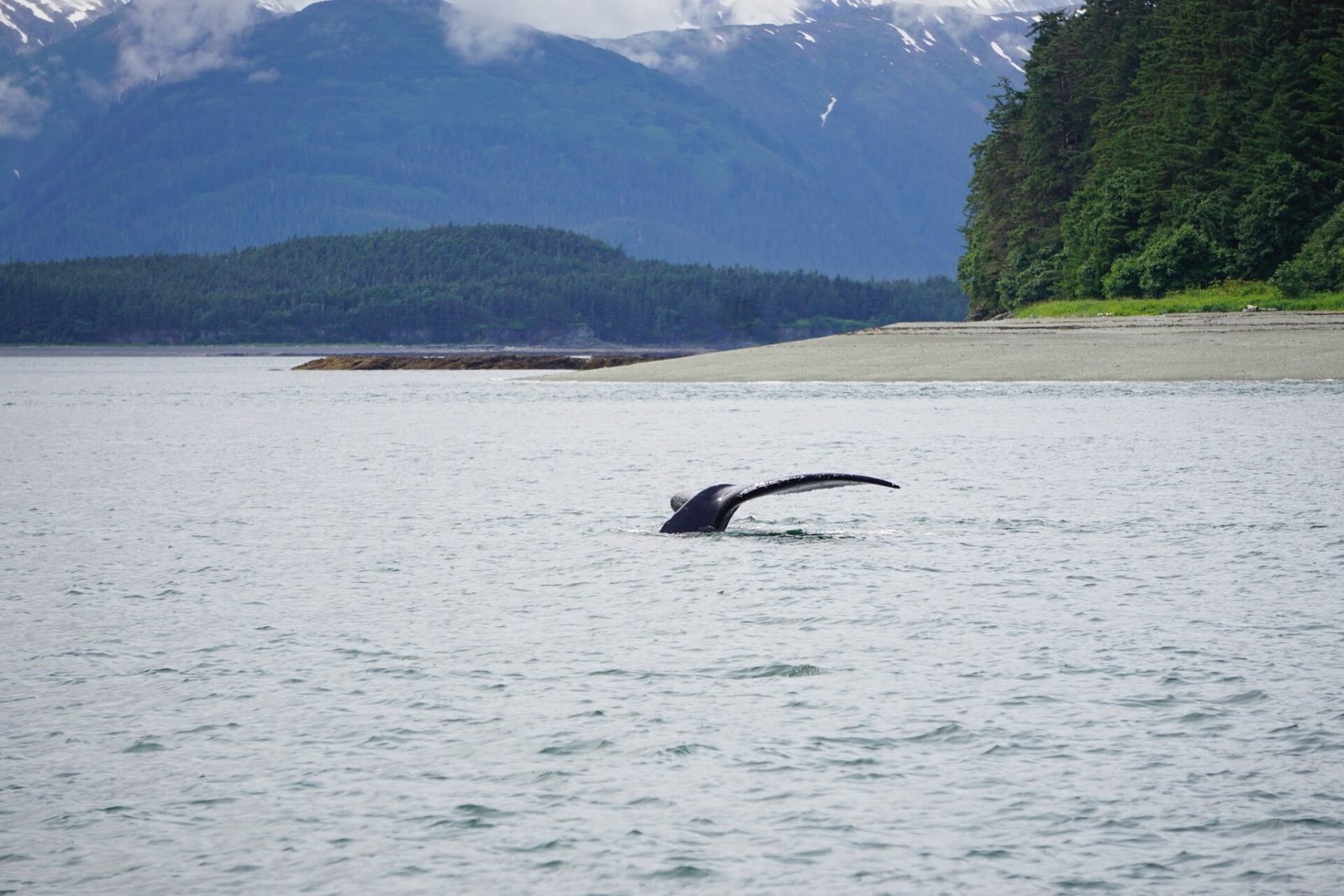
If you are an avid whale enthusiast, a tour to Point Adolphus in the Icy Strait is a must. The nutrient-rich waters of Point Adolphus are renowned as one of the best whale-watching locations in the world. We had the pleasure of enjoying four exceptional whale-watching tours from Gustavus on several occasions, and all of them were no less than superb!
Bears – Alaska is a bear country, and you can see black and brown bears around with some luck. You may also be lucky enough to spot bears from the water on glaciers or whale-watching boat tours.
You can also take bear-viewing tours, which guarantee that you see bears. These tours take you to prime bear locations, where you can observe bears in their natural habitat. Note that those tours tend to be pricey.
glacier viewing boat tours
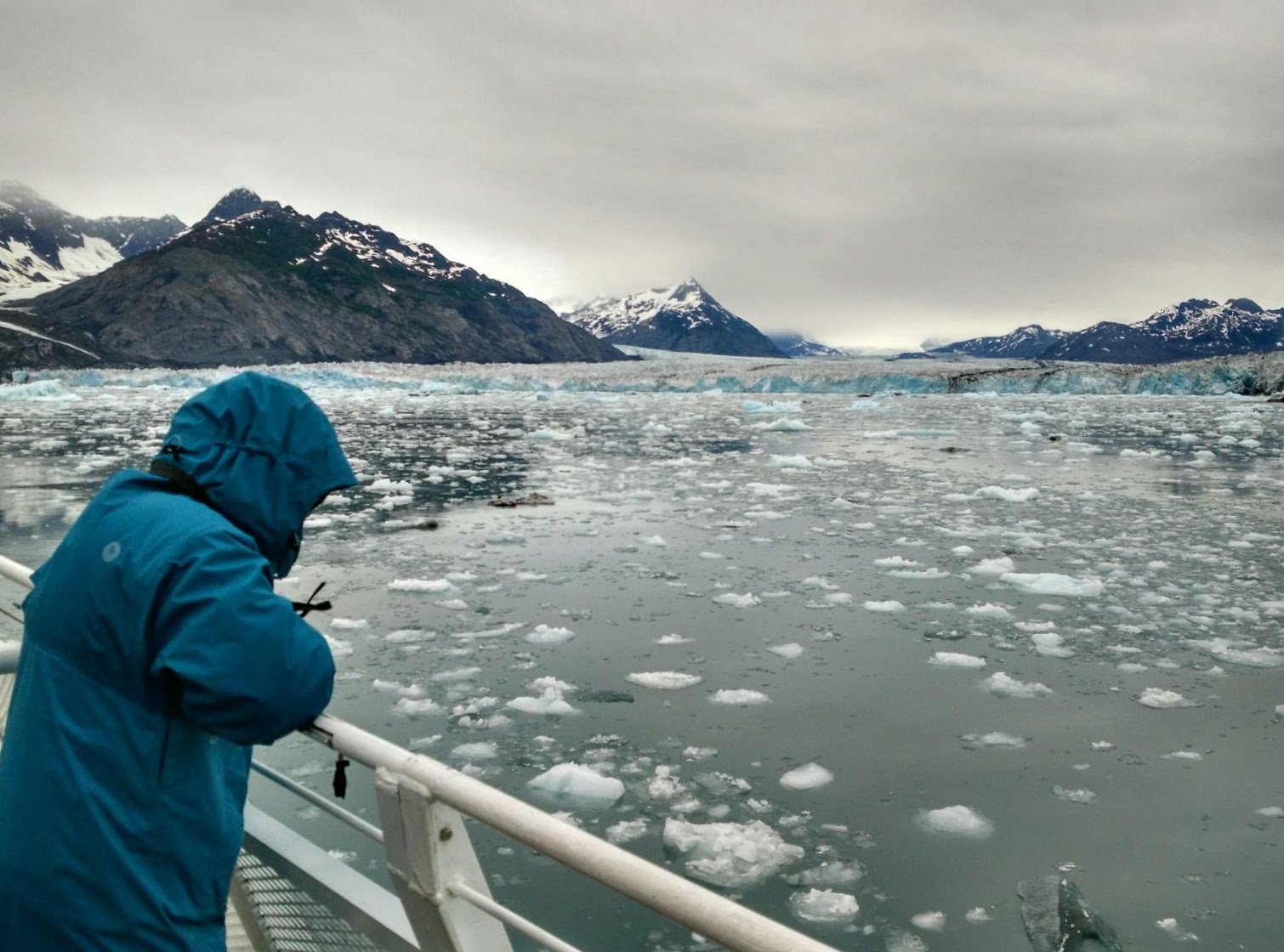
One of the highlights of a trip to Alaska is getting up close to a majestic glacier. Glacier-viewing boat tours in Alaska offer an amazing experience that can leave you speechless. The crisp air near the glacier and the sound of cracking ice create a truly unforgettable experience. And if you are lucky, you may see massive chunks of ice calving into the water. Witnessing this amazing natural phenomenon is truly breathtaking.
You can find glacier-viewing boat tours in several places in Alaska. One of the best places to embark on such a tour is the stunning Prince William Sound. Tours are available in Whittier and Valdez, offering access to different parts of the sound. Prince William Sound waters are quiet, and the tours in this area are also suitable for those prone to seasickness.
Another popular destination for glacier-viewing boat tours is Kenai Fjords National Park from Seward. Several tours are available here that vary in the number of glaciers visited. It is important to note several things here:
- Some tours only focus on wildlife and do not visit glaciers.
- In order to get to the glacier area, the boat has to pass through the open sea for a short while, which might be a bit rough (depending on the weather). Consider this if anyone in your company is prone to
- Kenai Fjord National Park is a popular destination, and the large tour boats could be crowded. This wasn't a big issue for us as we got our seats at a table and had our own space, but it's worth noting that. If this is a problem, consider taking a tour on a smaller or private boat (which is more expensive).
Reference: please see our post about the 7.5 hour Kenai Fjords National Park Cruise.
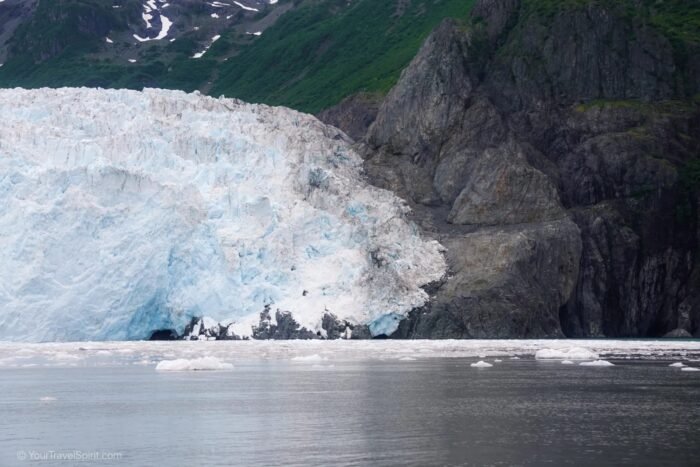
Another popular location is Portage Glacier at Portage Lake, close to Whittier, which can be viewed on a short but beautiful tour.
In the southeast, you can find boat tours to the breathtaking TracyArm from Juneau to LeConte Glacier from Wrangell and the crown Jewel – Glacier Bay National Park boat tour from Gustavus.
We must also mention Hubbard Glacier, which is mostly accessed by cruise ships but can also be accessed by a boat tour from Yakutat for advanced travelers.
In most of those locations, you can find a range of tours with varying durations and boat sizes. While a smaller boat offers a more intimate experience, it is usually more expensive. Additionally, larger boats provide greater stability and a smoother ride for those who are prone to seasickness.
Many tours offer snacks and drinks; the longer tours mostly provide sandwiches or hot meals. Also, on many tours, a naturalist or a guide will provide information throughout the journey, adding value to the experience. There are ranger activities on some National Park cruises in Kenai Fjords and in Glacier Bay, and the young travelers can earn a Junior Ranger badge.
Glacier viewing by boat is a magical experience for us, and we try to go on such tours whenever possible. However, many of those tours can take several hours (up to 8.5), so not every tour is suitable for everyone. Consider this when selecting the right tour for you and your company. On the tour itself, be prepared with snacks, reading material, and other activities to keep you and your kids entertained during the long hours of sailing.
hiking on a glacier
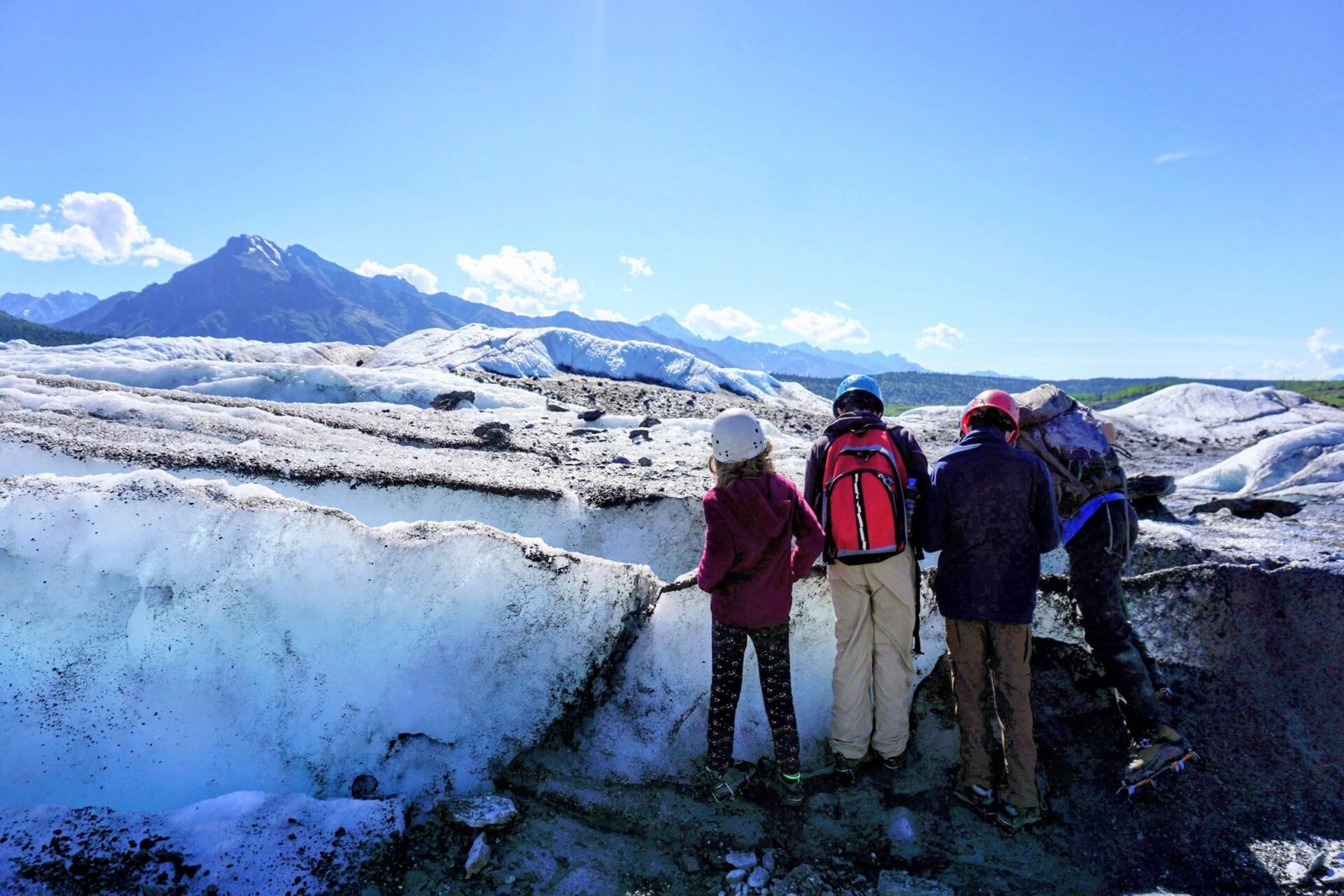
Glacier hiking in Alaska is a unique and enchanting experience that allows you to experience the stunning beauty of Alaskan nature from a close distance. During the hike, you will see towering ice formations, crevasses, and crystal-clear blue glacial pools up close. The surreal beauty of the pristine ice creates a powerful yet peaceful and serene atmosphere.
Please note that a glacier landscape is very dangerous and should only be explored with the guidance of experienced professionals!
Also, it is important to mention that glacier hiking requires a certain level of physical fitness and mobility. Make sure to consult with the tour operator before booking a tour to ensure that it suits you and your company if you have any concerns.
The most popular (and easily accessible) glacier is the stunning Matanuska Glacier on the Glen Highway. Other options for non-professional visitors are Exit Glacier near Seward and Root Glacier in Wrangell-St. Elias National Park and Mendenhall Glacier in Juneau.
There are several tour companies that offer guided glacier hikes, ensuring the safety of all participants. Tours are usually offered in small group tours or private tours. When you go on the tour, the guide will provide you with the required safety gear, like helmets and crampons, and teach you how to safely hike on the icy landscape.
hiking in nature
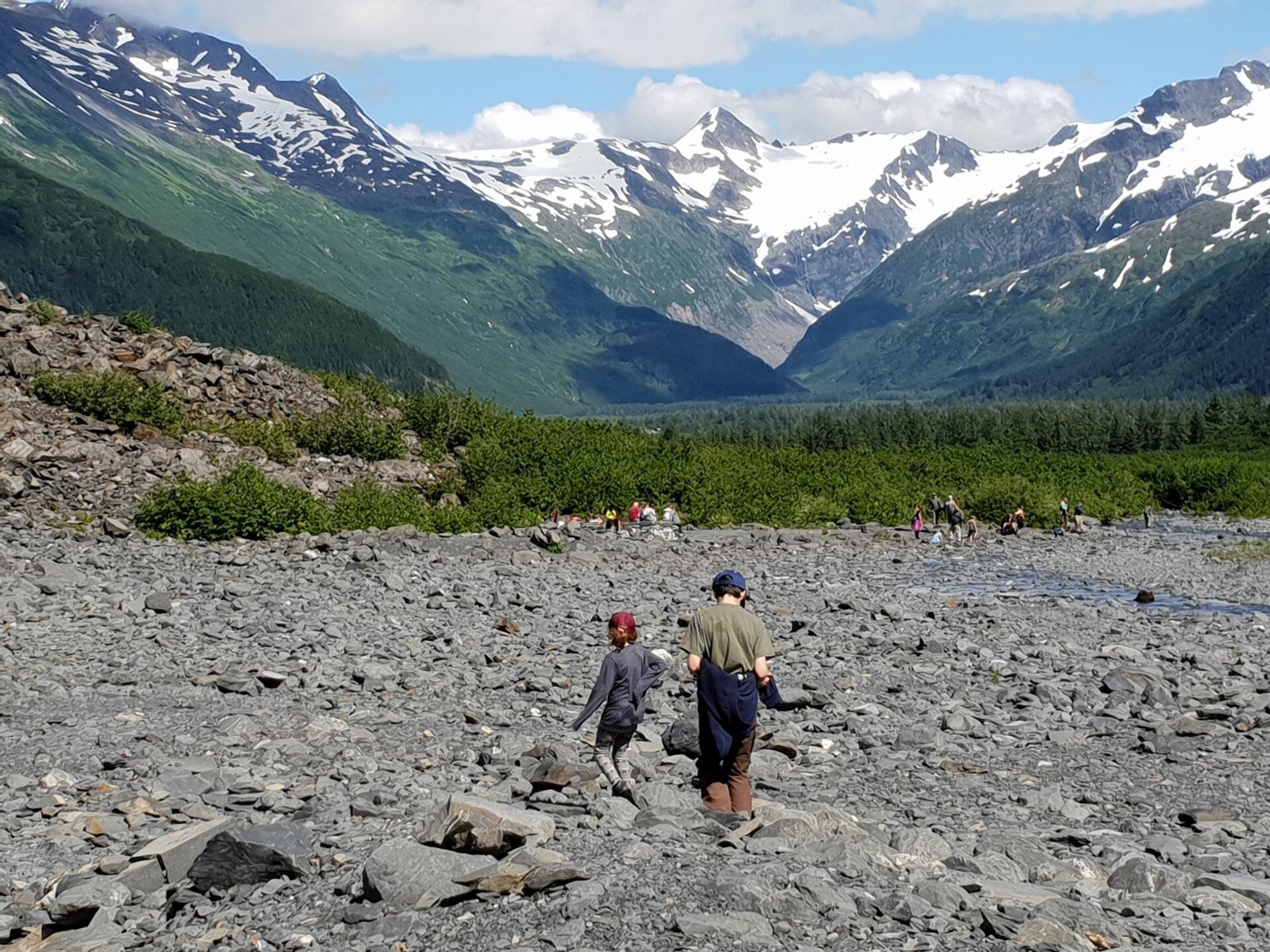
Immerse yourself in one of the most breathtaking landscapes on Earth. Alaska’s natural beauty is exceptional! From lush forests to snow-capped mountains and pristine lakes. You may even encounter diverse wildlife like bears, eagles, and moose. Make sure you are familiar with the safety guidance regarding wildlife encounters.
You can find hiking trails suitable for different difficulty levels almost everywhere. Marked trails, picnic spots, and occasional restroom facilities are available in many places.
Note! Alaska is a bear country. To stay safe while hiking, be mindful of your surroundings and make plenty of noise. For extra safety measures, consider bringing along bear spray or bear bells with you.
unique museums
There are many museums in Alaska that display the state’s diverse history and culture. These museums cover various topics such as art, science, native culture, and local history. Some of our top recommended museums include:
Anchorage Museum
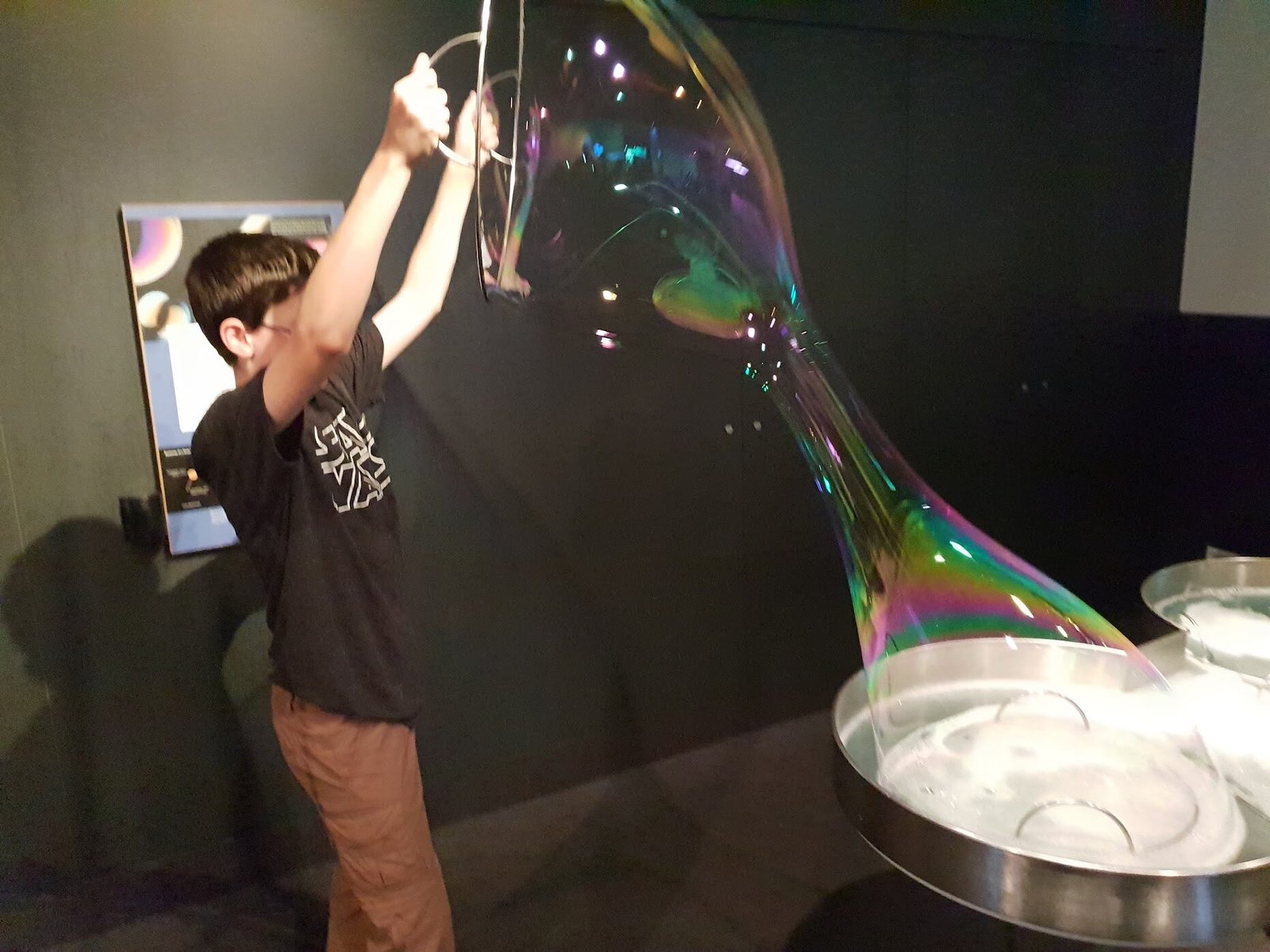
Location: Anchorage
One of Alaska’s premier cultural institutions. The Anchorage Museum at Rasmuson Center displays art, history, and science. You can explore a wide range of exhibits, from traditional Native Alaskan artifacts to contemporary art pieces that reflect the modern life in Alaska. The Discovery Center offers great interactive exhibits for children.
Alaska Native Heritage Center
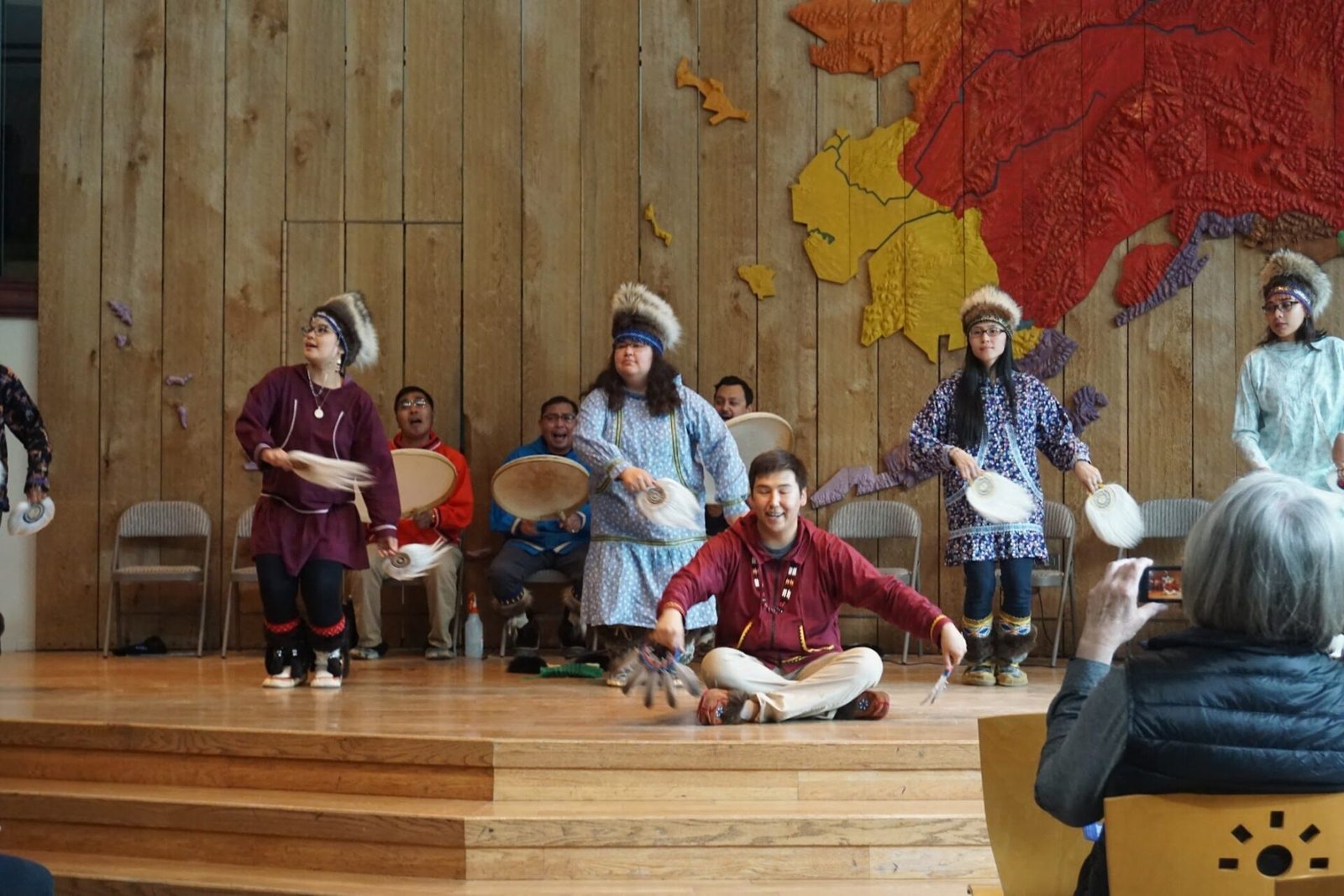
Location: Anchorage
This museum showcases the rich cultural heritage of Alaska’s native communities through fascinating exhibits, storytelling, and traditional performances such as songs, dances, and sports. We enjoyed this museum very much!
Museum of the North
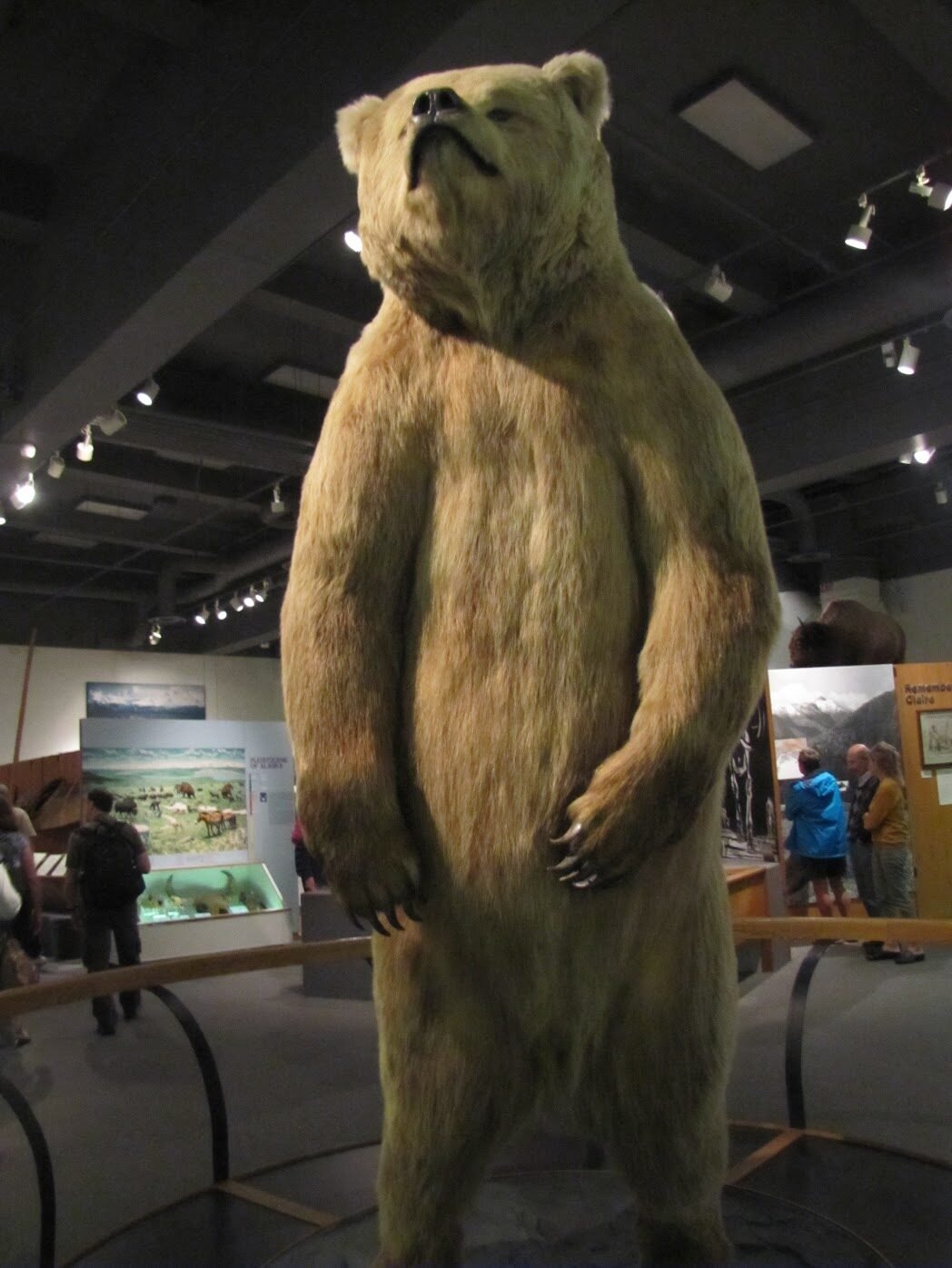
Location: Fairbanks
Located on the University of Alaska Fairbanks campus, the Museum of the North Provides an overview of Alaska’s wildlife, people, and landscapes and offers a unique glimpse into Alaska’s ecosystems and the adaptability of life in the far north. The exhibits include extensive collections of Alaskan art, archaeological finds, and comprehensive displays of the Arctic wildlife. Notable features include a display of the state’s dinosaur fossils, a woolly mammoth skull, an 8 foot 9 inch (2.67 meter) stuffed brown bear, and a gallery dedicated to the Aurora Borealis.
Alaska Aviation Museum
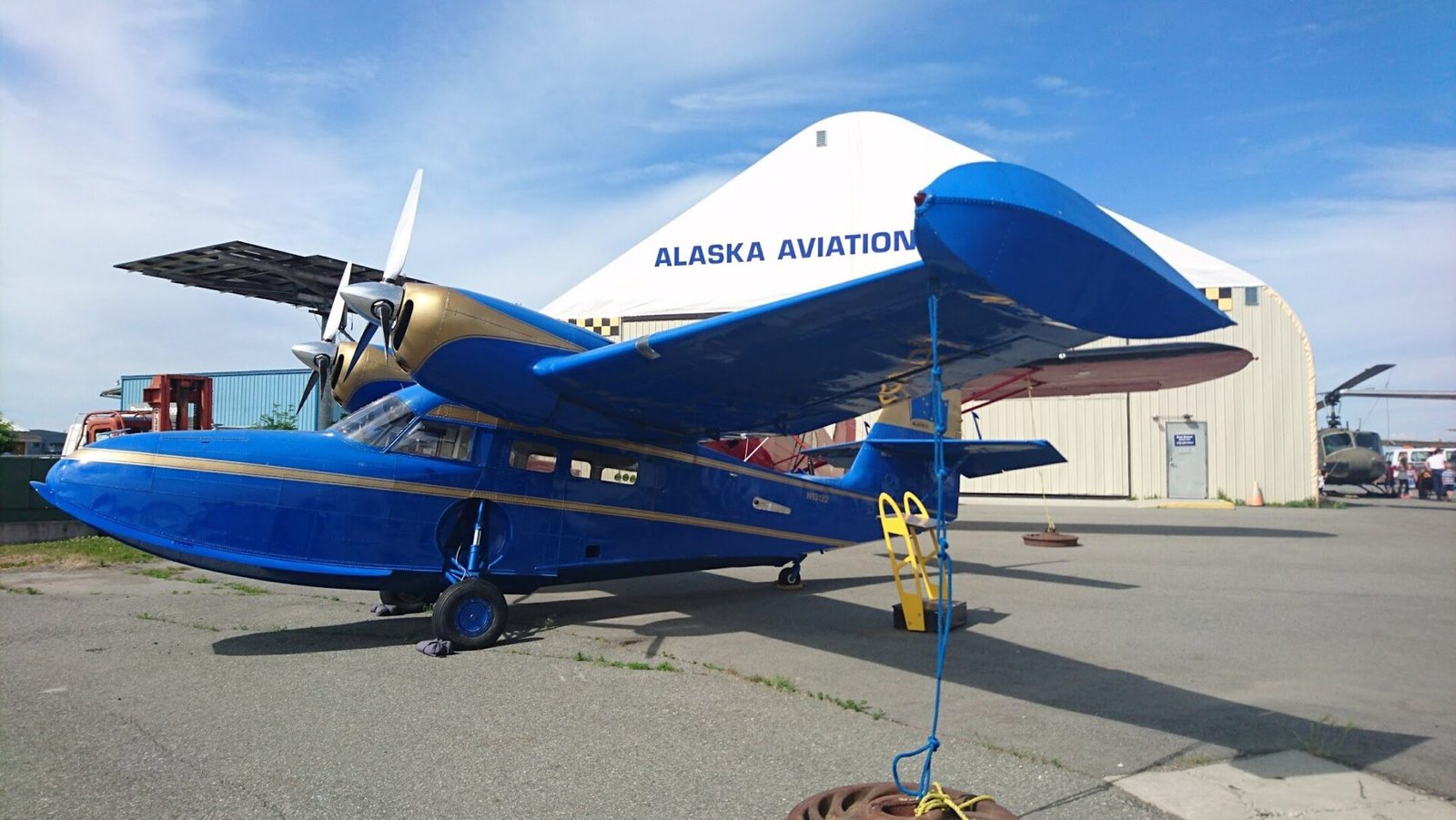
Location: Anchorage
Alaska Aviation Museum is located near Lake Hood, the largest floatplane harbor in the world. The museum showcases Alaska’s rich aviation history, including vintage aircraft and interactive exhibits. You can learn about the first flights in Alaska, bush pilots, and the role of aviation in the state’s development.
Sealaska Heritage Institute
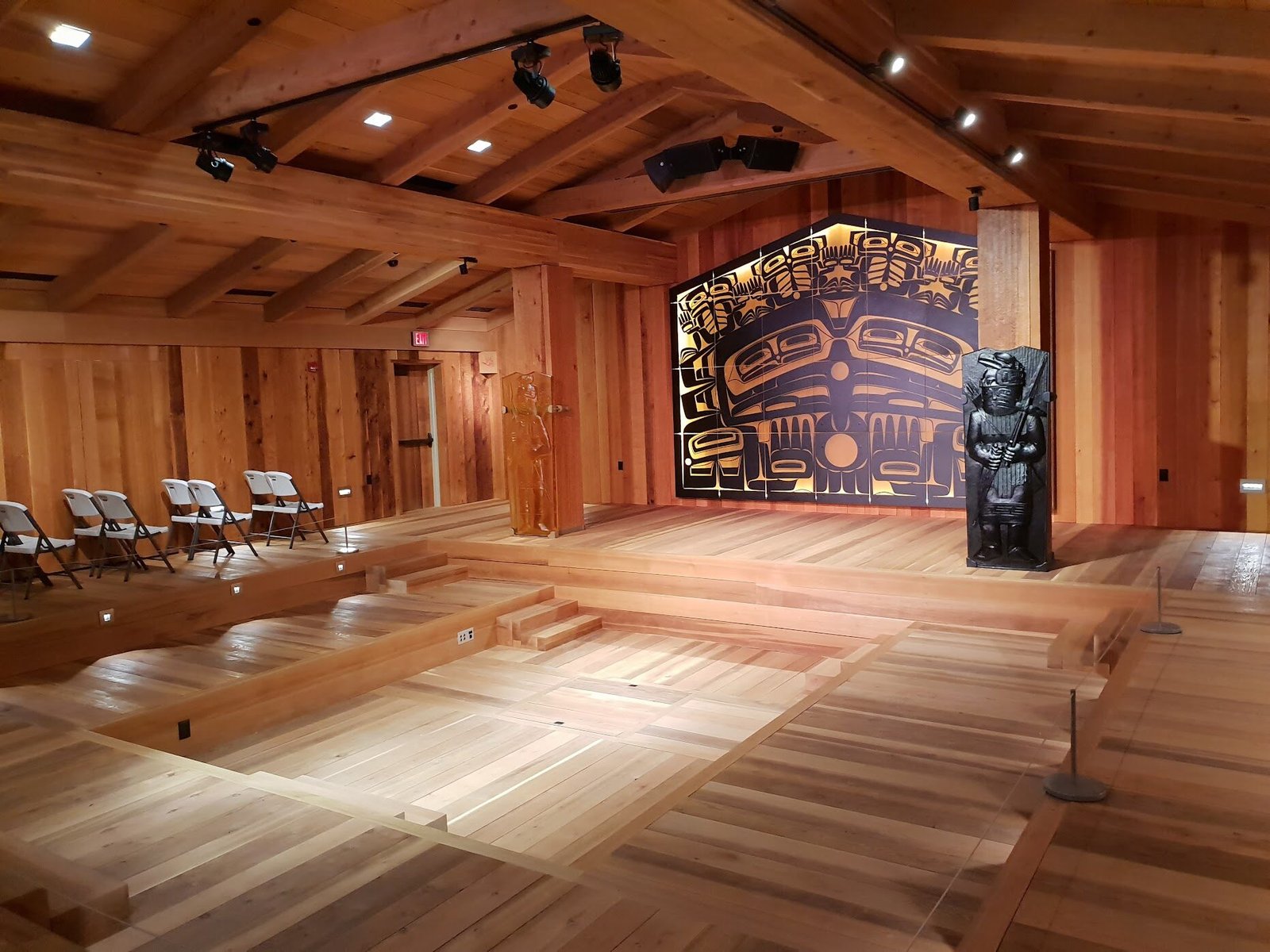
Location: Juneau
This cultural hub is committed to preserving the native cultures of the southeast: Tlingit, Haida, and Tsimshian cultures. The institution provides exhibits, art, and educational programs that teach about the region’s heritage and how it has influenced modern Alaskan society.
Pioneer Park
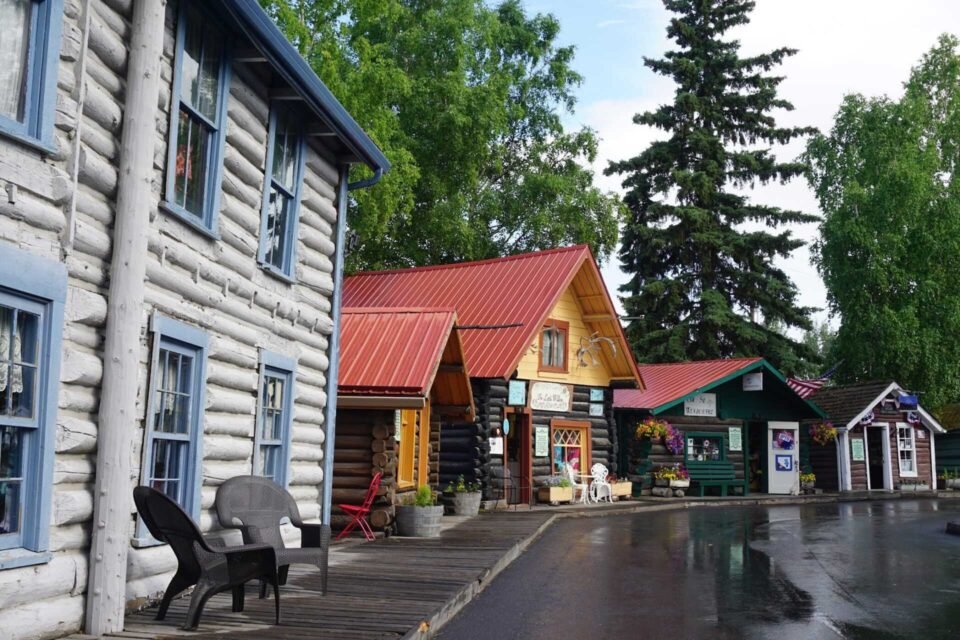
Location: Fairbanks
Pioneer Park is a charming historical park that offers a glimpse into the pioneering past of Alaska. It is a family-friendly destination with attractions and activities for all ages.
One of the highlights of Pioneer Park is a replica of a Gold Rush Town. Walking through the streets, you can experience what life was like during Alaska’s gold rush days. You can explore old saloons and shops with authentic artifacts. There are also several mini-museums showcasing the days of Alaska’s early settlers.
Wildlife conservation & rehabilitation centers
Wildlife conservation and rehabilitation centers are important for preserving and protecting Alaska’s unique wildlife. Two prominent centers in the state are:
The Alaska Wildlife Conservation Center

Location: Portage Valley
The Alaska Wildlife Conservation Center, located at the tip of Turnagain Arm, is surrounded by magnificent scenery. The center focuses on rescuing and rehabilitating injured and orphaned animals. You can see native Alaskan species like brown and black bears, moose, wolves, eagles, bison, muskox, and more. The center also educates the public about wildlife conservation in the state.
The Alaska SeaLife Center
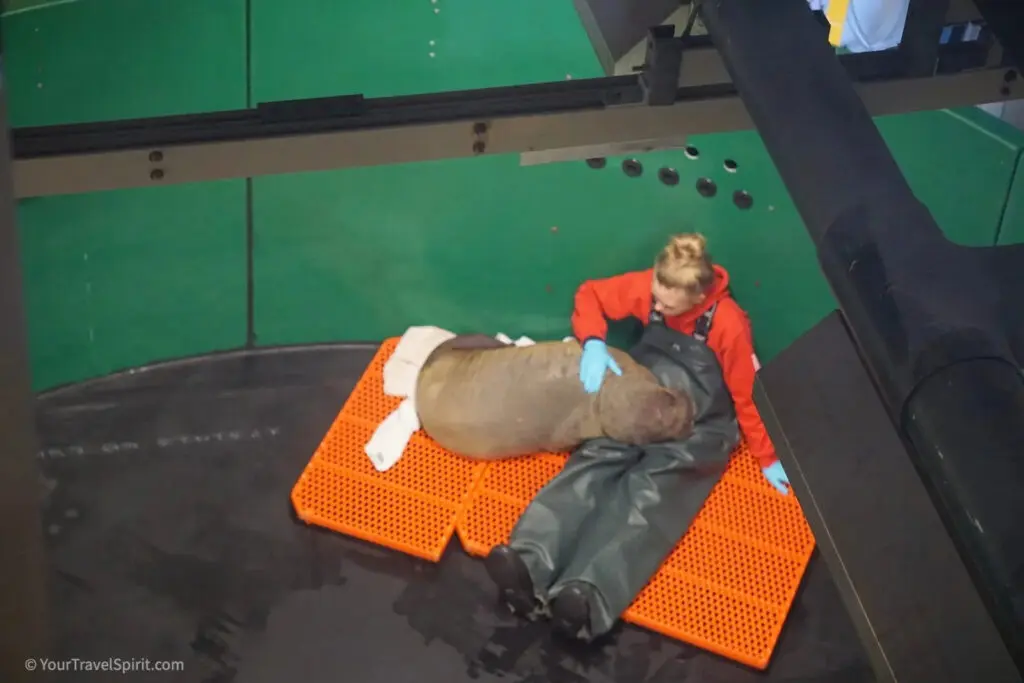
Location: Seward
Situated in the picturesque town of Seward, the Alaska SeaLife Center focuses on marine wildlife conservation and research. The facility offers visitors the opportunity to learn about the diverse marine life of Alaska. Through interactive exhibits and educational programs, you can better understand the importance of protecting the oceans and the life that inhabits them. The Alaska SeaLife Center also plays a vital role in rescuing and rehabilitating injured and stranded marine animals.
The Center was founded following the 1989 Exxon Valdez oil spill, aiming to learn about and reduce the effects of human activities on marine ecosystems.
The Alaska SeaLife Center was the first organization in the state of Alaska to be certified sensory-inclusive by KultureCity. The staff have received training and are prepared to assist individuals with sensory disabilities during their visit. The facility provides sensory bags containing noise-canceling headphones, fidget tools, verbal cue cards, and weighted lap pads at no cost. Visitors are also informed about areas with high noise levels and can use a designated quiet area when necessary.
Other activities in nature
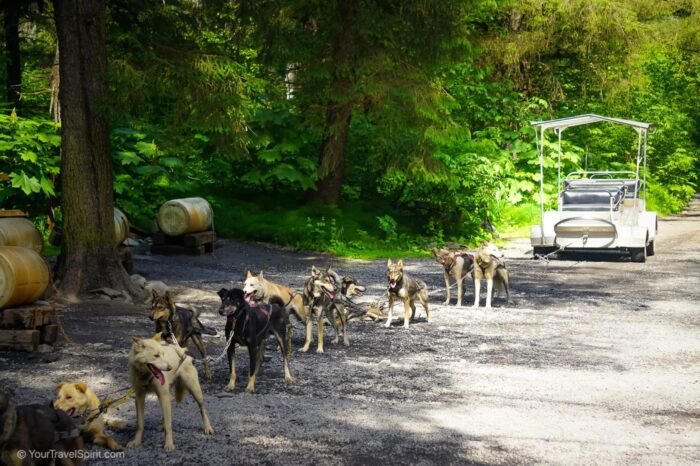
For those looking for a different kind of outdoor adventure, here are some more ideas to consider:
- Go tide pooling. Explore marine life and learn about the local ecosystem.
- Embark on a guided kayaking tour by a glacier.
- Try dog sledding: the dogs are being trained on a dirt road in the summer. You can experience the experience of sitting in a cart led by a group of huskies while learning about the fascinating history of dog sledding in Alaska. You can also find dog sledding on a glacier, which requires a helicopter ride and is much more expensive.
- Fishing, if you are a fishing enthusiast, either at the sea or in pristine rivers and lakes.
- If you're adventurous, consider rafting. Alaska provides rafting opportunities suitable for all skill levels.
- Go Gold panning For a unique and enriching experience. This activity allows you to step back in time and immerse yourself in the rich history of the Gold Rush era.
Modern Facilities and Infrastructure
As a US state, Alaska offers modern facilities and infrastructure that ensure a safe and comfortable trip. Here are some highlights:
1. Major cities like Anchorage, Fairbanks, and Juneau have international airports offering easy access to the state.
2. Transportation: The road network in Alaska allows convenient travel between many cities and towns in the southcentral and interior areas. Additionally, car rental services are available for those who prefer independent exploration.
Although Alaska lacks an extensive railway system, it does provide a few scenic train journeys through stunning landscapes.
Additionally, the ferry system in Alaska provides a unique and scenic way to explore the state’s coastal beauty and remote communities.
3. Accommodations: From luxury resorts to modern hotels, from cozy cabins and wilderness lodges to camping sites. Whether you prefer modern amenities or a rustic experience, you can find a wide range of accommodations
4. Medical Facilities: you can find well-equipped modern medical facilities in Anchorage, ensuring access to healthcare services if needed during your trip.
5. Supermarkets and restaurants: When sticking to the south central area and other major cities, there are many supermarkets and restaurants that provide a range of local and international cuisines. You can easily find options to suit your dietary preferences and requirements.
6. Communication: Cell phone coverage is available in populated areas. Note that cell phone coverage may be limited or unavailable in more remote or rural parts of Alaska. This includes some of the roads that connect different communities.
Conclusion
In conclusion, Alaska is an ideal destination for travelers with autism due to its serene natural beauty, friendly locals, a wide range of autism-friendly activities, and modern infrastructure.
So, if you’re planning your next holiday and are looking for a destination that caters to the needs of individuals with autism, consider exploring Alaska. For us, it is the best autism-friendly destination.
Thank you for taking the time to read this! If you have any questions or would like to share your experience, please leave us a comment below.
You can save this guide for later on Pinterest by clicking on the photo below.
off the beaten path Netherlands: Hanseatic Cities
If you’re planning a trip to the Netherlands and looking for off-the-beaten-path places, you should not miss the chance to explore the country’s beautiful Hanseatic cities. These cities are known for their rich history, lovely architecture, and charming atmosphere.
In this article, we will explore the Hanseatic cities in the Netherlands, each with unique character and charm. We aim to inspire you and help you plan a trip that uncovers these hidden gems. We hope this gets you curious and ready to plan your next trip to the Netherlands!
Disclosure: Some of the links in this post may be affiliate links. If you decide to book through these particular links, we will receive a small commission from your purchase at no extra cost to you. We are truly grateful for your support!
Historical Significance of the Hanseatic League
The Hanseatic League was a medieval commercial and defensive confederation of market towns and merchant guilds in Central and Northern Europe. It was founded in the 12th century and grew rapidly in the 13th – 14th centuries. At its peak, the League had over 200 member cities across seven modern-day countries.
The League played an essential role in the development of trade and commerce in Europe during the Middle Ages. By facilitating the exchange of goods and ideas between different areas, leading to the growth of cities and the rise of new economic centers. The League also played an important role in expanding international trade and diplomacy and shaping European politics and culture.
Hanseatic Cities in the Netherlands
The Hanseatic League was particularly important in the Netherlands, where it significantly impacted the development of trade and commerce, playing a crucial role in the Dutch economy.
To understand the significance of Hanseatic cities in the Netherlands, it is important to look at their geographic locations. Several Dutch Hanseatic cities are located along the shores of the former Zuiderzee, today the Veluwemeer (the Veluwe Lake) today, that connects to the Ijsselmeer (the Ijssel Lake). Other cities are located along the Ijssel River and its branches, which runs through central and eastern Netherlands.
The IJssel River was a vital trade route during medieval times, connecting the Dutch Hanseatic cities to the North Sea and the rest of Europe. This made it an ideal location for trade and commerce routes, allowing the Hanseatic League to flourish in this region.
The Kogge, or cog, was a type of ship that was used for trade during the medieval period. With its wide and flat bottom, the cog was designed to carry a significant amount of goods while navigating shallow waters. This innovative design allowed cities in the Netherlands and across Europe to expand their trading networks, contributing significantly to the economic prosperity experienced during the Hanseatic League’s peak.

Back in the medieval period, there were 22 Hanseatic cities in the Netherlands.
Today, the cities of Deventer, Zwolle, Kampen, Harderwijk, Elburg, Zutphen, Hattem, and Hasselt are known as the Ijssel Dutch Hanseatic cities. Those cities, located along or near the IJssel River, are real hidden gems that provide a glimpse into the rich heritage of the country.
Here is a map of those cities:
Hattem
Hattem is located between the Veluwe forests and the IJssel river. Its rich history is still visible in the monuments, medieval streets, and fortress walls. You can easily explore by foot the historical city center and its well-preserved buildings, including the Great Church and the Dijkpoort gate. Modern Hattem has a lot to offer as well, with its charming shops, cafes, and restaurants.
One of the interesting attractions in Hattem is the Anton Pieck Museum. This Dutch painter and illustrator is known for his nostalgic illustrations of traditional Dutch villages. The museum showcases a vast collection of his work, including paintings, drawings, and tools that he used for his artwork. https://www.antonpieckmuseum.nl/tentoonstellingen/vaste-tentoonstelling/
Hattem is surrounded by beautiful nature. The nearby Veluwe forests offer endless opportunities for hiking, biking, and horseback riding.
Harderwijk
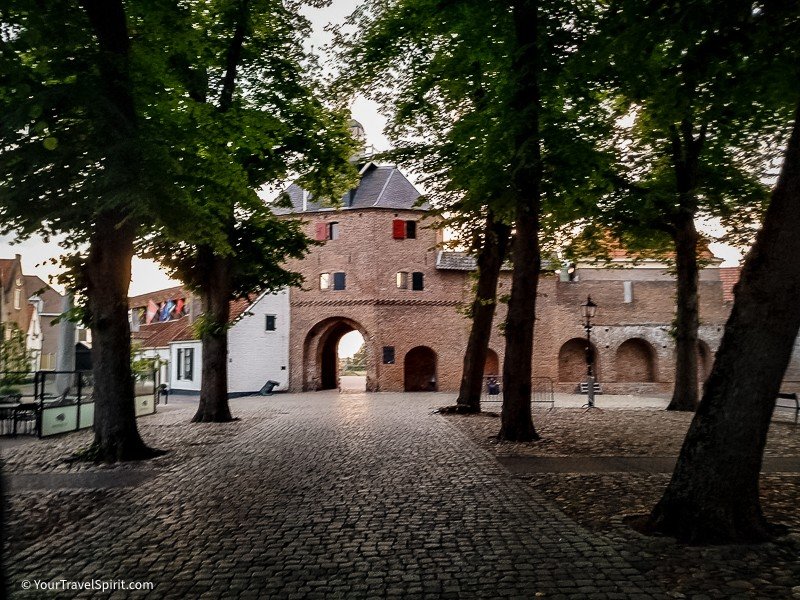
If you’re looking for a city with a mix of history, culture, good atmosphere, and natural beauty, then Harderwijk is the perfect destination. This Hanseatic city is located on the edge of the Veluwe forest and has a rich fishing tradition that dates back centuries. Its beautiful location on Veluwemeer’s (Veluwe Lake) shores and well-preserved historical center make it a popular tourist destination for locals.
In the streets of the old center and along the waterfront in the marina, you will find many cafes, restaurants, and cute shops.
Harderwijk is known for its fishing tradition, and you can still see evidence of this today. The city’s harbor is home to a number of fishing boats, as well as several yachts.
There are a number of local festivals that take place throughout the year. One of the most popular is the Aaltjesdagen, a three-day festival celebrating the city’s fishing heritage. During the festival, you can enjoy live music, food, and drinks and watch traditional fishing demonstrations. The next festival is planned for June 7th-9th in 2024 (See more information at https://www.aaltjesdagen.nl/#Aaltjesdagenbegint).
Overall, Harderwijk is a beautiful and historic city that is definitely worth a visit, whether you’re interested in learning about the city’s history or just want to enjoy some of the local relaxed atmosphere.
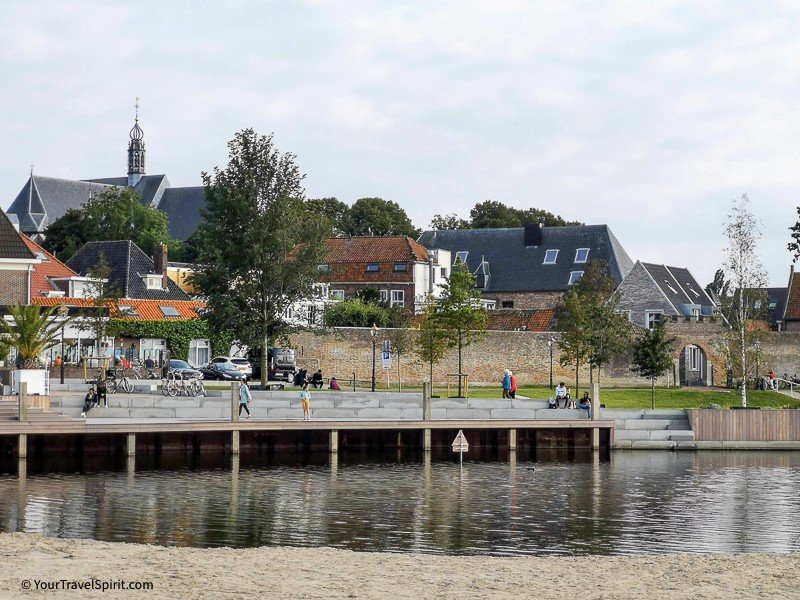
Reference: See our post about Harderwijk.
Zwolle
Zwolle is the biggest city in the region of Overijssel. This charming city is located on the banks of the river IJssel. It is also a university city, with a large student population that brings a lively and vibrant atmosphere to the city.
One of the main attractions in Zwolle is its well-preserved medieval old center. Here you can find beautiful historical buildings, such as the Sassenpoort (Saxon Gate) and Grote Kerk (Great Church). The old town also has many lovely cafes, restaurants, and small shops, and it is perfect for a leisurely stroll.
Beside its historical charm, Zwolle has several art galleries and museums. The most famous of them is Museum de Fundatie that is considered as one of the finest museums in the Netherlands. There are also many festivals and events that take place in the city throughout the year, as well as a lively student nightlife scene with many bars and clubs.
If you are a nature lover, Zwolle also offers many parks and green spaces to explore, such as the beautiful Park Eekhout and Wezenlandenpark. You can take a relaxing walk or have a picnic in these peaceful surroundings.
Zwolle is easily accessible by train, making it an ideal day trip destination.
Overall, Zwolle is a picturesque city that offers a perfect blend of history, culture, and lively atmosphere.
Deventer
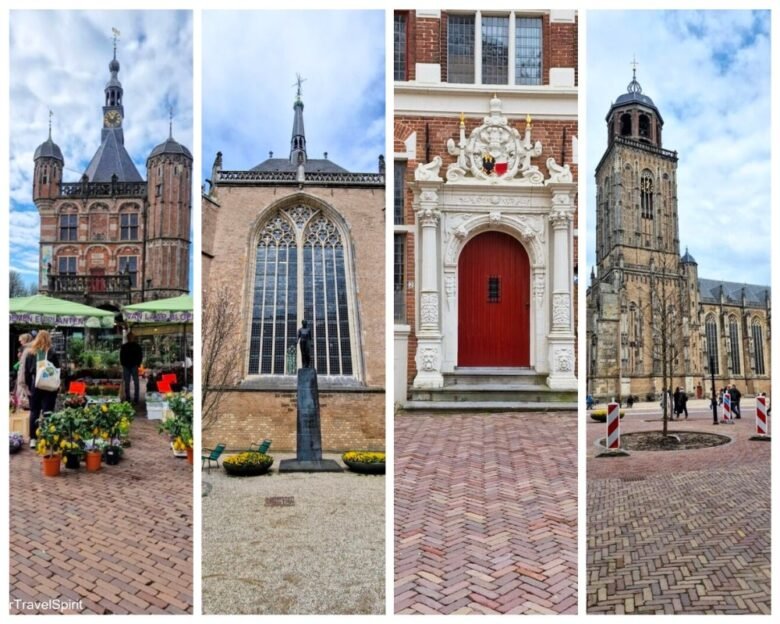
Deventer is a charming Hanseatic city located in the province of Overijssel, known for its rich history and cultural events. Deventer is indeed one of our favorite places to visit in the Netherlands. If you can visit only one Hanseatic city in the Netherlands, we totally recommend Deventer.
Here are some of the things that make Deventer one of the most beautiful Hanseatic cities in the Netherlands.
Charming Old Town
Deventer’s old town is filled with original buildings that date back centuries ago, with the oldest building dating to 1130! Strolling in the old center, you’ll be surrounded by historic houses with decorated gables, impressive churches, and medieval squares. One of the most notable landmarks in Deventer is the Gothic Lebuinuskerk (Lebuinus Church), which can be seen from far away.
Another architectural gem in Deventer is the Waag, a beautiful 16th-century weigh house that has been restored and now is a museum. This impressive, unique building is another symbol of Deventer.
Vibrant, Artistic Atmosphere
Deventer colorful streets are filled with galleries, studios, and workshops, creating a joyful artistic atmosphere. Many bookstores, vintage stores, and cozy cafes and restaurants can be found in Deventer’s streets, contributing to the city’s vibrant and charming atmosphere.
Cultural Events
Deventer is known for its many cultural events that take place throughout the year. One of the most popular events is the annual book market, which attracts thousands of visitors. During the market, the historic town center is transformed into a giant open-air bookshop with booksellers from all over the Netherlands and beyond.
Another popular event is the Dickens Festival, which takes place every December. The festival celebrates the works of Charles Dickens and features actors dressed in period costumes, street performances, and a Christmas market.
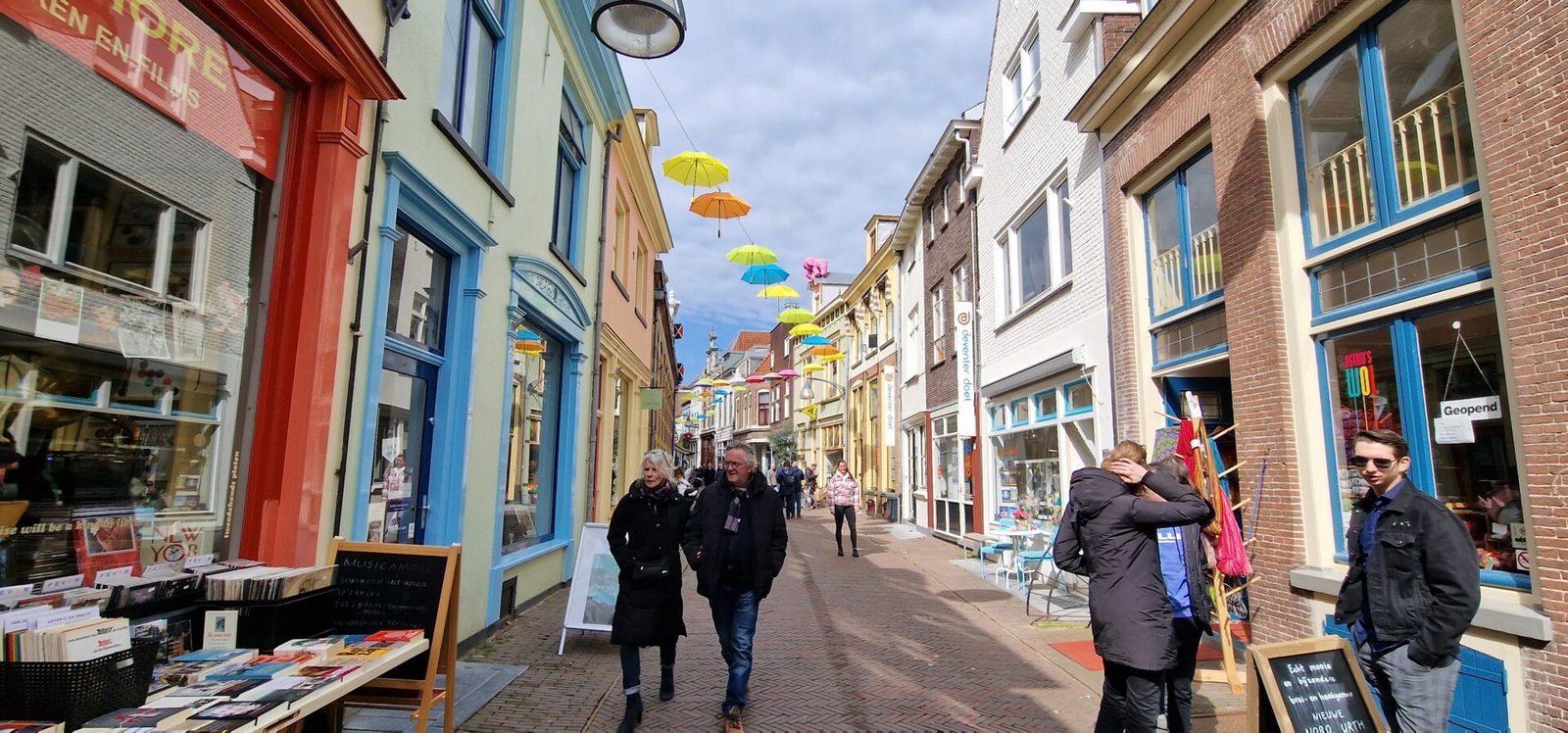
Reference: See our post about Deventer.
Zutphen
Zutphen, located along the IJssel River, is one of the oldest cities in the region. Although founded in the Roman times, it truly blossomed during the 14th century when it joined the Hanseatic League.
Zutphen provides some beautiful architectural gems, such as the Walburgiskerk (St. Walburgis) Church dated back to the 13th century, the Drogenapstoren (Tower), and the famous Librije – a library that started as a public reading room from 1564.
As you stroll along the charming cobblestone streets of Zutphen, you’ll discover little shops, art galleries, and cozy dining spots. It’s the perfect mix of history and modern charm, creating a truly delightful experience.
Kampen
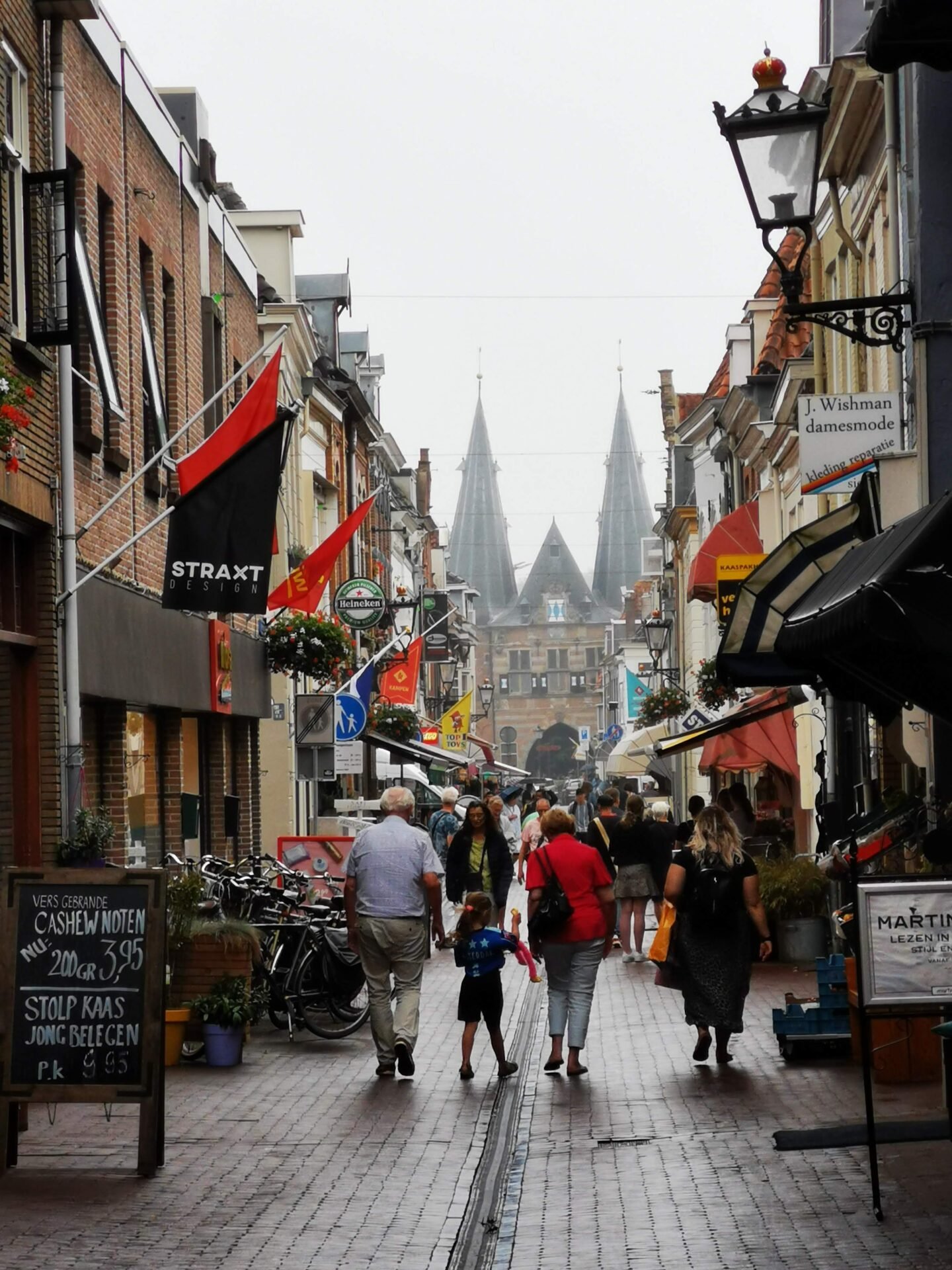
Kampen, located along the IJssel River, was an important trading city during the Middle Ages. Many of its historic buildings can still be seen today. Some of the reasons
Historical Monuments
The city is home to over 500 national monuments, including the iconic Bovenkerk (Upper Church) and the city gates. Kampen is also home to several museums that showcase the city’s history and culture. The Stedelijk Museum Kampen is a must-visit, and it has an impressive collection of art and artifacts from the city’s past.
City Gates
Kampen has well-preserved city gates that date back to the 14th century: Cellebroederspoort, Broederpoort, and Koornmarktspoort. The gates are an impressive sight and provide a glance into the city’s medieval past.
Maritime Heritage
Kampen has a rich maritime heritage, and the city’s harbor was once a trade center of trade. The harbor is still active today, and you can see the traditional Dutch ships anchored there.
One of Kampen’s biggest attractions is its beautiful waterfront, which provides pretty views of the IJssel River. You can take a leisurely stroll along the riverfront or a boat tour along the river and admire the historic buildings and boats passing by.
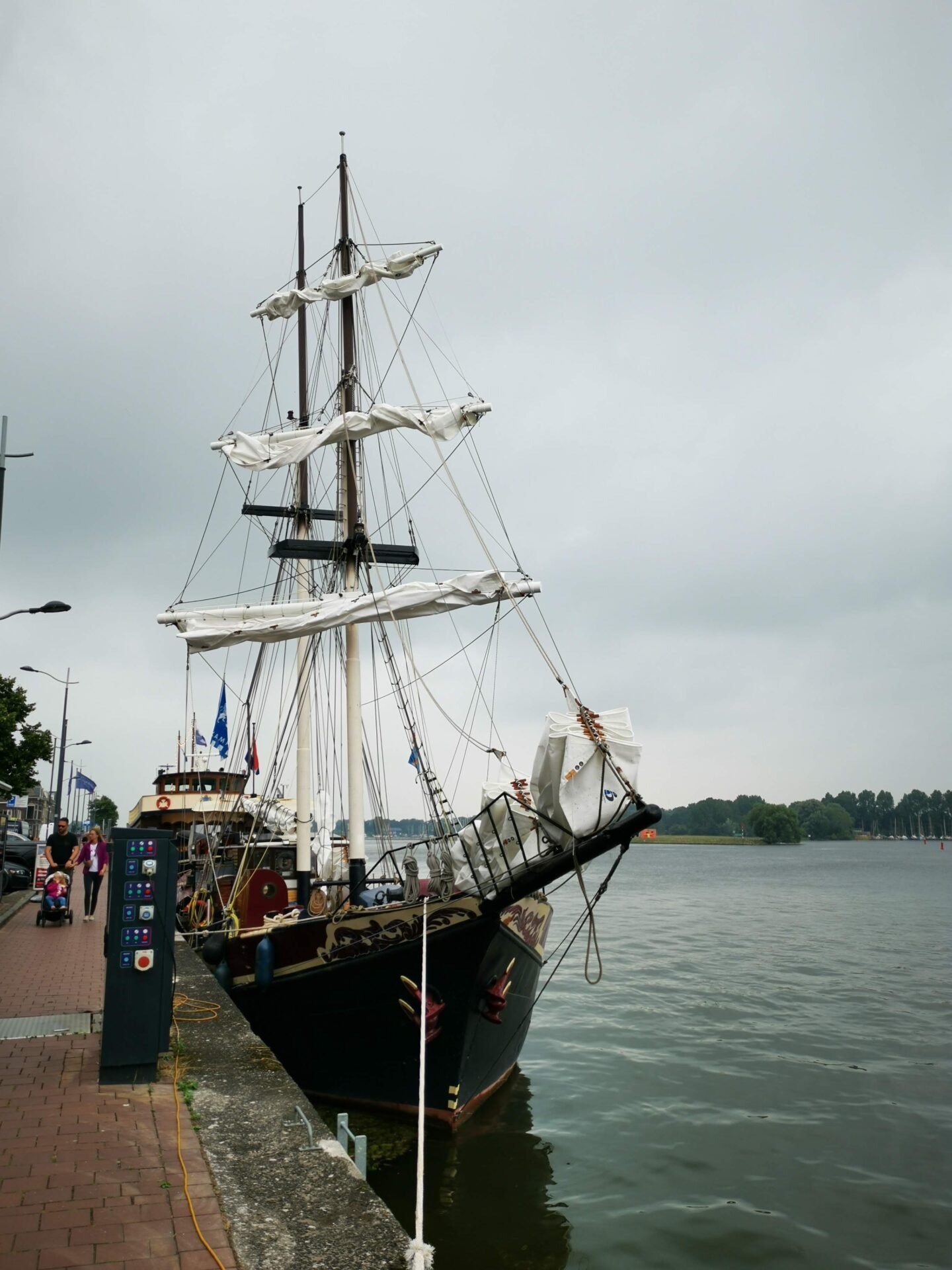
Reference: See our post about Kampen.
Elburg
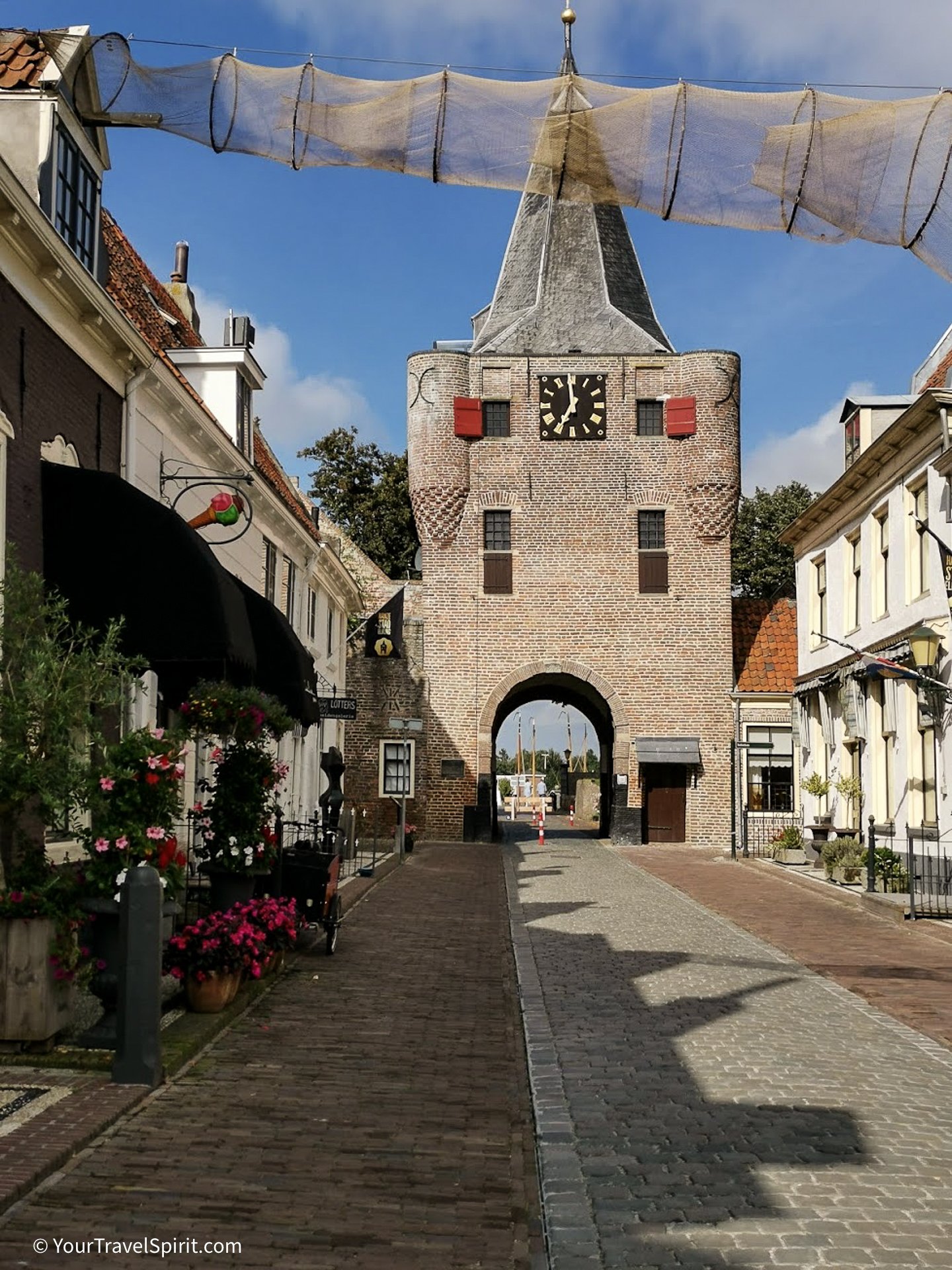
If you’re looking for a picturesque Hanseatic city filled with charm, Elburg should be on your list. Situated along the Veluwe Lake (Veluwemeer), this old town is one of the most lovely Hanseatic cities in The Netherlands. However, Elburg did not evolve like other medieval towns in the area: It originated as a fishing town at the Zuiderzee. After several major floods in the 14th century, the whole town was moved to its current place.
Today, Elburg is a lively city with a small old city center within the walls. It is a wonderful place to enjoy and to discover the lovely medieval atmosphere. It is also a place for water sports enthusiasts.
Elburg is known for its well-preserved historic buildings. One of the most notable buildings is the Vischpoort, which served as the main entrance to the city. You can still see the original wooden doors and the iron bars that were used to protect the city from invaders.
Elburg’s old center is small and can be easily explored on foot. The narrow streets, old houses with traditional Dutch architecture, and quaint little shops create a charming atmosphere. The streets are lined with shops, cafes, and restaurants, so you can take a break and enjoy a cup of coffee or a meal.
In addition, Elburg is surrounded by natural beauty. You can take a stroll along the canal surrounding the old town to enjoy the peaceful scenery.
In conclusion, Elburg is one of the most charming Hanseatic cities in The Netherlands. Its well-preserved historic buildings, beautiful streetscape, and beautiful location make it another favorite destination for us.
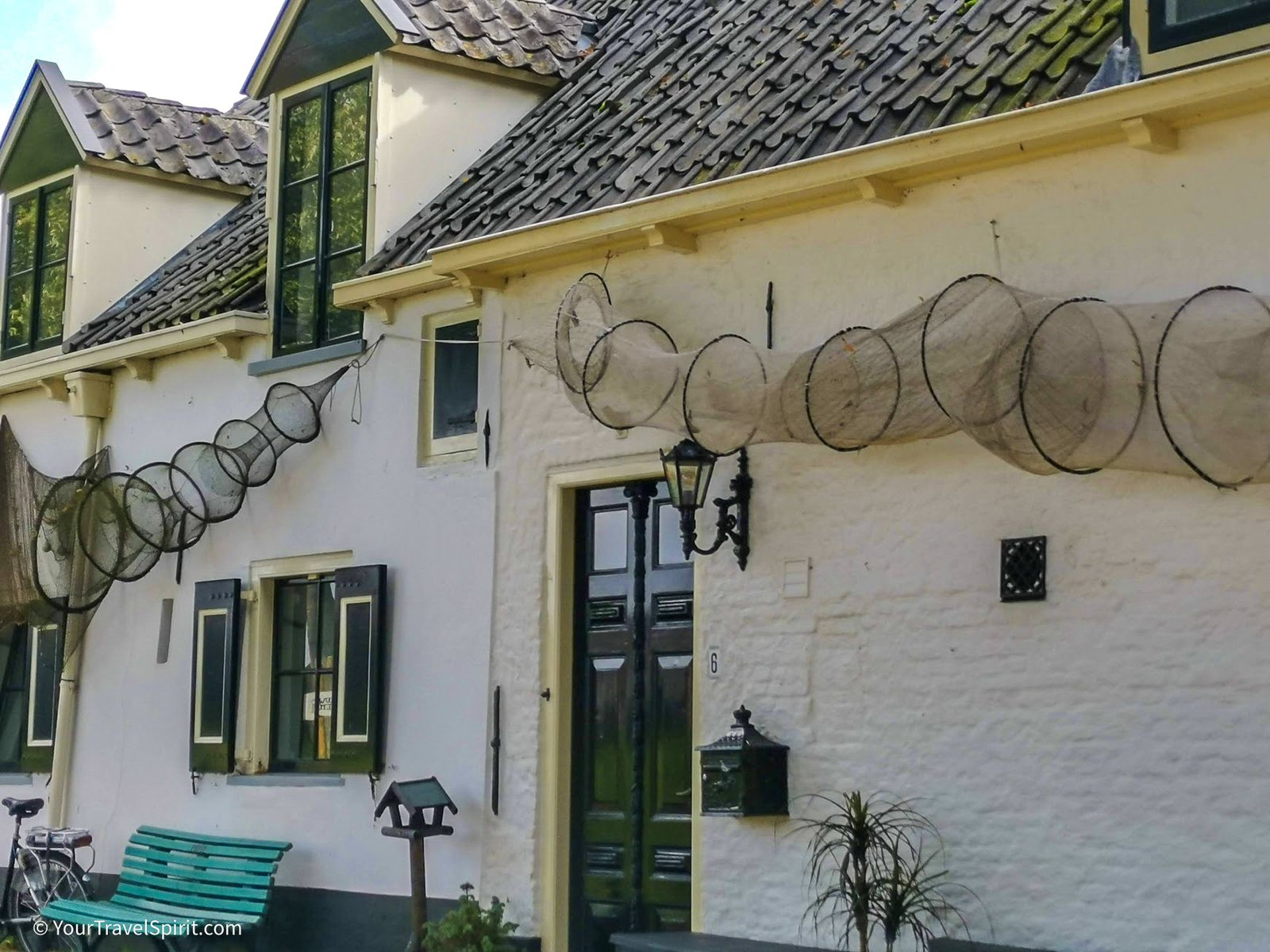
Conclusion
In conclusion, the Netherlands is home to some of Europe’s most beautiful Hanseatic cities.
If you plan a trip to the Netherlands and you are looking for off-the-beaten-path places to discover, a Hanseatic city should definitely be on your list. With their beautiful architecture, rich history, and unique charm, they provide an ideal getaway from the regular tourist spots,
See Also
Read about Other Hanseatic Cities in The Netherlands
You can save this guide for later on Pinterest by clicking on the photo below.
Thank you for taking the time to read this! If you have any questions or would like to share your experience, please leave us a comment below.
Visit Harderwijk: A Hidden Gem in the Netherlands
Harderwijk is a charming city located a one-hour drive from Amsterdam in the Gelderland province of the Netherlands. This historic town is renowned for its rich maritime heritage, delightful seaside atmosphere, and well-preserved medieval city center. With a population of over 45,000, Harderwijk offers a unique blend of history, culture, and natural beauty. Visitors to this lovely city will enjoy interesting architecture, many restaurants, and a variety of outdoor activities. Whether you’re interested in exploring ancient landmarks, having a good meal, or simply enjoying a great atmosphere, Harderwijk has something for everyone to discover and enjoy. This guide will walk you through some of the noteworthy things to do in Harderwijk. Let’s take a look at what Harderwijk has to offer.
Disclosure: Some of the links in this post may be affiliate links. If you decide to book through these particular links, we will receive a small commission from your purchase at no extra cost to you. We are truly grateful for your support!
Quick Info
Best Reasons to Visit Harderwijk
- Harderwijk is a charming historic town with a rich cultural heritage. You can explore the well-preserved medieval city center, with its beautiful old buildings and cobblestone streets, dating back to the 14th century.
- Harderwijk is located on the shores of the Veluwemeer, a large lake that offers a range of water activities such as swimming, sailing, and fishing.
- The city is surrounded by the natural beauty of the Veluwe region, with its forests, heathlands, and sand dunes. You can explore the area on foot or by bike.
- Harderwijk is known for its delicious seafood. There are numerous seafood restaurants and fish stalls where you can enjoy these local specialties.
- Harderwijk is conveniently located for day trips to other popular destinations in the Netherlands. It is just a short drive from cities like Amsterdam, Utrecht, and Arnhem, making it an ideal base for exploring the country.
Our Tips
- The old center is very romantic in the late afternoon / early evening, especially the waterfront area.
- You can enjoy delicious seafood, including kibbeling (fried fish) and smoked eel, at Paling Pure Passie fish stand on the waterfront.

A Brief History of Harderwijk
Harderwijk has a rich and varied history that spans over several centuries. Its journey began in 1231 when it was granted city rights, marking the official establishment of the town.
In the 13th century, Harderwijk flourished as a trading city due to its strategic location on the shores of the Zuiderzee, a shallow bay in the North Sea. The town served as a vital center for maritime trade, attracting merchants and traders from all over Europe.
Harderwijk’s prominence grew further in the 14th century when it became a member of the Hanseatic League, an influential trading alliance of cities across northern Europe. This membership allowed the town to expand its reach and engage in lucrative trade relationships with other Hanseatic cities.
One significant aspect of Harderwijk’s economy was fishing. This right granted exclusive fishing privileges to the town, thus contributing to its economic growth. The large amount of fish in the nearby waters boosted trade and led to the establishment of a thriving fish industry.
However, Harderwijk faced numerous conflicts and challenges in the 16th century. The Spanish-Dutch War and the religious conflicts of the Protestant Reformation had a profound impact on the town. Economic decline, political instability, and social unrest plagued Harderwijk during this period.
Despite these challenges, Harderwijk managed to persevere and has emerged as a charming town, known for its rich history and beautiful architecture.
Harderwijk as Hanseatic city
The Hanseatic League, which originated in the 13th century in northern Europe, had a profound influence in the region. The league facilitated the exchange of goods and provided a platform for political and economic cooperation among its member cities. It fostered a sense of unity and solidarity, allowing the Hanseatic cities to leverage their combined strength in negotiations with other regions and states.
The Hanseatic Cities of the Netherlands are a group of historically significant cities that played a crucial role in the Hanseatic League. Among these cities, Harderwijk holds a prominent position due to its strategic location on the shores of the Zuiderzee.
Harderwijk was an important member of the Hanseatic League, a powerful trading alliance that dominated maritime trade in Northern Europe during the Middle Ages. As a member of this league, the city flourished economically, becoming a prosperous center for trade, especially in the fish and salt industries. Harderwijk’s significance in the Hanseatic League is evident in its well-preserved medieval city center, which includes some of its former trading houses and warehouses.
In addition to Harderwijk, there are other notable Hanseatic cities in the Netherlands, such as Deventer and Kampen. Those cities were important trading hubs during the medieval period, with Deventer serving as a center for commerce, education, and culture while Zutphen grew wealthy from the wool trade.
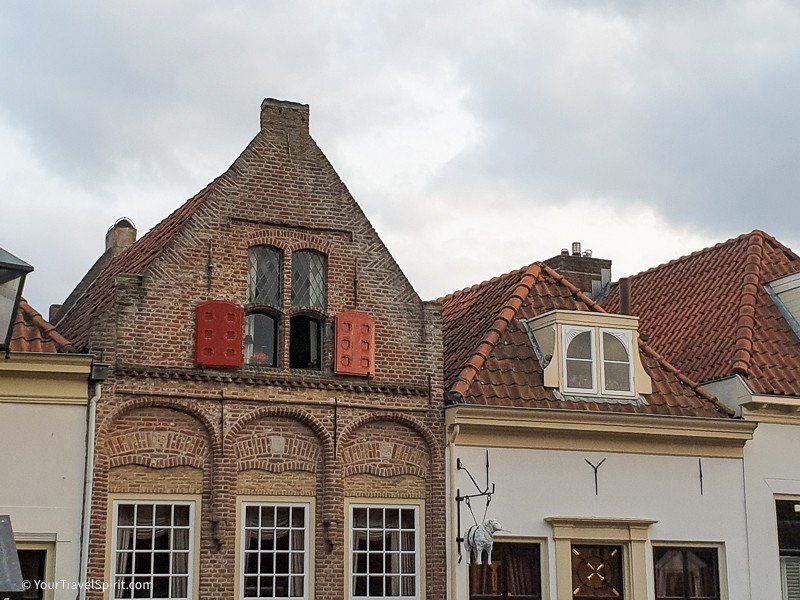
Best Things to do in Harderwijk
Stroll Around the Old Town
One of the best ways to explore Harderwijk is by foot, simply to get lost in the old town without preparing ahead a special route.The old town is small and walkable. It is surrounded by several parking places (see below), and each one of them can be a good place to park for touring Harderwijk’s old town.
The best place to start the tour will be at the Grote Kerk (Kerkplein 1, 3841 EC Harderwijk), a beautiful church that dates back to the 14th century. From there, you can stroll down the charming streets of the old town, enjoy the historic architecture, and pop into some of the cute little shops and cafes.As you make your way toward the harbor, you’ll pass by the Vischpoort, a historic gate that once served as the entrance to the city. The harbor is a lovely and busy play at once, with fishing boats and pleasure craft coming and going throughout the day. Stroll along the waterfront and stop for a drink or a bite at one of the many cafes and restaurants along the shore.
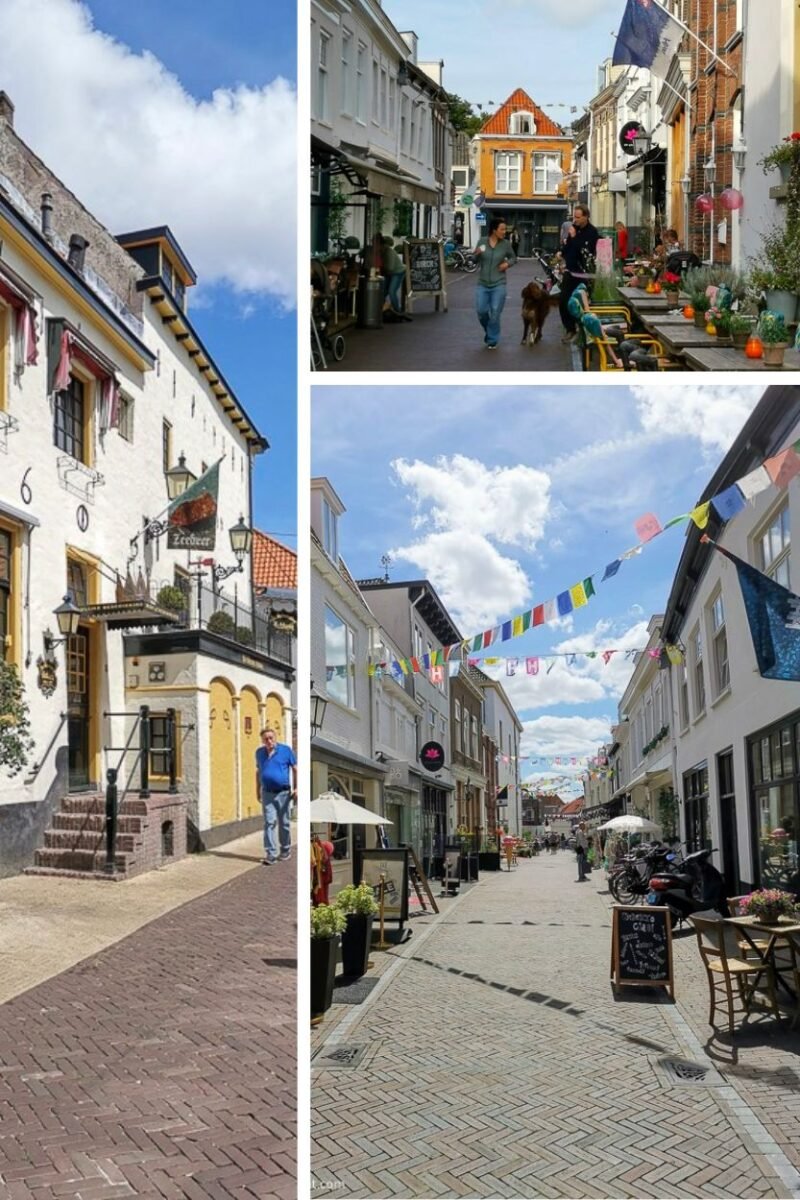
Walk along the remains of the walls and the gates
The City Gates and Wall of Harderwijk are iconic historical structures that showcase the rich heritage of this Dutch town. These architectural constructions have stood the test of time and hold great historical significance.
The city gates and the wall were constructed centuries ago to protect the town of Harderwijk from external threats. The wall surrounded the entire town, creating a barrier that safeguarded the inhabitants from attacks and invasions. The construction of the wall began in the 14th century, with continuous modifications and expansions over the years.
These structures played a crucial role in the defense and trade history of Harderwijk. As a prominent trading center during the Middle Ages, the city gates served as entry points for merchants and traders from all over Europe. The wall acted as a fortress, providing security to the bustling trade activities within the town. The strategic location of Harderwijk, situated on the Zuiderzee, enabled the town to flourish as a port. The city gates facilitated the flow of goods in and out of the city, fueling its economic growth.
Notable city gates in Harderwijk include the Vischpoort, Smeepoort, and Luttekepoort. The Vischpoort, or Fish Gate, is the most well-known and dates back to the 14th century. It served as the main entrance to the city center. The Smeepoort and Luttekepoort are two other gates that also played significant roles in the town’s defense.

City Museum (Stadsmuseum) Harderwijk
The Stadsmuseum Harderwijk is the ideal destination to get deeper and better knowledge about the rich history of the city of Harderwijk. Situated in the heart of the city, this museum offers a comprehensive overview of the past, making it the perfect place for both locals and tourists to learn more about the intriguing stories that have shaped the vibrant community.
The museum covers the history of Harderwij. Additionally to this, the museum also offers a range of temporary exhibitions in various fields. From captivating art displays to insightful historical retrospectives, there is always something new and exciting to discover.
One of the fascinating aspects of the Stadsmuseum Harderwijk is that its ground floor is freely accessible during opening hours. This means that visitors can enjoy the immersive experience of the museum cafe and shop without having to purchase an admission ticket. Whether you are in search of a delicious cup of coffee or a unique souvenir to take home, the museum’s cafe and shop offer a delightful selection to cater to your needs.
For more information about opening hours and entrance fees please visit the the Stadsmuseum Harderwijk website.
Address: Donkerstraat 4, 3841 CC Harderwijk
The Old Synagouge
Since 1590 Jewish people have been living in Harerwijk and they are an important part of the city, especially when the university was opened in Harderwijk.Today, visitors can visit the old synagogue. In this synagogue, there is a permanent display of the Jewish life in Harderwijk. Also, a documentary film is being displayed that presents the history of the Jewish community in the area.Outside the building, there is a memorial wall that displays all the names of the Jewish community in Harderwijk who were murdered in the Holocaust.
Please note that visiting times are limited. For more information about opening hours please visit the Synagouge website.
Address: Jodenkerksteeg 1, 3841 BP Harderwijk
Marius van Dokkum Museum
Marius van Dokkum is one of the most famous painters and animators in the Netherlands.
In Harderwijk, you can find a museum that is dedicated to his work, which is full of humor. His paintings show real-life situations.
For more information about opening hours and entrance fees please visit Marius van Dokkum Museum website.
Address: Academiestraat 7, 3841 ES Harderwijk
Dolphinarium
Harderwijk Dolphinarium is one of Europe’s oldest and most famous marine mammal parks. This marine mammal park is home to a variety of dolphins, sea lions, walruses, and other sea creatures. You can watch the animals perform in shows or get up close and personal with them during interactive experiences. The park also has a water park and playgrounds for children.
The Dolphinarium offers daily shows where the dolphins showcase their remarkable intelligence and agility through a variety of tricks. In addition to the dolphin shows, the Dolphinarium also features demonstrations starring seals. The trainers highlight the seals’ remarkable abilities and intelligence, demonstrating the importance of conservation efforts to protect their habitats.
For more information about opening hours and entrance fees please visit Harderwijk’s Dolphinarium website.
Address: ZuiderzeeBoulevard 22, 3841 WB Harderwijk
It is important to note that attractions like the Dolphinarium are controversial, and not everyone agrees to visit such places. Some people argue that keeping marine mammals in captivity is unethical and goes against their natural instincts and behaviors.
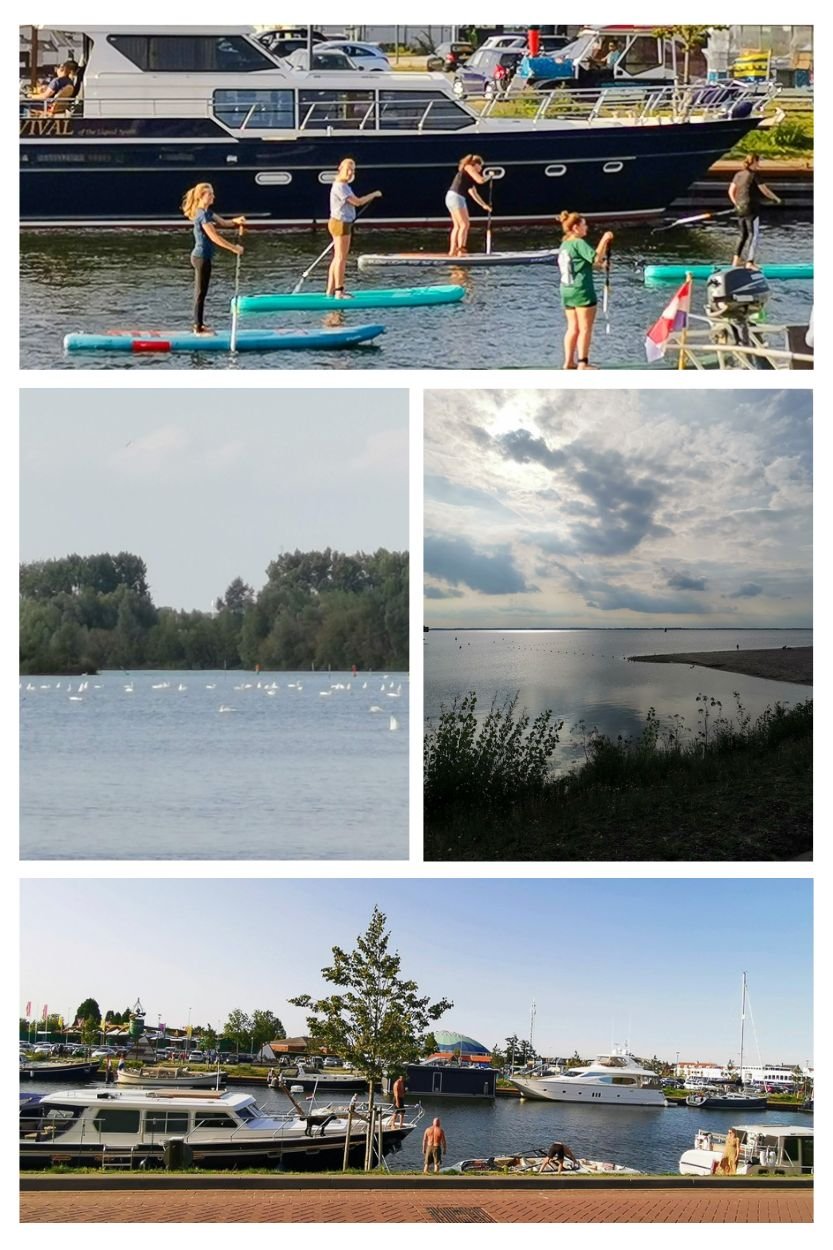
Getting to Harderwijk
By a Car
Driving to Harderwijk by car you will pass by a scenery of agricultural land and water.
To reach Harderwijk by car, follow the A28 highway (also known as the E232). Harderwijk is conveniently located along the A28, making it easily accessible.
An alternative drive suggestion – if you are driving from Amsterdam or northern area, consider driving through the Houtribdijk – a 26 km (16.1 miles) long dike with a great view of the water from both sides of the dike.
Parking in Harderwijk
Visitors to Harderwijk can find various parking lots conveniently located throughout the city. These parking lots are situated near popular areas, such as the city center and tourist attractions. It is possible to park on hourly rates or daily rates. However, it’s important to note that parking rates can vary depending on the specific location and the day of the week. It is advisable to check the precise rates at each parking lot before leaving your vehicle.
Regarding time restrictions, it’s essential to be aware of any parking limitations. Certain parking areas in Harderwijk have time restrictions, which may limit the duration of parking to a few hours. These restrictions aim to encourage turnover and ensure availability for all visitors, particularly in high-demand areas, also ay attention that there are parking spaces available only to cars with permits. Pay close attention to signage and regulations in the specific parking areas you choose.
Here are some details of parking garages that allow parking for visitors and also allow hourly and daily rates:
P2 Harderwijk (Parkeerplaats Dolfinarium/P2)Address: Havendijk 8B, 3846 AD Harderwijk, NetherlandsDescription: This parking garage is located near the Dolfinarium marine park. It is open from 8:00 AM to 9:00 PM, 7 days a week.
P8 Harderwijk (Zonneweide (P8))Address: Vuurtorenweg, 3846 AN Harderwijk, NetherlandsDescription: This parking garage is located near the beach and the Dolfinarium marine park. It is open 24 hours a day, 7 days a week.
P9 ScheepssingelAddress: Parkeerplaats, Parkeerplaats, Scheepssingel, 3841 KR Harderwijk, NetherlandsDescription: This parking garage is located in the city center. It is open 24 hours a day, 7 days a week.
P11 Vuldersbrink ParkeergarageAddress: 3841 BB Harderwijk, NetherlandsDescription: This parking garage is located near the waterfront. It is open 24 hours a day, 7 days a week.
P17 Klooster (Center Monastery – P17)Address: Klooster 2, 3841 EN Harderwijk, NetherlandsDescription: This parking garage is located in the city center. It is open from 12:00 PM to 11:59 PM, 7 days a week.
Harderwijk is well-connected by public transportation, making it easy to reach the city without a car. The town has a train station, Harderwijk Station, which is located in the city center. You can take a train from Amsterdam, Utrecht, or Zwolle to reach Harderwijk. The train ride from Amsterdam takes approximately 1 hour and 20 minutes. If you prefer to travel by bus, there are several bus routes that run through Harderwijk, including regional and local buses. The local bus service, operated by Syntus Gelderland, is an affordable and convenient way to get around the town.
Other Places To Visit In The Area
Outside of Harderwijk, you can find great places and attractions to visit, let’s go over some of them:
Lelystad is a city located just a short drive from Harderwijk. In Lelystad itself, there are plenty of top things to do. Nature and animal lovers can visit the famous Oostvaardersplassen, a sprawling nature reserve home to diverse bird species and wild horses, a good starting point would be the visitors center. Another attraction recommended to visit is the Batavialand, a unique shipyard where visitors can admire the impressive replica of the Dutch East India Company’s 17th-century ship, the Batavia, This ship is located next to the Batavia Stad, the outlet mall of Lelystad, which is the place for the shopping lovers. The Aviodrome, an aviation-themed museum that showcases a remarkable collection of aircrafts, is located in Lelystad small airport.
Deventer – a picturesque Hanseatic town located about 50 minutes of drive from Harderwijk. This hidden gem offers a unique off-the-beaten-path experience.
Hans & Gretel pancake house (Handsen Grietje Zeewolde) is not only a famous pancake restaurant but also a unique architectural gem. The building itself is inspired by the classic fairy tale of “Hansel and Gretel,” featuring a charming design of a traditional Dutch cottage. The story of Hans and Gretel comes to life as guests step into the restaurant, with rich details and cozy interiors that create for all visitors a sense of nostalgia and wonder.Outside, kids can find a fantastic playground, and inside the building, they can find slides, moving tables, puppets that come to life.
National Park De Hoge Veluwe is not only the most famous national park in the country but also one of the most visited. Its popularity can be attributed to its lovely natural beauty and diverse attractions. The park is known for its vast heather fields that blanket the landscape a colorful way, All those amazing views attracts many tourists to this park. As visitors wander through the trails, they may encounter a range of wildlife, including red deer, wild boars, and various bird species. These encounters add an element of excitement to the park experience and make it a favorite among nature enthusiasts.
It is important to note that an entry fee is required to access National Park De Hoge Veluwe. This fee goes towards the conservation and maintenance of the park, ensuring that future generations can continue to enjoy its natural wonders. Visitors should consider this fee a small investment in the preservation of this beautiful and diverse ecosystem. Also, in the park, there are museums and sculptures, and in the tourist season, there are special activities for kids.
While the park can be enjoyed year-round, the number of visitors tends to peak on Saturdays and Sundays, resulting in crowded trails and limited parking. Instead, planning a visit during weekdays or in the shoulder seasons can provide a more relaxed experience, allowing visitors to fully enjoy themselves in the tranquility and natural beauty of the park. It will be extra beneficial to consider visiting in the less crowded days, especially if someone in your family has special needs like Autism or another disability.
The park has a few parking lots. According to the park website, the least busy parking lots are Schaarsbergen or Hoenderloo.
See Also
Read about Other Hanseatic Cities in The Netherlands
You can save this guide for later on Pinterest by clicking on the photo below.
Thank you for taking the time to read this! If you have any questions or would like to share your experience, please leave us a comment below.
Best Things To Do In Deventer
Orly Bleier
Located in the eastern region of the Netherlands, Deventer is a small yet delightful city that often goes unnoticed by visitors. However, it is a perfect destination for those who love history, art, and culture. Take a visual tour with us through the picturesque streets of the well-preserved medieval old town, the narrow cobbled alleys, the lovely old houses, and the stunning churches that date back to the 13th century. Discover the top things to do in Deventer and see for yourself why this hidden gem is a must-visit.
Disclosure: Some of the links in this post may be affiliate links. If you decide to book through these particular links, we will receive a small commission from your purchase at no extra cost to you. We are truly grateful for your support!
Quick Info
Best Reasons to Visit Deventer
- Deventer is one of the oldest cities in the Netherlands. It has a well-preserved medieval center with old-world charm.
- Deventer's vibrant cultural scene includes music festivals, theater performances, and art exhibitions.
- Deventer is a welcoming city with friendly locals and a relaxed atmosphere.
OUR Tips
- Every Saturday, a vibrant market takes place at Brink Aquareat Deventer's old center. It's a perfect place to experience the local vibe.
- Take a leisurely stroll down Walstraat and discover quaint little shops that offer unique items.
- Do not miss Kleine Overstraat - another charming street, that is very colorful with a great atmosphere.
- Quick Info
- Where Is Deventer?
- The History of Deventer
- Explore The Historical Center
- Get Lost In The Quaint Streets and Hidden Corners
- Discover Historical Buildings and Architectural Gems
- Visit The Saturday Market
- Uncover the Artistic Side
- Take a stroll along the IJssel River
- How much time should You Spend In Deventer?
- Other Places to Visit In The Area
Deventer - An Overview
Where Is Deventer?
Deventer is situated in the Overijssel province, in the eastern region of the Netherlands, and approximately 1 hour and 15 minutes away from Amsterdam by car. This charming city is also an ideal location for a day trip from Utrecht and the Veluwe area.
The History of Deventer
Deventer’s history dates back to the 8th century when it was founded by a Frisian missionary. During the period spanning from the 11th to the 16th centuries, Deventer thrived as a trading hub due to its strategic location along the IJssel River which is deep enough to accommodate big ships. In 1285 Deventer became a member of the Hanseatic League and played a significant role in medieval commerce. You can still see the remnants of that rich heritage today in the town’s well-preserved architecture.
During the Renaissance period, Deventer became an important printing centre and the city is still known for its many bookstores and printing presses.
Top Things to Do in Deventer
There are plenty of historical sites and cultural attractions to check out. Here are the top recommended activities to do in Deventer :
Explore The Historical Center
When you arrive in Deventer’s old town, you’ll immediately feel its long history. The well-preserved architecture and narrow streets effortlessly transport you to a different era. Wander through the streets of the old town to take in its unique atmosphere.
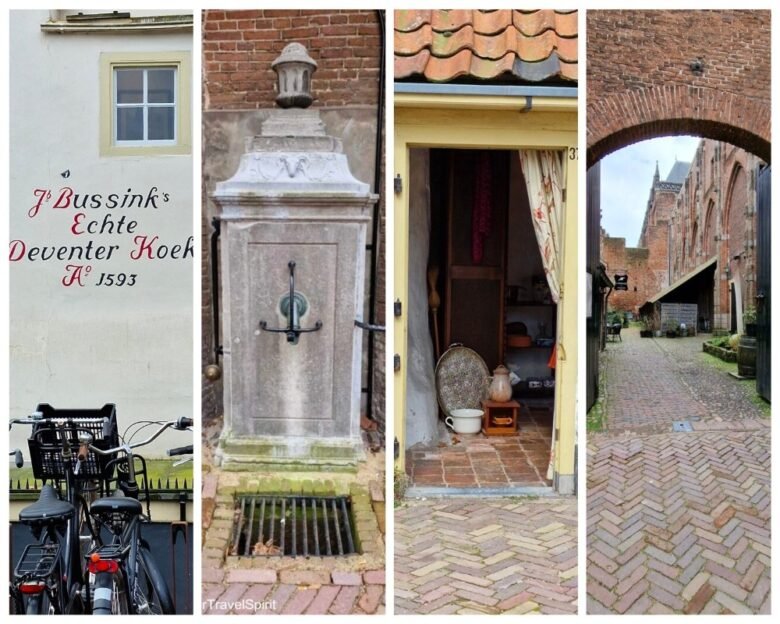
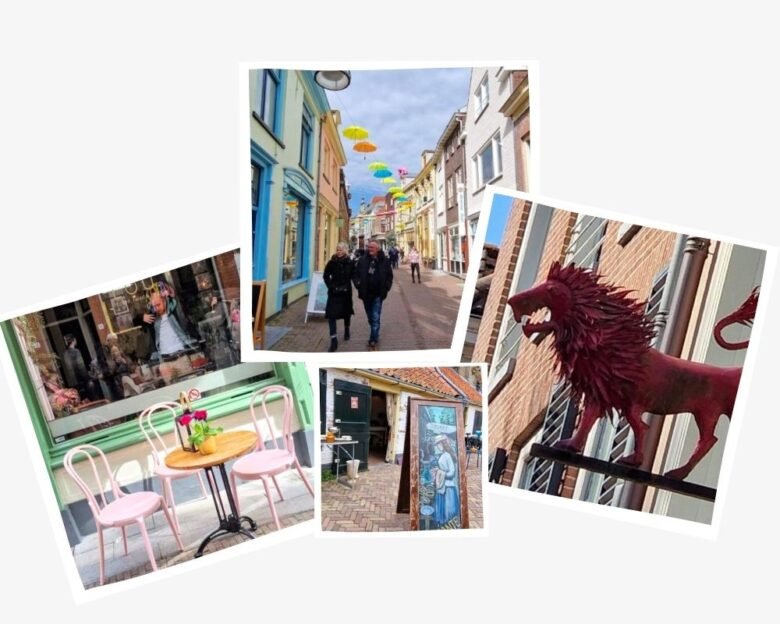
Get Lost In The Quaint Streets and Hidden Corners
Walking along the historic cobblestone streets, you will be charmed by the hidden corners and alleys. From local restaurant and cozy cafes to colorful murals and street art, as well as oftentimes quirky architecture, the quaint small streets offer a delightful experience.
The Old Town also offers its own unique shopping experience – with everything from vintage stores to charming boutiques, art galleries and artisan markets.
Take your time to explore these captivating streets. Get lost in the charm and immerse yourself in the unique atmosphere that Deventer’s old town has to offer.
Discover Historical Buildings and Architectural Gems
Deventer’s old town is full of architectural treasures. From the iconic De Waag (the weight house) to the St Lebuinus church, Deventer offers multiple unique monuments, each one has its own story and is worth exploring further.

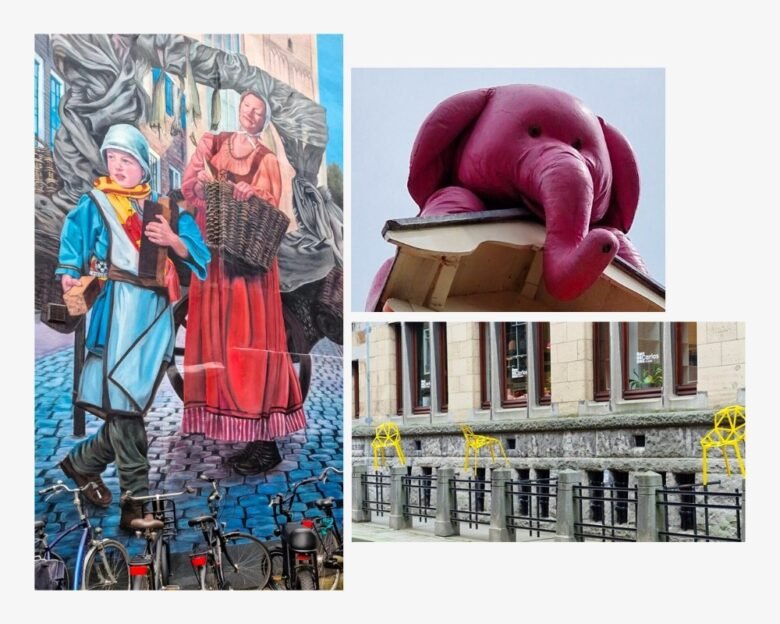
Uncover the Artistic Side
Deventer’s old town is a haven for art enthusiasts. Explore the galleries and creative spaces that are spread around the city. From traditional artworks to contemporary showcases, there is something for everyone who loves art.
Visit The Saturday Market
If you are in Deventer on a Saturday, make sure to check out the lively market that takes place in the city’s main square. This is a perfect place to get a taste of Dutch culture. Here, you can find fresh products, local street food, and artisanal items from the Netherlands and beyond.
You can also find a variety of flowers, plants, and seasonal items in the market.
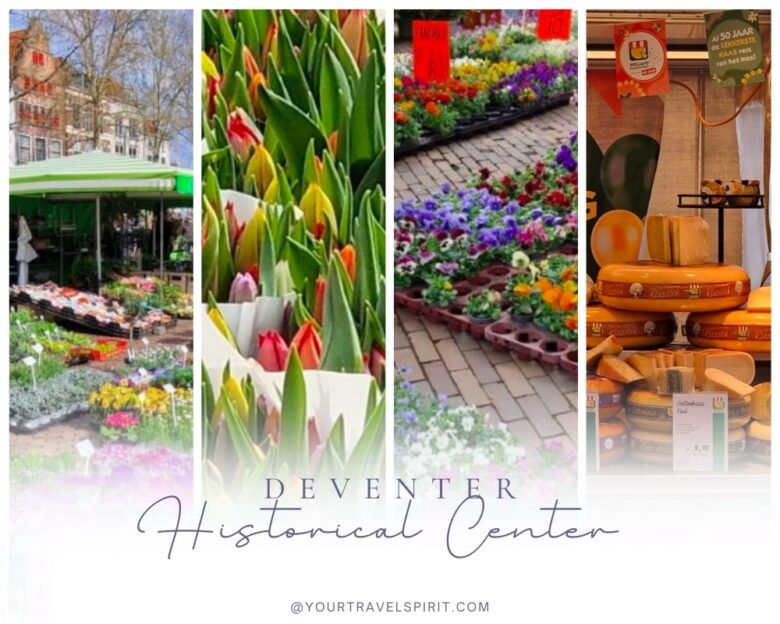
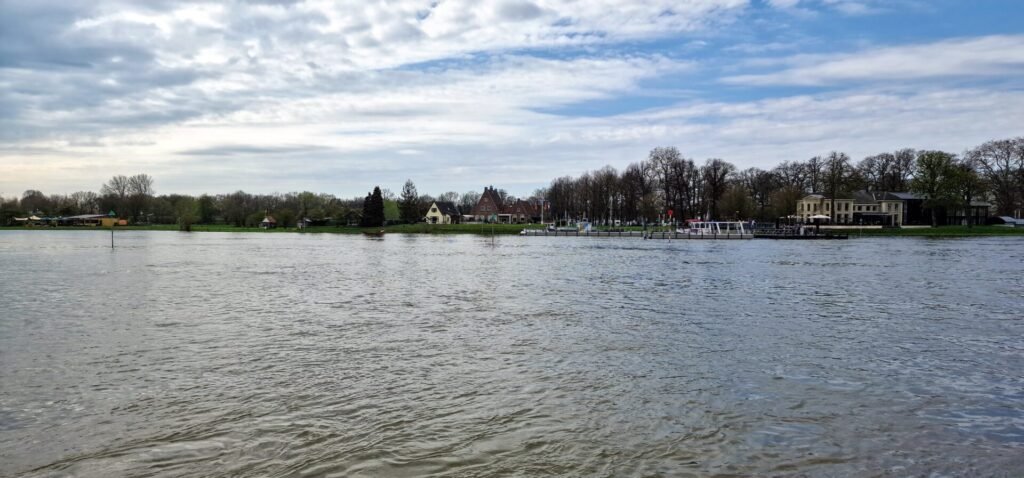
Take a stroll along the IJssel River
Deventer is located on the banks of the IJssel River. Taking a walk along this scenic river provides an opportunity to admire the unique view of the old town. It’s worth taking some time to pack a picnic and enjoy the serenity of this beautiful area.
A Walking Route Of Deventer Old Town
Duration: Approximately 3-5 hours (depending on your pace and time spent at each location)
A Deventer Central Train Station
B Korte Bisschopstraat
C Walstraat and Bergkwartier
D De Waag
E Toy Museum
F Kleine Overstraat
G Lebuinuskerk
H IJssel River
A. Begin your walking tour at Deventer Central Train Station.- If you’re arriving by train, exit the station and head towards the city center.- If you’re arriving by car, a good option for parking is Centrumgarage Deventer. Alternatively, there are several parking lots close to the train station.
B. Korte Bisschopstraat: From the train station, head south on Singelstraat until you reach Korte Bisschopstraat. This lively street is known for its shops, cafes, and historic buildings.
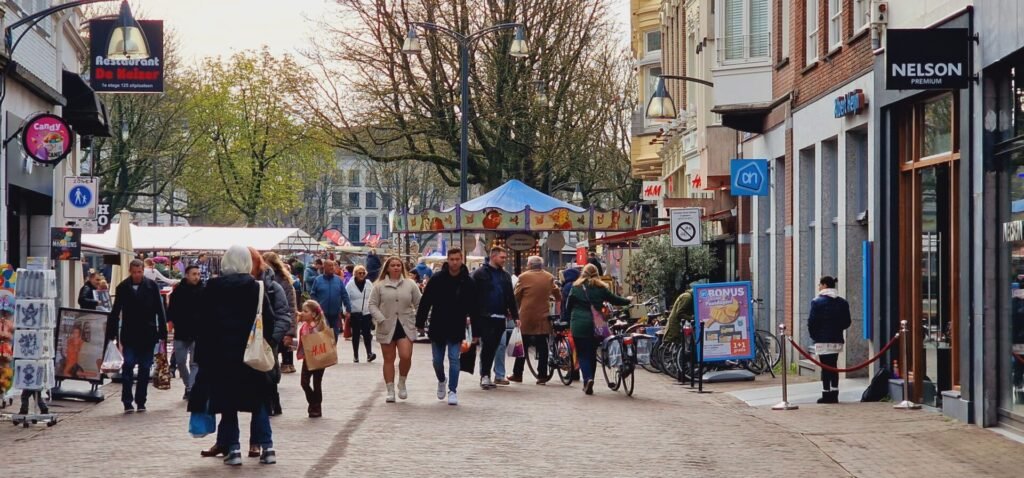
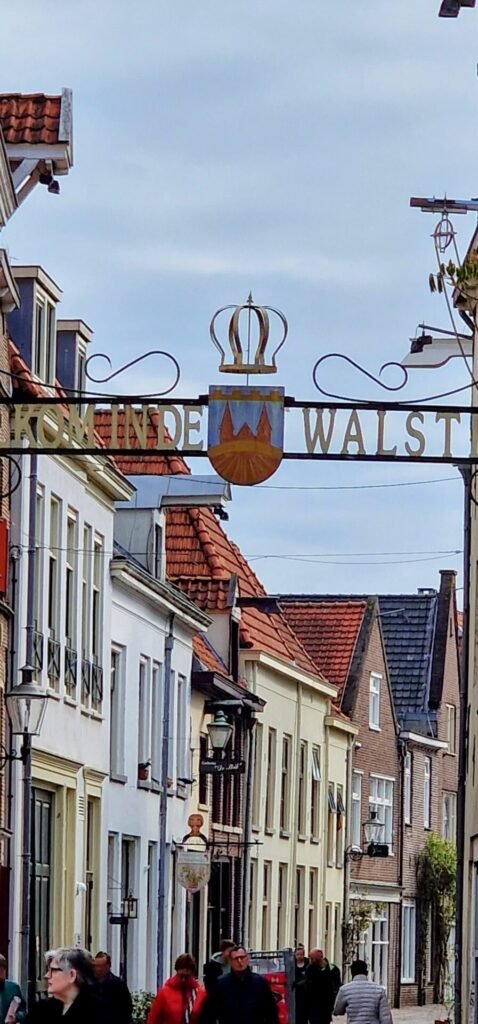
C. Walstraat and Bergkwartier: Continue your walk south on Korte Bisschopstraat until you reach Walstraat, a charming street with interesting shops and a unique atmosphere. Here you can visit the Charles Dickens Kabinet – a small museum that is dedicated to the work of the famous writer (please note that the museum is open on Saturdays only).
Take your time to explore and enjoy the charming old houses. Allow yourself to get lost in the narrow street, discovering the Bergkwartier neighborhood.
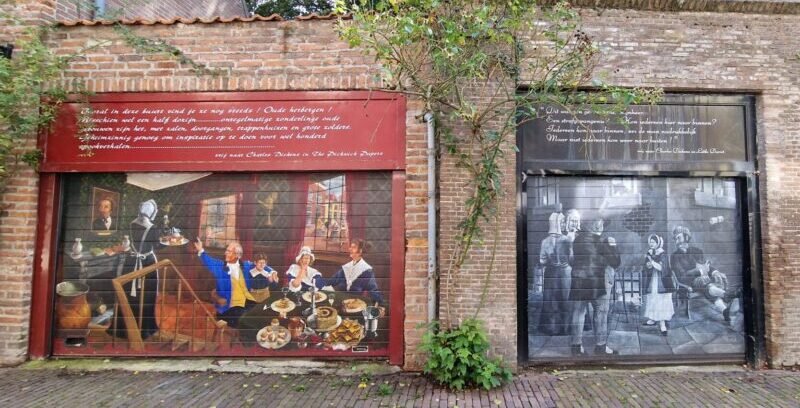
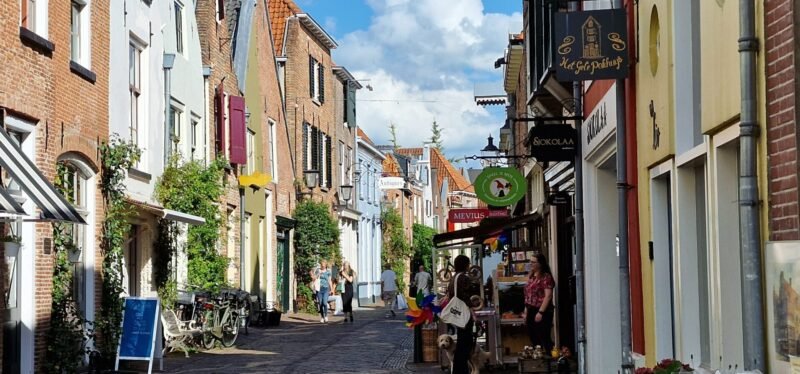
After exploring the charming street of Bergkwartier neighborhood, head back towards Brink Square.
Brink Square is the vibrant heart of Deventer’s old town. If it’s Saturday, don’t miss the vibrant Saturday market held here. Enjoy the lively atmosphere and the variety of stalls offering fresh produce, local products, and more. The square is surrounded by restaurants and cafes, and it’s a great spot to take a break and enjoy the view.
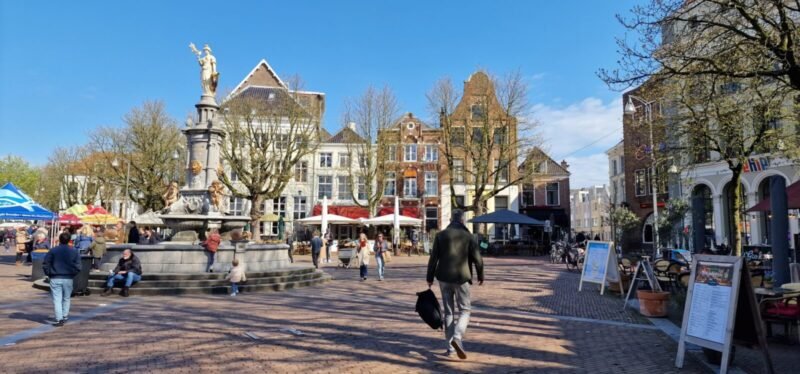
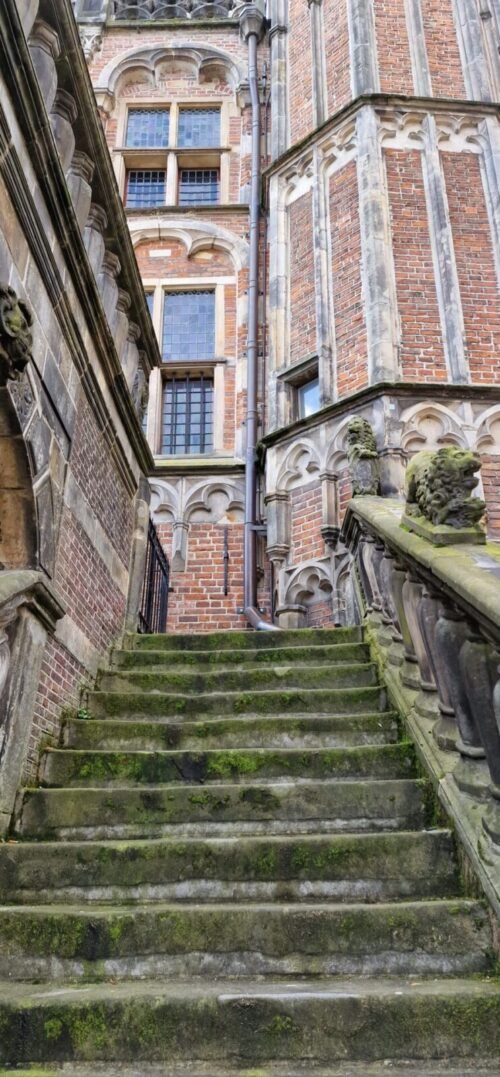
D. De Waag (the weighhouse):After exploring Brink Square, make your way to De Waag. This 15th-century building is one of Deventer’s most iconic landmarks. Today, it serves as a museum.
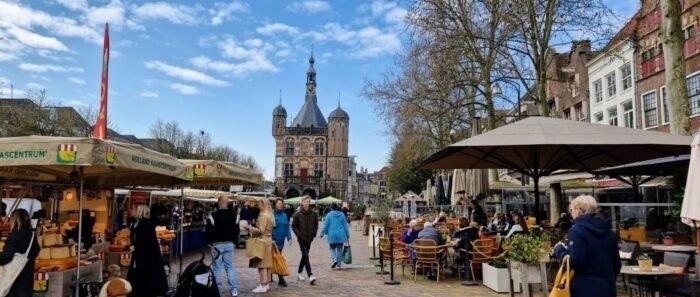
E. Toy Museum:From De Waag, head southeast on Brink and to Polstraat. Continue on Polstraat until you reach the Toy Museum (Speelgoedmuseum) on Brinkpoortstraat. The museum provides a collection of toys from different eras and exhibits the history of play.
F. Kleine Overstraat:After visiting the Toy Museum, head back towards and turn onto Kleine Overstraat. Kleine Overstraat is a charming colorful street with a variety of boutique shops and restaurants. Take your time to wander along this picturesque street and perhaps stop for a coffee or a bite to eat.
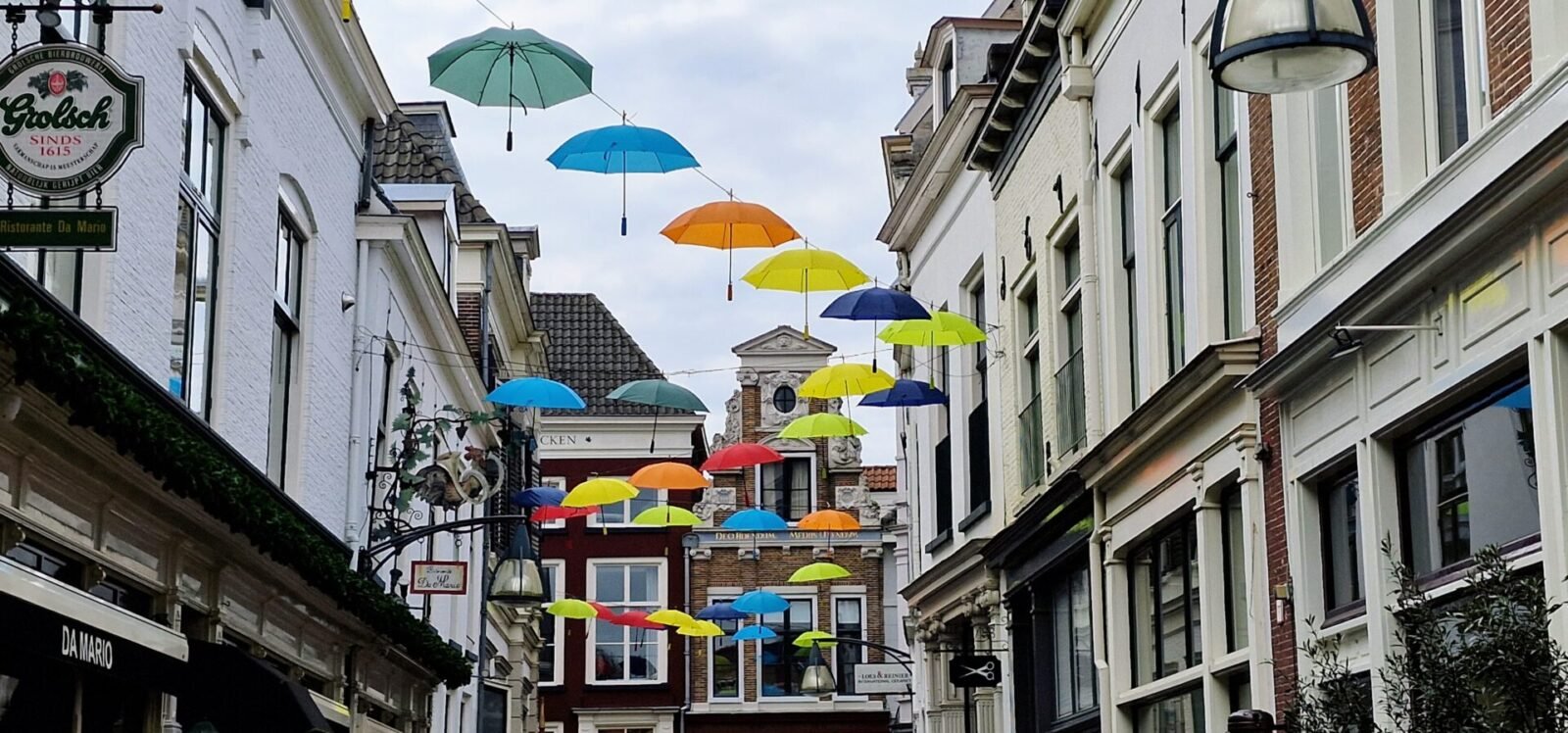
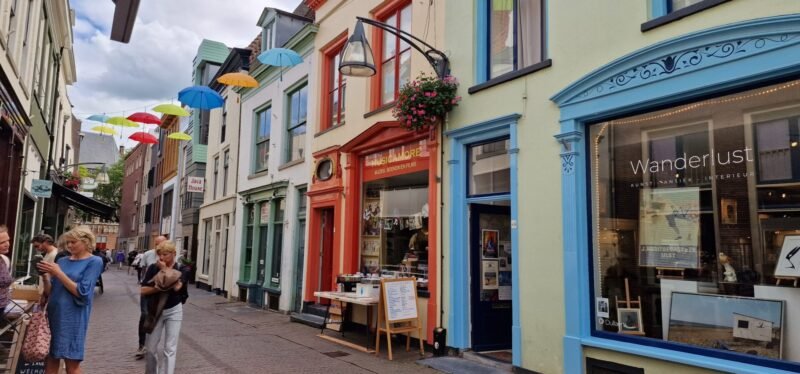
G. Lebuinuskerk (St. Lebuïnus Church):From Kleine Overstraat, head to St. Lebuïnus Church.This iconic church is a major landmark of Deventer, known for its architecture and complex details.Here you can admire the unique building and the surrounding area. If possible, step inside to enjoy the beautiful indoor decoration.

H. IJssel River:From St. Lebuïnus Church, head towards the banks of the IJssel River and enjoy a leisurely stroll along the riverfront. Take in the views, relax on one of the benches, and enjoy the peaceful atmosphere by the water.
From St. Lebuïnus Church, it is about 10 min of walk back to Deventer Central Train Station.
Museums In Deventer
Museum De Waag – is located in a unique historic building that used to be a weighing house. The museum showcases the history of Deventer, with an interesting collection of artifacts and objects that tell the story of the city’s past.
You can find more information on the official De Waag Museum website.
Deventer Toy Museum – exhibits a vast collection of toys from all over the world, including dolls, board games, and puzzles.
You can find more information on the Toys Museum’s Official website.
The Charles Dickens Kabinet – is dedicated to the life and works of the famous Victorian author. The museum displays a collection of Dickens-related items, including first editions of his novels, illustrations, and figurines of his characters. You register for a group tour and see costumes used in the annual Dickens Festival, which is celebrated every December.
You can find more information on the official web page.
Nature & Parks
Deventer is surrounded by beautiful nature, and there are several parks and gardens where you can relax and enjoy the scenery. One of the most popular parks is the Worpplantsoen, which is located on the other side of the River IJssel and can be reached by ferry. The park is a favorite spot for picnics, walks, and cycling, and it has plenty of playgrounds and sports facilities. If you’re lucky, you might even spot some wildlife, such as deer or rabbits.
Festivals In Deventer
Deventer is known for its vibrant cultural scene. Throughout the year, the city hosts several lively festivals, drawing many visitors to the city.
One of the most notable festivals is the Deventer Book Market, Europe’s largest book fair held annually in August. The town transforms into a paradise for book lovers, with thousands of stalls lining the streets, offering an extensive collection of books, manuscripts, and antique prints.For more information please visit the Deventer book market website
Deventer International Op Stelten Festival (Deventer outdoor-theatre festival) is another popular festival that takes place every summer in July. During the festival, the streets of the Old Town become alive with musicians, performers, and artists from all over Europe. It’s a great opportunity to explore Deventer’s vibrant culture while enjoying live music and entertainment! For more information please visit the festival website.
Deventer is also famously known for the Dickens Festival, a major event that celebrates the town’s history and culture. The festival is held every year in December. During the festival, the historic streets of Deventer turn into a Victorian-era scene, with locals dressed in period costumes, street performances, and a festive atmosphere.Visitors can also explore the cobblestone alleys, enjoy delicious treats at the food stalls, and browse through crafts from local artisans.For more information please visit the Dickens Festival website

Please note – those festivals are very popular and attract lots of people. If you would like to avoid the crowd, do not plan to visit Deventer around a festival dates.
Plan Your Visit
How much time should You Spend In Deventer?
Deventer is a relatively small city, so it’s possible to explore all the sights in several hours.With plenty of things to do in the near area, Deventer can serve as a base from which to explore the area for several days.
Other Places to Visit In The Area
Zutphen, Zwolle, Duisburg, and Kampen – are more picturesque Hanseatic towns that are located within less than an hour of Deventer. Each one offers a unique and special off-the-beaten-path experience.
Hoge Veluwe National Park – is one of the most famous national parks in the Netherlands. It is situated about 43km (26 miles) away from Deventer and is known for its unspoiled forests, dunes, and heathlands that provide habitats for various wildlife species including deer and wild boars. The park is also home to the Kröller-Müller Museum, which owns one of the largest collections of Van Gogh paintings in the world.
Apenheul Monkey Park – located about 30 km (18.6 miles) away from Deventer, this park offers an opportunity to get up close and personal with a wide variety of primates. The park has many different species, including gorillas, orangutans, chimpanzees, lemurs, gibbons, and more.
The Netherlands Open Air Museum – located about 10 km (6 miles) from Deventer, this museum is a living history of the Netherlands. It showcases traditional Dutch houses and farms, as well as numerous attractions such as rides, shows, and activities that make it a great day out for all ages.
These are just some of the attractions you can find in the near area of Deventer. With so much to see and do, you’ll be sure to have a wonderful experience!
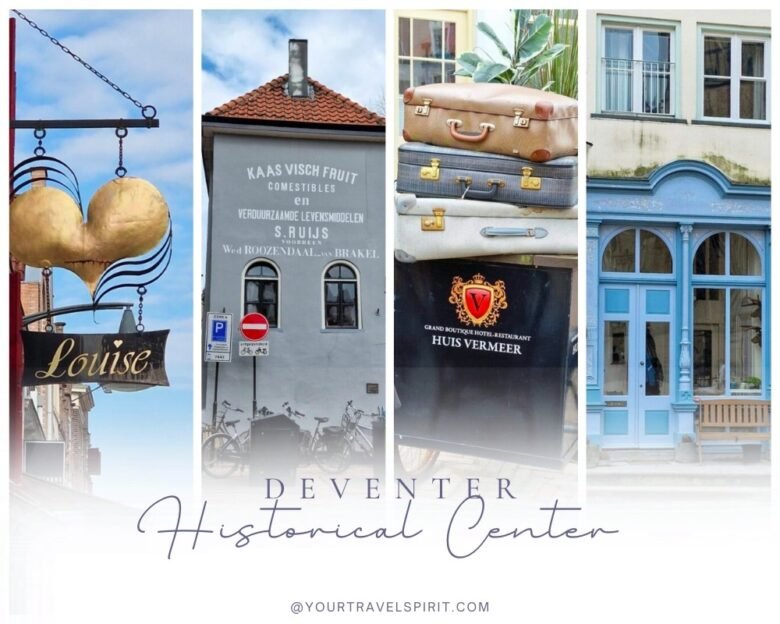

Visiting Deventer with an Autistic Traveler
Our Experience
We love Deventer and the nearby area very much, and we keep going there again and again. Deventer is a small city, not too crowded, with a variety of activities, accommodations, and restaurants that are accommodating to special needs visitors.The town center is pedestrian-friendly. There are multiple quiet spots that you can go to in case of being overwhelmed.
One thing to consider, as a best practice in any old city when traveling with someone who is sensitive to noise, it’s a good idea to avoid being close to a church during bell ringing times, typically around noon.
Please be aware that Deventer hosts several highly attended festivals as mentioned above. If you prefer to avoid large crowds, it’s recommended to skip visiting Deventer during festival times.
Conclusion
Thank you for joining us on this visual journey through the quaint streets of Deventer’s Old Town. Deventer may not be as famous as other cities in the Netherlands, but it’s a hidden gem that’s worth exploring. So why not add Deventer to your list of places to visit in the Netherlands? We promise you won’t regret it.
See Also
Read about Other Hanseatic Cities in The Netherlands
Thank you for taking the time to read this! If you have any questions or would like to share your experience, please leave us a comment below.
You can save this guide for later on Pinterest by clicking on the photo below.
Thank you for taking the time to read this! If you have any questions or would like to share your experience, please leave us a comment below.
